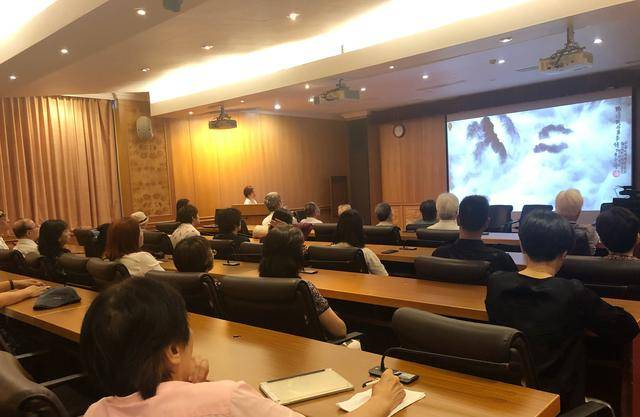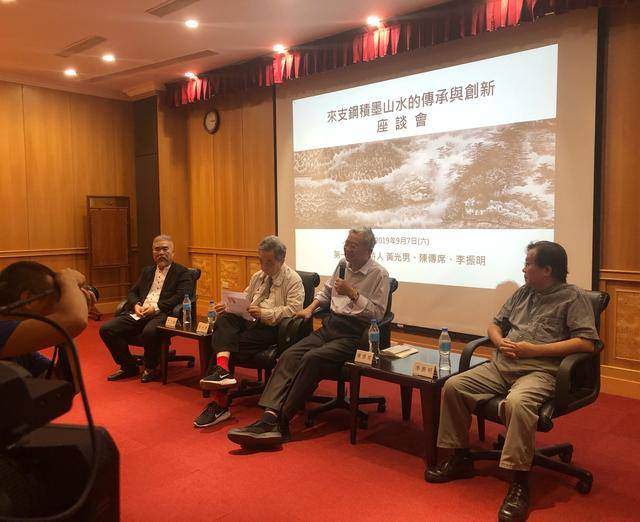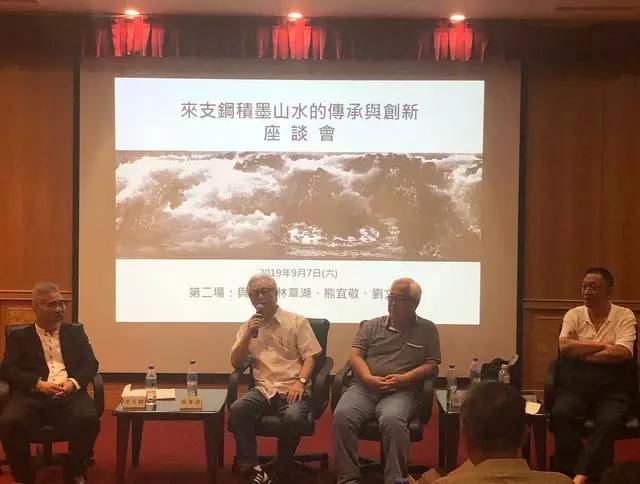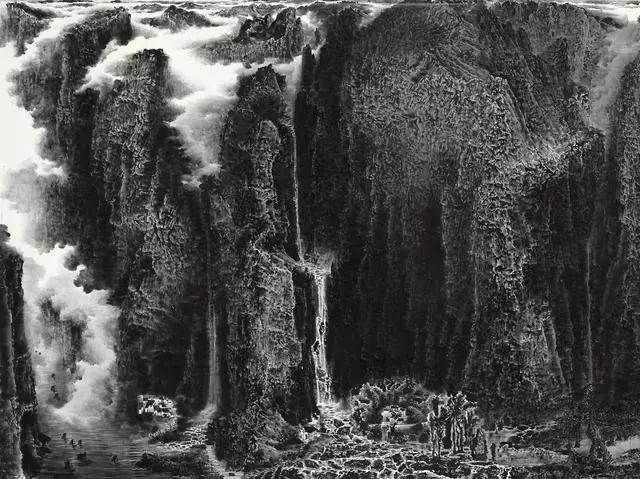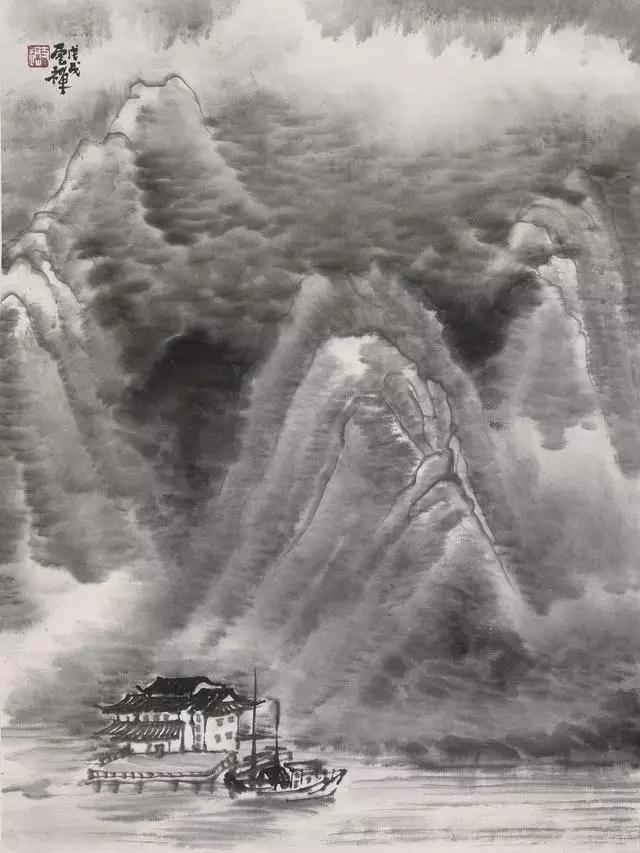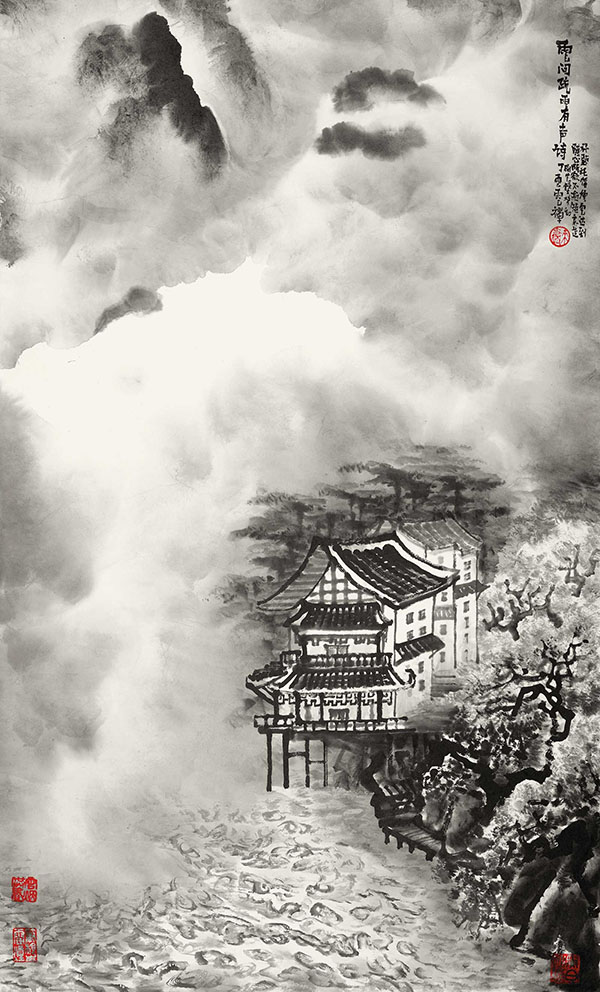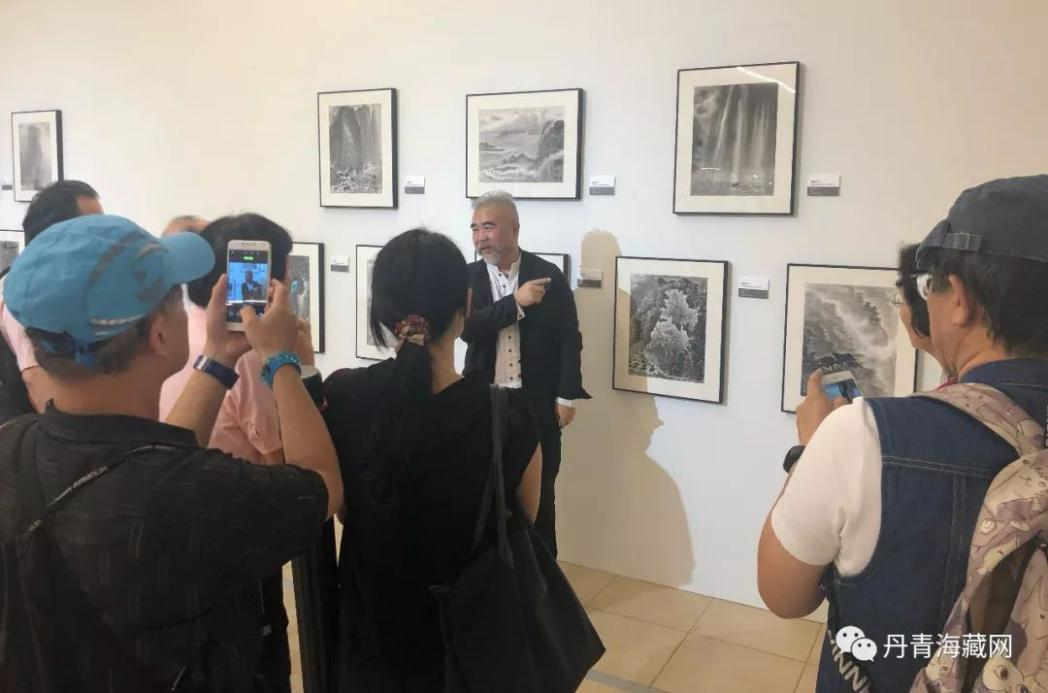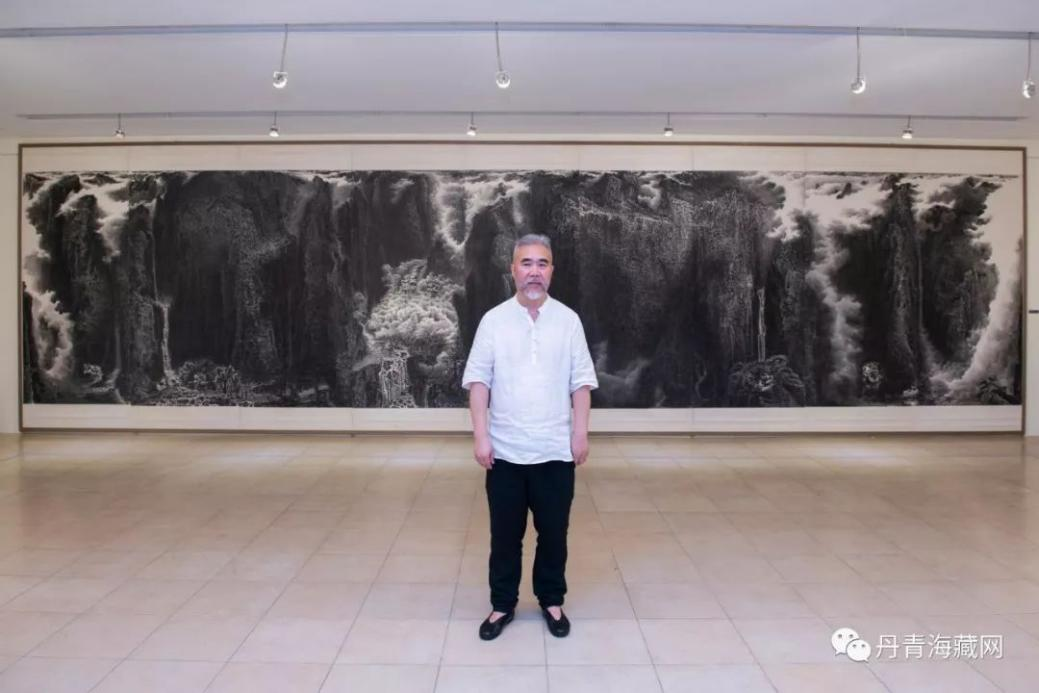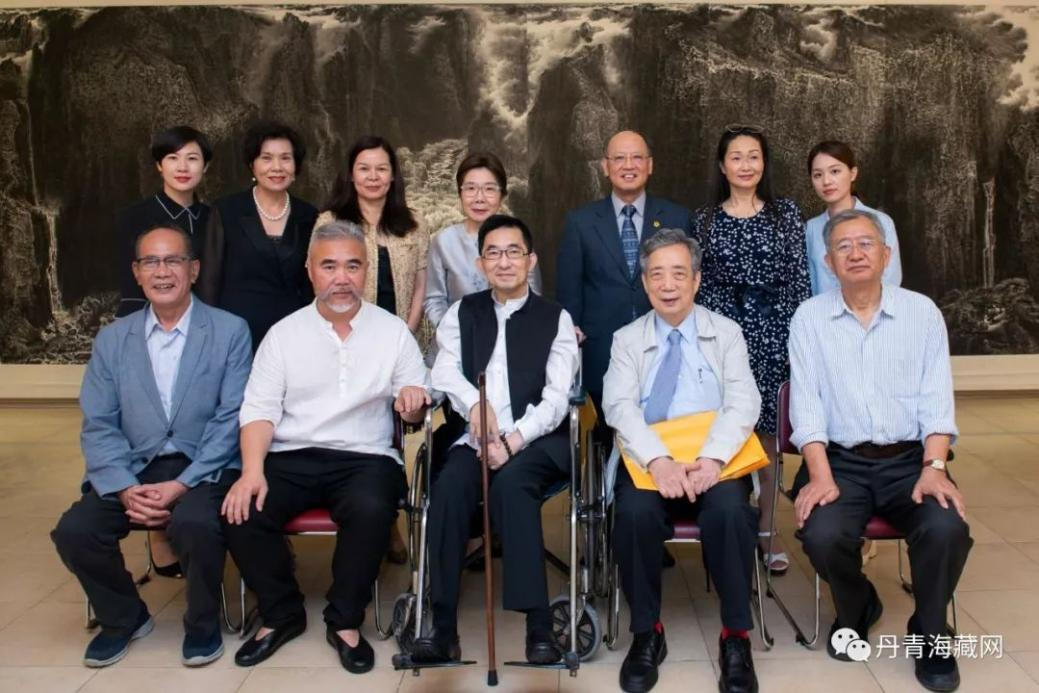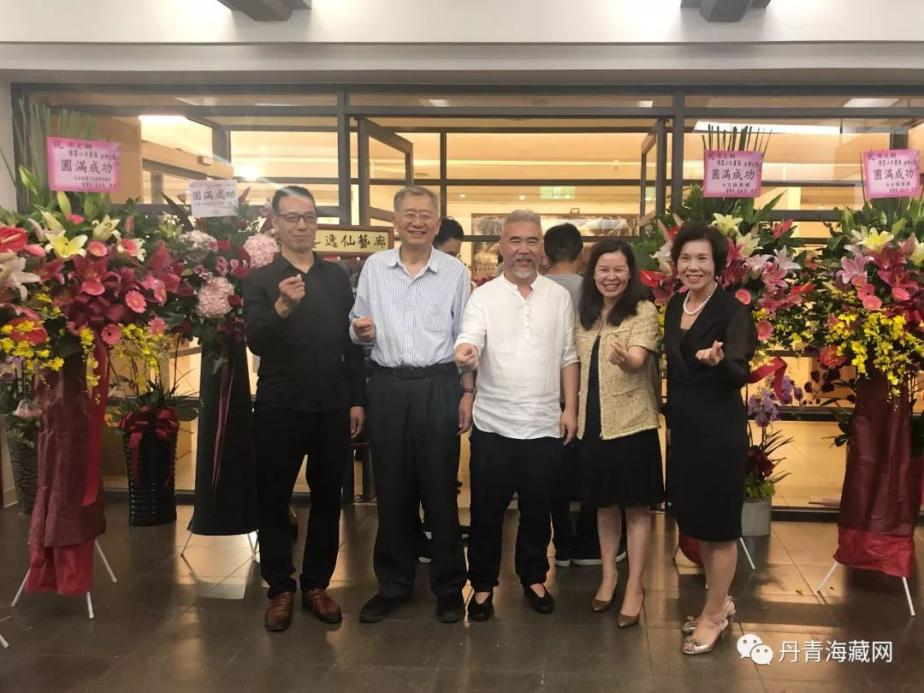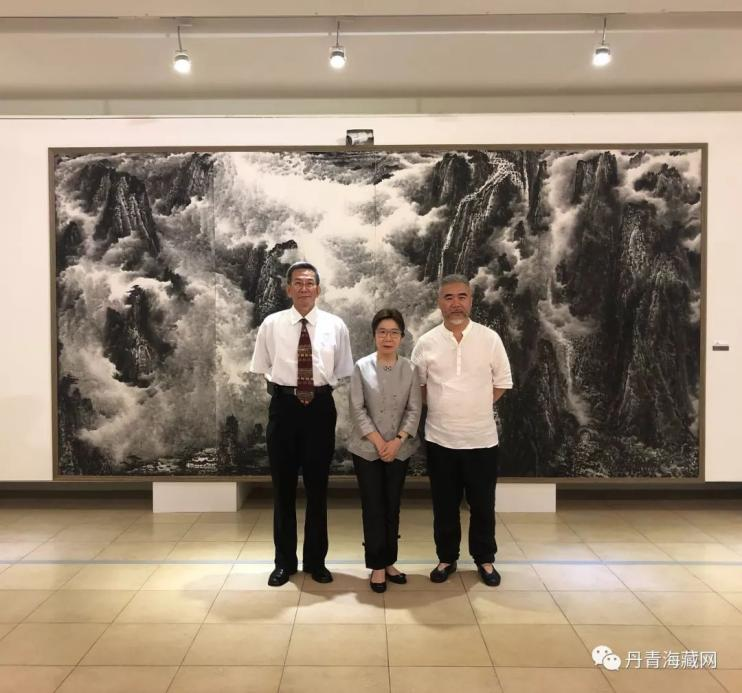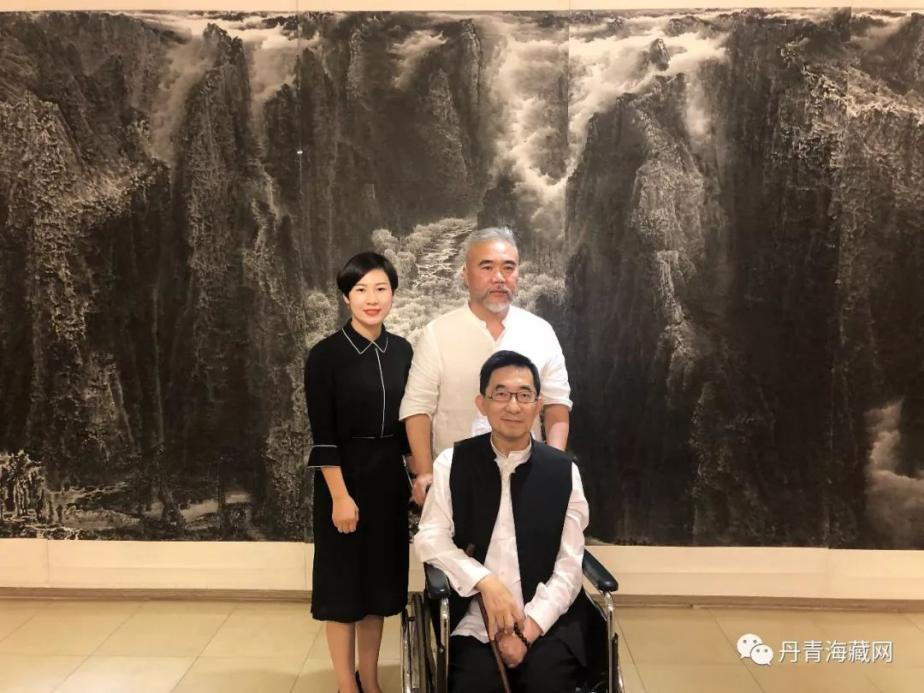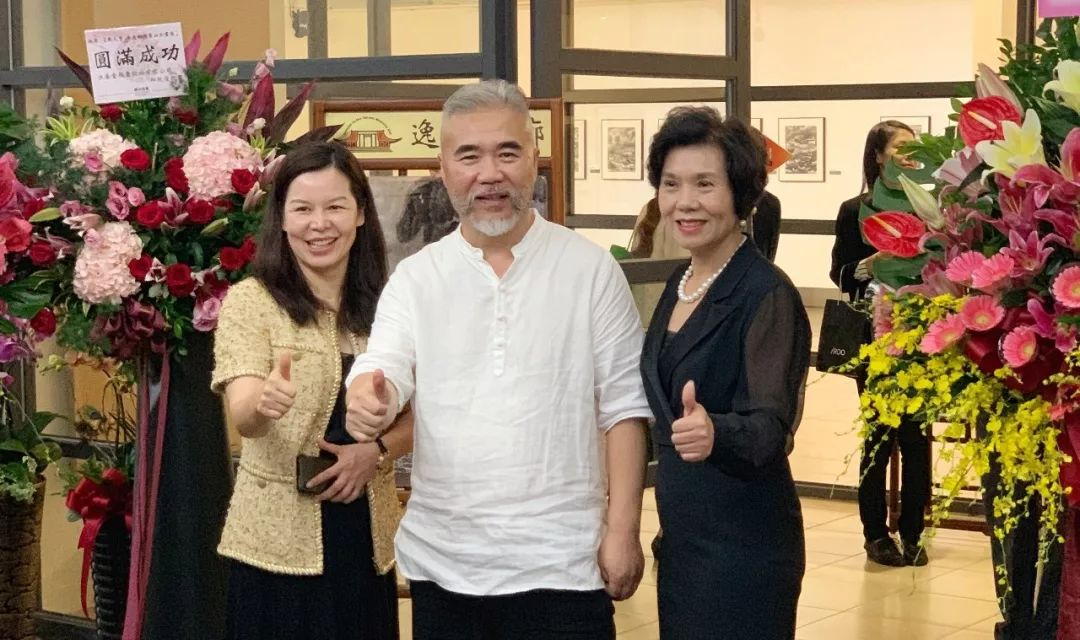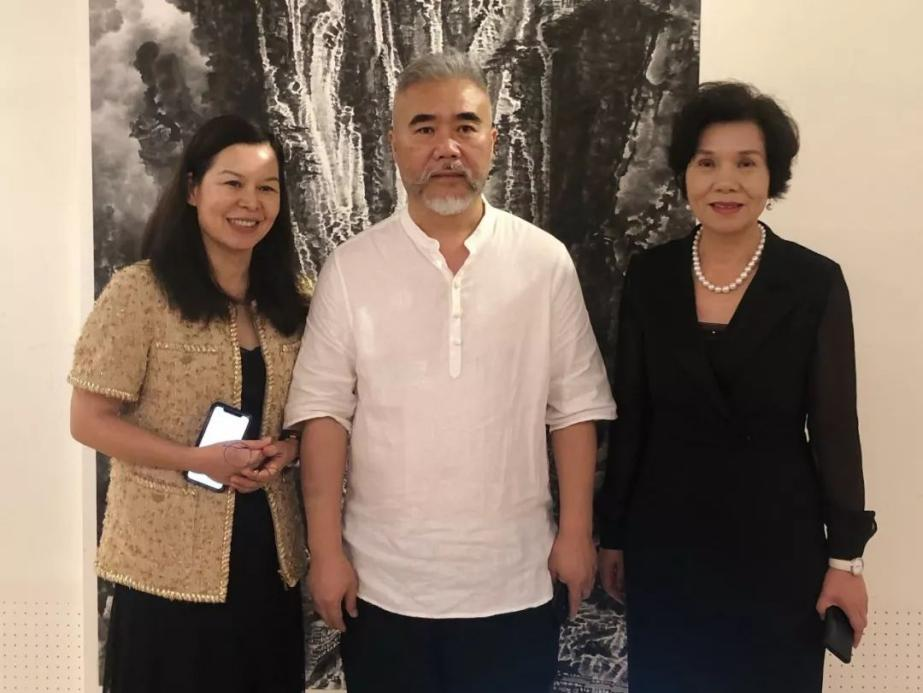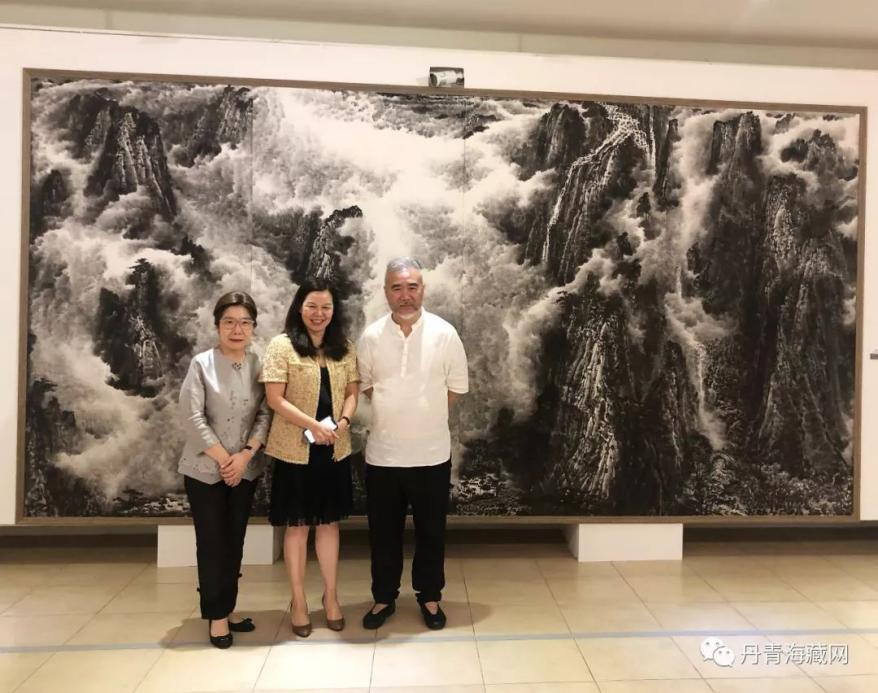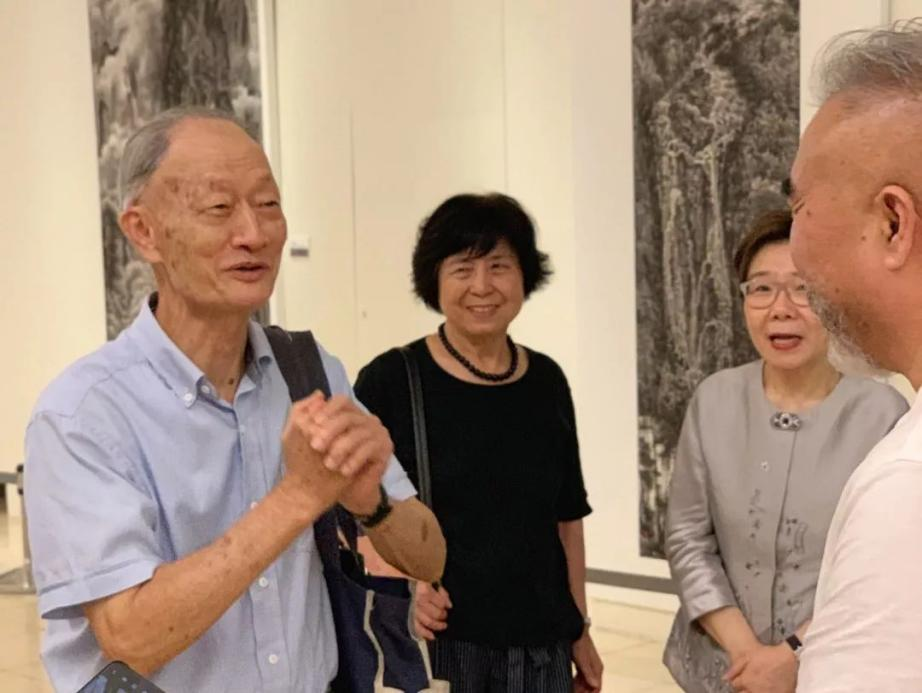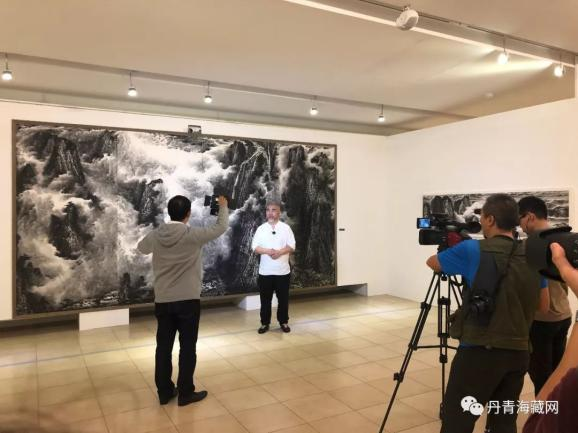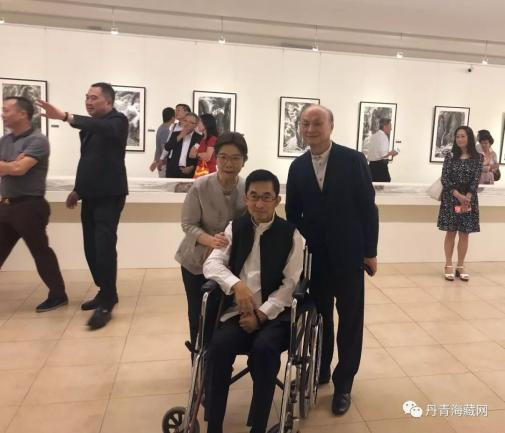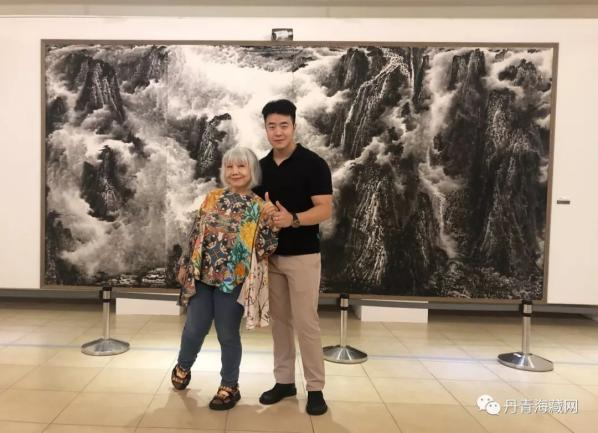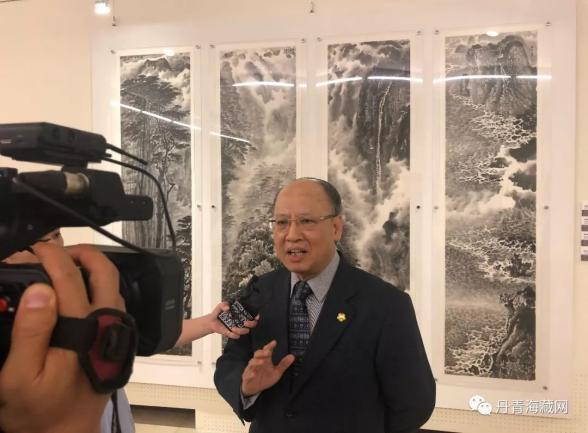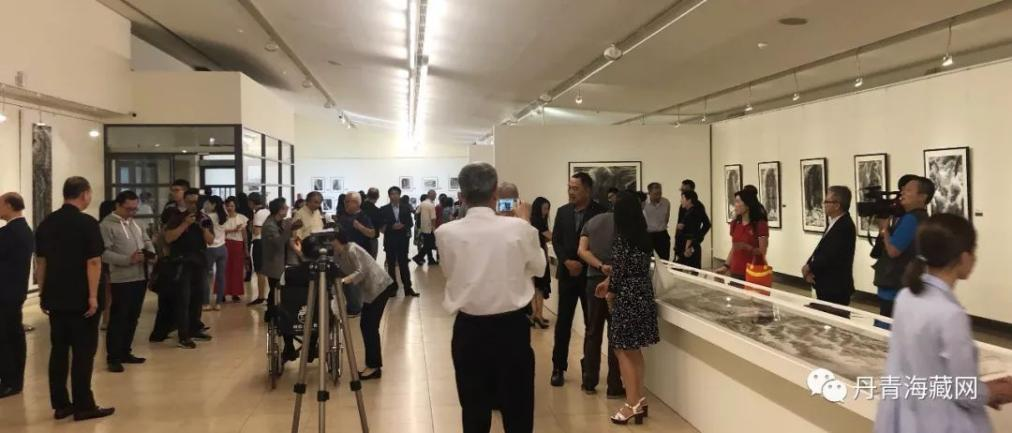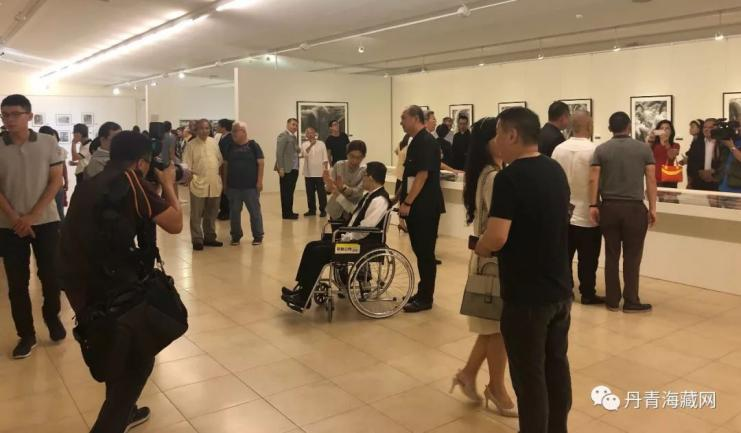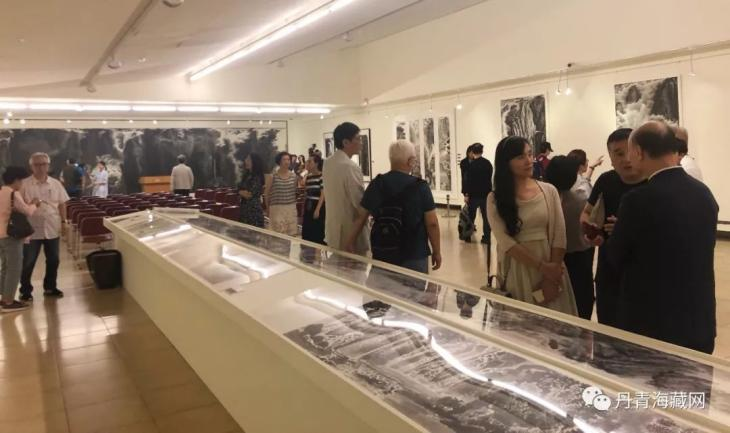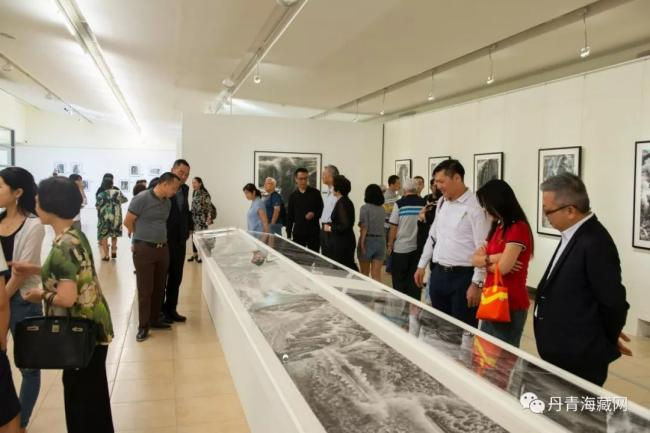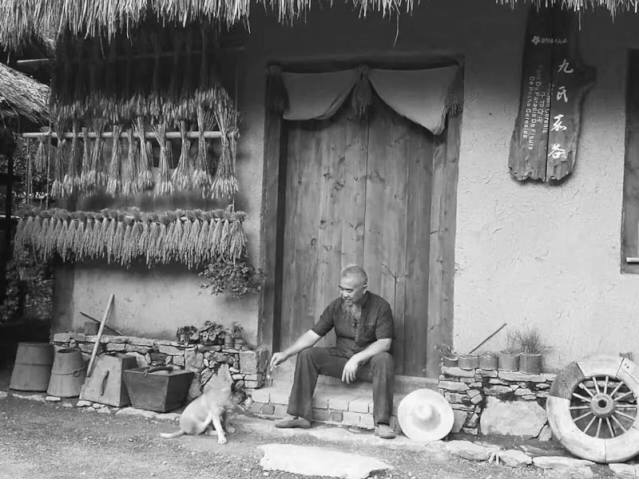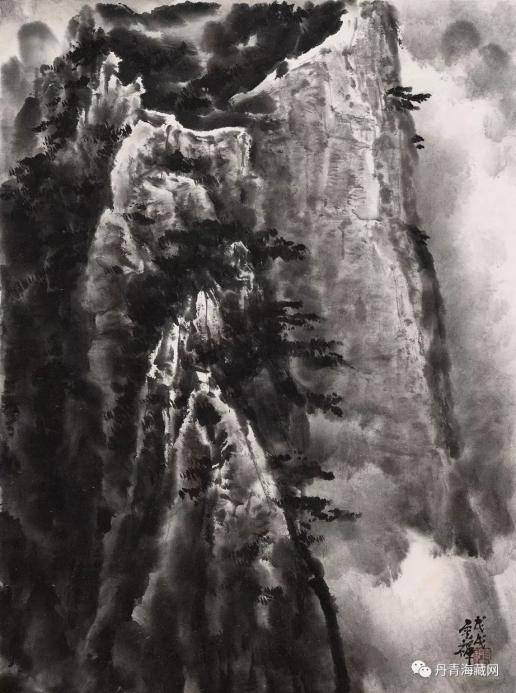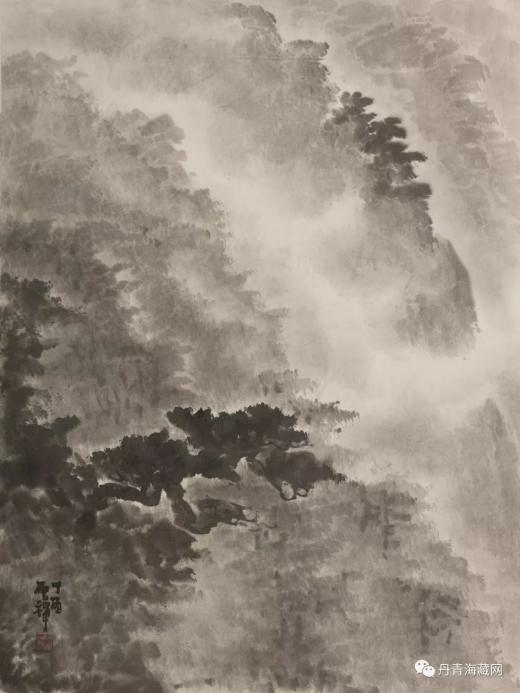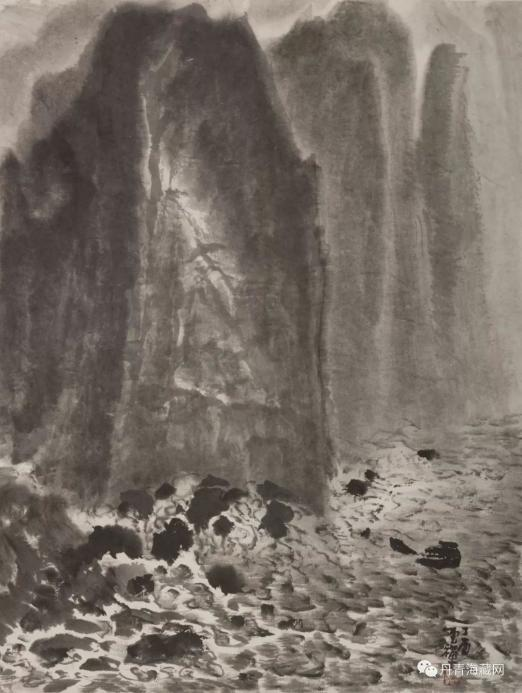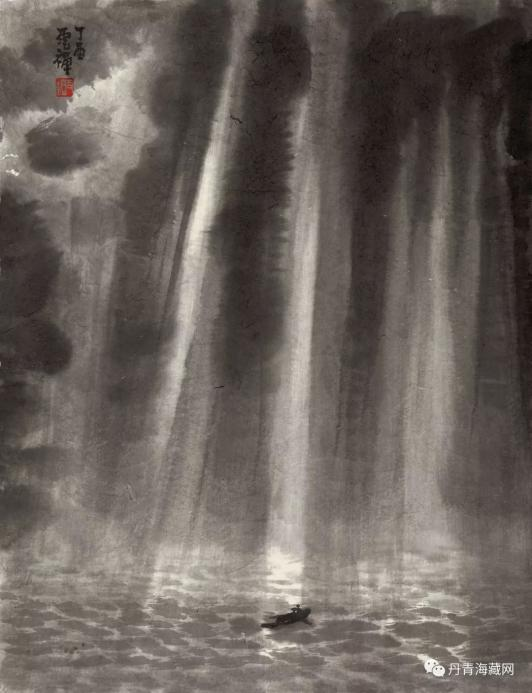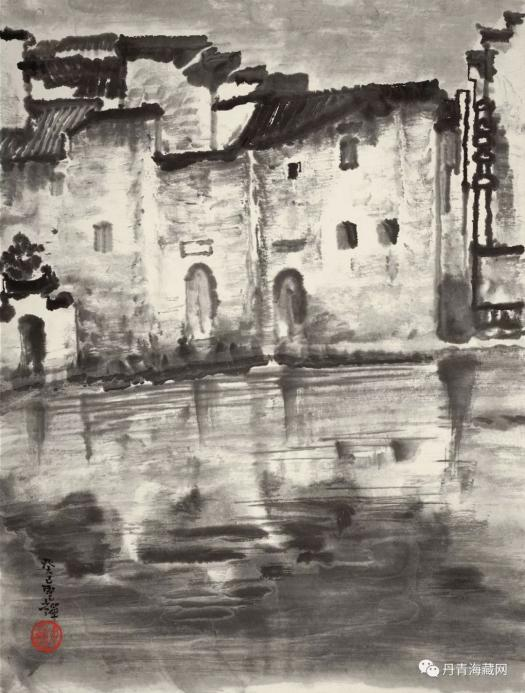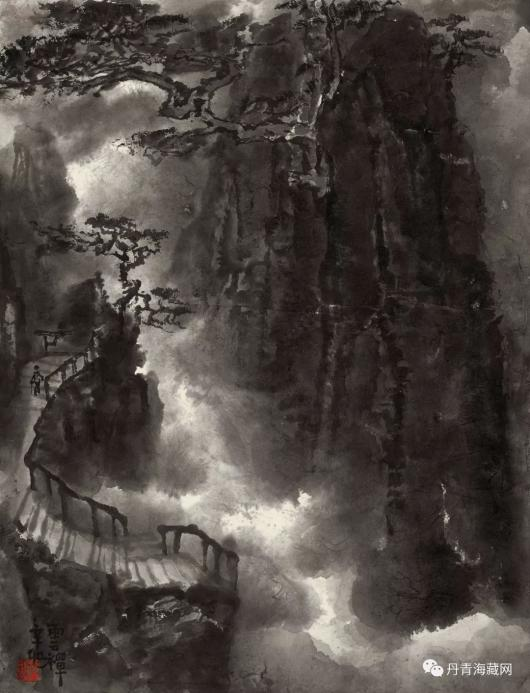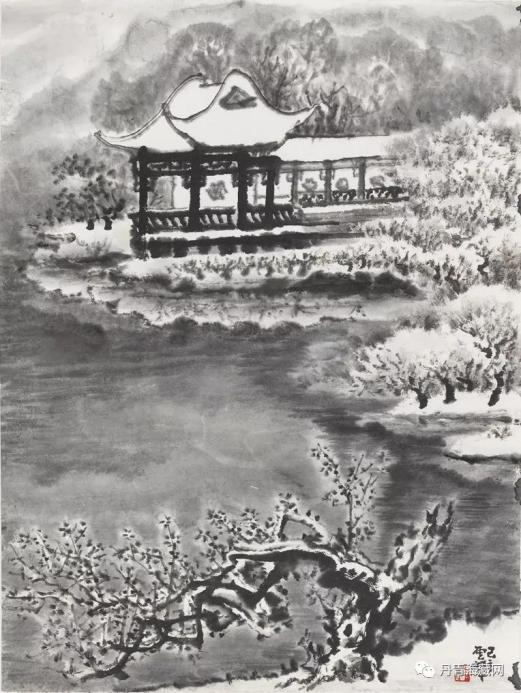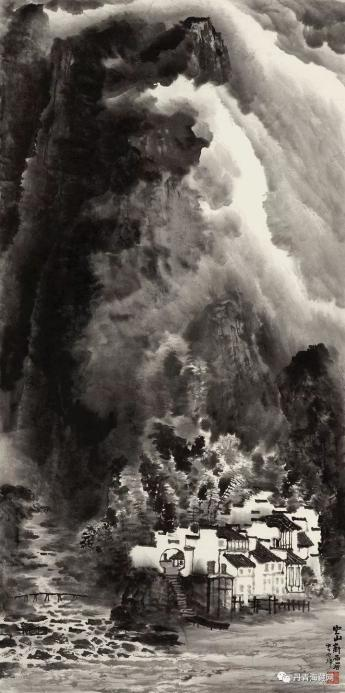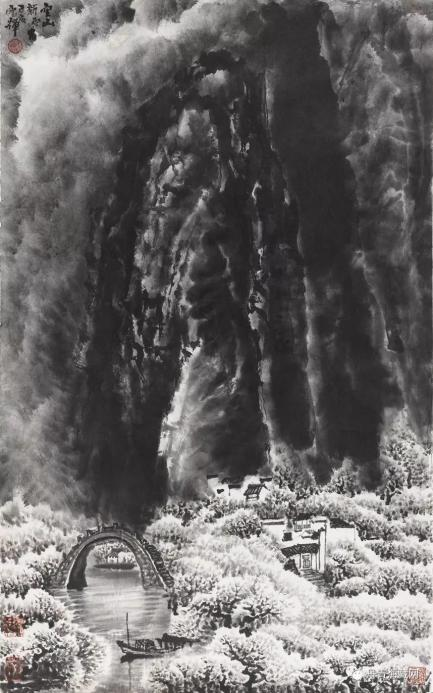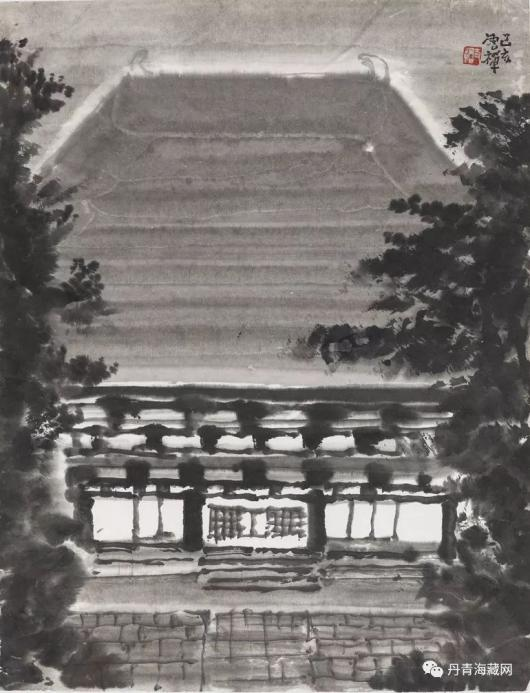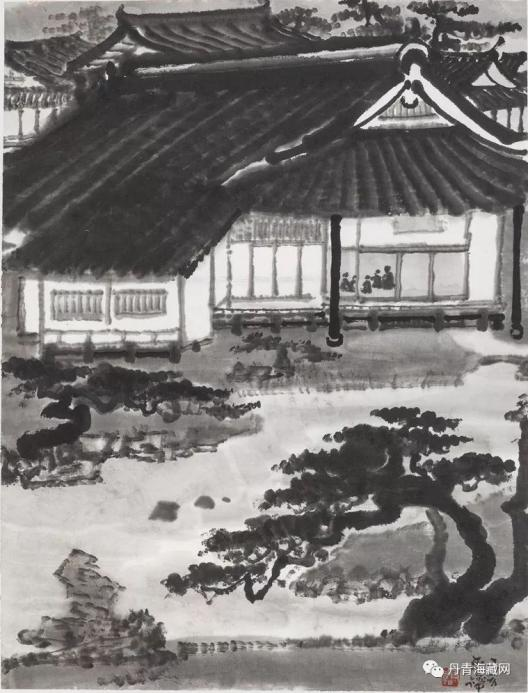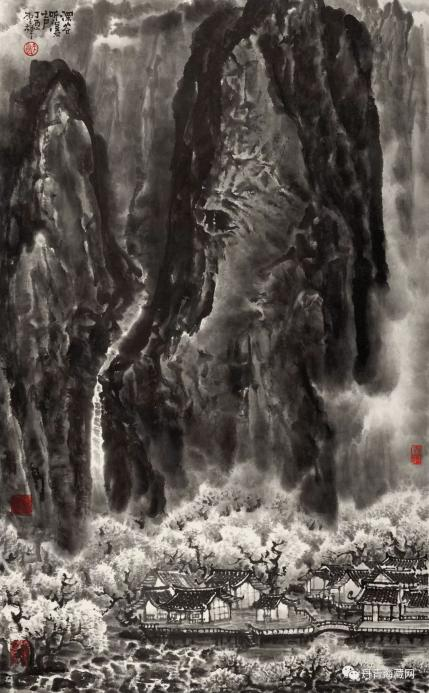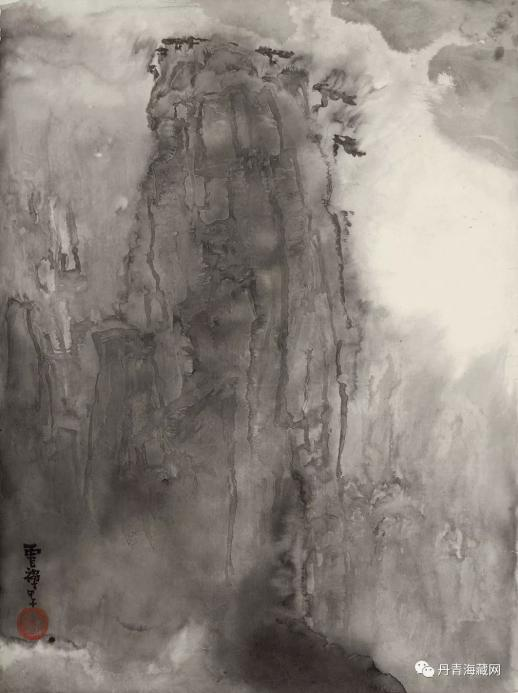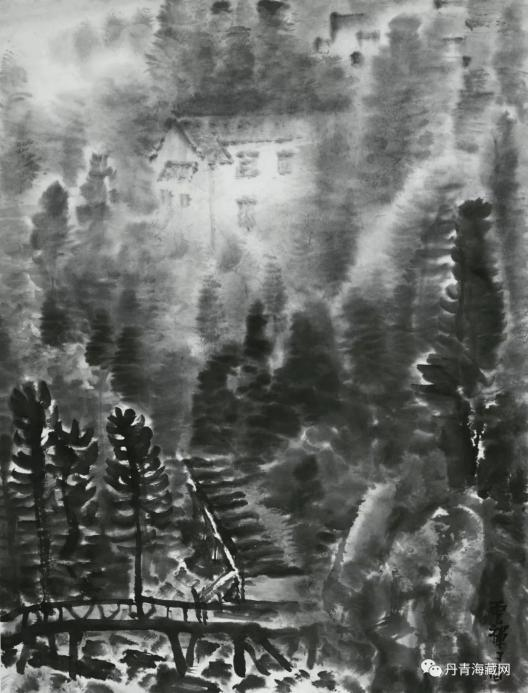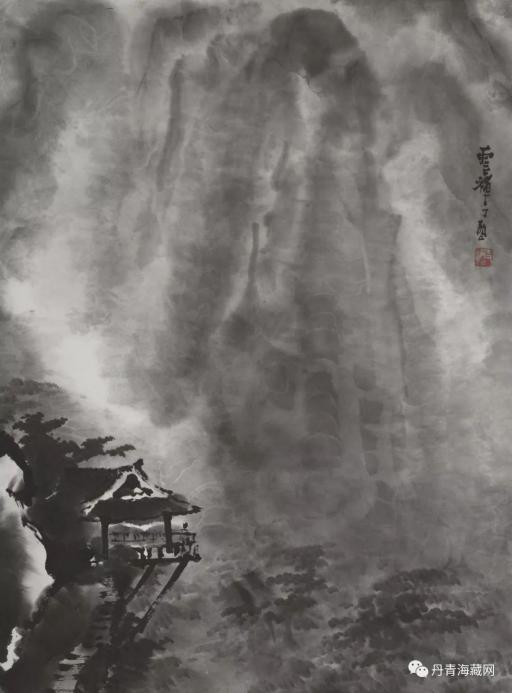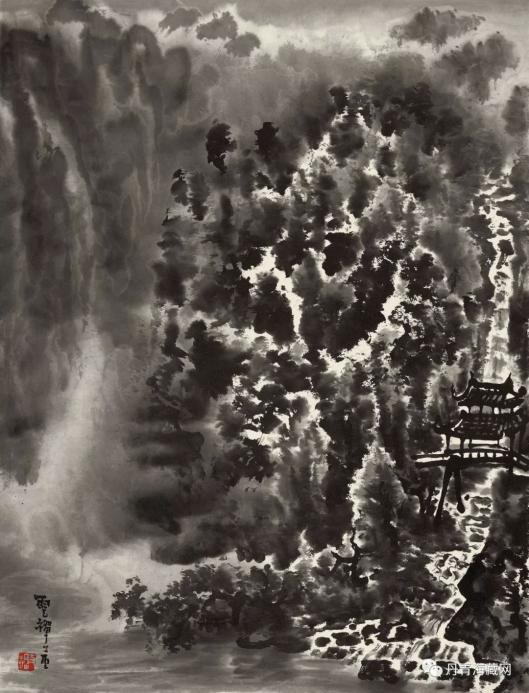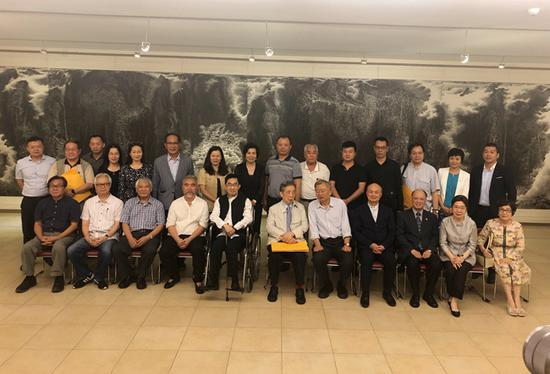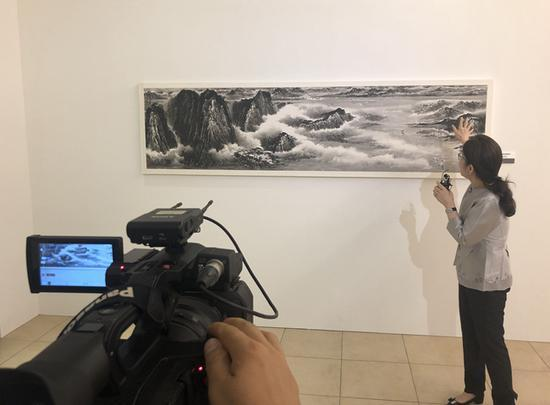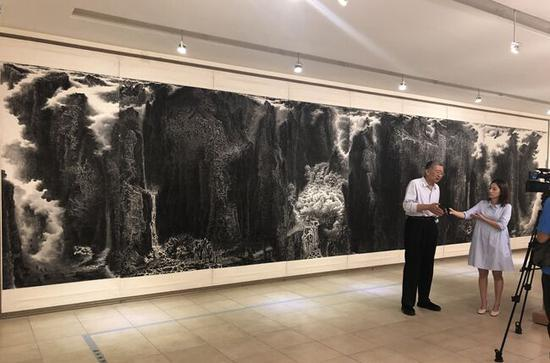“Pioneer of the Times” - The Academic Seminar on Lai Zhigang’s Ink Art Was Held in Zhejiang Art
Time: 2023-08-21 Source: China Art Weekly
Seminar site
[Editorial note] On April 8, the opening ceremony of "Pioneer of the Times - Exhibition of Lai Zhigang’s Ink Art" was held at Zhejiang Art Museum. The exhibition is guided by Zhejiang Art Museum and Art Museum of Guangdong, co-sponsored by Li Keran Academy of Painting, Zhejiang Xiao Feng-Song Ren Academy of Art, and undertaken by International Ink Art Expo and Shenzhen Lai Zhigang Jimo Landscape Painting Culture and Art Development Co., Ltd. On the same day, an academic seminar on the same theme was held in Zhejiang Art Museum, gathering many experts and scholars to discuss the style and characteristics of Lai’s ink art.
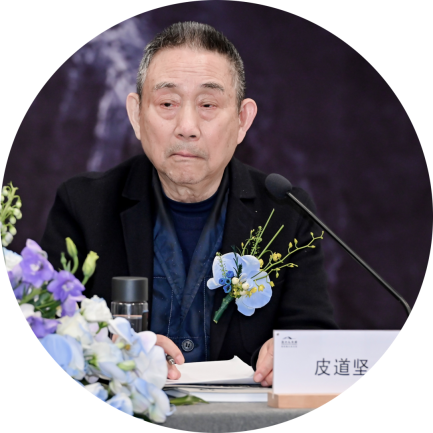
Pi Daojian (Deputy Director of the Curatorial Committee of the China Artists Association, academic host of the seminar): We had a wonderful opening ceremony, and let us start the workshop. We all know that Lai Zhigang has held many seminars in recent years, many experts and scholars have evaluated Lai Zhigang’s art from various aspects, and every one of you is very interested in his works. So, I hope everyone can provide insights in today’s seminar.
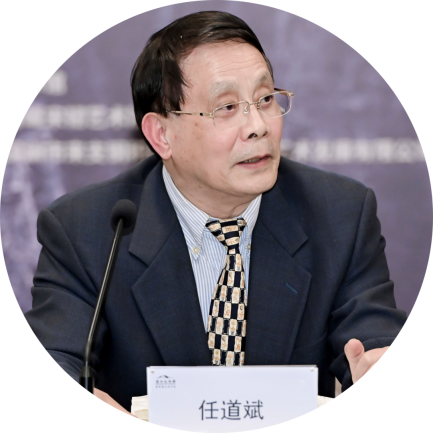
Ren Daobin (Former Dean of the School of International Education, China Academy of Art): Lai Zhigang’s paintings have both a fluid feminine beauty and a hard masculine beauty. When the two come together, a richer beauty is produced. It is the mutual struggle and mutual appreciation between movement and stillness, between solid and fluid, and there is no winner or loser. The never-drying sea and the never-decaying stones interpret endless life, that is, "live", and the addition of clouds and mist makes the mountain more "live". From it, I realized a living aesthetic feeling of Taoism, which is eternal and endless.
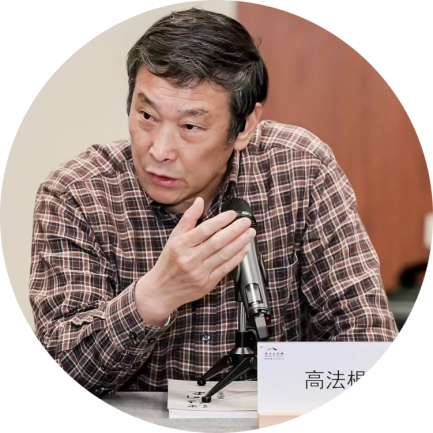
Gao Fagen (Former Vice President of China Academy of Art): It takes a lot of time for Lai Zhigang to create such a large painting. From his series of works, we can indeed see the spirit that a painter is pursuing, and it is not easy to succeed. Relatively speaking, the magnificence expressed in his works is more perceptible, including the sea of clouds, peaks and mountains, and the intersection of them is shocking. Generally speaking, his paintings are majestic and magnificent.
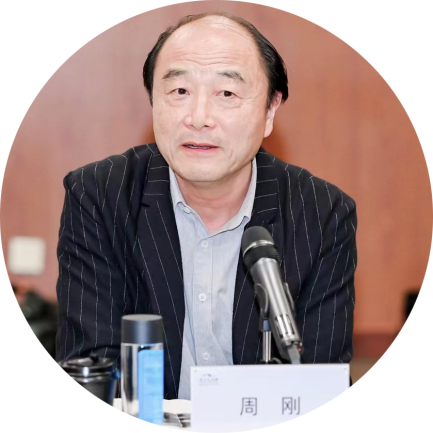
Zhou Gang (Former Deputy Dean of School of Design, China Academy of Art): Lai Zhigang painted that majestic thing in his works, giving us the feeling of mountains and rivers, which is very good. The painting Spring Tide has a unified artistic language and feels better. Generally speaking, Lai can paint such a large-scale work with such energy, which is quite a challenge for a painter. I know how difficult it is to paint a large painting, so his hard work, his determination, and his pursuit of art are really admirable.
Yin Shula (Coordinator of This Exhibition, Former Director of the Collection Department of Zhejiang Art Museum): Despite the twists and turns, we got to know Lai Zhigang further through the exhibition, and opened and held a seminar, which can be called a success. Lai Zhigang has opened up such a good artistic path of "beating in from the outside". I wish him more success.
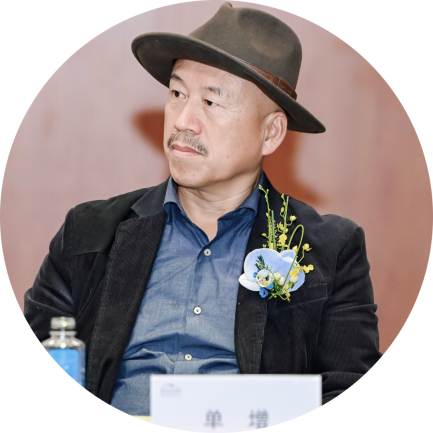
Shan Zeng (Deputy Dean of the School of Art Education and Management, China Academy of Art): We have never seen such a majestic landscape of Lai Zhigang in Hangzhou. In a new context, as an exploration, it is an aspect worthy of recognition. The three large exhibition halls present this kind of majestic large painting, which is contained in volume. The entire space of Zhejiang Art Museum is also very modern, and traditional calligraphy and paintings are easily eaten up by the space, but Lai’s works fit well with the modern space. In terms of scale, it is an opportunity for these works to breathe in step with this era, and the pulse of art can be presented, instead of breathing the breath of the ancients today.
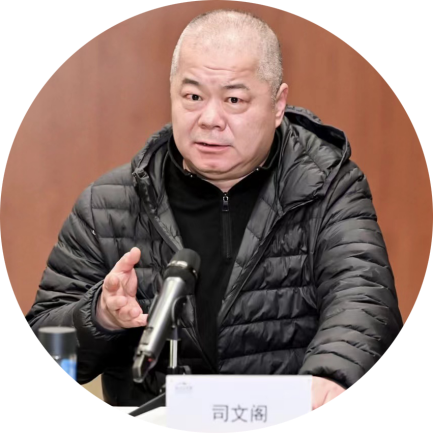
Si Wenge (Director of the Fine Arts Center of China Academy of Art): Lai Zhigang’s art has reached the category of contemporary ink painting. His extra-large paintings are relatively abstract and contemporary, and some nutrients can also be found in his small paintings. He still wants to show us a world of mountains and rivers in his mind, and we can feel the visual impact. I think he may be born specifically for large paintings, although this is just my intuitive feeling. But generally I think his art still belongs to contemporary ink wash and abstract ink wash. In his large and extra-large works, these two points are stronger.
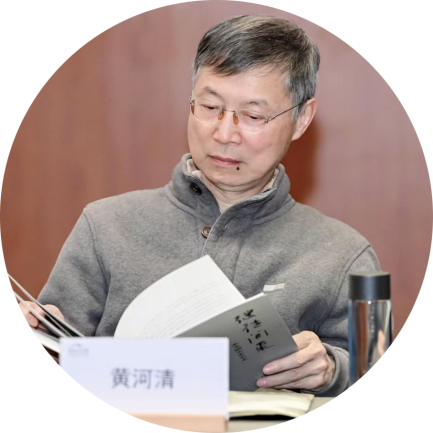
Huang Heqing (Professor of School of Art and Archaeology, Zhejiang University): Lai Zhigang’s paintings are indeed inherited, both ancient and modern. From his works, we can feel the influence of Mr. Li Keran in the ancient Northern Song Dynasty and modern times. Not limited to inheritance, in fact, he has his own development and innovation. For example, it is quite unique for him to draw clouds, as there are not many ancient paintings that specialize in cloud painting. He showed a kind of dynamic beauty in the landscape paintings that are considered to be static, which is very worthy of recognition. The modern exhibition space emphasizes a kind of publicity, and this kind of large painting is needed, and Lai Zhigang can paint this kind of large painting. This is very challenging, but it is indeed more suitable for our modern exhibition space.
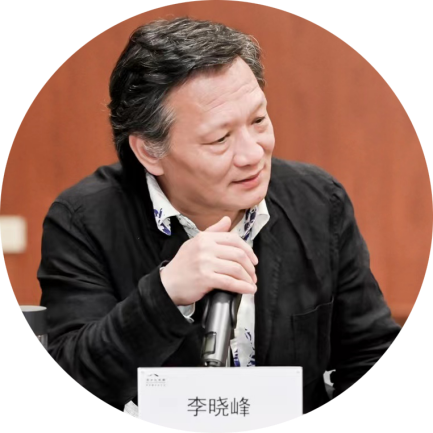
Li Xiaofeng (Associate Professor and Curator of the Academy of Fine Arts, Shanghai University): There is a sense of responsibility in Lai Zhigang’s paintings, not Western expressionism. We may all have idealism, but the idealism of our generation is idealism with a strong social awareness, so we are always connected with the sense of responsibility and mission, and it has not disappeared. The sense of light in his paintings goes beyond romanticism and impressionism, and is a surreal light sense, but this surrealism is very positive.
Wang Shaoqiu (Director of Wang Shaoqiu Art Museum): We have actually seen Lai Zhigang’s paintings before, and they left a deep impression on us.I felt their momentum, and was amazed that a single painting could occupy a wall. And in this picture, the solemnity of the mountain and the momentum of the water are coming head-on, which is so impressive. Seeing so many works today, and there are even larger ones, I have a somewhat comprehensive understanding.
Tao Wenjie (Vice Chairman and Secretary-General of Zhejiang International Art Exchange Association): Lai Zhigang’s works have a sense of layering, system and space. My first impression is that it is very shocking. Lai has made a new breakthrough in creating with the method of accumulated-ink. His works have a strong sense of identity and have formed his own unique style and the tension and expressiveness of his works. It is not easy to do this.
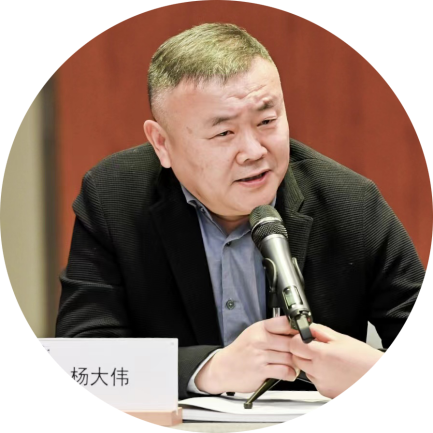
Yang Dawei (Professor of School of Design and Art, Zhejiang Institute of Communication): In the boundaries of Jiangsu, Zhejiang, and Shanghai, there are relatively few landscape expressions similar to Lai Zhigang’s works. I think his pictures are actually quite sincere and simple. In this picture of him, I saw an inner connection, that is, he is very serious, very particular, and quite simple. In fact, Lai used the way a contemporary person sees the world, rather than the way the ancients viewed landscapes. I think this is commendable. In his entire art, the two most frequently used words are majestic. For example, the painting Spring Tide really brought me a big surprise, because it has a strong sense of majesty. Painting cannot deceive people, so without a sincere attitude and a particularly strong willpower, such a masterpiece cannot be completed.
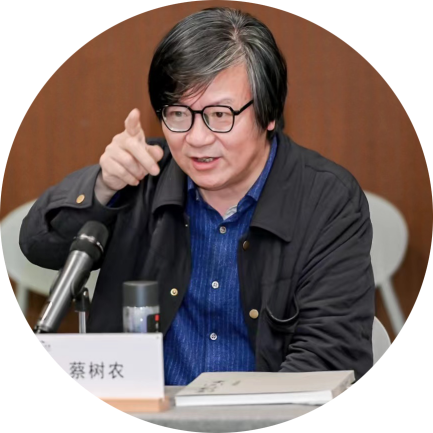
Cai Shunong (Chief Reporter of China Art Weekly): Lai Zhigangd’s landscape paintings can be said to be unique in contemporary times, which is still very rare in Jiangnan, especially in China Academy of Art. In fact, his whole creation is to learn from the ancients, but keep pace with the times, and I think this is what many contemporary painters and calligraphers lack. So this, I personally feel is very remarkable.

Wei Xiangqi (Associate Research Librarian of National Art Museum of China): In Lai Zhigang’s creation, we can see many new things, forming an immersive viewing experience or creative experience, with a feeling of entering the picture. Therefore, the whole process, experiential, and physical things shown in his works are what we value very much in contemporary ink painting theory. In the work Spring Tide, he relatively weakened a trace in Chinese landscape painting, and strengthened the use of brushes or physical and expressive things. In this way, he made this painting more able to connect with some new theories of contemporary ink painting or introduce some theories, thus broadening the interpretation space for his paintings. So in fact, there are expressions of modern ink painting in it.
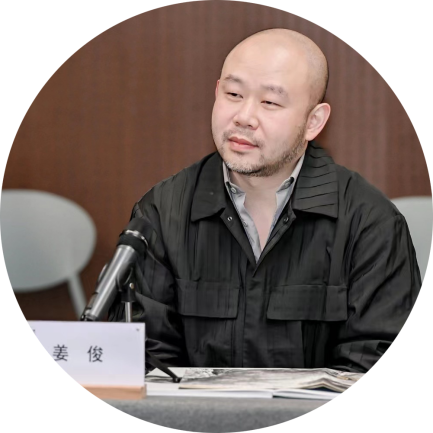
Jiang Jun (Art Critic): I think Lai Zhigang’s Spring Tide expresses the abstraction and sublime of art very well, and has a strong sense of movement. It’s huge, like a magnificent altarpiece. As for what the altar painting is dedicated to, we can understand it as some kind of landscape concept or some abstract concept and so on.
Exhibition site
Part of the exhibited works
Living Outside the World of Mortals 123x133cm (2013), Lai Zhigang
A Poem for Clouds and Rain 97x60cm (2017), Lai Zhigang
The Way with Art 249cm×1134cm (2009), Lai Zhigang
Snow on the River 249x31cm (2021), Lai Zhigang
Snow on the River (Partial), Lai Zhigang
Spring Tide (Partial) (2020), Lai Zhigang
Laozi’s Entry (Partial) (2023), Lai Zhigang
Sage’s Domain (Partial) 1375x250cm (2020)
Sketch (2023), Lai Zhigang
Sketch (2023), Lai Zhigang
World After Snow (Partial) (2023), Lai Zhigang
The Way of Clouds (Partial) (2015), Lai Zhigang
Sketch, Lai Zhigang
Sketch, Lai Zhigang
Sketch, Lai Zhigang
A Majestic and Romantic Visual Feast, Exhibition of Lai Zhigang’s Ink Art Opened in Hangzhou
Time: 2023-04-11 Source: South Pluss
When spring begins to paint on the lake, guided by Zhejiang Art Museum and Guangdong Art Museum, hosted by Li Keran Academy of Painting and Zhejiang Xiao Feng-Song Ren Academy of Art, "Pioneer of the Times – Exhibition of Lai Zhigang’s Ink Art" and the works seminar were held in Zhejiang Art Museum, offering a pure, vigorous and romantic visual feast to the local audience.
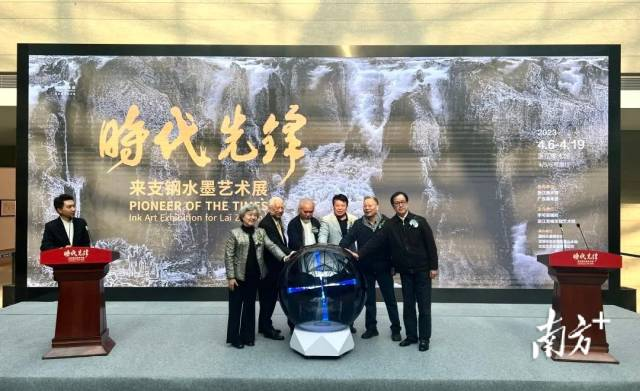
Lai Zhigang was admitted to the graduate class of "Jia Youfu Studio" of the Central Academy of Fine Arts in 2002, and joined the "Li Xiaoke Art Studio" of Beijing Academy of Fine Arts in 2004. He regards mist, cloud, river, and sea as important symbolic elements in artistic creation, and controls dot dyeing, rendering, covering dyeing, shade, thickness, and weight based on the method of accumulated-ink. His works are like fine wine, which makes people intoxicated by the mountains and rivers. There is color in color, ink in ink, delicate and bold strokes, lush and deep charm, endowing form with life and emotion, which once again proves that there are still many possibilities and rich discoveries in the rhetoric of ink and wash in Chinese painting with strong philosophical meaning.
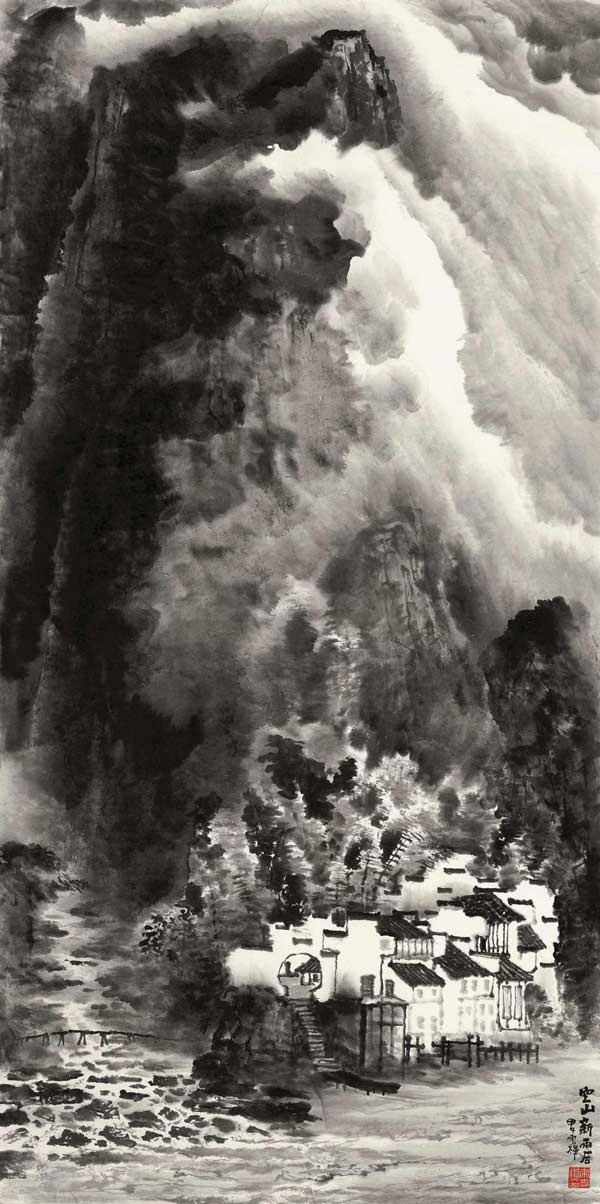
The ink shapes poured on the paper are all centered around the smoke, clouds and rays of the accumulated ink method. Mountains, rivers, bridges, pavilions, vegetation, snowy, moon, people, and boats are all dense and well-arranged. With bright and dark, cold and warm, and freshness and strangeness embracing each other, both the form and rhythm are advancing step by step
In Lai’s ink and wash, the unconscious consciousness of traditional Chinese painting is an experiment in poetic space beyond the experience of landscape, and it is an eclectic way of breaking away from the "specimen" painting method. He combined the advantages of Fan Kuan, Mi Fu, Gong Xian, Huang Binhong, Li Keran, Jia Youfu and other ancient and modern landscape masters. While focusing on "pioneering", he abandons the overly shocking and abstract parts, and inherits the past, keeps the integrity and innovates, and is full of "a state, an atmosphere, a fire, and a great beauty" controlled by rationality.
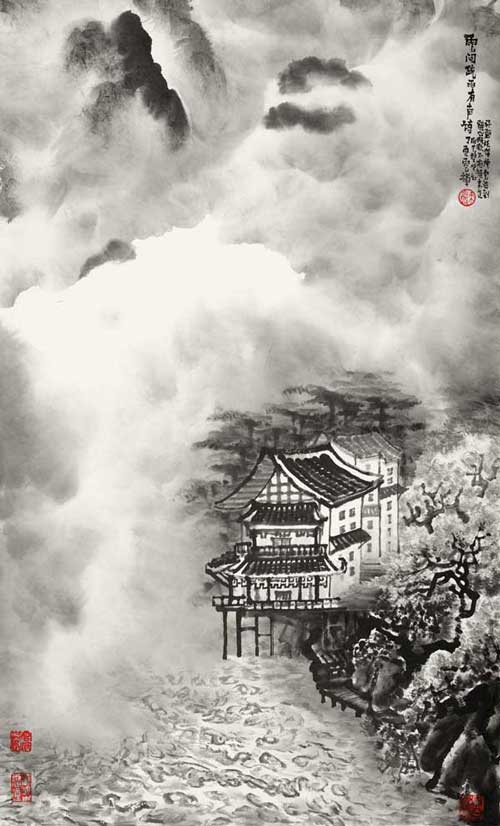
At the seminar, Lai’s large-scale landscape paintings through deliberation and accumulation once again sparked heated discussions. "Lai’s painting foundation lies in the ink painting method of Chinese painting. His unique expression method is the technique of accumulated-ink, and the core of his concept pursuit is the original flavor of ink image. Among them, the accumulation of ink is extremely important to him. It is an artistic approach that he finds that he likes and is suitable for him. The appearance of ink image is not just the result of brushwork, it should be planned. "Xiao Feng, the former president of the Chinese Academy of Art, commented.
“Pioneer of the Times” Exhibition of Lai Zhigang’s Ink Art was Opened
Time: 2023-04-11 Source: Lingjing · People’s Art Muse
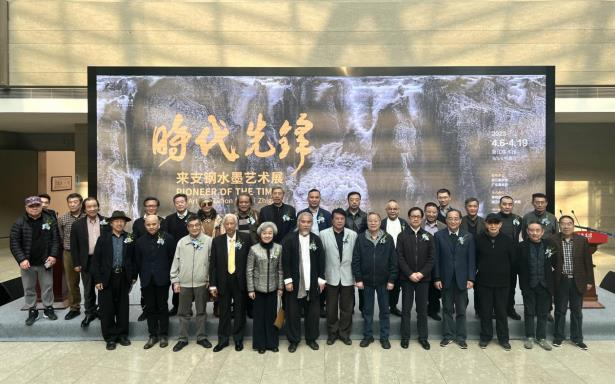
On April 8, the opening ceremony of "Pioneer of the Times - Exhibition of Lai Zhigang’s Ink Art" was held at Zhejiang Art Museum. The exhibition is guided by Zhejiang Art Museum and Art Museum of Guangdong, co-sponsored by Li Keran Academy of Painting, Zhejiang Xiao Feng-Song Ren Academy of Art, and undertaken by International Ink Art Expo and Shenzhen Lai Zhigang Jimo Landscape Painting Culture and Art Development Co., Ltd. Qin Zhigang, Former Vice-chairman of the China Federation of Literary and Art Circles, Chen Jiayuan, Sheng Changli, and Sun Wenyou, Former Vice-chairmen of the CPPCC Zhejiang Province, attended the event.
Lai Zhigang has systematically studied Chinese landscape painting from Mr. Jia Youfu and Mr. Li Xiaoke. During his 40-year artistic journey, Lai persisted in exploring traditional accumulated-ink painting methods, absorbing the rich artistic essence from masters such as Gong Xian, Huang Binhong, and Li Keran. By learning form the strengths of all the masters and integrating the past and the present knowledge, he got familiar with the language rules of accumulated-ink and came out with his unique painting style. This exhibition summed up the artistic achievements of Lai Zhigang for years and displayed more than 100 classic works of him. Among all his works, The Way with Art, Spring Tide, and The Way of Clouds are super large in scale and majestic. In another batch of his scrolls, such as World after Snow, Fuchun River in Mist and Rain and Snow on the River, delicate accumulated-ink brushstrokes present the moistness and denseness of natural landscapes such as sky, earth, water, and fog, highlighting an invigorating, moist and subtle texture. Another surprise in the exhibition is his sketches, which are small in size but full of interest.
Guo Peijian, Executive Dean of Xiao Feng-Song Ren Academy of Art, conveyed the congratulations of the Dean Xiao Feng to this exhibition at the opening ceremony: "Pioneer of the Times - Exhibition of Lai Zhigang’s Ink Art" is an exhibition based on traditional creative art, and it is a good time and a good place to exhibit beautiful works. Guo Peijian stated that the title of this exhibition "Pioneer of the Times" was chosen by the Dean Xiao Feng. Mr. Xiao has always attached great importance to the cultivation of artistic humanism, paying special attention to the environment of artistic creation, especially the healthy development of art and the awareness of innovation. Once art leaves innovation and creation, it loses its life. The inheritance and development of Chinese painting is an eternal topic and an eternal driving force.
Mr. Pi Daojian, a representative of the special guests and a famous art critic said that Chinese painting is a wonderful art form dedicated by the Chinese nation to world art, and Chinese landscape painting is one of the forms with the highest artistic achievements and a large number of masters. The esthetician and philosopher Li Zehou said that Chinese landscape painting is a symbol of the essence of Chinese culture. Through Accumulated-ink landscape paintings, Mr. Lai has well inherited the ideas of "reflecting Tao through form" and "harmony between art and philosophy" in traditional Chinese painting theory.
Xiong Delong, founder of International Daily and chairman of Xiong’s Group, believes that "Mr. Lai uses cultural soft power to enhance the overall national strength, so that overseas Chinese at home and abroad and foreigners all over the world can see the wisdom and accumulation of the Chinese nation."
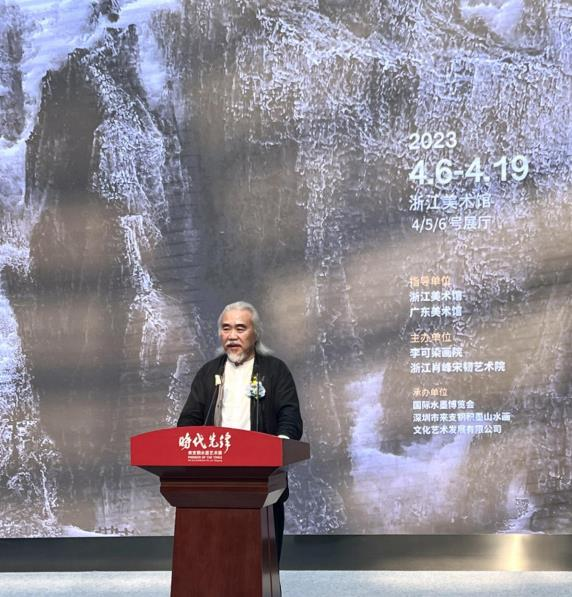
"The words are in the painting". Lai Zhigang said that in his many years of painting practice, his greatest understanding is the "Tao", which seems to be an invisible force supporting his painting.
Some of Lai Zhigang’s Works
The Way with Art 249x1134cm 2009
World After Snow 1800x32cm (2023)
Waterfall in Baishui Village 250x160cm (2014)
Fresh Mountain after Rain 68×136cm (2014)
Mengxi Garden (Partial) 368x48cm (2021)
The Poetic Conception of Travel Notes in Peach Blossom Land (Partial) 366x48cm (2021)
Spring Tide (Partial) 250x2640cm (2020)
International Daily | Lai Zhigang’s Works Were Exhibited in Hangzhou, and the Los Angeles Times Pro
Time: 2023-04-10 Source: Window of Bali
On the eve of the opening of the exhibition in Hangzhou, the Los Angeles Times published a special edition for Lai Zhigang’s ink painting
Los Angeles Times special page (partial)
Mr. Lai Zhigang
Poster of Lai Zhigang’s ink art exhibition (Xiao Feng, Former President of the China Academy of Art, inscribed “Pioneer of the Times”)
Inscription by Liu Wenjie, a famous calligraphy and painting collector and connoisseur
[News] Before the "Pioneer of the Times" - Exhibition of Lai Zhigang’s Ink Art was held in Hangzhou on April 6, the mainstream American media Los Angeles Times published a review article "The Superlative Chinese Ink and Wash – Written at the eve of Lai Zhigang Hangzhou Ink – Wash Art Exhibition" in the paper media on March 31 in the form of a cross-page special edition, which aroused widespread attention and interest from local readers. Industry insiders commented that Lai has brought Chinese ink painting to the world.
Qin Zhigang, Chen Jiayuan, Sheng Changli, Sun Wenyou, Xiong Delong and Lai Zhigang jointly kicked off the opening of the exhibition
Group photo of leaders and guests
Seminar site
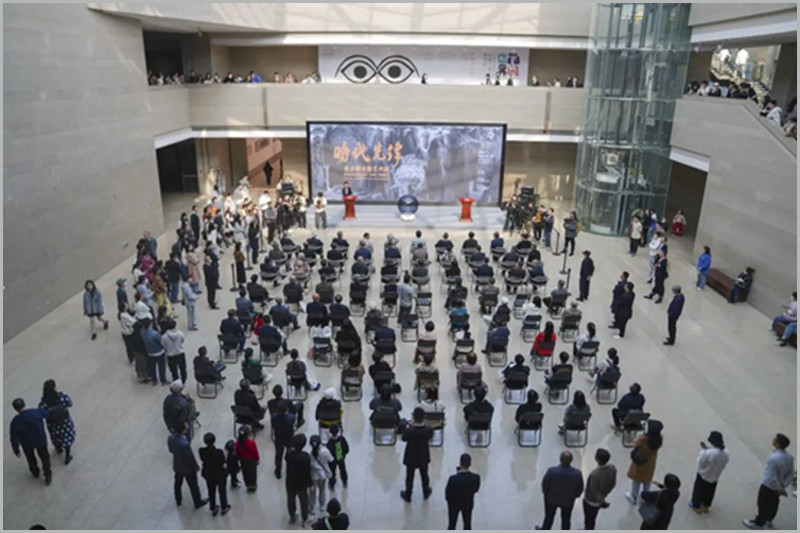
Opening Ceremony
Guided by Zhejiang Art Museum and Art Museum of Guangdong, co-sponsored by Li Keran Academy of Painting, Zhejiang Xiao Feng-Song Ren Academy of Art, and undertaken by International Ink Art Expo and Shenzhen Lai Zhigang Jimo Landscape Painting Culture and Art Development Co., Ltd., "Pioneer of the Times" – Exhibition of Lai Zhigang’s Ink Art Exhibition was held in Halls 4, 5 and 6 of Zhejiang Art Museum from April 6th to 19th. On the afternoon of April 8, the leaders and guests gathered at the opening ceremony to participate in the grand event, and held an academic seminar on the same day.
Lai Zhigang has systematically studied Chinese landscape painting from Mr. Jia Youfu and Mr. Li Xiaoke. During his 40-year artistic journey, Lai persisted in exploring traditional accumulated-ink painting methods, absorbing the rich artistic essence from masters such as Gong Xian, Huang Binhong, and Li Keran. By learning form the strengths of all the masters and integrating the past and the present knowledge, he got familiar with the language rules of accumulated-ink and came out with his unique painting style. This exhibition summed up the artistic achievements of Lai Zhigang for years and displayed more than 100 classic works of him. Among all his works, The Way with Art, Spring Tide, and The Way of Clouds are super large in scale and majestic. In another batch of his scrolls, such as World after Snow, Fuchun River in Mist and Rain and Snow on the River, delicate accumulated-ink brushstrokes present the moistness and denseness of natural landscapes such as sky, earth, water, and fog, highlighting an invigorating, moist and subtle texture. Another surprise in the exhibition is his sketches, which are small in size but full of interest.

Speech by Guo Peijian, Executive Dean of Zhejiang Xiao Feng-Song Ren Academy of Art
Speech by Pi Daojian, Deputy Director of the Curatorial Committee of the China Artists Association
Speech by Xiong Delong, founder of International Daily in Indonesia
Acknowledgment by artist Lai Zhigang
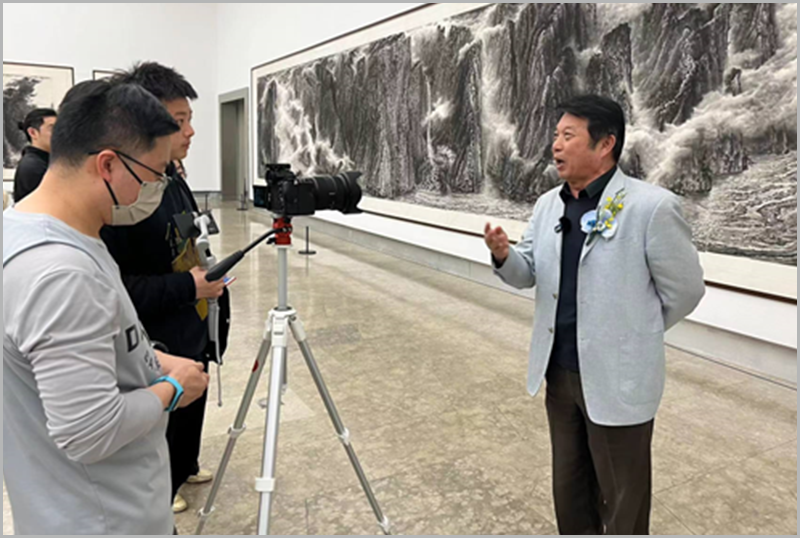
Qin Zhigang, Former Vice Chairman of the China Federation of Literary and Art Circles, is Interviewed by Reporters at the Scene
Xiong Delong, founder of the Indonesian International Daily, said in an interview with reporters at the scene that cultural self-confidence is the powerful spiritual force to realize the great rejuvenation of the Chinese nation. Lai Zhigang’s works are not inferior to Western masters such as Van Gogh and Picasso. Although the expression techniques of Eastern and Western paintings are different, they all have extraordinary expressive power, just like Lai Zhigang’s works, especially his large-scale works, which fully demonstrate the unique charm of oriental art. As overseas Chinese media, we should pay more attention to telling Chinese stories with a high degree of cultural confidence. The art of painting is indispensable, and Chinese media practitioners have the responsibility to introduce Chinese painting to the world.
In recent years, Lai Zhigang has attracted much attention in the Chinese painting circle, and has been affirmed or highly praised by dozens of industry authorities, who believe that he has pushed traditional Chinese ink and landscape painting to another artistic peak. Xiao Feng, the Former President of the China Academy of Art, believes that "his landscape paintings have played a milestone role"; Lu Yushun, President of the China National Academy of Painting, commented on him as "an artist with innovation and creation"; Famous art critic Chen Chuanxi called his works "majestic enough to sweep the world, and majestic enough to overwhelm the past and present"; Wang Dingqian, a senior collector in Taiwan, said, “Just as Zhang Daqian is the first person to splash ink in China, Lai Zhigang is the first person to accumulated-ink.”

Only what is national is recognized by the world. Emerging as the times require in the tide of the new era, Lai Zhigang will definitely occupy a place in the forest of world art. After holding several art exhibitions on both sides of the Taiwan Strait and abroad, Lai came to the West Lake again. His works can be called "ink and wash paradise", which contrasts with the West Lake and creates the highest aesthetic enjoyment in the misty rain inside and outside the painting.
(Wen Xi, reporter from International Daily)
Attendees:
Qin Zhigang, Former Vice Chairman of China Federation of Literary and Art Circles
Chen Jiayuan, Former Vice Chairman of Zhejiang Provincial Political Consultative Conference
Sheng Changli, Former Vice Chairman of the Zhejiang Provincial Political Consultative Conference
Sun Wenyou, Former Vice Chairman of the Zhejiang Provincial Political Consultative Conference
Zhao Guangyu, Former Vice Chairman of CPPCC Hangzhou Municipality
Yang Jianxin, Former Director of Zhejiang Provincial Department of Culture
Tian Yuyuan, Former Party Secretary of Zhejiang Federation of Literary and Art Circles
Jiang Jiandong, Former First-Level Inspector of Zhejiang Federation of Literary and Art Circles
Wu Jiaxi, Deputy Secretary, Deputy Director and First-Level Inspector of Zhejiang Provincial Bureau of Statistics
Ye Min, President of Hangzhou Convention and Exhibition Industry Association and Former Deputy Secretary-General of Hangzhou Municipal Government
Gao Fagen, Former Vice President of China Academy of Art
Ying Jinfei, Director of Zhejiang Art Museum and Vice Chairman of Zhejiang Artists Association
Guo Peijian, Executive Director of Zhejiang Xiao Feng-Song Ren Academy of Art
Pi Daojian, Deputy Director of the Curatorial Committee of the China Artists Association and A Famous Critic
Huang Jun, Dean of the School of Art Management and Education, China Academy of Art
Ren Daobin, Former Dean of the School of International Education, China Academy of Art
Zhou Gang, Professor and Doctoral Supervisor of China Academy of Art
Shan Zeng, Professor of China Academy of Art, Deputy Dean of School of Art Education and Management
Yin Shula, Coordinator of This Exhibition and Former Director of the Collection Department of Zhejiang Art Museum
Si Wenge, Director of the Fine Arts Center of China Academy of Art
Huang Heqing, Professor of the School of Art and Archaeology, Zhejiang University
Li Xiaofeng, Curator and Associate Professor of the Academy of Fine Arts, Shanghai University
Han Licheng, Former Director of Ningbo Art Museum
Tao Wenjie, Vice Chairman and Secretary General of Zhejiang International Art Exchange Association
Yang Dawei, Professor of School of Design Art, Zhejiang Institute of Communication
Wei Xiangqi, Associate Research Librarian of the National Art Museum of China
Ling Haiheng, A Professor at the School of Foreign Languages and Cultures, South China Normal University
Jiang Jun, Art Critic
Wang Shaoqiu, Director of Wang Shaoqiu Art Museum
Xiong Delong, Founder of International Daily and Chairman of Xiong’s Group
Wen Changqing, Chairman of Shenzhen Lai Zhigang Art Center
Zhou Weiguo, Chairman of China Aisa Group
Xie Zuosheng, Vice President and Secretary General of Zhejiang Cultural Industry Association
Wang Ji, Chief Curator and Secretary-General of West Lake Art Fair
Wang Xuedong, Chairman of Shenzhen Guoyin Leasing Co., Ltd.
Dai Jie, Editor-In-Chief of Hong Kong Commercial Daily
Guest At the Seminar:
Gao Fagen Former Vice President of China Academy of Art
Pi Daojian Deputy Director of the Curatorial Committee of the China Artists Association, A Famous Critic (Academic Chair)
Ren Daobin Former Dean of the School of International Education, China Academy of Art
Zhou Gang Professor and Doctoral Supervisor of China Academy of Art
Yin Shula Coordinator of This Exhibition, Former Director of the Collection Department of Zhejiang Art Museum
Shan Zeng Professor of China Academy of Art, Vice President of School of Art Education and Management
Si Wenge Director of the Fine Arts Center of China Academy of Art
Huang Heqing Professor of School of Art and Archaeology, Zhejiang University
Li Xiaofeng Curator and Associate Professor of Shanghai University Academy of Fine Arts
Wang Shaoqiu Director of Wang Shaoqiu Art Museum
Tao Wenjie Vice Chairman and Secretary General of Zhejiang International Art Exchange Association
Yang Dawei Professor of School of Design and Art, Zhejiang Institute of Communication
Cai Shunong Chief Reporter of China Art Weekly
Wei Xiangqi Associate Research Librarian, National Art Museum of China
Jiang Jun Art Critic
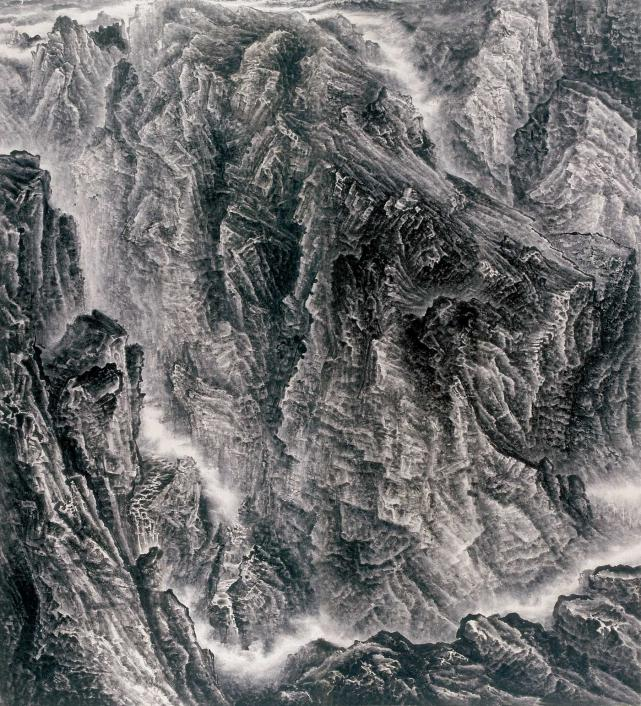
The Rise 250x200cm
Sage’s Domain (Partial)
The Way with Art (Partial)
The Way of Clouds (Partial)
Spring Tide (Partial)
Mist and Clouds in Mount Huangshan (Partial)
Road Between Mountains (Partial)
Three Gorges of the Yangtze River (Partial)
The Poetic Conception of Travel Notes in Peach Blossom Land (Partial)
World After Snow (partial)
Laozi’s Entry (Partial)
Fuchun River in Mist and Rain (Partial)
Dwelling in the Fuchun Mountains (Partial)
To Moor at Night at the Maple Bridge (Partial)
Mengxi Garden (Partial)
Sketches
Sketch 46x34cm
Sketch 46x34cm
Sketch 46x34cm
Sketch 46x34cm
Sketch 46x34cm
Sketch 46x34cm
Guiding Organization
Zhejiang Art Museum
Guangdong Art Museum
Sponsor
Li Keran Academy of Painting
Zhejiang Xiao Feng-Song Ren Academy of Art
Organizer
Art West Lake·International Ink Wash Exhibition
Shenzhen Lai Zhigang Jimo Landscape Painting Culture and Art Development Co., Ltd.
Exhibition Period
April 6th - April 19th, 2023
Exhibition Address
Exhibition Hall 4/5/6 of Zhejiang Art Museum
Artron Special Report | Lai Zhigang’s Wonderland and Universe of Ink
Time: 2023-04-09 Source: Art Headlines
On April 8, "Pioneer of the Times – Exhibition of Lai Zhigang’s Ink Art " was launched at Zhejiang Art Museum. After holding several art exhibitions on both sides of the Taiwan Strait and abroad, Lai came to the West Lake again with his “wonderland of ink”. When the beautiful scenery and ink paintings complement each other, Hangzhou ushers in a high-standard ink art exhibition in the most beautiful spring.
Mr. Lai’s works are magnificent and majestic, adhering to the purpose of Chinese painting and maintaining the right path inherited from tradition. He not only showed the audience five thousand years of Chinese history, but also conveyed the spirit of today’s times. During his 40-year artistic journey, Lai persisted in exploring traditional accumulated-ink painting methods, absorbing the rich artistic essence from masters such as Mi Fu, Gong Xian, Huang Binhong, and Li Keran. By learning form the strengths of all the masters and integrating the past and the present knowledge, he finally came out with his unique painting style of "vigorous, strong and majestic".

Opening Ceremony
With art, he touches the true nature of life, adheres to the simple and honest creation, insists on the morality of art for the people in his daily pursuit, and interprets vivid ink rhyme in his tenacious works. He not only resonates with the audience visually, but also arouses their emotions about the value of life. In fact, he is announcing the vigorous vitality of Chinese art to the world, and he is indeed a rare example in the contemporary art world.
The exhibition is guided by Zhejiang Art Museum and Art Museum of Guangdong, co-sponsored by Li Keran Academy of Painting, Zhejiang Xiao Feng-Song Ren Academy of Art, and undertaken by International Ink Art Expo and Shenzhen Lai Zhigang Jimo Landscape Painting Culture and Art Development Co., Ltd.
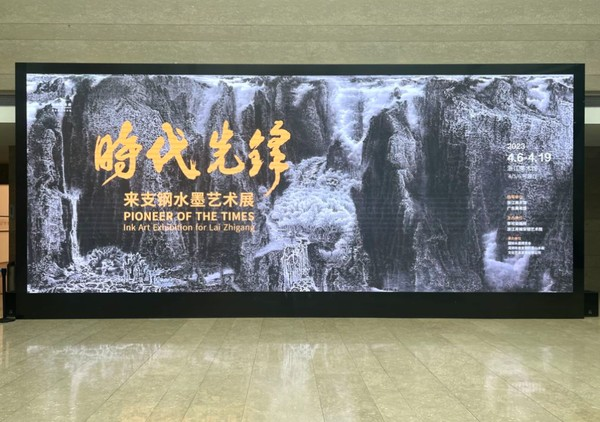
Pioneer of the times
Qin Zhigang, Former Vice Chairman of China Federation of Literary and Art Circles; Chen Jiayuan, Former Vice Chairman of Zhejiang Provincial Political Consultative Conference; Sheng Changli, Former Vice Chairman of the Zhejiang Provincial Political Consultative Conference; Sun Wenyou, Former Vice Chairman of the Zhejiang Provincial Political Consultative Conference; Zhao Guangyu, Former Vice Chairman of CPPCC Hangzhou Municipality; Yang Jianxin, Former Director of Zhejiang Provincial Department of Culture; Tian Yuyuan, Former Party Secretary of Zhejiang Federation of Literary and Art Circles; Jiang Jiandong, Former First-Level Inspector of Zhejiang Federation of Literary and Art Circles; Wu Jiaxi, Deputy Secretary, Deputy Director and First-Level Inspector of Zhejiang Provincial Bureau of Statis-tics; Ye Min, President of Hangzhou Convention and Exhibition Industry Association and Former Deputy Secretary-General of Hangzhou Municipal Government; Gao Fagen, Former Vice President of China Academy of Art; Ying Jinfei, Director of Zhejiang Art Museum and Vice Chairman of Zhejiang Artists Association; Guo Peijian, Executive Director of Zhejiang Xiao Feng-Song Ren Academy of Art; Pi Daojian, Deputy Director of the Curatorial Committee of the China Artists Association and A Famous Critic; Huang Jun, Dean of the School of Art Management and Education, China Academy of Art; Ren Daobin, Former Dean of the School of International Education, China Academy of Art; Zhou Gang, Professor and Doctoral Supervisor of China Academy of Art; Shan Zeng, Professor of China Academy of Art, Deputy Dean of School of Art Education and Management; Yin Shula, Coordinator of This Exhibition and Former Director of the Collection Department of Zhejiang Art Museum; Si Wenge, Director of the Fine Arts Center of China Academy of Art; Huang Heqing, Professor of the School of Art and Archaeology, Zhejiang University; Li Xiaofeng, Curator and Associate Professor of the Academy of Fine Arts, Shanghai University; Han Licheng, Former Director of Ningbo Art Museum; Tao Wenjie, Vice Chairman and Secretary General of Zhejiang International Art Exchange Association; Yang Dawei, Professor of School of Design Art, Zhejiang Institute of Communication; Wei Xiangqi, Associate Research Librarian of the National Art Museum of China; Ling Haiheng, A Professor At the School of Foreign Languages and Cultures, South China Normal University; Jiang Jun, Art Critic ; Wang Shaoqiu, Director of Wang Shaoqiu Art Museum ; Xiong Delong, Founder of International Daily and Chairman of Xiong’s Group; Wen Changqing, Chairman of Shenzhen Lai Zhigang Art Center; Zhou Weiguo, Chairman of China Aisa Group; Xie Zuosheng, Vice President and Secretary General of Zhejiang Cultural Industry Association; Wang Ji, Chief Curator and Secretary-General of West Lake Art Fair; Wang Xuedong, Chairman of Shenzhen Guoyin Leasing Co., Ltd.; Dai Jie, Editor-In-Chief of Hong Kong Commercial Daily; and other guests came to the opening scene.

Speech by Guo Peijian, Executive Dean of Xiao Feng-Song Ren Academy of Art
Guo Peijian, Executive Dean of Xiao Feng-Song Ren Academy of Art, delivered a congratulatory message to the exhibition as the representative of the organizer. Dean Guo first conveyed the congratulations of the Dean Xiao Feng to this exhibition: "Pioneer of the Times - Exhibition of Lai Zhigang’s Ink Art" is an exhibition based on traditional creative art, and it is a good time and a good place to exhibit beautiful works. Guo Peijian stated that the title of this exhibition "Pioneer of the Times" was chosen by the Dean Xiao Feng. Mr. Xiao has always attached great importance to the cultivation of artistic humanism, paying special attention to the environment of artistic creation, especially the healthy development of art and the awareness of innovation. Once art leaves innovation and creation, it loses its life. The inheritance and development of Chinese painting is an eternal topic and an eternal driving force. In the end, Dean Guo highly praised this art exhibition for bringing forth the new through the old, the harmony of inheritance and development, and the integration of experiment and inspection.
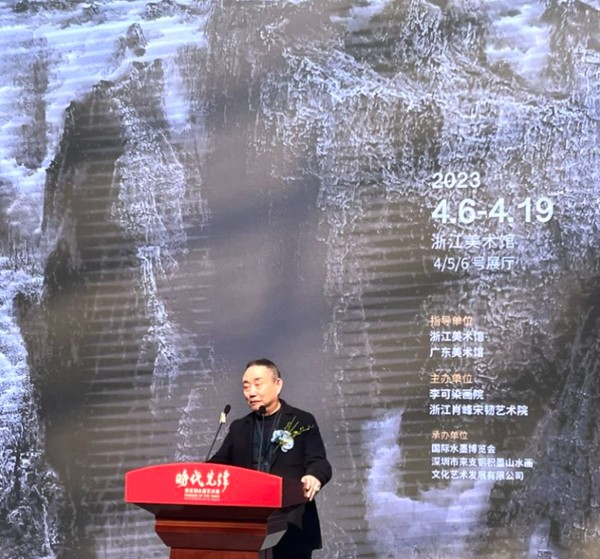
Speech by Mr. Pi Daojian, a Representative of the Special Guest and the Famous Art Critic
Mr. Pi Daojian, a representative of the special guests and a famous art critic said that Chinese painting is a wonderful art form dedicated by the Chinese nation to world art, and Chinese landscape painting is one of the forms with the highest artistic achievements and a large number of masters. The esthetician and philosopher Li Zehou said that Chinese landscape painting is a symbol of the essence of Chinese culture. Through Accumulated-ink landscape paintings, Mr. Lai has well inherited the ideas of "reflecting Tao through form" and "harmony between art and philosophy" in traditional Chinese painting theory. Mr. Pi said that he felt that it was very difficult for Chinese painting to break away from the tradition, and it required courage and wisdom. Lai also doubted whether Chinese brush and ink could move forward. But in the end, Lai used his own practice to create a profound and majestic realm that meets the aesthetic wishes of modern people. This is Mr. Lai’s counterattack to such remarks as "Chinese paintings can only be appreciated in museums", and he proves that Chinese paintings have no creative bottlenecks and can open a new chapter.
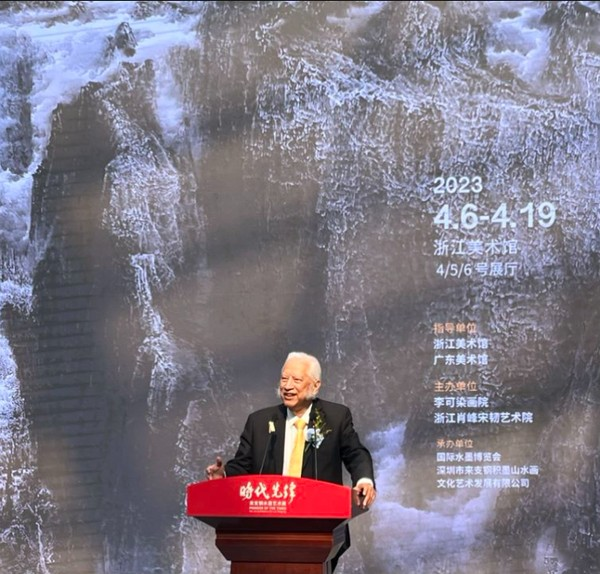
Speech by Mr. Xiong Delong, founder of International Daily and chairman of Xiong’s Group
Mr. Xiong Delong, founder of "International Daily" and chairman of Xiong Group, said that this is a very historic exhibition, and shared his experience of coming to Hangzhou to the guests present. Due to physical reasons, he couldn’t take a plane, so he took a car for more than ten hours to attend the opening ceremony, but the lively scene immediately cheered him up. Then, Mr. Xiong praised Mr. Lai’s works from the perspective of cultural exchanges between China and foreign countries.
He believes that, just like China’s ping-pong diplomacy in the 1950s, Mr. Lai can also sweep the world with ink painting in Chinese culture. This is a good opportunity to conduct people-to-people diplomacy in the most friendly way, use cultural soft power to enhance comprehensive national strength, and demonstrate the wisdom and accumulation of the Chinese nation to overseas Chinese at home and abroad and foreigners all over the world.
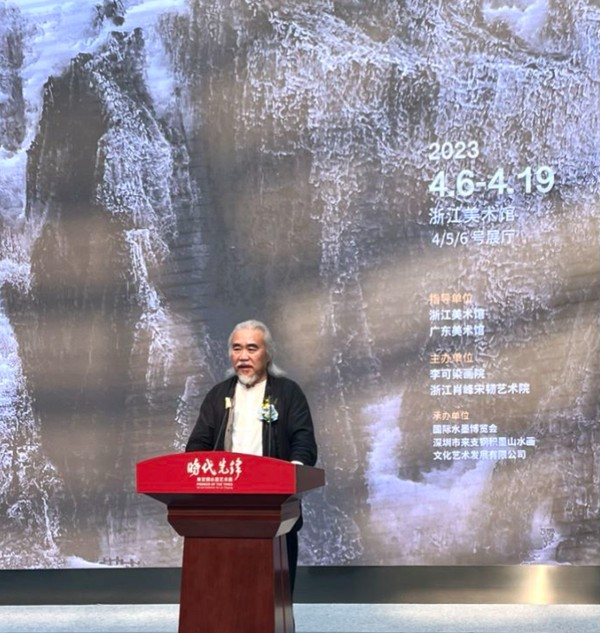
Lai Zhigang, the artist
The protagonist of this exhibition, Lai Zhigang, said that in his many years of painting practice, his greatest experience is the understanding of Tao, which seems to be an invisible force supporting his painting. In the end, Mr. Lai thanked all the guests for their support with a pun "my words are in the picture".
Launching Ceremony
At the end of the opening ceremony, Qin Zhigang, Former Vice Chairman of China Federation of Literary and Art Circles; Chen Jiayuan, Former Vice Chairman of CPPCC Zhejiang Province; Sheng Changli, Former Vice Chairman of CPPCC Zhejiang Province; Sun Wenyou, Former Vice Chairman of CPPCC Zhejiang Province; Founder of International Daily; Xiong Delong, Chairman of Xiong’s Group; and Mr. Lai Zhigang jointly launched the exhibition.
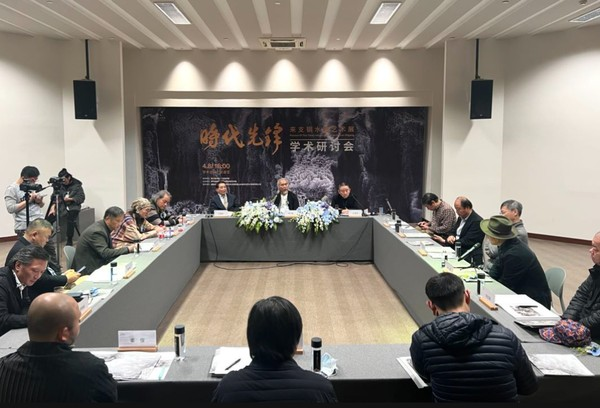
Seminar site
Pi Daojian, Deputy Director of the Curatorial Committee of the China Artists Association, A Famous Critic (Academic Chair); Gao Fagen, Former Vice President of China Academy of Art; Ren Daobin, Former Dean of the School of International Education, China Academy of Art; Zhou Gang, Professor and Doctoral Supervisor of China Academy of Art; Yin Shula, Coordinator of This Exhibition, Former Director of the Collection Department of Zhejiang Art Museum; Shan Zeng, Professor of China Academy of Art, Vice President of School of Art Education and Management; Si Wenge, Director of the Fine Arts Center of China Academy of Art; Huang Heqing, Professor of School of Art and Archaeology, Zhejiang University; Li Xiaofeng, Curator and Associate Professor of Shanghai University Academy of Fine Arts; Wang Shaoqiu, Director of Wang Shaoqiu Art Museum; Tao Wenjie, Vice Chairman and Secretary General of Zhejiang International Art Exchange Association; Yang Dawei, Professor of School of Design and Art, Zhejiang Institute of Communication; Cai Shunong, Chief Reporter of China Art Weekly; Wei Xiangqi, Associate Research Librarian, National Art Museum of China; and Jiang Jun, Art Critic attended the seminar.
Wonderland of Ink
Appreciating Mr. Lai Zhigang’s paintings, one always experiences a process from surprise and joy to being touched and resonating.
In his poems, Shi Tao once praised the marvelousness of infinite changes in ink painting in monochrome. Mr. Lai likes heavy ink, but he can highlight the details in the majestic, including the convex and concave of the rocks, the gray and dark changes of the light, the distinct layers, and the clear thickness transition. From Gong Xian’s "point-based accumulated-ink", to Huang Binhong’s "line-based accumulated-ink", to Li Keran’s "plane-based accumulated-ink", Lai’s "accumulated-ink" has gathered and integrated the strengths of the three masters, and is appraised as “the culmination of point-line-surface painting techniques developed in the past three hundred years” (Chen Chuanxi). Just like Li Keran’s "accumulation of ink into jade", Lai’s "accumulation of water into jade" uses colorless water to amplify colored ink, thus enriching the layers of ink. When the ink is further purified in the water, a transcendent artistic conception is produced, interpreting the spirit of immortals and the truth between heaven and earth.
As a technique and vocabulary of landscape painting, accumulated-ink is a stumbling block in the way of painting, and most painters are unwilling to touch it. When Lai was studying painting at the Central Academy of Fine Arts, he declined the advice of his teachers and painting friends, and unswervingly followed the road and finally made amazing achievements. Connoisseurs claim that his works have surpassed the "little beauty" for viewing only, and have risen to an inspiring and interactive aesthetic realm.
In recent years, Lai Zhigang has attracted much attention in the Chinese painting circle, and has been affirmed or highly praised by dozens of industry authorities, who believe that he has pushed traditional Chinese ink and landscape painting to another artistic peak. Xiao Feng, the Former President of the China Academy of Art, believes that "his landscape paintings have played a milestone role"; Lu Yushun, President of the China National Academy of Painting, commented on him as "an artist with innovation and creation"; Famous art critic Chen Chuanxi called his works "majestic enough to sweep the world, and majestic enough to overwhelm the past and present"; Wang Dingqian, a senior collector in Taiwan, said, “Just as Zhang Daqian is the first person to splash ink in China, Lai Zhigang is the first person to accumulated-ink.” Ms. Zou Peizhu, Mr. Li Keran’s wife, inscribed "Inheritance and Development" specially for him.
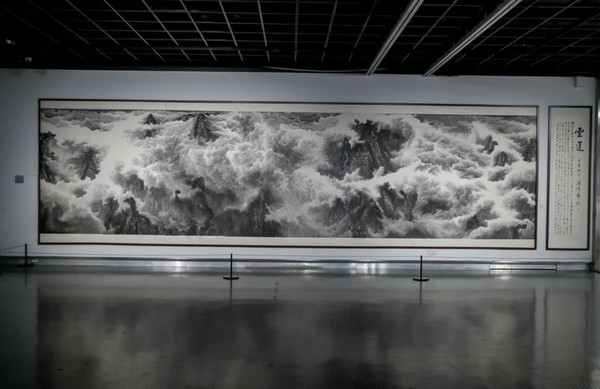
Lai Zhigang, an artist from Bengbu, Anhui, gallops like a dark horse in the world of brush and ink. At times he charges fearlessly as if in battle, at other times he influences the viewer with his contemplation. With the arbitrary conversion between dynamic and static, this style can be called the pioneer of the times. Xiao Feng, the Former President of China Academy of Art, Consultant of China Artists Association, President of Zhejiang Xiao Feng-Song Ren Academy of Art, and Consultant of Xi’an Municipal People’s Government, believes that in pursuing the innovation and development of painting, Lai uses the concrete color, shape and meaning of ink to show the scenery, inspiration and epiphany originating from nature. Therefore, his creative process and his works are always integrated with his own state of mind, showing his creative intentions from the outside and inside, and striving for the mutual understanding and harmony of existence and consciousness. In his clear sky, elegant clouds, rolling mountains, ethereal environment and magnificent imagination, there is the spirit of Chinese painting, the advantages of ink painting, and the harmonious aesthetics of the unity of appearance and interior, all of which belong to his Lai-style landscape. Such a transformation and breakthrough from the routine and stylized painting tradition is undoubtedly in line with the essence and law of the eternal innovation and development of art. The emergence of this new painting style that fully demonstrates the tension of ink and wash is ultimately derived from the development of the times and the progress of civilization, which has brand-new significance and is worthy of joy.
For a long time, Lai has been walking his own path firmly according to his own will. He is as innocent as a child, as transparent as a wise man, and has a purer spiritual freedom than most people. Reading his paintings, one can feel the charm of the quiet scenery in spring described by Sikong Tu. Seeking transcendence from within the endless tradition, he learns from the ancients on the one hand, and innovates on the other hand. He can not only shape the universe, but also portray everything. His panoramic landscapes contain active subjects, free viewing, and overall construction, presenting a transcendent landscape summed up after visiting the entire world. When depicting parts, he shows a free and complete "sense of the world", for example, a certain section of clouds is locked at the foot of the mountain, and a certain section is clear again, with the setting sun shining at dusk. From the thousands of rivers and mountains on the long scroll to the boundless artistic conception in the sketches, they all interpret his extraordinary understanding and integration of art.
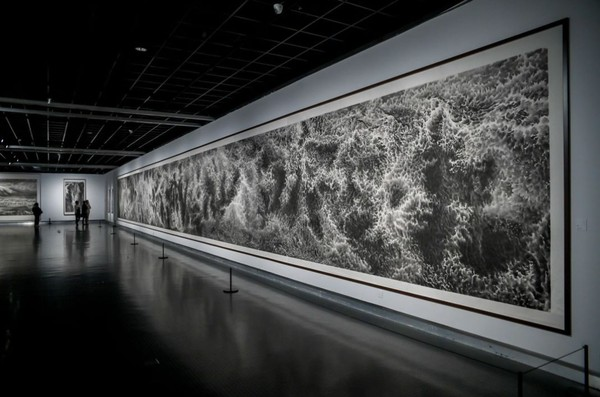
Huang Binhong believes that what is really profound and gorgeous is not just the accumulation of ink, but the national character, which is supporting behind the aesthetics of ink painting. Pan Tianshou clearly pointed out that "the art of a nation is the crystallization of the spirit of a nation. Therefore, the revitalization of national art is closely related to the revitalization of national spirit." Lai’s works are clear, strong, and upright, with both a majestic spirit and a vigorous atmosphere of the new era. Based on the profound accumulation of painting techniques, he uses concepts such as body structure, block surface analysis, and perspective levels to create solid, calm, agile, and elegant effects. On limited drawing paper, his rhythmic brushes and inks continue to expand his infinite feelings, giving viewers unprecedented visual shock and enlightenment.
As life goes on, so does exploration. Mr. Lai Zhigang never stopped chasing after painting, and finally found his way of life.
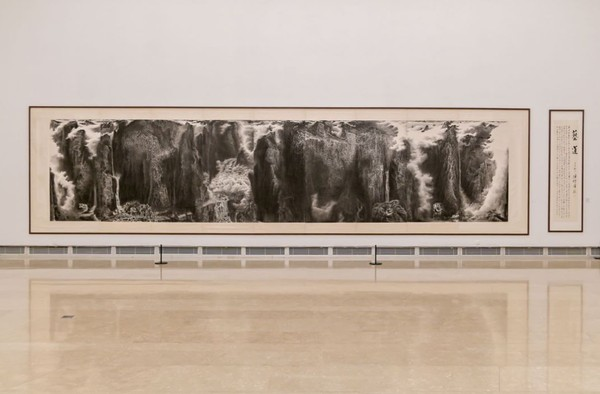
Exploring the infinite in the finite
Exploring the infinite in the finite contains the spirit of the ancients’ pursuit of a higher realm, and it also carries the spirit of modern people’s exploration of the vast universe.
Chinese landscape painting contains a unique concept of the universe and philosophy of life. Lai’s artistic creation is never limited to one technique or technique, but uses art as a medium to explore the broader sky and sea. In a limited space, he learned from the world, taking time as a reference, using mountains and rivers as boats, accompanying plants and trees, seeking from the heart, and doing right things with righteous thoughts.
The soul of Chinese painting and calligraphy begins with traditional Chinese knowledge, which makes it easier for Lai, who has a solid foundation, to tirelessly pursue the highest aesthetic ideal. In his opinion, the relationship between ink and wash in Chinese painting is that water comes first and ink follows. Water is "nothing", ink is "existence"; "everything in the world is born from "existence", and "existence" is born from "nothing", so "everything is born from nothing". Lai takes the Taoist philosophy of Laozi and Zhuangzi as his spiritual core, and expresses the ever-changing world with ink and wash.
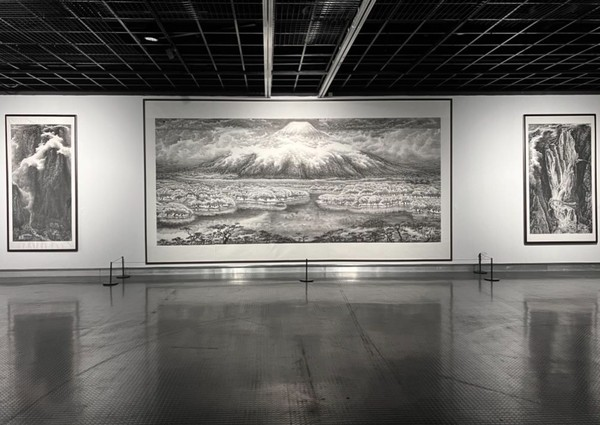
Knowing white and keeping black, manipulating black and arranging white form Lai's unique artistic aesthetic system of painting, which embodies the law of "the combination of yin and yang to form Tao". Black as "a crow drills into the night" and white as "a egret resting in the snow", the meaning and rhyme of the black and white world are endless like this. "Simplified to the extreme, it is yin and yang, and when it is formed in ink, it is black and white." "Tao is the foundation of ink, and ink is the application of Tao." "Ink and wash are based on Tao." Lai’s works are just like his painting ideas.
Lai Zhigang seeks enlightenment from art, and pursues truth from phenomena. If he is not creating in the studio, he is sketching in nature, often wandering among country lanes, famous mountains and rivers, absorbing the essence of heaven and earth, and gathering the aura of the sun and the moon. He has grasped the law of "change" in nature, and changed again and again in painting to solve the problem of ink change. In Lai's world, the heaven, earth and all things are in one stroke.
The clouds are changing, the water is changing, the mountains are changing, and all changes are due to the changes of ink and wash. Just as the painter Song Bing of the Southern Dynasty said, sages can transform external appearances and internal philosophies. Starting from his profound accumulation, Lai uses the profound oriental cultural connotation to form a beautiful way of infinite space, infinite volume and infinite energy. "Tao comes to the top, art comes to the bottom". Lai's technique is almost integrated with the Tao, and the use of brush and ink "has no trace of beginning and end", which seems to be a natural creation.
Lai, who considers himself talented, never draws drafts in his creations, and draws as he pleases with a brush, because he can listen to the sounds and inspirations of nature by keeping his inner peace. In his creation, the strokes are thrilling, unexpected everywhere, like a runaway horse, crossing dangerous shoals and rapids. Walking on the "Tao", he "followed the only way", and survived several desperate situations, so in his paintings, there are many wonders and scenic spots beyond imagination.
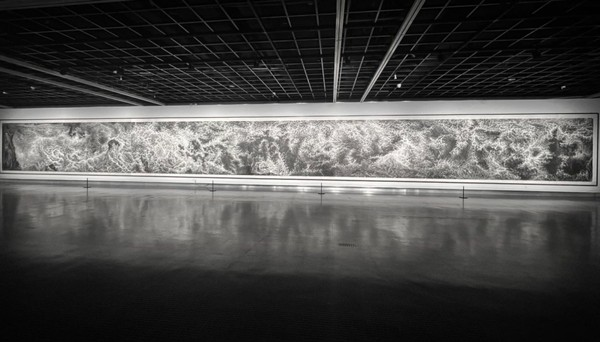
Everything he can paint, be able to paint, and be able to complete the painting are all the results of following the Tao and individual manifestations in endless changes. Human's wisdom is limited, and only with the help of Tao and merging with Tao, can we reach the artistic conception before the brush and give people more room for imagination. "You can't see the head when you greet it, and you can't see the back after it", it is there when viewed from a distance, but not when stroked up close. He often said: "I paint half, but God gives the other half."
As the ancient painter Jing Hao said, "Forget the brush and ink to have the real scene." Once a person maintains the innocence in spirit and personality, he has already walked on the Tao, but he is in the Tao without knowing it. "The Tao is the simplest, and then endless changes are derived." Lai "controls the complexity with simplicity", just like the creator, he creates works with a new look from time to time. It can be summed up in several words, that is, "use Tao to control ink, and ink to carry Tao".
Taking painting as his training ground, Lai constantly improves himself, understands the laws of heaven, and pursues the realm of "unity of man and nature". Every time he paints, he keeps quiet, forgets all the external environment including himself, and concentrates his energy on the paper and ink. This is a manifestation of taking goodness as beauty and reaching the other shore of thinking through tranquility. Zhuangzi said that "without any distracting thoughts, one will realize the Tao and gain wisdom". Only in a state of innocence can a painter finds the origin of art and exert the limit of art. Only by forgetting yourself can you reach the realm of sages.
“Not angling for compliments, I'd be content to let my integrity fill the universe” (Wang Mian). Chinese painting is the artistic confidence of the Chinese nation and the most important cultural relic of oriental civilization. Lai is really good at inspiring national confidence and pride with his work.
A philosopher said that the essence of each nation supports the backbone of the world. Lai, who seizes the opportunity in the wave of the new era, will surely write a new chapter in the world art hall.
The Message in the Mist and Waves - "Pioneer of the Times” Exhibition of Lai Zhigang’s Ink Art wa
Time: 2023-04-09 Source: China Art Weekly
The more difficult it is, the more I have to face it. I like roads that are hard to walk, dare not to walk, or must not be taken for others, and I have to fight through the thorns with an ax in hand, all the way to the top!
——Lai Zhigang
When spring begins to paint on the lake, on the afternoon of April 8, "Pioneer of the Times – Exhibition of Lai Zhigang’s Ink Art" and the works seminar were held in Zhejiang Art Museum. Qin Zhigang, Former Vice Chairman of the China Federation of Literary and Art Circles; Chen Jiayuan and Sheng Changli, Former Vice Governors of Zhejiang Province; Sun Wenyou, Chairman of the Friends of Poetry, Calligraphy and Painting Society of the Zhejiang Provincial Political Consultative Conference; Xiong Delong, chairman of the Xiong Group; and Lai Zhigang, the owner of the exhibition, came to the rostrum to jointly launch the opening of the art exhibition, presenting a pure, vigorous and romantic visual feast to the audience, as if blending into the natural spring tide of Hangzhou and stirring up the waves of ink painting.
Opening Ceremony
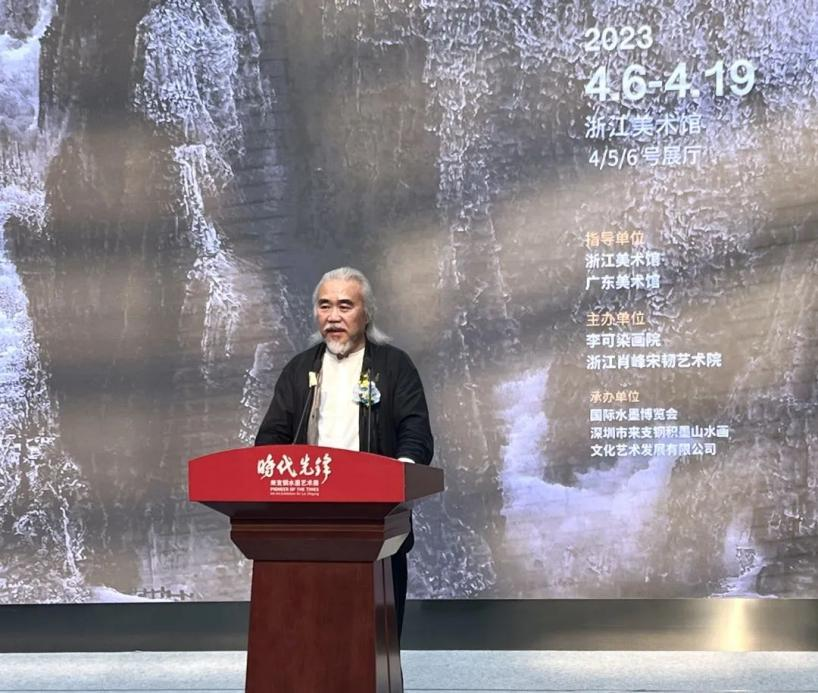
Lai Zhigang
With white hair, white beard, and black eyebrows, Lai Zhigang in his sixtieth is a native of Anhui, the hometown of many painters. He embarked on the road of art at the age of 12. In 2002, he was admitted to the graduate class of "Jia Youfu Studio" of the Central Academy of Fine Arts. In 2004, he joined the "Li Xiaoke Art Studio" of Beijing Academy of Fine Arts. Persisting in learning through hard work, he regards mist, cloud, river, and sea as important symbolic elements in artistic creation, and controls dot dyeing, rendering, covering dyeing, shade, thickness, and weight based on the method of accumulated-ink. His works are like fine wine, which makes people intoxicated by the mountains and rivers. There is color in color, ink in ink, delicate and bold strokes, lush and deep charm, endowing form with life and emotion, which once again proves that there are still many possibilities and rich discoveries in the rhetoric of ink and wash in Chinese painting with strong philosophical meaning. Xiao Feng, Former President of China Academy of Art, praised Lai as “Lai’s work is based on the logic of Chinese painting’s rules of ink layout. Within this framework, he tries to pursue the original flavor of the ink image, which is the core of his artistic concept, with his unique accumulated-ink technique. Accumulated-ink is of extraordinary importance to him, as this is the way he has found to perfectly connect his aesthetic ideas with the real artistic needs. However, the display of ink images is not only based on techniques, but also inseparable from artistic thinking and logical planning.” In Lai’s ink and wash, the unconscious consciousness of traditional Chinese painting is an experiment in poetic space beyond the experience of landscape, and it is an eclectic way of breaking away from the "specimen" painting method. He combined the advantages of Fan Kuan, Mi Fu, Gong Xian, Huang Binhong, Li Keran, Jia Youfu and other ancient and modern landscape masters. While focusing on "pioneering", he abandons the overly shocking and abstract parts, and inherits the past, keeps the integrity and innovates, and is full of "a state, an atmosphere, a fire, and a great beauty" controlled by rationality (Liu Xilin). This kind of free will and inner expression is very touching.
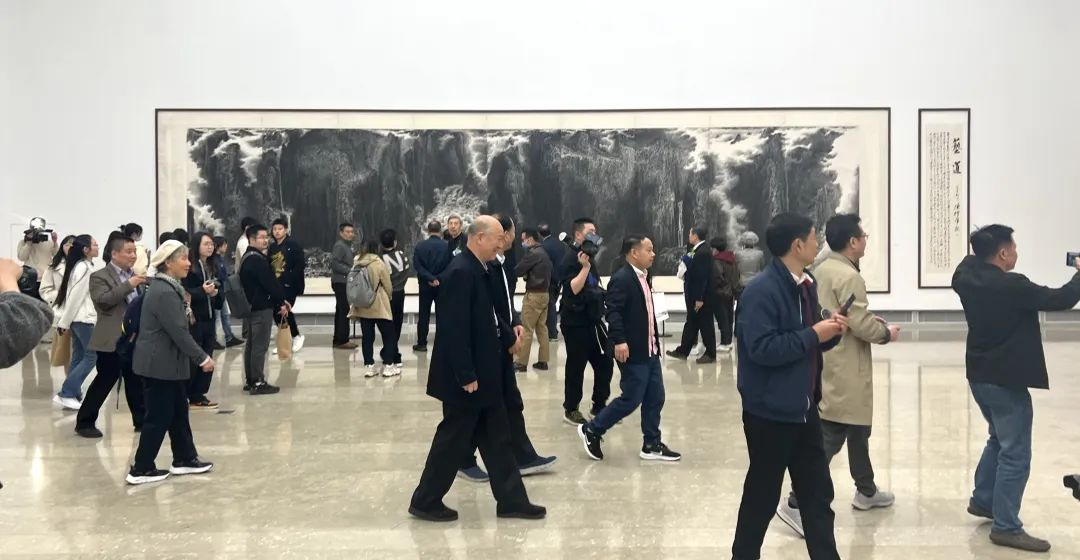
Exhibition site
Learning from the ancients and advancing with the times, the brushwork and ink techniques of Chinese painting are fundamental to distinguish them from Western paintings, and they have always been open to change. The ink shapes poured on the paper are all centered around the smoke, clouds and rays of the accumulated ink method. Mountains, rivers, bridges, pavilions, vegetation, snowy, moon, people, and boats are all dense and well-arranged. With bright and dark, cold and warm, and freshness and strangeness embracing each other, both the form and rhythm are advancing step by step. Among Lai’s well-ordered ink works, the strong ones have the momentum of Mount Tai and Yellow River, and the elegant ones have the indifference of autumn sky and clouds, not to mention his huge works using 1 liter of ink. Avoid roughness and oppose mediocrity. His ink marks with clear layers are harmonious with each other, gentle but tough, which can only be achieved by a master of ink.
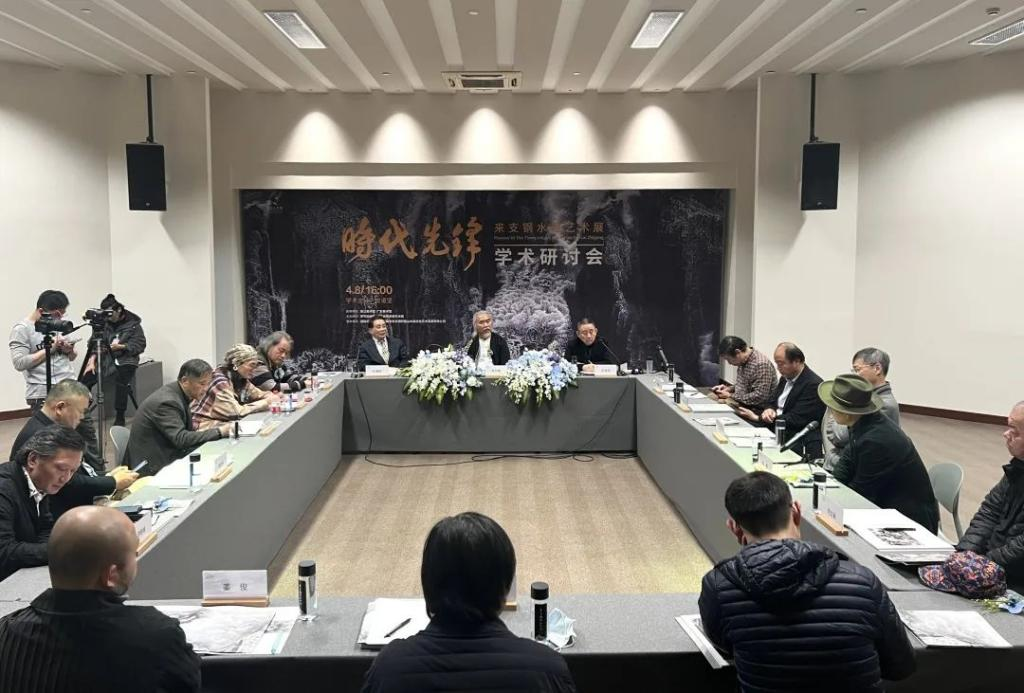
Seminar site
The seminar hosted by Pi Daojian, the deputy director of the Curatorial Committee of the China Artists Association and the famous art critic, is based on the principle of pragmatism. Lai Zhigang’s large-scale landscape paintings that are transparent, faint, refreshing, quiet, tense but slightly flawed have once again aroused heated discussions. Ren Daobin, Gao Fagen, Zhou Gang, Huang Heqing, Yin Shula, Shan Zeng, Tao Wenjie, Si Wenge, Yang Dawei, Li Xiaofeng, Wang Shaoqiu, Wei Xiangqi, Jiang Jun all expressed their views bluntly and the atmosphere remained active. Facing the endless clouds and mountains and the vast river, Lai Zhigang set up a unique ideal of sketching that is different from Zhejiang landscape painting. Walking on the west side of the river, the northern part of the Yangtze River, and the central plains in the southwest, he described the quiet and dynamic mountains and rivers with a kind of piety and sanctity that matched the times. There are mountains on the mountains, and clouds on the clouds, like a mysterious breath, as if there is a message conveyed between the water mist and the waves as described by Li Bai.
Part of Lai Zhigang’s works
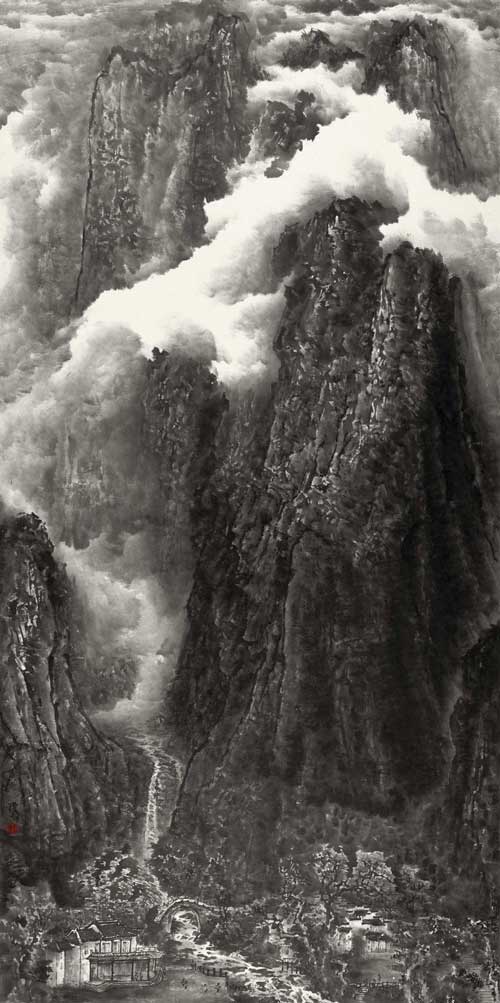
On Exhibition | Fang Jinlong’s Cross-border Dialogue with the Master of Ink and Wash in the “Melo
Time: 2022-07-11 Source: South Plus
What you see is the rhythm in the ink, and what you hear is the color on the string. On the afternoon of July 10th, a special dialogue between ink painting and Chinese music was staged at the Guangdong Art Museum. Fang Jinlong, a master of Chinese music, brought bone yue (an ancient wind instrument), guqin, chiba (shakuhachi in Japanese) and five-stringed pipa to the Guangdong Art Museum, and performed in front of the landscape paintings of Lai Zhigang that are on display.
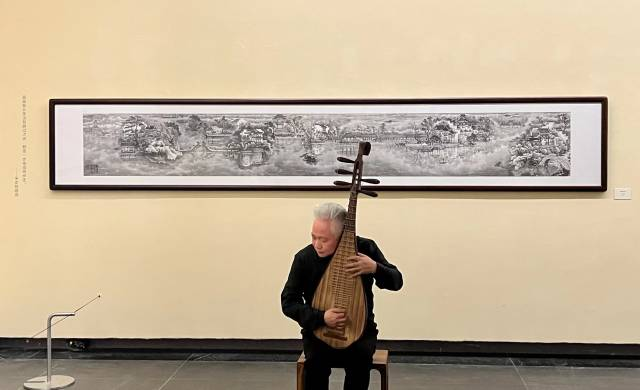
In front of Lai Zhigang’s large-scale Spring Tide, Fang Jinlong played the Tide in his mind with the yue, an ancient musical instrument from the Central Plains dating back 8,800 years, showing the magnificent scene from the trickle converging to the sea. For Lai’s poetic landscape painting, he performed the Lingnan tune Springing Fountains with guqin. For the large-scale Road Between Mountains, he used chiba to describe the continuous interweaving of mountains, water and clouds. Facing Mengxi Garden, he ended the narration of the music with the pipa tune Reminiscence of Jiangnan, and unfolded a picture scroll of Jiangnan gardens with stone paths and carved walls surrounded by streams.
Painting with strings and composing with ink. In this cross-border dialogue titled "Meeting Fellow Countrymen in Color and Melody", musical instruments and painting brushes ensemble to show like-mindedness and mastery in art.
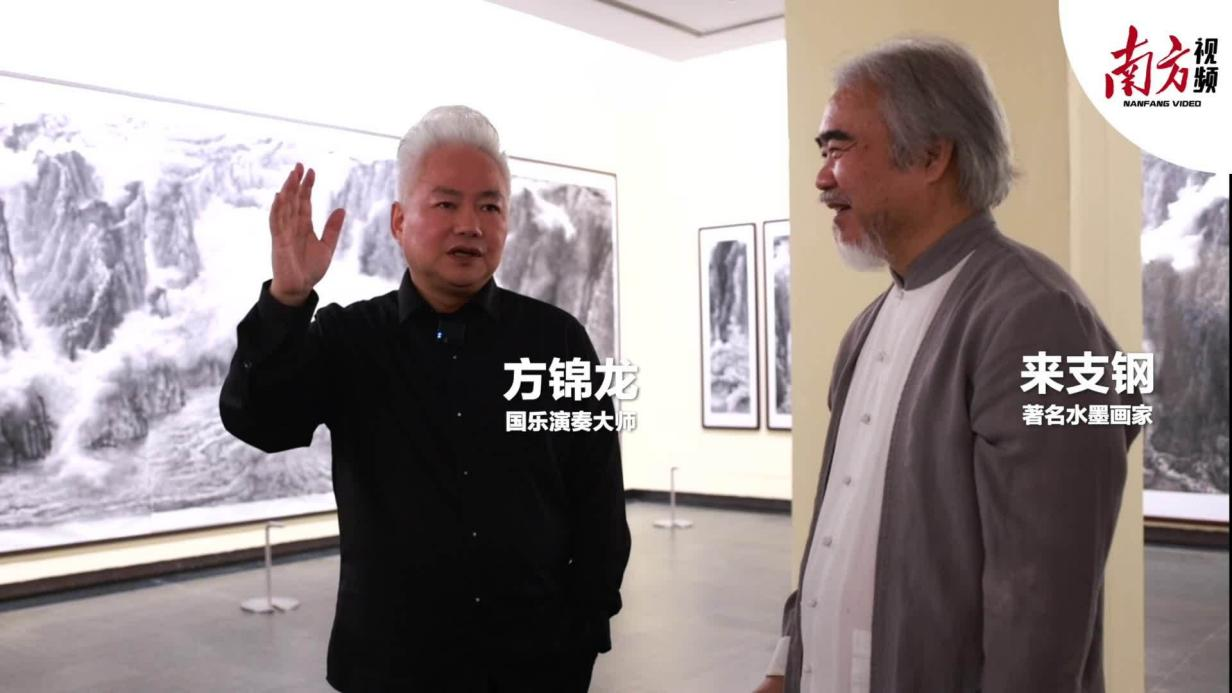
“We’re both old-fashioned and learning through hard work”
Fang Jinlong and Lai Zhigang were born in Anhui Province in the same year, and both lived in Lingnan for many years. Even more coincidentally, both of them adhere to the traditional concept of learning through hard work.
Dedicated to classical musical instruments for nearly 50 years, Fang Jinlong has brought traditional Chinese musical instruments to the modern stage, and has millions of followers in Bilibili. For more than 40 years, Lai Zhigang has painstakingly studied the painting method of “accumulated-ink”, and learned from the experience of Gong Xian, Huang Binhong, Li Keran and other predecessors during his trek, and finally promoted the ink color from "five shades" to "infinite change".
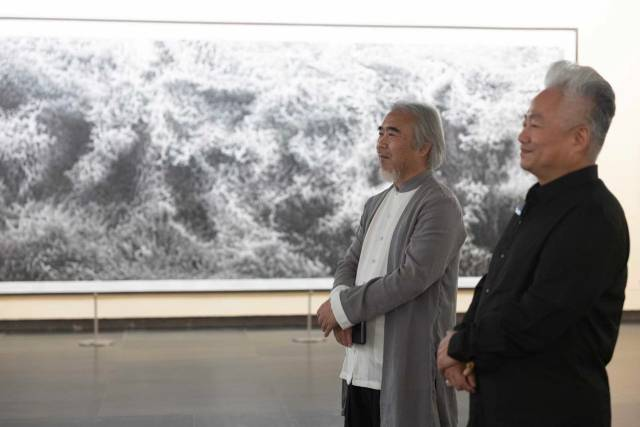
In the large-scale landscape painting The Way with Art, Lai displays his decades of learning and research on the painting techniques of Fan Kuan, Li Tang, Gong Xian, Huang Binhong, Li Keran and other masters of the past dynasties on the twelve connected screens. Art critic Chen Chuanxi commented that this is "the culmination of point-line-surface painting techniques developed in the past three hundred years, showing the charm of nature and the philosophical thinking between heaven and earth."
Fang resonates with the experience of "using the greatest strength and ability" to go deep into the tradition. He has been practicing pipa since he was 6 years old, getting up at four o’clock every morning, practicing for more than ten hours a day, and persisting for decades until now. "We are all doers," Fang said. "We are not born with abilities, but we have truly come from tradition step by step."
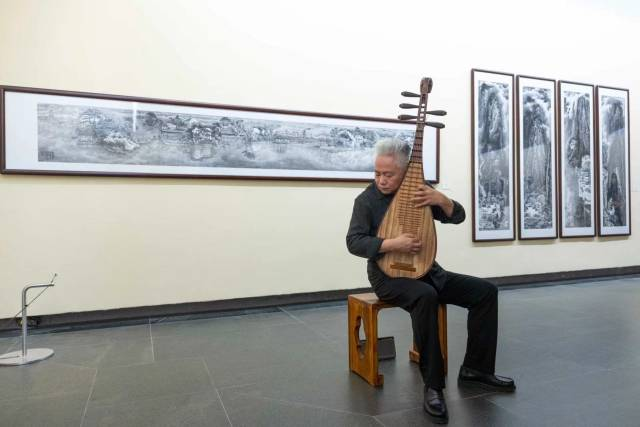
Mengxi Garden, Lai Zhigang
Find myself in "change" and "live"
Fang quite agrees with Lai’s description of his painting. “The core of my creation is ‘change’ and ‘live’,” Lai said. “Vivid in spirit means that the painting is born, alive and breathing.
“From Lai’s paintings, I see his experience very similar to mine. We don’t copy the works of individual masters rigidly, but thoroughly understand the experience of many masters, and then turn them into our own language." Fang Jinlong said.
In "The Great Tide" created in 2020, Lai played the sound of the surging tide of the era with countless ink dots, ink lines and ink marks. In Lai’s view, every unforgettable experience in life is a symbol in the picture. Among the countless traces, each stroke is born from each other and restrains each other, forming a harmonious unity amidst the contradictions.
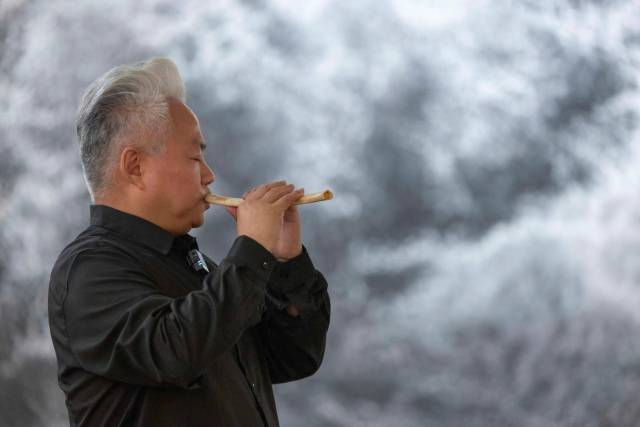
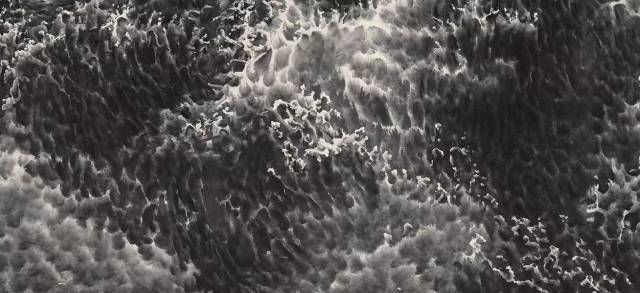
"To study tradition, in addition to knowing, reading, and understanding by analogy, we also need to be able to use it, that is, to make the wisdom of the ancients our own.” Lai likens himself to a spider who eats through the web and ignores what is outside. He believes that it is necessary to find the unchanged in the change, go straight to the theme, strip away the complexity, and grasp the truth. "Everything is obtained in tranquility, and only those who are calm can smell the fragrance. Artists must use a penetrating vision to discover the essence and find the way of art that others cannot see."
Similarly, Fang Jinlong summed up the realms of the art journey in seven words. “The first is stillness, which can generate wisdom; the second is purity, with no distractions; the third is reverence, which means being in awe of nature and tradition; the fourth is the mirror, which requires constant reflection; the fifth is the path, the direction is more important than the speed; the sixth is the realm, the pursuit of the realm; the seventh is competition, which is the cultural self-confidence based on the previous six points and the accompanying stronger competitiveness."
Dialogue
The bridge between tradition and modernity is not built in a day
South Plus: How do you two see the relationship between tradition and innovation?
Fang: Inheritance without rigidity, innovation without departing from the roots, this is what I have been following for so many years. No matter how innovative we are, the fundamental things cannot be lost. As we Chinese often say, there is no order without rules. "Change" and "live" can be boiled down to one word, which is "true". Truth is science, goodness is faith, and beauty is art.
Lai: For more than 40 years, I have been studying the tradition alone, exploring all the way from the traditional avenue of painting in the Tang and Song Dynasties. I paint every day, almost isolated from the world, and it took more than 40 years to cross the threshold of traditional ink painting. Tradition is like a training ground for me, so you see, innovations like this don’t just come out of thin air.
All my artistic pursuits can be summed up in the word "truth", grasping the true nature of things with sincerity and sharp eyes. I think the truth of the universe lies in "change", and we must grasp "change" and "live" when painting. Only with the emergence of new art styles can something with vitality be produced.
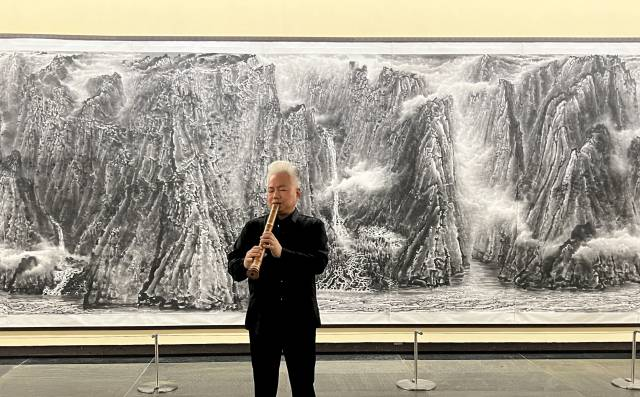
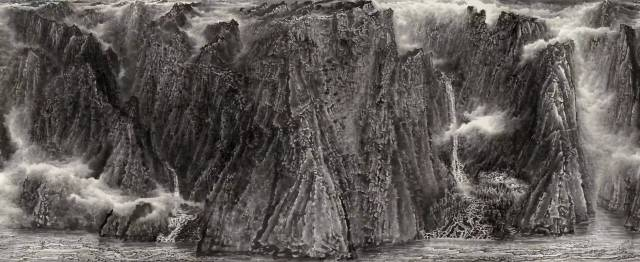
South Plus: Mr. Fang, you have attracted more attention because you brought tradition to the modern stage. What do you think about this?
Fang: In 2005, I had released more than 40 solo albums, but there was no impact. I wondered what went wrong? It suddenly occurred to me that folk music should be enjoyed with the people, so how can I make things that the people like?
I tried to intersperse the Fang-style talk show in the performance, and competed with a hundred-member Western band with my own strength, forming a kind of impact. Then I played Jasmine with the virtual character Luo Tianyi, which had a wide impact on Bilibili.
Many people wonder how many years I have been preparing for Bilibili. In fact, I’ve been preparing for over 40 years, because a lot of it takes time to build up. 12 years ago, I founded the "Fanghua 18" Women’s fashion Chinese orchestra in Guangzhou, and later founded the brand of "Four Lords of Chinese Music"...
Obviously, my current fame, like the bridge between tradition and modernity, was not created in one day, but through exploration and accumulation. Maybe we can put it another way, that what I’ve always done is bring the audience in.
Interpreting the community of shared future for mankind with Chinese music and Chinese painting
South Plus: What is the origin of the strong cultural confidence in the two of you?
Fang: In Guangdong, I participated in the creation of the brand of “The Grand Ceremony of Chinese Music”. Why isn’t it called “The Grand Ceremony of Folk Music”? Since we Chinese have Chinese literature and Chinese paintings, why can’t folk music be called Chinese music? I have researched that there was a saying of “Chinese music” in the Northern Wei Dynasty, and Cantonese music is also called Chinese music.
Among our national musical instruments, those with one-syllable names are native, while those with two-syllable names are mostly foreign, such as yangqin, pipa, huqin, suona, and konghou. So you see, we Chinese value harmony, and the harmony in diversity pursued by gentlemen is our virtue.
Since its name became familiar to the world again, Chinese music has set its ambition to go to the world. In ancient times, we learned musical instruments from different countries and turned them into our own national musical instruments, so today we need to integrate them even more. In my opinion, Chinese music itself represents and conveys the concept of a community with a shared future for mankind. When playing the 8,800-year-old bone yue abroad, I want to tell the world that we Chinese created the seven-tone scale more than 8,000 years ago, which is remarkable.
Lai: Mr. Fang and I have reached the same goal through different paths of exploring the tradition. It took me nearly 50 years, at least on the basis of the wisdom accumulated by Qi Baishi, Li Keran, and Jia Youfu, to advance the "five shades of ink" to "infinite changes with ink", and greatly promote the expressive power of Chinese ink painting.
Personally, I think that Chinese ink painting is no less powerful than Western oil painting in terms of impact, expressiveness and texture, especially in terms of expressiveness, it has greatly surpassed its predecessors. We can look forward to a new era of Chinese ink painting.
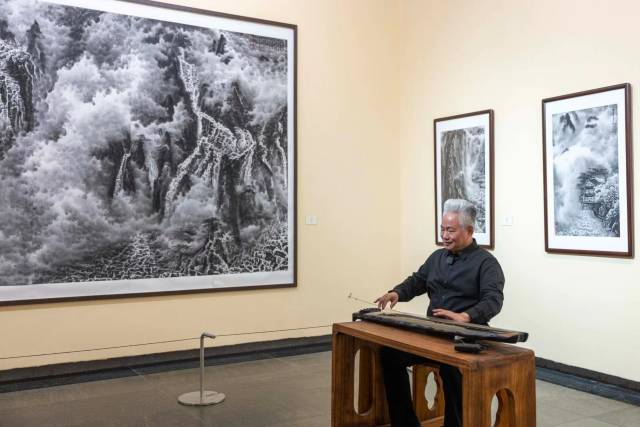
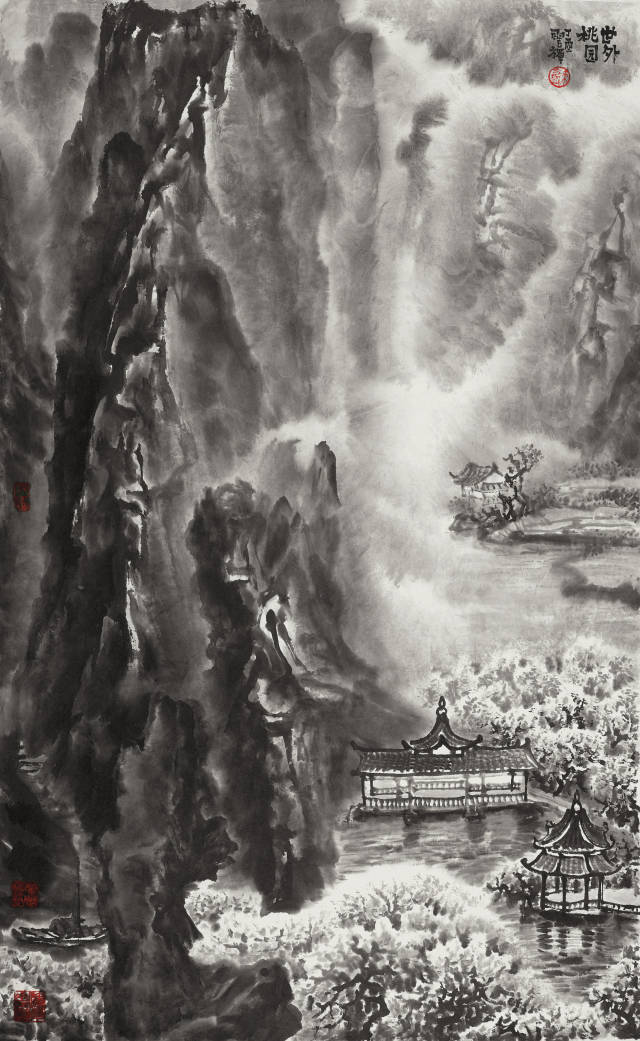
Dialogue with world music together with Dunhuang
South Plus: Having lived in Guangdong for many years, what kind of insights do you two have?
Lai: Spring water is believed to cleanse one’s mind, just like the realm of ink and wash that I pursue is spotless and clean. The half a year I live in Shenzhen every year is like living in seclusion in a bustling place. While isolating outside interference, I planted the seeds of innovation in the relatively more active social and cultural atmosphere in the south.
Fang: I came to Guangdong in 1988, and I have been looking forward to doing something for Guangdong music these years. Last year, I participated in the Guangdong Concert with the theme of "Red China, Flying Guangdong Melody", excavating and recreating the history of Guangdong’s red music. I also created tunes such as Tower and the Rhythm of Guangdong, which were very popular in the national tour.
I hope to have a dialogue with the world on behalf of Guangdong, China and Eastern culture. Recently, I am cooperating with Dunhuang to prepare for the Dunhuang Ancient Orchestra, and I plan to hold the World Pipa Festival in Dunhuang next year. The ancients named the pipa by the movements and gestures of playing it, and the scenes of playing the pipa appear repeatedly in Dunhuang murals. I hope that in the future, Dunhuang will become the capital of pipa in the world.
“Inherit and Innovation” Exhibition of Lai Zhigang’s Ink Art Was Successfully Held in Guangdong
Time: 2022-06-25 Source: Painting and Calligraphy Chann
Entering the beautiful exhibition hall of Guangdong Art Museum, from the majestic but misty mountains and waters, to the ethereal and carefree clouds, we have seen a hard-working and down-to-earth artist from every stroke of these huge paintings that show the "externalized state of the inner world". We can feel the zeitgeist of sticking to the right path and innovating in his works.
Huang Binhong believes that "in ink painting, inks of different shades and structures do not interfere with each other. What accumulated-ink technique requires is the color in the color and the ink in the ink." Accumulated-ink is a technical language of special importance in the history of ink painting. From light to thick, the layered ink shades has the characteristics of light but not thin, thick but not rigid, uniform but changeable, solid but layered. Benefiting from both his innate artistic talent and his personal creative passion, Lai Zhigang, with his strong control over the picture, not only shows his solid foundation in the majestic images of mountains and water, but also is good at describing nature with exquisite artistic language.
Lai Zhigang, an artist
The Opening Ceremony
On June 18, 2022, the opening ceremony of "Inheritance and Innovation - Exhibition of Lai Zhigang’s Ink Art” hosted by Guangdong Artists Association and Guangdong Art Museum, co-organized by Li Keran Academy of Painting, and undertaken by Shenzhen Lai Zhigang Jimo Landscape Painting Culture and Art Development Co., Ltd. was held in Guangdong Art Museum.
广东美术馆外景
The exterior of Guangdong Art Museum
At the opening ceremony, Lin Lan, Chairman of Guangdong Artists Association and President of Guangdong Academy of Painting; Pi Daojian, Deputy Director of the Curatorial Committee of the China Artists Association; Wang Shaoqiang, Director of Guangdong Art Museum; and artist Lai Zhigang delivered speeches respectively.
Guests At the Opening Ceremony:
Lin Lan, Chairman of Guangdong Artists Association
Luo Dongkai, Former Deputy Director of the Organization Department of the Guangdong Provincial Party Committee
Pi Daojian, Deputy Director of the Curatorial Committee of the China Artists Association
Luo Yiping, Deputy Director of the Curatorial Committee of the China Artists Association
Wang Shaoqiang, Director of Art Museum of Guangdong
Xu Hongfei, Vice Chairman of Guangdong Artists Association
Song Lujing, Vice Chairman of Guangdong Artists Association
Lu Zengkang, Member of the Presidium of Guangdong Artists Association
Sun Li, Member of the Art Committee of the China Artists Association for the Art Creation of National Major Themes
Hu Ruitao, Deputy Director of Guangdong Art Museum
Wen Chunqing, Chairman of Guangdong Hakka Chamber of Commerce
Wen Changqing, Chairman of Shenzhen Lai Zhigang Art Center
Sincere inscription by Wang Guichen of Tieling
Wang Shaoqiang, Director of Guangdong Art Museum:
Lai Zhigang has been fond of painting since he was a child, and has systematically studied Chinese landscape painting from Mr. Jia Youfu and Mr. Li Xiaoke. During his 40-year artistic journey, Lai persisted in exploring traditional accumulated-ink painting methods, absorbing the rich artistic essence from masters such as Mi Fu, Gong Xian, Huang Binhong, and Li Keran. By learning form the strengths of all the masters and integrating the past and the present knowledge, he finally came out with his unique painting style of "vigorous, strong and majestic".
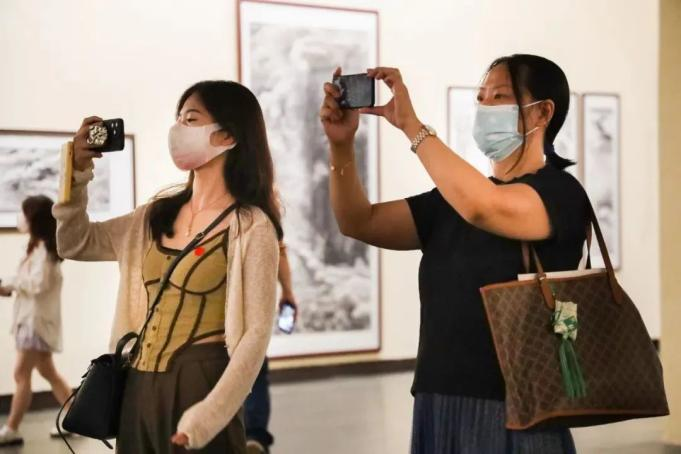
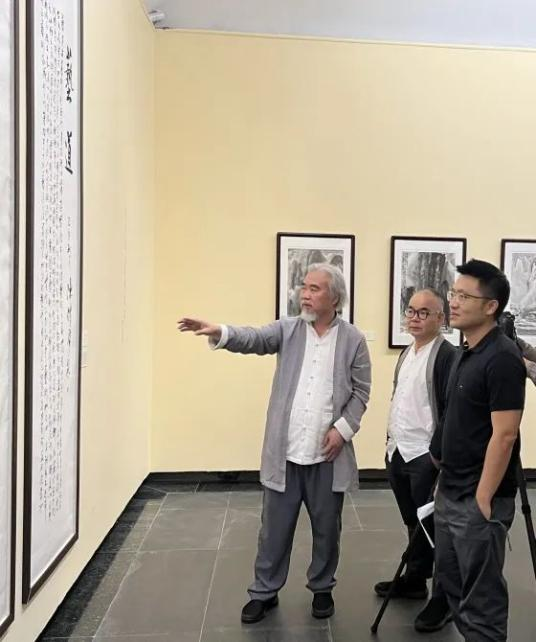
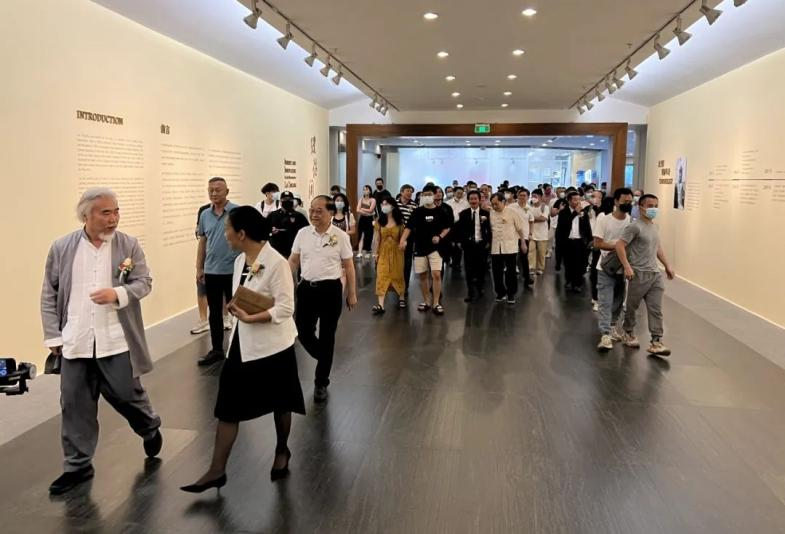
In the Tang Dynasty, Wang Wei wrote at the beginning of The Essentials of Landscape Painting that "ink painting is the most ideal medium, as it draws from nature and depicts nature in the simplest way." According to legend, Chinese ink landscape painting began in the Tang Dynasty, gradually matured in the Five Dynasties, and was further popularized in the Song and Yuan Dynasties. After more than a thousand years, painters of all dynasties have summed up and accumulated rich experience in expressive techniques in the evolution and development of Chinese ink landscape painting. Huang Binhong believes that "in ink painting, inks of different shades and structures do not interfere with each other. What accumulated-ink technique requires is the color in the color and the ink in the ink." Accumulated-ink is a technical language of special importance in the history of ink painting. From light to thick, the layered ink shades has the characteristics of light but not thin, thick but not rigid, uniform but changeable, solid but layered. Benefiting from both his innate artistic talent and his personal creative passion, Lai, with his strong control over the picture, not only shows his solid foundation in the majestic images of mountains and water, but also is good at describing nature with exquisite artistic language.
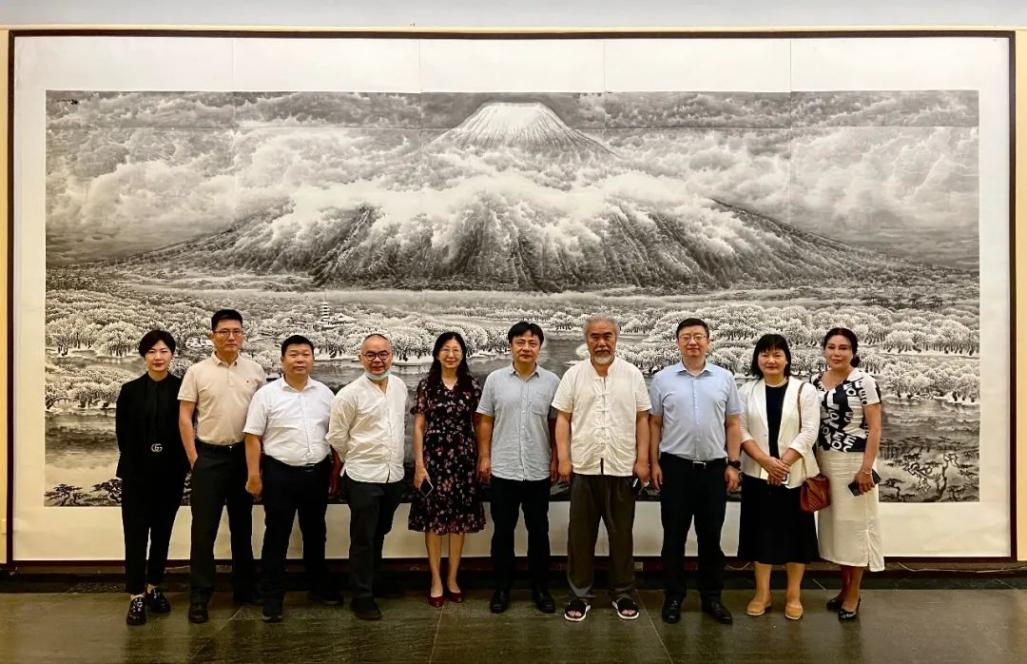
In Lai Zhigang’s large-scale landscape paintings such as The Way with Art, The Way of Clouds and The Rise, he used bold and unrestrained brushwork to depict overlapping mountains and rivers, with clouds and mist shrouding them. On the whole, these paintings show a majestic beauty and a strong sense of layering. Subtle ink color changes and ingenious blank spaces weave the virtual and the real, not only emphasizing the majestic and magnificent mountains and rivers, but also externalizing the myriad changes of nature in the painter’s mind. Lai’s control over the brush and ink is flexible, with interwoven ink marks of different shades and touches and expressive lines with appropriate density to effectively control the texture and rhythm of the entire painting. There is a strong personal touch to Lai’s ink paintings of clouds and water. In his masterpieces such as Spring Tide, Sage’s Domain, and The Great River Going East, what you see is not only mountains, clouds and water, but more like a collection of natural objects with similar momentum. This is a magnificent ink movement played by him in black and white language, which arouses the endless imagination of the viewers.
“Learn from nature and express yourself.” Lai Zhas a deep understanding of the traditional creative concepts of Chinese painting. He especially emphasizes sketching in nature, and his footprints are all over the country. Through unremitting practice and exploration, he gradually comprehended the Taoist thought contained in ancient landscape paintings, that is, art is the external expression of philosophy.
In the contemporary context of the diversified development of ink painting, we can see from Lai Zhigang’s ink art how a diligent and down-to-earth artist inherits and sticks to the traditional techniques of brush and ink. We can feel the zeitgeist of sticking to the right path and innovating in his works.
Spring Tide 2640x250cm (2020)
The Way with Art 249x1134cm (2009)
The Way of Clouds 960x250cm (2015)
Sage’s Domain 1375x250cm (2020)
Road Between Mountains 1680x250cm (2013)
The Art of Interweaving the Virtual and the Real from Accumulation: "Real" and "Virtual” State in Lai Zhigang’s Ink Landscape
Luo Yiping, Deputy Director of the Curatorial Committee of the China Artists Association
Lai Zhigang’s ink landscape contains two different appearances and atmospheres, one is "real state" and the other is "virtual state". What he pursues in the "real state" is the perfect and lifelike presentation of objective objects, which is imitative and realistic; while in the "virtual state", he has blurred the reality and raised it to the state of art. The "virtual state" expressed in his works may be a fragment or poeticization of the real state, or it may be a reversal or a symbol of the real state. In his ink and wash landscape paintings, the raw materials of the virtual state mostly come from the real state. Aided by intentional artistic techniques, he often creates aesthetic effects that are remote, hazy, ethereal, and resembling in spirit rather than in form through artistic language between the virtual and the real.
Waterfall in Baishui Village 250x160cm (2014)
Lai’s "real state" presents a kind of majestic beauty. In his large-scale works more than ten meters long, there are mountains stretching and clouds and fog rushing. The orderly brush and ink language contains a gushing wild power, conveying an irresistible inner impulse. Like the Qiantang River tide, they are whizzing across the river bank, colliding with waves of passion. This is a "real state", and Lai hopes to pursue a thick, steady, and powerful beauty through these images. In his "real state" works, Lai borrowed the panoramic views of the landscape paintings of the Northern Song Dynasty, but he did not adopt the characteristics of the natural scenery being close to people, but filled the picture with a religious and mysterious atmosphere. Such mysterious atmosphere comes from the serene consciousness he endows the painted objects and the corresponding artistic treatment. The steep mountains and cliffs constructed by the dense, complicated and hard ink lines did not leave the viewer with the spatial possibility that the landscape paintings of the Northern Song Dynasty emphasized, that is, they can be seen, stepped on, traveled, and lived in. Instead, Lai’s sparsely vegetated cliffs constitute only a vast image. The turbulence of clouds in the mountains and valleys does not create a three-dimensional space for the viewer to travel; it just constitutes a formal interest in the conflict between motion and rest. In Lai’s vision, the viewers should feel that they are not looking at the painting, but standing at the foot of the cliff and staring at the nature, until the hustle and bustle of the world disappears, leaving only the roar of the waterfall and the ethereal sound of the clouds.
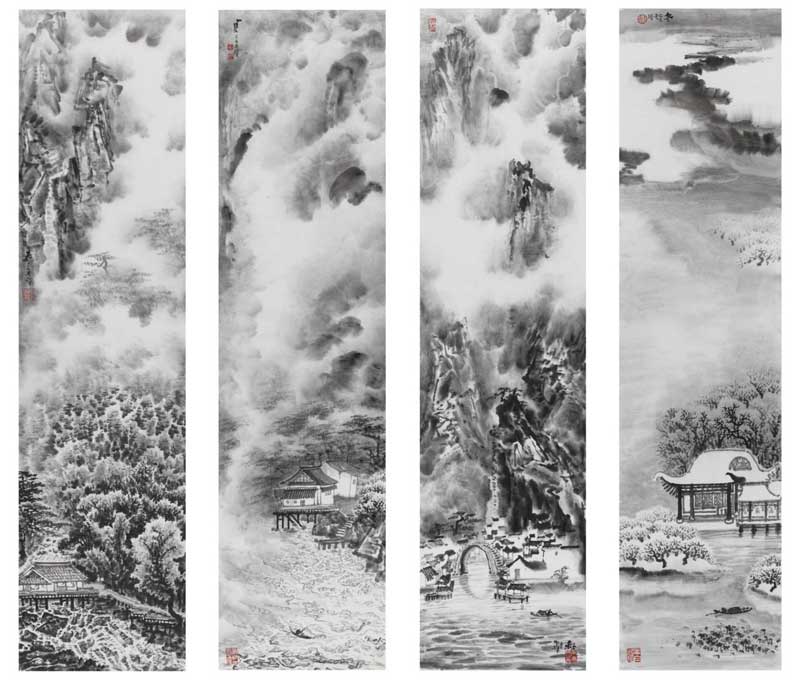
Spring, Summer, Autumn and Winter 138x34cm x4 (2019)
Lai Zhigang’s landscape paintings with "real state" as the main body cast a solid and magnificent space. With their unique layout, grand imagery, fine composition and unique language of brush and ink, they show a state of harmony between man and nature, and even spiritual unity. Compared with the description of specific scenes, this painter prefers macroscopic expression in a symbolic sense. The vast layout of his ink lines seems to flow free from the shackles of physical space, and the mysterious symbols of mountains and rivers construct a picture of psychology and time that are constantly intertwined and moving, as well as a picture of a spiritual space waiting to resonate. On the visual level, Lai Zhigang’s "real state" landscape creates a realm beyond the constraints of time and space, which is the unity of form and formlessness, order and disorder; On the auditory level, his "real state" landscape attracts viewers into a "big sound" that transcends the simple perception of sound. "Big sound" is a silent state that cannot be perceived through hearing. This kind of silence is a response to the sacred feeling, but Lai hopes that the viewer can hear the grand music like a symphony in the silent picture. This visual and auditory connection does not guide the viewer to experience the sacred existence through direct speech but through hints, allowing the viewer to feel the most sacred and mysterious moment in the mass in the silence. This is the "big sound" in Lai’s mind, which can only be experienced in a certain state of silence or in a trance.
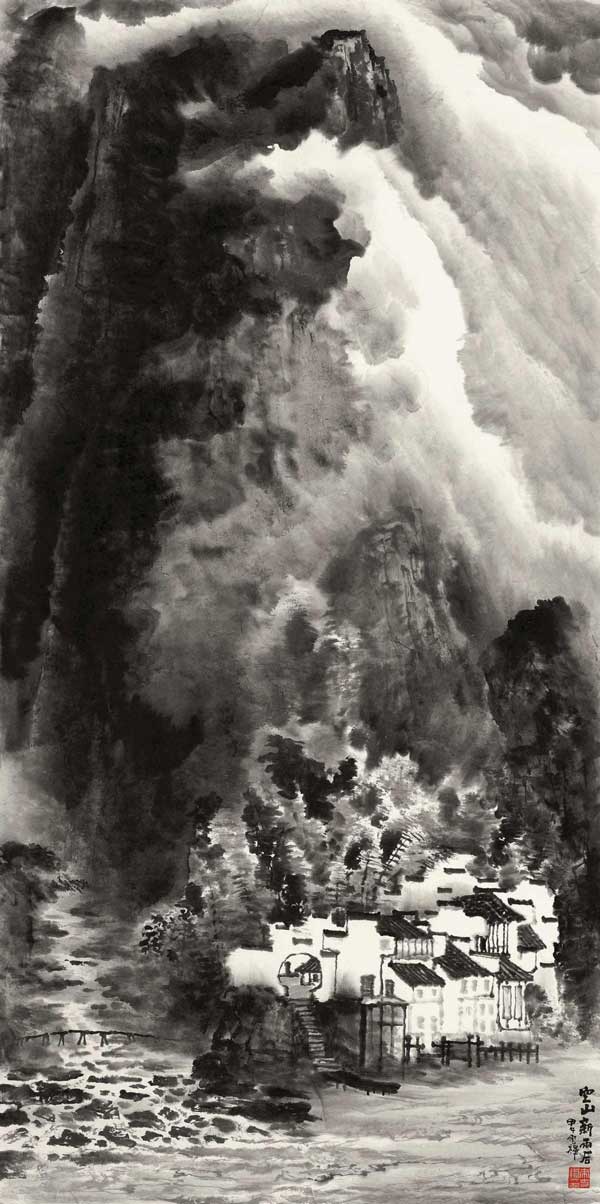
Fresh Mountain after Rain 68×136cm (2014)
Lai describes a kind of ethereal beauty in the "virtual state". In his intertwined structures of soft water and ink, the images of moist mountains and water are erratic, illusory and dynamic, as if they are forever shrouded in rain and mist. As stated in “Biography of Ruan Ji” in The Book of Jin, such mountains and waters have an irresistible attraction. If we define Lai’s majestic works as constructing a "virtual state" with a "real state", then his misty ink landscapes can be regarded as presenting a "real state" with a "virtual state".
Mountain above the Clouds 248x124cm (2014)
For Lai, the real objects corresponding to Chinese landscape painting are neither the "real" related to the real world nor the "mirror image" of natural landscape. What he wants to express is the "virtual image" of nature that he extracted after comprehending nature. It is changeable, but it is always the embodiment of "virtual in reality" or "real in virtual". In his works with "virtual state" as the main body, we can vaguely recognize mountains, trees, clouds, water, figures and buildings in nature, but all of these are shrouded in mist and mist, presenting a scene that has continued from ancient times to the present. The beauty of silence is just like the sky and the earth that are wordless and have no fixed form, but cannot be ignored. Lao Tzu once said, "Before the heaven and the earth appeared, there was only chaos," and this chaos "had no shape, no form that objects should have." More specifically, he believes that the image and state of the heaven, earth and all things regulated by Tao can be seen, but Tao itself cannot be directly perceived, which has no shape nor appearance. Consciously or unintentionally, Lai established the inner connection between ink painting and Chinese philosophy with his landscape paintings intertwined with "virtual" and "real". His ink landscapes are not constrained by specific objects, but integrate the emotions of the subject into the object, and use the invisible water to carry the ink to stack the shapes arbitrarily. This kind of brush-and-ink language and modern aesthetic expression, as well as the aesthetic demand for art to rise to the spiritual realm, silently transform the self-pursuit of the truth of life into a boundless and implicit transcendent artistic conception, and elucidates one’s life experience of "virtual state" in the image of "real state".
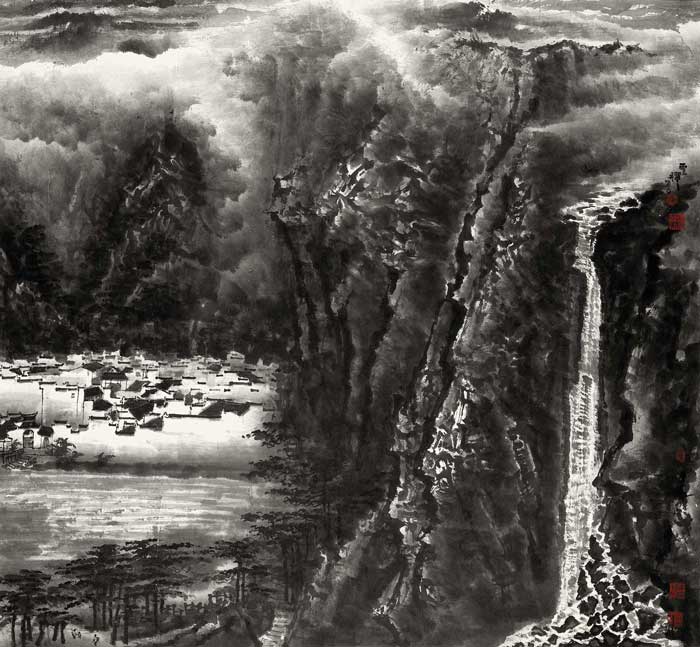
Living Outside the World of Mortals 123x133cm (2013)
Perhaps, in Lai’s mind, the "real state" and the "virtual state" are both a "static" state. Stillness is an image that is invisible and intangible but can be perceived. Just as Wang Fuzhi said, the image of "quietness" is a transitional and relatively stable state between the transformation of form and formlessness. In Lai’s "real state" and "virtual state" landscape paintings, the tangible objects are dyed with a hint of emotion and an atmosphere by his state of mind, which constitutes the transition state of the work from "quietness" to the tangible. As Sikong Tu said in the Tang Dynasty, “Only by returning to the emptiness and tranquility can one achieve the state of chaos, and only by accumulating righteousness can the heroic writing power be displayed. The majestic poem contains the momentum of all things, high and high across the vast space. Like the vast rolling clouds, like the mighty churning wind. Go beyond the superficial description of life and grasp the core content of the work. The pursuit of vigor cannot be based on forced collages, only what is naturally obtained will be meaningful.” In other words, the grandeur of Lai’s "real state" landscape and the etherealness of "virtual state" landscape are both inspired and induced by the tangible image of mountains and rivers. The "virtual state" is inspired by the "real state", and the image inspired and extended by the "real state" has great initiative. Therefore, the viewer will feel that the subjective emotion has dyed the objective image of mountains and rivers with subjective colors, thus achieving the effect of the interweaving and mutual transformation of the virtual and the real in the painting.
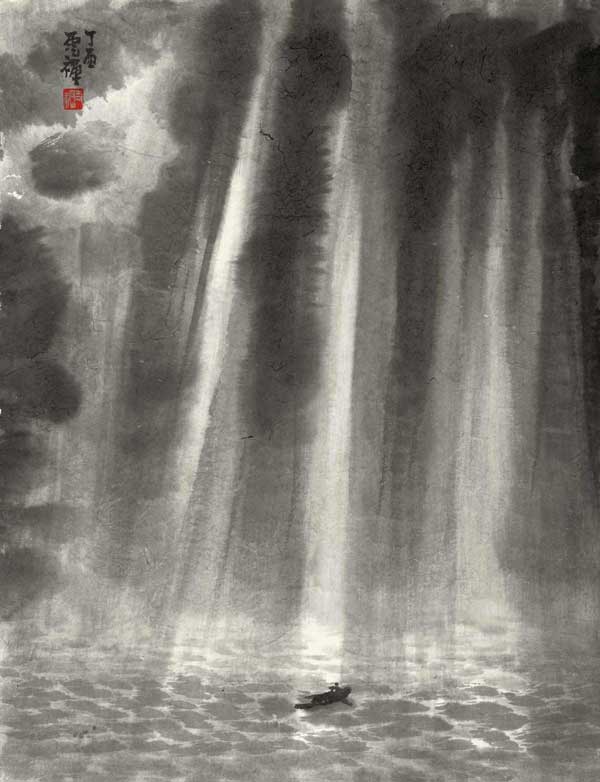
Sketch (2017)
Chinese landscape painting has a long history and rich tradition and cultural accumulation, but these inheritances have instead become obstacles in the creation of modern landscape painters. Therefore, we must first know that the key to inheritance is not to inherit the brush and ink techniques of the ancients, but to understand the spirit and state of mind of ancient landscape painters. The difference between landscape painting and painting in a broader sense is that Chinese landscape painting focuses on subjective composition and spiritual interpretation. It does not depict conventional pleasing scenery, but condenses the mountains and rivers in nature into a surreal landscape scene through the artist’s subjective selection and arrangement. It emphasizes the release of the painter’s state of mind, the pursuit of a poetic free state, and even a desire to get rid of the secular world. All in all, Chinese landscape painting is full of literary, ideal and philosophical qualities, and it is a visual "poetic" expression of Confucianism, Buddhism and Taoism. This kind of poeticity is concentrated in Sikong Tu’s discussion on ancient poetic aesthetics and poetic theory, especially the aesthetics based on accumulation from the virtual state to the real state. Lai’s ink landscape paintings focus on the interweaving of virtuality and reality through the layering and flow of ink colors, and finally return to a natural state. When he engages in landscape creation with this attitude and state of mind, he has already entered into a free spiritual space earlier than us. In this model, the natural landscape objects appearing as creative mediums truly and completely get rid of the constraints of time and space, and transform into the coexisting and independent "real state" and "virtual state" in Lai’s works, presenting a connotation of landscape interwoven in the framework of ink and wash.
Perhaps, this is the deep aesthetic meaning of traditional charm and modern pursuit in Lai Zhigang’s landscape paintings.
Dwelling in the Fuchun Mountains 50x1000cm (2019)
Snow on the River 249x31cm (2021)
The Poetic Conception of Travel Notes in Peach Blossom Land 366x48cm (2021)
Sun Meilan, Professor of the Central Academy of Fine Arts:
I am deeply shocked and inspired by Lai Zhigang’s aesthetic character of adhering to simplicity but being able to create gorgeous, infinitely varied and vivid black and white realms; the vast, mysterious, grand and magnificent atmosphere of the new era in his writing brushes; his exploration of the Chinese spirit of deepening reform and opening up in the 21st century; his development based on inheritance; and his creative vitality of learning from the past and updating. Lai has the spiritual aesthetic expressive power to conquer us, because he has touched the high realm, great realm and true realm of the true essence of Chinese painting art. With his highly sober self-confidence in Chinese culture, his aggressive sense of innovation, and his vigorous vitality generated by the inheritance and development of accumulated-ink landscape painting, he has knocked on the door of the new pattern and the big pattern of the development of Chinese painting. With his spirit of courageous improvement and continuous practice, he launched large-scale boutiques with unique personality and style, and became the first person to highlight the great prospect of accumulated-ink landscape painting in the contemporary era.
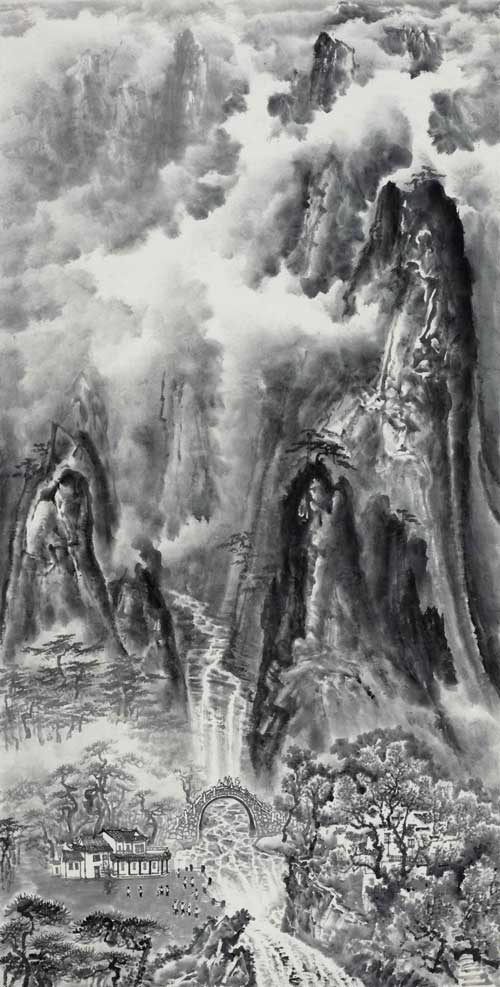
Herringbone Waterfall in Mount Huangshan 138x70cm (2021)
Xiao Feng, Former President of China Academy of Art:
Lai Zhigang is a doer with lofty aspirations who does not care about fame and fortune. He has the moral character that a true artist should have. He has successfully demonstrated the thousands-year-old ancient culture of the Chinese nation as the foundation and soul of our survival and development. Through his accumulated-ink, I saw the national cultural spirit and humanities that have lasted for thousands of years, and the heroic, unyielding and humble Chinese nation that stands tall in the world.
Water and Mist in the Gorge 68x45cm (2008)
Li Baolin, Committee Member of China National Academy of Painting:
To be honest. Lai Zhigang’s works are difficult to deal with, and such large-scale and high-level paintings are very rare. Many of his large-scale paintings are time-consuming, because he explained every part of the picture clearly and drew in-depth things. He has his own unique insights and achievements in inheriting Li-style landscape and Huang Binhong’s method of accumulated-ink.
A Poem for Clouds and Rain 97x60cm (2017)
Chen Chuanxi, Professor at Renmin University of China:
Lai Zhigang’s paintings are majestic, vigorous, powerful, and have outstanding features that make him stand out among many "majestic" paintings, which is very difficult, not to mention that he is also outstanding in the " vigorous and powerful" paintings. The spirit of the times calls for grandeur, and Lai’s vigorous and heavy style just fits the atmosphere of new China. The imposing and thick clouds in Lai’s brushwork are unique, and there is no such painting method in ancient or modern times. I think his paintings are very rare in contemporary times, and they are even his original creations. A painter must be original, otherwise he or she cannot create his own genre.
Zou Peizhu writes in Shiniu Hall
Wang Luxiang, a cultural scholar:
Ms. Zou Peizhu, Mr. Li Keran’s wife, wrote "Inheritance and Development" for Lai Zhigang. There is a deep meaning in it, and it is also the biggest theme in the development of Chinese culture and Chinese art.
On-site | “Inherit and Innovation” Exhibition of Lai Zhigang’s Ink Art Was Successfully Held in
Time: 2022-06-19 Source: China Fine Arts News
On June 18, the opening ceremony of "Inheritance and Innovation - Exhibition of Lai Zhigang’s Ink Art” hosted by Guangdong Artists Association and Guangdong Art Museum, co-organized by Li Keran Academy of Painting, was held in Guangdong Art Museum.
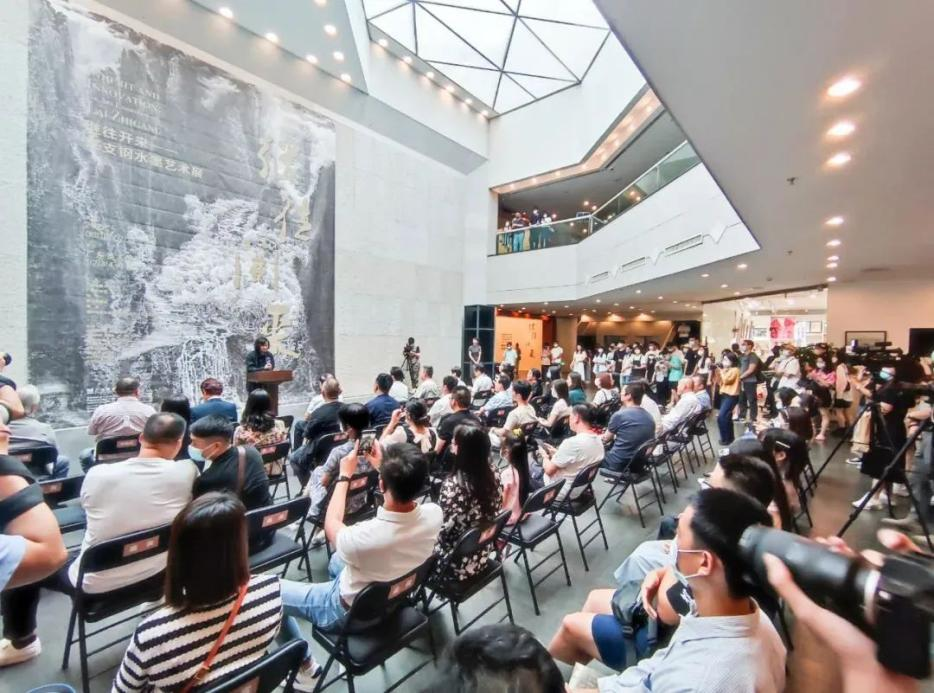
Opening Ceremony
Guests At the Opening Ceremony: Lin Lan, Chairman of Guangdong Artists Association and President of Guangdong Academy of Painting; Wang Shaoqiang, Vice Chairman of Guangdong Artists Association and Director of Art Museum of Guangdong ; Pi Daojian, Deputy Director of the Curatorial Committee of the China Artists Association and Critic; Luo Dongkai, Former Deputy Director of the Organization Department of the Guangdong Provincial Party Committee and Former Secretary of the Provincial Working Committee; Xu Hongfei, Vice Chairman of Guangdong Artists Association and President of Guangzhou Sculpture Institute; Luo Yiping, Deputy Director of the Curatorial Committee of the China Artists Association; Song Lujing, Vice Chairman of Guangdong Artists Association and Vice President of Guangzhou Academy of Painting; Lu Zengkang, Member of the Presidium of Guangdong Artists Association and Vice President of Guangzhou Sculpture Garden; Sun Li, Member of the Oil Painting Art Committee of the China Artists Association, and Member of the Art Creation Committee of China’s Major themes; Hu Ruitao, Deputy Director of Guangdong Art Museum; Wen Chunqing, Chairman of Guangdong Hakka Chamber of Commerce and Chairman of Dabaihui Industrial Group; Wen Changqing, Chairman of Shenzhen Lai Zhigang Art Center; Lai Zhigang, the Artist of This Exhibition; and friends from the fine arts, journalism and other circles of society.
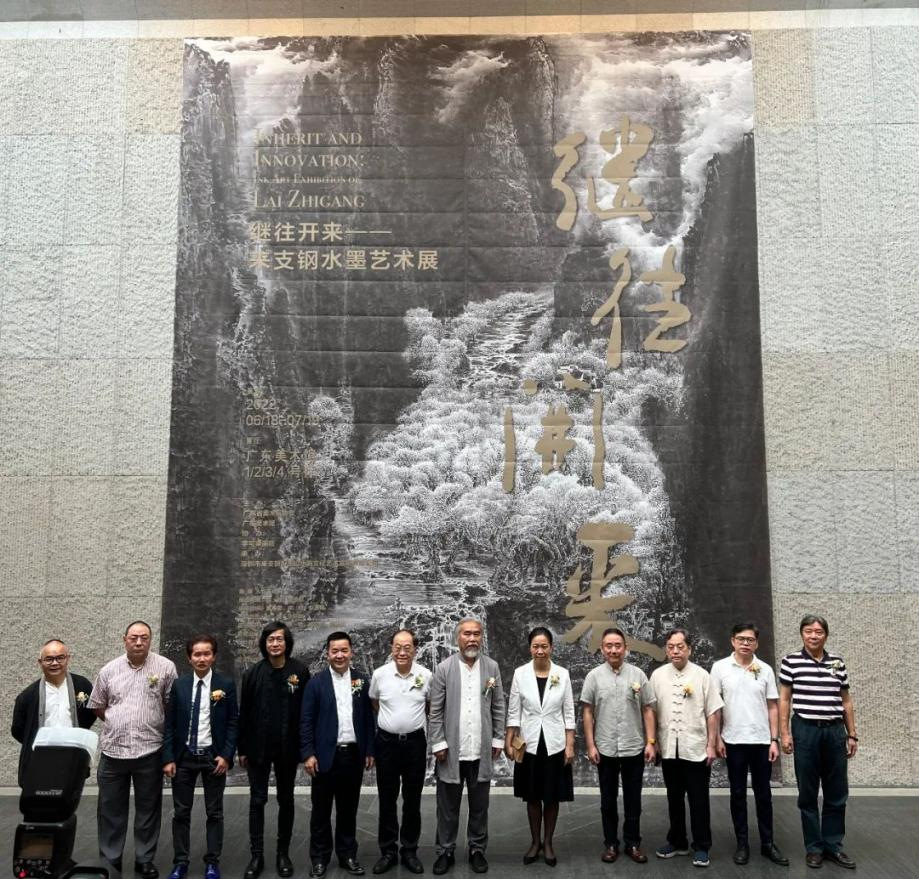
Group photo of guests at the opening ceremony
At the opening ceremony, Lin Lan, Chairman of Guangdong Artists Association and President of Guangdong Academy of Painting; Pi Daojian, Deputy Director of the Curatorial Committee of the China Artists Association and Critic; Wang Shaoqiang, Vice Chairman of Guangdong Artists Association and Director of Art Museum of Guangdong; and artist Lai Zhigang delivered speeches successively.
Speech by Lin Lan, Chairman of Guangdong Artists Association and President of Guangdong Academy of Painting
Speech by Pi Daojian, Deputy Director of the Curatorial Committee of the China Artists Association and Critic
Speech by Wang Shaoqiang, Vice Chairman of Guangdong Artists Association and Director of Art Museum of Guangdong
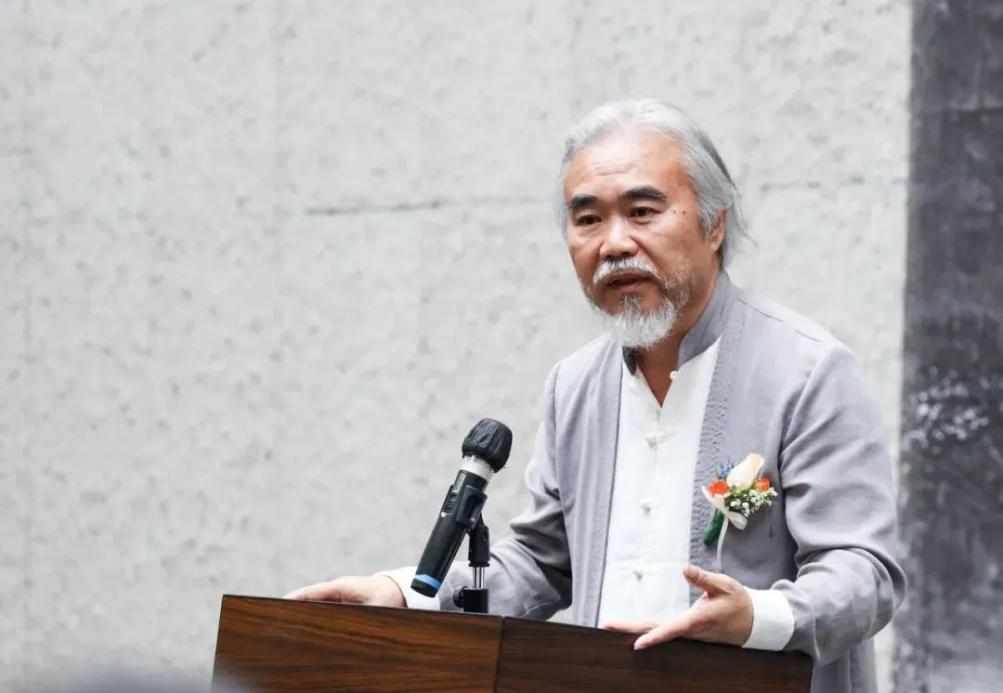
Speech by artist Lai Zhigang
Lai Zhigang has been fond of painting since he was a child, and has systematically studied Chinese landscape painting from Mr. Jia Youfu and Mr. Li Xiaoke. During his 40-year artistic journey, Lai persisted in exploring traditional accumulated-ink painting methods, absorbing the rich artistic essence from masters such as Mi Fu, Gong Xian, Huang Binhong, and Li Keran. By learning form the strengths of all the masters and integrating the past and the present knowledge, he finally came out with his unique painting style of "vigorous, strong and majestic".
In Lai Zhigang’s large-scale landscape paintings such as The Way with Art, The Way of Clouds and The Rise, he used bold and unrestrained brushwork to depict overlapping mountains and rivers, with clouds and mist shrouding them. On the whole, these paintings show a majestic beauty and a strong sense of layering. Subtle ink color changes and ingenious blank spaces weave the virtual and the real, not only emphasizing the majestic and magnificent mountains and rivers, but also externalizing the myriad changes of nature in the painter’s mind. Lai’s control over the brush and ink is flexible, with interwoven ink marks of different shades and touches and expressive lines with appropriate density to effectively control the texture and rhythm of the entire painting. There is a strong personal touch to Lai’s ink paintings of clouds and water. In his masterpieces such as Spring Tide, Sage’s Domain, and The Great River Going East, what you see is not only mountains, clouds and water, but more like a collection of natural objects with similar momentum. This is a magnificent ink movement played by him in black and white language, which arouses the endless imagination of the viewers.
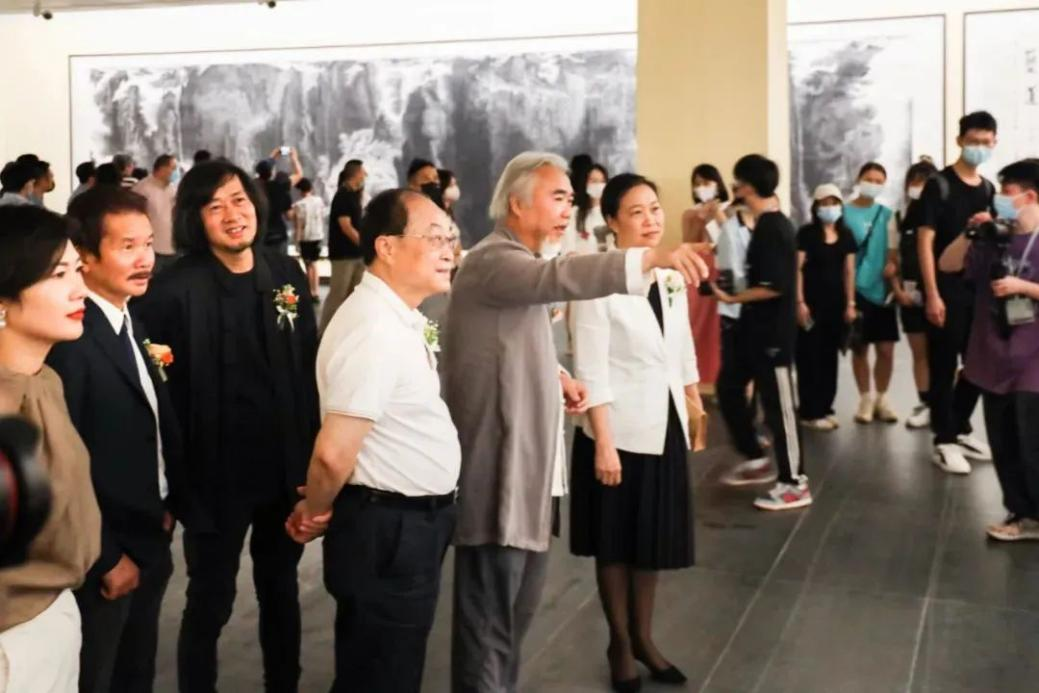
Artist Lai Zhigang’s commentary on the spot
Exhibition site
“Learn from nature and express yourself.” Lai Zhas a deep understanding of the traditional creative concepts of Chinese painting. He especially emphasizes sketching in nature, and his footprints are all over the country. In Lai’s view, sketching is a special medicine to solve and break through the conceptualization, homogenization and similarization of Chinese painting. For decades, he traveled to many places to see mountains and chase clouds in the process of sketching, and transformed "mist and clouds" into an important symbolic element in his artistic creation. Through unremitting practice and exploration, he gradually comprehended the Taoist thought contained in ancient landscape paintings, that is, art is the external expression of philosophy. From his works, we can see not only his in-depth understanding of the context of Chinese landscape painting, that is, inheritance, but also how he innovates and practices his own unique style based on inheritance.
Exhibition site
In the contemporary context of the diversified development of ink painting, we can see from Lai Zhigang’s ink art how a diligent and down-to-earth artist inherits and sticks to the traditional techniques of brush and ink. Guangdong Art Museum hopes that the audience can feel the zeitgeist of sticking to the right path and innovating in his works. The exhibition will last until July 19th.
Exhibition site
The Way with Art 249cm×1134cm (2009), Lai Zhigang
Living Outside the World of Mortals 123x133cm (2013), Lai Zhigang
Road Between Mountains 250cm×1680cm (2013), Lai Zhigang
Mountain above the Clouds 248x124cm (2014), Lai Zhigang
Fresh Mountain after Rain 68×136cm (2014), Lai Zhigang
Waterfall in Baishui Village 250x160cm (2014), Lai Zhigang
Spring, Summer, Autumn and Winter 138x34cm (2019), Lai Zhigang
Sage’s Domain 1375x250cm (2020), Lai Zhigang
Snow on the River 249x31cm (2021), Lai Zhigang
Lai Zhigang’s Solo Exhibition Opened at Guangdong Art Museum: To the Peak of Landscape Painting, Ev
Time: 2022-06-18 Source: South Plus
White hair, white beard and piercing gaze. On the afternoon of June 18, Lai Zhigang, a representative painter of accumulated-ink landscapes, presented 114 ink paintings at the Guangdong Art Museum. As the inheritor of the spirit of Li Keran’s "Li-style landscape", he presented in the exhibition his understanding, transformation and creation of painstakingly studying the context of traditional landscape painting for more than 40 years.
Group photo at the opening ceremony
Huge landscape paintings create a strong visual shock in the exhibition hall. In Lai Zhigang’s large-scale landscape paintings such as The Way with Art, The Way of Clouds and Road Between Mountains, he used bold and unrestrained brushwork to depict overlapping mountains and rivers, with clouds and mist shrouding them. They not only emphasize the majestic and magnificent mountains and rivers, but also externalizing the myriad changes of nature in the painter’s mind.
Exhibition site
The charm in Lai’s ink paintings is derived from tradition, but fits well with contemporary aesthetics. He controls the texture and rhythm of the whole painting through the interweaving of ink marks of different shades and tactile sensations, and the well-gathered and scattered brush lines. From observing mountains to chasing clouds, he expresses clouds and water with a strong personal style, presenting a majestic and majestic atmosphere of the times, and playing a magnificent and exciting ink movement for the audience in black and white ink language.
The Way of Clouds (Partial)
"Lai Zhigang’s art is based on tradition and the present and faces the future. In his works, the revitalized "Li-style Landscape" shines brightly together with a contemporary and future-oriented spirit. In the mountains, waters and clouds in his works, we can read a macro self-expression. "Said Lin Lan, Chairman of Guangdong Artists Association and President of Guangdong Academy of Painting
"I hope the audience can feel the zeitgeist of sticking to the right path and innovating in his works.” Wang Shaoqiang, Director of Guangdong Art Museum, said that Lai’s ink art creation shows a diligent and down-to-earth artist’s inheritance and persistence of traditional brush and ink.
Before the opening of the exhibition, reporters from South Daily and South Plus interviewed Lai Zhigang and sincerely invited him to explain how "Lai’s Landscape" grasps the relationship between inheritance and innovation.
Hit the bullseye
Lai Zhigang grew up in a poor family, but he was obsessed with painting. Since he officially embarked on the art path at the age of 12, Lai has been studying and exploring traditional landscape painting for more than 40 years, like an ascetic monk climbing rocks on the traditional road with no distractions.
In 2001, he entered the Central Academy of Fine Arts, and in 2002, he was admitted to Jia Youfu’s postgraduate class. In this period, Lai conducted in-depth research on accumulated-ink and fell in love with it. In 2005, he joined Mr. Li Xiaoke’s studio, where he deeply felt the spirit and thought of "Li-style Landscape".
Fresh Mountain after Rain
"Mr. Li Keran said, just lower your head to pull the cart and don’t look up at the road." Lai Zhigang said that this sentence sounds a bit outdated, but it is his artistic "motto". There is no distraction on the road of art, only the many scenery seen by looking down.
When looking for a path to inherit and develop traditional landscape painting, the "bullseye" Lai Zhigang found was accumulated-ink, and he asked himself to hit the bullseye every time.
To Moor at Night at the Maple Bridge (Partial)
Mr. Li Keran once sighed, "Accumulated-ink method has existed in ancient times, but there are still very few people who are good at it." So this is destined to be a lonely road.
"Accumulated-ink is the most difficult part of traditional landscape painting, which is avoided by many people. But I enjoy conquering difficulties and making progress." For more than 20 years, Lai has been searching hard and devoting his greatest skill to the study of the ink language of Gong Xian, Huang Binhong, Li Keran and other masters of the past dynasties, pushing it to another peak.
From "infinite changes with ink" to "mist and clouds watching me"
Lai Zhigang believes that accumulated-ink contains the most essential part of oriental ink art, which is crystallization and pearls. It is not a simple superposition of water and ink, but a comprehensive rendering of brushwork, ink use, interest, and realm, with ever-changing contents.
Spring, Summer, Autumn and Winter
Sun Meilan, a Professor at the Central Academy of Fine Arts and an academic member of the Li Keran Art Foundation, believes that Lai Zhigang has touched the high and great realm of the essence of Chinese painting art, that is, adhering to simplicity but being able to create gorgeous, infinitely varied and vivid black and white realms.
Lai fully demonstrates the changes of "black, white, and gray" with the language of brush and ink, including the extremely translucent "black", the multi-dimensional "gray" with rich layers, and the ethereal and carefree "white".
From the "five shades of ink" in traditional ink painting to the "infinite changes with ink", Lai embraces all things with the simplicity of ink and wash, and embodies the simple aesthetic pursuit of truth in simplicity.
Road Between Mountains (Partial)
"Mist and clouds" are important symbols in Lai’s ink art. In decades of sketching experience, he traveled to many places to see the mountains and chase clouds there, from the clouds in Mount Huangshan to the clouds in Jiangnan and Tibet...
Breaking through the routines of the ancients in painting clouds, Lai expresses layers, space and volume in the mist and clouds with the method of accumulated-ink, and presents a strong visual impact with elegant and flowing beauty. "I have painted clouds for most of my life. Sometimes I don’t know whether I am painting the clouds or the clouds are painting me."
Find something more expressive than oil painting
Wang Yong, a famous art theorist, believes that Lai’s new landscape painting with the method of accumulated-ink has created a new style. Starting from the accumulated-ink technique, Lai has modernized the traditional Chinese philosophy of Laozi and Zhuangzi, and promoted them into the category of modern aesthetics.
Lai believes that accumulated-ink is a key to the pinnacle of Chinese landscape painting art. In terms of layering, volume, and space, accumulated-ink works can best express the broad and vigorous spirit of the times, showing a stronger visual impact and expressive force than Western oil paintings.
Lai has a deep understanding of the Taoist thought contained in ancient landscape paintings, and believes that art is the external expression of philosophy. "I understand Laozi’s Tao as laws, and the laws of brush and ink show power. Behind power is Dao, and Tao is aesthetics." He said.
"Return to the origin of traditional culture and gain strong self-confidence." Lai Zhigang believes that in the retrospect of tradition, every step should not be missed until innovation comes naturally.
Introduction to Lai Zhigang
Lai Zhigang, or Yunchan, a member of the Chinese Artists Association. He was born in Bengbu, Anhui Province in 1963, and now lives in Beijing and Shenzhen. He began to study in the Chinese Painting Department of the Central Academy of Fine Arts in 2001. In 2002, he was admitted to the master’s class of the Jia Youfu Studio of the Central Academy of Fine Arts. In 2005, he joined the Li Xiaoke Art Studio of the Beijing Academy of Fine Arts. His representative works include The Rise, The Way with Art, The Way of Clouds, Road Between Mountains, Spring Tide, Sage’s Domain, Mist and Clouds in Mount Huangshan, Three Gorges of the Yangtze River and so on.
South Plus Interview with Lai Zhigang: A good landscape painting can "breathe"
South Plus: Why do you have a soft spot for accumulated-ink? How did you inherit and innovate the accumulated-ink method?
Lai: Accumulated-ink is expressive, thick and profound. From Gong Xian’s "point-based accumulated-ink", to Huang Binhong’s "line-based accumulated-ink", to Li Keran’s "plane-based accumulated-ink", my "accumulated-ink" has gathered and integrated the strengths of the three masters. I have been systematically studying accumulated-ink, trying to bring out the characteristics of ink and wash as much as possible, so I formed my own Lai-style landscape.
Snow on the River (Partial)
Through "accumulated-ink", I accumulate clouds, water, and mountains, and present a sense of volume and thickness through my works. This kind of landscape is in motion, and the "ink" of the painting is black with "brightness" and layers. I think this is an innovation I made to " accumulated-ink".
I always believe that the accumulated-ink method is suitable for expressing the sense of volume, volume, block, structure and spatial layering of Chinese landscapes. In addition, it is very powerful, with the reality and possibility of infinitely expanding humanistic time and space. Because of this, expressing the spirit of contemporary China and the soul of the modern Chinese nation has always been the central topic of my thinking and pursuit in the process of exploring and studying accumulated-ink.
South Plus: The ancients believed that the relationship between landscape painting and nature reflects the integration of art and philosophy. How do you think the relationship with nature should be handled in contemporary landscape painting?
Lai: Ancient Chinese philosophers were inspired and sublimated in nature, and Chinese painting also comes from nature. From brushes, ink, paper, inkstones to creative inspiration, all of them seek their roots and power from nature.
Sketch
Sketching is a special medicine to solve and break through the conceptualization and homogenization of Chinese painting. I am keen on sketching, and have traveled to many places for decades, turning the mist and clouds of nature into an important symbolic element in my artistic creation, so some people call me "the cloud chaser". "Cloud" has always been a challenging point in landscape painting, because natural elements such as clouds and water have no shape and are constantly changing. This requires us to look for the laws of clouds, water, and mountains more carefully in nature, and use our "heart" to comprehend the "charm of spirit", because what we see with our eyes is "shape", but what we see with our heart is "spirit". Only in this way can we achieve the synchronization between nature and our own feeling, so as to create "live" works.
In my opinion, in addition to the traditional landscape painting’s emphasis on "viewing, living and sightseeing", a good Chinese painting should also be able to breathe and grow.
Mengxi Garden (Partual)
South Plus: How do you think contemporary landscape painters should deal with the relationship between inheritance and innovation?
Lai: In my creation, I insist on pursuing nature and traditional Chinese culture, and integrate my creation with Taoist culture and nature, so as to create a picture realm in which man and nature are in harmony.
Contemporary painters should properly handle the relationship between "changed" and "unchanged". Only by grasping the "unchanged" essence and law, the spiritual core of traditional culture and seeking "changed" on this basis, can we have the opportunity to innovate.
Sincerity is the most precious thing to an artist. It is an attitude, a state of mind and a self-cultivation. It is also of great significance in my study of traditional Chinese culture and painting. Artists should maintain this pure sincerity, and have a quiet mind with no other distractions, so as to discover things that are difficult for others to discover and complete the pure pursuit of art.
Contemporary Chinese painting painters should have a deep understanding of traditional Chinese culture and ideology, understand, master and use traditions, and work step by step.
The painter’s interpretation of the painting
Spring Tide
Spring Tide (Partial)
The work is inspired by my sketching experience in Tiger Leaping Gorge 5 years ago. I was shocked by the majestic Tiger Leaping Gorge, but how to express it with traditional Chinese painting techniques gave me a headache. In the end, I used the "accumulated-ink method" to describe the ever-changing ups and downs of the waves and the water hitting the sky.
My inspiration also comes from my feelings when I visited the "Pearl River Tide - National Art Exhibition in Celebration of the 40th Anniversary of Reform and Opening Up". The spirit of the times of reform and opening up is expressed through the incoming tide, and every drop of water implies a liberation of people’s minds. I use "tide" to abstractly express the liberation of the times and the power to move forward.
The Way with Art
The Way with Art (Partial)
This painting integrates and shows my mental journey of trekking to the peak of traditional landscape painting. From Li Tang, Fan Kuan to Huang Binhong in the Qing Dynasty, in this painting, I have concentratedly passed down the techniques, spirits and thoughts of these masters of the past. Through structure, brush and ink, I combined it into a textbook-style long scroll that travels through time and space, and the spiritual connotation conveyed in it far exceeds the appearance of brush and ink language.
Dwelling in the Fuchun Mountains
Dwelling in the Fuchun Mountains (Partial)
The work is inspired by my three trips to Fuyang, Diaotai and other places where Huang Gongwang lived. In this painting, I used focus perspective more to abstract the scenery on both sides of the Xin’an River. I use my "heart" to create my understanding, and use "mist and clouds" to express the mountains on both sides of the strait and the reflections in the water. I aim to reproduce the landscapes painted by Huang Gongwang with the vision and techniques of contemporary painters, and to pay tribute to the peak of traditional landscape painting with the spirit of contemporary ink and wash painting.
Artron Special Report | Lai Zhigang’s Wonderland of Ink
Time: 2022-04-22 Source: Artron Painting and Calligraph
Inheritance and Development – Exhibition of Lai Zhigang’s Ink Art
Ink marks are like traces in life, which cannot be copied or erased.
---Lai Zhigang
Have you ever seen a spring tide? Growing from a small white spot, it elongated into a whistling silver thread, wave after wave, changing in an instant. Then the tide ebbed as fast as it came. leaving behind a misty silence, like a fairyland.
Spring Tide 2640x250cm
Spring Tide (Partial)
2.5m high and over 26m long, Spring Tide occupies an entire wall on the first floor of Mingde Building, China National Academy of Painting. In the hall of “Inheritance and Development – Exhibition of Lai Zhigang’s Ink Art”, this huge accumulated-ink (layers of ink) painting seems to be rolling, roaring and shaking the soul. For more than a year, Laiz Zhigang gave up weekends and holidays and devoted more than ten hours a day to it.
Exhibition Site
With accumulated-ink technique, he emphasized the texture of the tide and the momentum that comes with the volume and dynamics, rendering the magnificent tide of the times in layers. The pure black, white and gray from ink and wash are the primary colors of Chinese philosophy, which embrace and give birth to all things. Lai's simple aesthetic pursuit of seeking truth in minimalism is also contained in it.
The Way with Art 249x1134cm
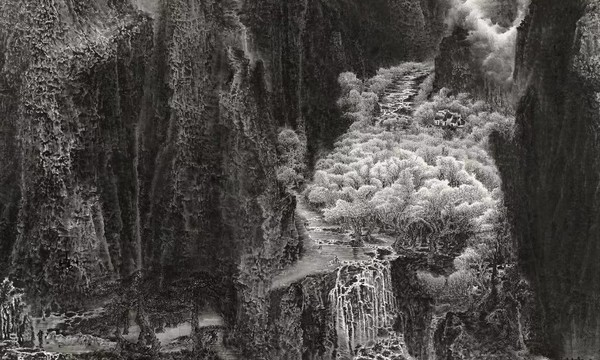
The Way with Art (Partial)
"Sincerity is the most precious thing to an artist. It is an attitude, a state of mind and a self-cultivation. Artists should maintain this pure sincerity." Lai said this and does so, as "Sincerity leads to inner peace, and the environment would quiet down to listen to your heart. Stay in this state, and you will look deeper into things and find their essence." He insists on being sincere to nature, so he gets the feedback from the essence and achieved harmony with nature.
Lai embarked on the road of art in his teens. Ding Chucai and Si Yilan, his first teachers, laid the foundation for him and inspired his keen awareness of the laws of things. He was admitted to the Central Academy of Fine Arts in 2001, and joined Jia Youfu's landscape painting research class in 2002, where he systematically studied art and met and fell in love with the accumulated-ink technique. In 2005, Lai joined Li Xiaoke's studio to further explore the spirit and thought of “Li’ landscape”.
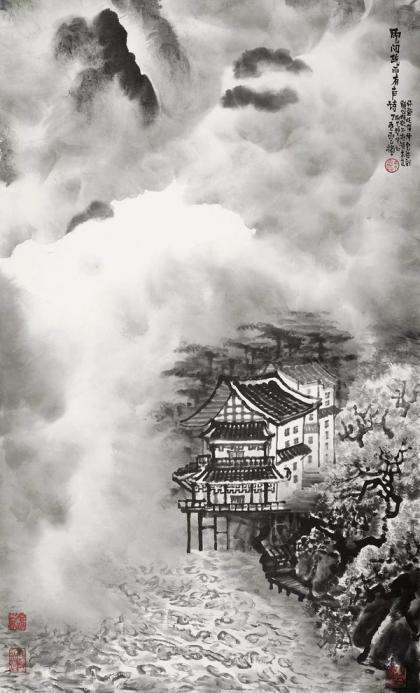
A Poem for Clouds and Rain 97x60cm
Lai has never given up on pursuing sincerity and Tao (the Way). When the first teacher told him that “everything is a law, you must master it before creating it”, he didn't know that this is Tao. In recent years, he has carefully read the Tao Te Ching when tracing the source of culture. Then he looked back and found that he had been on the path of Tao since then.
There is an otherworldly beauty to Lai’s works, which draws the viewer into a wonderland in the clouds. Such an artistic fantasy may have originated from his childhood dream of a carefree life. Now, he has borrowed this unworldly beauty with brush and paper, and interprets the unfettered and minimalist aesthetic with silent black, white and gray.
Sketch 46x34cm
“Humans are far less intelligent, capable and imaginative than nature. So we have to sketch and learn from nature.” Every year, Lai goes to nature to sketch and feel life and nature wholeheartedly.
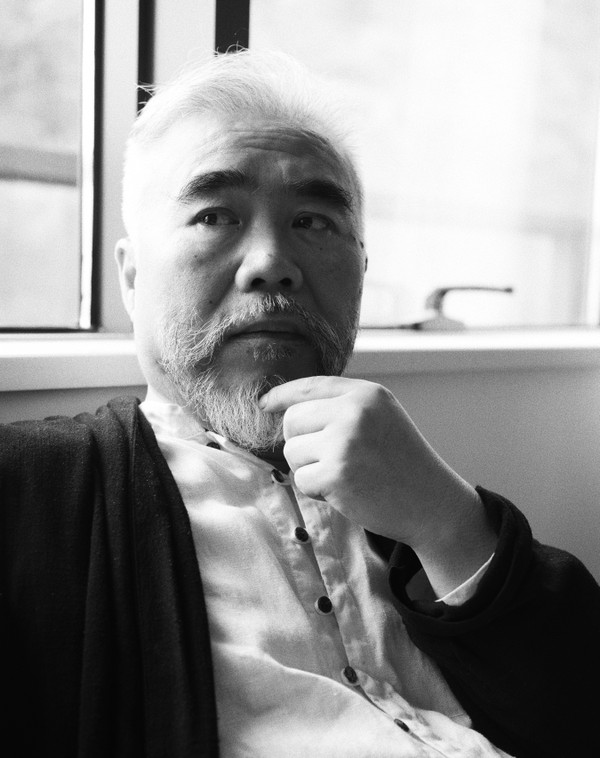
Artist Lai Zhigang
“Being simple in life and making friends is the same. Being simple in life and making friends is the same. I'm also simple, just want to draw." Stubbornness, fortitude and even a bit of paranoia in Lai’s character drive him on the road of painting without stopping. With open arms to us, Lai’s world of ink and wash is as generous and genuine as he is. Let us calm down and perceive that otherworldly beauty.
[Interview]
Artron.net: Hello Mr. Lai. We are curious why you named this exhibition "Inheritance and Development” and Pioneering"?
Lai: More than ten years ago, Mr. Zou Peizhu gave me four calligraphy scrolls, two of which are displayed in this exhibition. The one that reads " Inheritance and Development " carries his expectations for me, just as I commemorate him with this name now. In addition, culture, or the wisdom of the predecessors, should be passed on from generation to generation of teachers and students, so I like the name "Inheritance and Development".
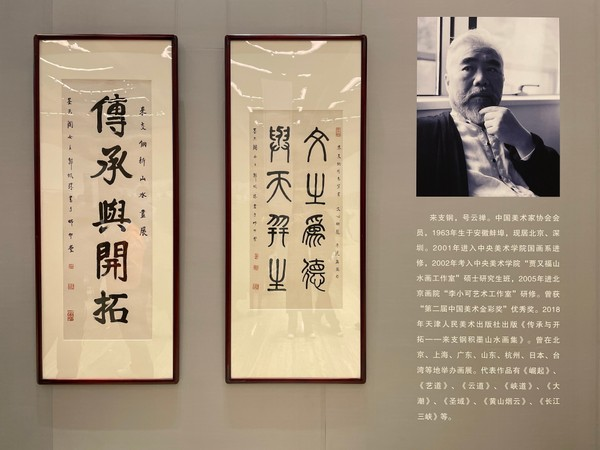
Exhibition Site
Vitality from Change
Artron.net: Seeing your large-scale works for the first time may be a great visual shock. Then we start to carefully observe and dig out your deep meaning in it. How does this kind of thinking take shape in your creation, can you share it with us?
Lai: The core of my creation is “change” and “live”. This world is changing, and change is the truth and essence of the world and the universe. I pursue change, whether it is in brush strokes, ink color or composition, as long as new symbols and vitality are born in the collision of change. So my work may appear to be alive and breathing.
We Chinese always seek painting materials from nature. Rice paper is breathing, and the feeling of drawing on the same kind of paper varies with weather or geographical factors. Even the water is alive and I can feel it. For me, what is vivid is alive, something that has vitality and can breathe.
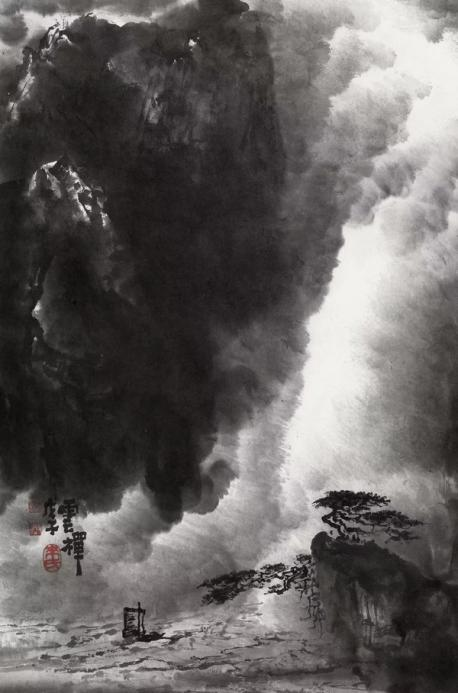
Water and Mist in the Gorge 68x45cm
Tao, the Root of Creation
Artron.net: You often talk about Tao, so what does Tao mean to your creation?
Lai: I value Tao as it is of great help to my creation. When I grasp the laws of things, I can dig to their core and trace them back to what they were. I suggest practitioners of Chinese painting to understand the laws of Chinese culture before their works come alive.
What is visible is the majestic momentum, but what is not visible is the Tao in it. Tao is the root of my creation, which sustains such large-scale works. When I paint clouds, it's like I'm painting mountains, and when I paint water, it's like I'm painting clouds. They are interlinked with inherent laws like everything else, and all I have to do is to master the laws and visualize them. That is why Tao and laws are essential for the construction of large-scale works. And when I speak of Tao like this, I mean a real power that can be put into practice, not just talk. Guided by this Tao, I draw my own thoughts and touch myself with the power and vitality of art, so that I can touch others.

Spring, Summer, Autumn and Winter 38x34cm
Art Is Precious Because It Is Sincere
Artron.net: What kind of work can be called good?
Lai: Art is precious because it is sincere. A good creation must be sincere and from a sincere heart rather than a dirty one. It may be easy to fake the form of art, but not the core of art. This is easy to understand. When we listen to Hua Yanjun, we feel the bitterness, sadness, and desolation in the melody, because that is what he has experienced. Others may be better than him technically, but the expression of true feelings from the inside out cannot be imitated. Likewise, written knowledge is no substitute for practice. As many things require, we must experience and comprehend on our own rather than vainly opportunistic.
Herringbone Waterfall in Mount Huangshan 138x70cm
Lai: I most enjoy communicating with nature through my sincerity. Just like making friends, my sincerity to nature will be reciprocated, and my pleasure is beyond words. When I sketch in nature, such truth will calm my mind and soul. When I sketch in nature, I enjoy the peace of truth, which quickly calms my mind and soul. Then the environment quiets down to listen to my heart, so I could see through all things in turn and discover their essence.
Someone asks me what is the secret to drawing, and I think it should be to take things seriously. It is not serious in the simple sense, but to treat nature with sincerity. Nature will reward you and meet your needs in creation, and this is the real harmony between man and nature. So we should treat everything seriously and sincerely.
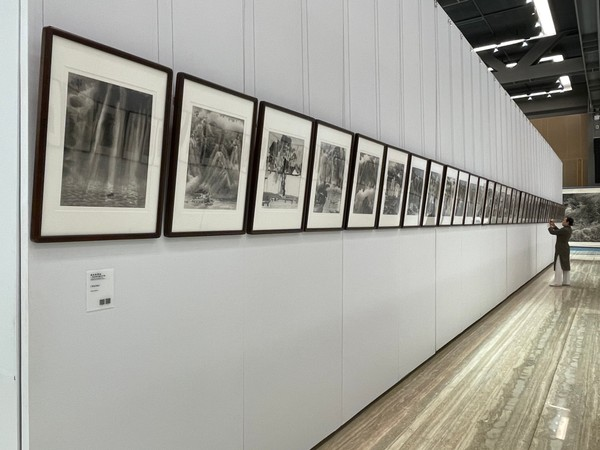
Exhibition Site
Artron.net: Not only large-scale works, we also saw many small-scale sketches at the exhibition site.
Lai: Those are all field sketches, a must for a painter. Nature is a great painter none of us can match, and it is far more daring in its changes than we can imagine. Human beings are inferior to nature, no matter in wisdom, ability or imagination, so we have to sketch in nature and learn from it. Every spring and autumn, I spend more than two months on sketching, because I think one must respect one's profession, no matter what it is. Otherwise, it is impossible to achieve success in perfunctory manner.
The Greatest Truths Are the Simplest
Artron.net: We see black, white and gray in your works, the purest ink colors. Why does it appeal to you? Why did you choose to study ink and wash?
Lai: I have spent many years in oil painting, but I finally chose ink and wash. Chinese Taoist philosophers believe that the greatest truths are the simplest, and the greatest beauty need no praise, which is consistent with the nature of ink and wash. Chinese ink and wash is the best carrier of such simplification, and I am finding the great beauty between heaven and earth in it.

Snow on the River 249x31cm
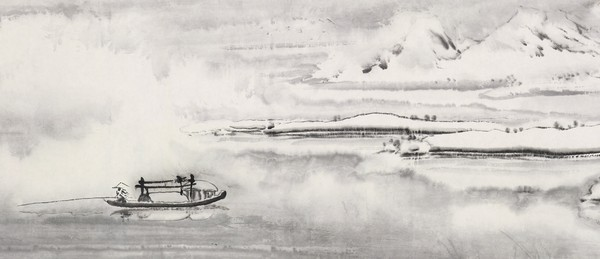
Snow on the River (Partial)
Simplification, however, is complexity in another sense. For example, this painting Snow on the River seems very simple, yet it reminds you of the poem with the same name, and the vast scene where there is only one fisherman in the whole snow world. Seemingly simple, Chinese ink and wash is indeed the best language to describe such great beauty.
Like the greatest beauty, my ink and wash painting is pure black and white, and I take “The Greatest Truths Are the Simplest” as my motto. Tao fits my state of mind and helps me express my thoughts. I think we should be simple in life and friendship, not complicated. I am very simple myself, all I want to do is draw.
Advance in Small Steps
Artron.net: What are the difficulties in applying the accumulated-ink method"?
Lai: The common hardening, dirty, and caking have stumped many novices. In a fast-paced modern society, it is not suitable for many people who want to run forward. Mr. Li Keran once sighed, "Accumulated-ink method has existed in ancient times, but there are still very few people who are good at it." So this is destined to be a lonely road.
Artron.net: What changes and innovations have you made to the traditional accumulated-ink method? What are the main contributing factors?
Lai: I mainly changed the styling. Objects painted with accumulated-ink method are usually thicker and more textured, and they are shocking in volume. So I tried to use accumulated-ink method to paint water, and a new form of expression was born. But this is mainly due to my solid foundation of basic skills. As I wrote in "Sentiments and Essays on Painting", "I have never taken a big step on the road of painting. I try to slow down, and even divide one step into two steps." When we say "one step at a time", we mean we must keep our feet on the ground. But I have to go even more cautiously in order to build upon the solid foundations of others. Just like the philosophy of Taoism in China, painting is also a cyclical process, and we will eventually return to the origin of basic skills.

The Poetic Conception of Travel Notes in Peach Blossom Land 366x48cm
Yearning for Fairy World
Artron.net: Why are you so keen on the theme of mist and clouds?
Lai: Probably because of my experience as a child. Back then, we were very poor, only my father had a job, and my parents were worried all day long. I wondered how life would be easy, and the answer was to be an immortal. If I were a god, I would not have to eat or spend money to lighten the burden on my family, and I could ride the clouds and live freely. This idea may have taken root in my heart since then, and I grew up with a soft spot for mist and clouds. You just mentioned that my paintings are a bit otherworldly, and this temperament is inseparable from clouds. Ever since I was a child, I have dreamed of being an immortal. Even if this cannot be achieved, I can still create an immortal temperament in my paintings and pursue a detachment from the mundane.

The Way of Clouds 960x250cm
Stick to Your Own Way Forward
Artron.net: After so many years on this road, why are you still working tirelessly?
Lai: I don't get bored because I keep changing. I require each of my paintings to be new, something I have never tried before, and to impress me first. I only draw what I am passionate about because I like to be challenged by new stimuli. When I was at the Central Academy of Fine Arts, someone told me that it is difficult to learn accumulated-ink, and it is difficult to paint with clouds. But I just like to challenge difficulties with creation, otherwise it would be meaningless. Like this, I have been constantly challenging and generating new visions. This kind of enjoyment from scratch is something that others cannot experience. I'm constantly perfecting myself, so I never feel empty or lost.
Inheritance and Development– Exhibition of Lai Zhigang’s Ink Art Launched at China National Acade
Time: 2022-04-18 Source: CNTV
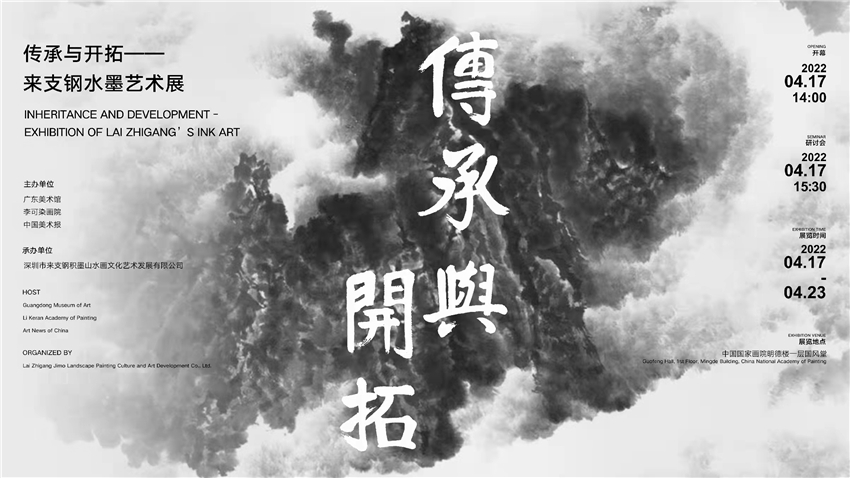
CNTV News (By Han Dan) On April 17, Inheritance and Development– Exhibition of Lai Zhigang’s Ink Art was launched at China National Academy of Painting. The exhibition is co-sponsored by Guangdong Art Museum, Li Keran Academy of Painting, and Art News of China, and organized by Shenzhen Lai Zhigang Jimo Landscape Painting Culture and Art Development Co., Ltd. With the theme of "Inheritance and Development", this exhibition summed up the artistic achievements of Lai Zhigang for more than 40 years and displayed more than 100 classic works of him.
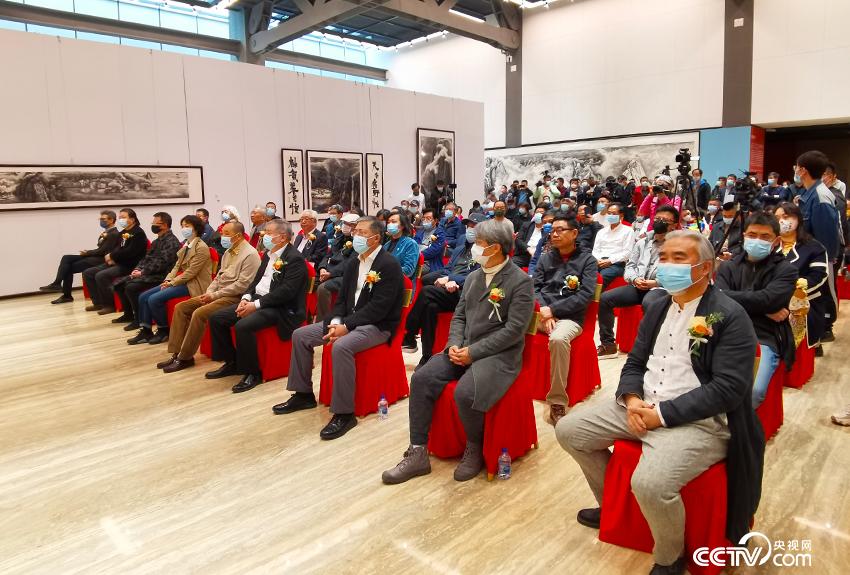
Opening Ceremony
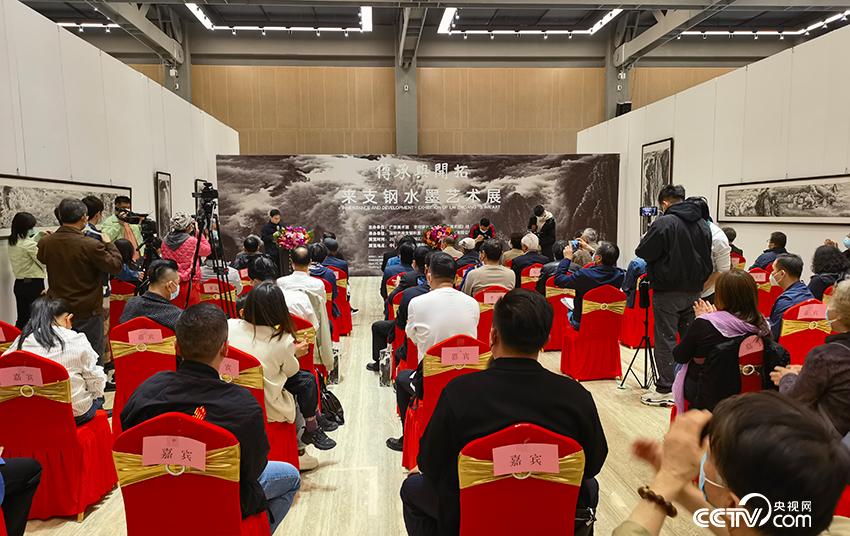
Opening Ceremony
Mr. Zou Peizhu’s inscription "Inheritance and Development" is not only his encouragement and expectation for Lai Zhigang, but also the artistic pursuit that Lai has never changed. In the past 40 years, he has studied traditional accumulated-ink techniques in depth, learned from the experience of Gong Xian, Huang Binhong, Li Keran and other predecessors of accumulated-ink landscape, and gradually became familiar with the laws of accumulated-ink language. Then, starting from what he inherited, he made progress in exploration, innovated in sketching, improved in pondering, and finally formed his own Lai style. His landscapes could be majestic and hazy, while his mist and clouds could be ethereal and carefree. They echo the theme of the era of pursuing self-confidence and self-improvement, and are also the embodiment of Lai's rich spiritual world. Lai paints mist and clouds with the accumulated-ink technique of layer upon layer of smudging, which has both momentum and heavy texture. This is ingeniously integrated with the idea of harmony between heaven and man, man and society that Taoism has always pursued in Chinese culture and art.
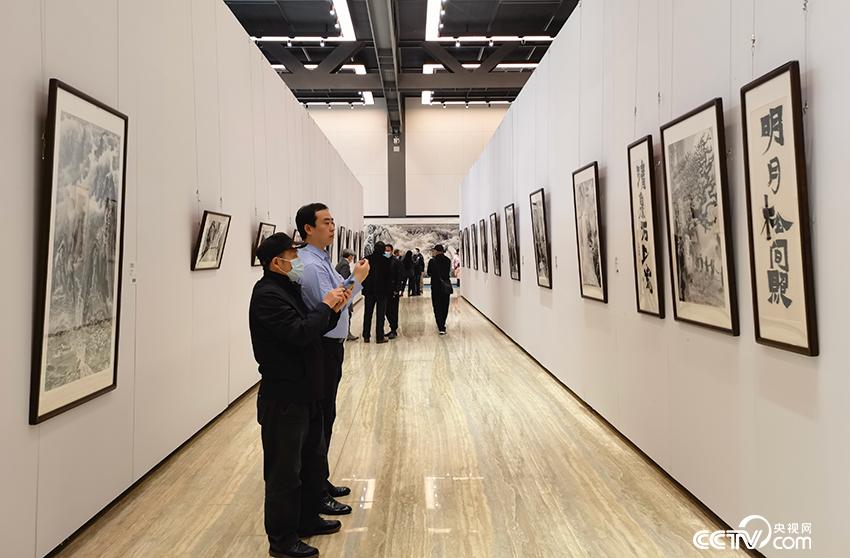
Exhibition Site
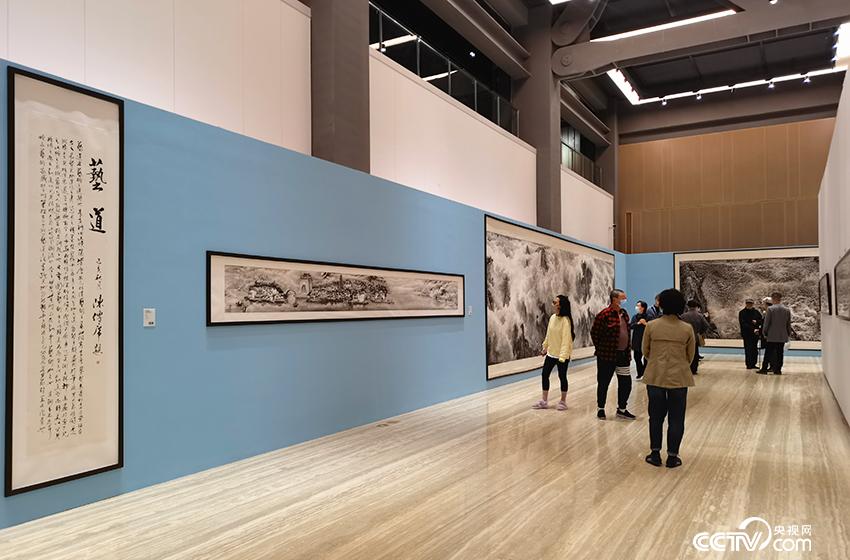
Exhibition Site
For this exhibition, the painter Lai Zhigang has brought more than a hundred masterpieces of various sizes, jumping styles, and pure artistic conception that have been painstakingly created over the years. They fully demonstrate his artistic talent, and seem to be echoing the poetic flavor of Cao Zhi, the representative and master of Jian'an Literature two thousand years ago. “With the gorgeous literary talent like spring flowers and the quick thinking like rushing spring water, what he says is melody, and what he writes is poetry.” Lai's works, such as The Way with Art, Spring Tide, and Mist and Clouds in Mount Huangshan, are super large in scale and majestic. In the depiction of mountains, rocks, clouds, water, etc., it integrates the vigorous style of Li Tang in the Southern Song Dynasty, with a large span and full of dynamics, showing a vigorous and strong momentum. In another batch of his scrolls, such as Dwelling in the Fuchun Mountains, The Great River Going East, and Snow on the River, delicate accumulated-ink brushstrokes present the moistness and denseness of natural landscapes such as sky, earth, water, and fog, highlighting an invigorating, moist and subtle texture. The transpiration and ethereal water mist has the charm of fairyland, which seems to pay tribute to the artistic conception of the ancients and lead the viewer out of the secular world. Another surprise in the exhibition is his sketches, which are small in size but full of interest. Lai integrates his feeling and brushwork in one go, exuding a natural frankness derived from the instinct of Tao.
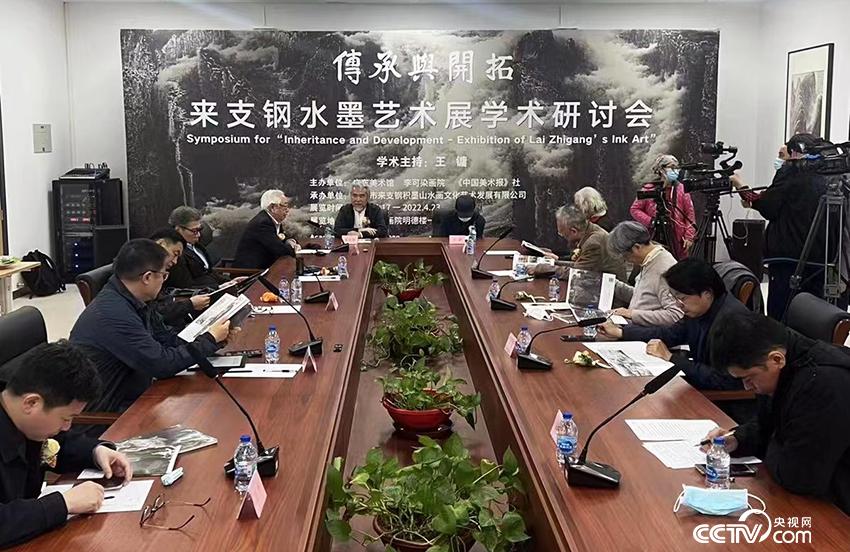
Academic Seminar
The opening ceremony was presided over by Wang Ping, President and Editor-In-Chief of Art News of China. Mr. Li Baolin, Member of the China National Academy of Painting, A Famous Painter, and Mr. Sun Ke, Former Vice President of the Chinese Painting Society and A Famous Art Theorist, jointly announced the opening of the exhibition. Attending the Opening Ceremony were Lu Yushun, President of the China National Academy of Painting, Xu Lian, Vice President of the China National Academy of Painting, Yu Wenjiang, Vice President of the China National Academy of Painting, Zeng Laide, Former Vice President of the China National Academy of Painting, Ji Lianbin, Former Vice President of the China National Academy of Painting, Wu Hongliang, President of the Beijing Academy of Painting, Shang Hui, President and Editor-In-Chief of Art, Li Geng, President of Li Keran Academy of Painting, Famous Art Theorists Wang Yong, Wang Zhong, etc.
It is reported that there was an academic seminar after the opening ceremony. The exhibition will close on April 23.
Works on display
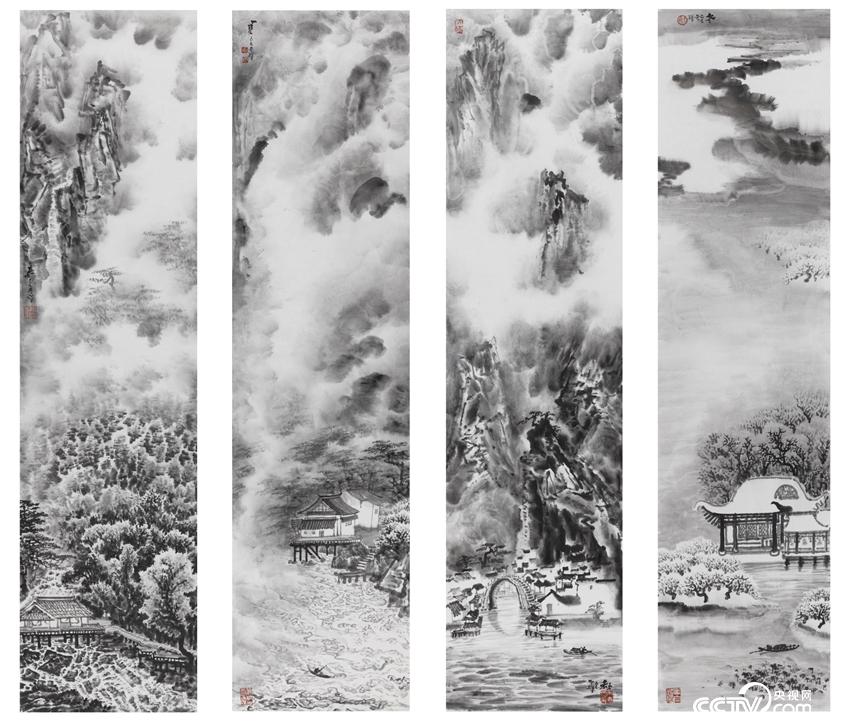
Spring, Summer, Autumn and Winter 138x34cmx4
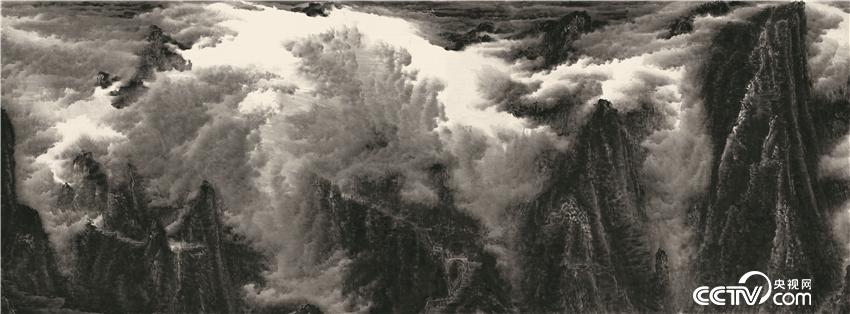
Mist and Clouds in Mount Huangshan 180x500cm

The Way of Clouds 960x250cm
Waterfall in Baishui Village 250x160cm
Herringbone Waterfall in Mount Huangshan 138x70cm
Fresh Mountain after Rain 68×136cm

Mountain above the Clouds 248x124cm
Water and Mist in the Gorge 68x45cm
Sketch 46x34cm
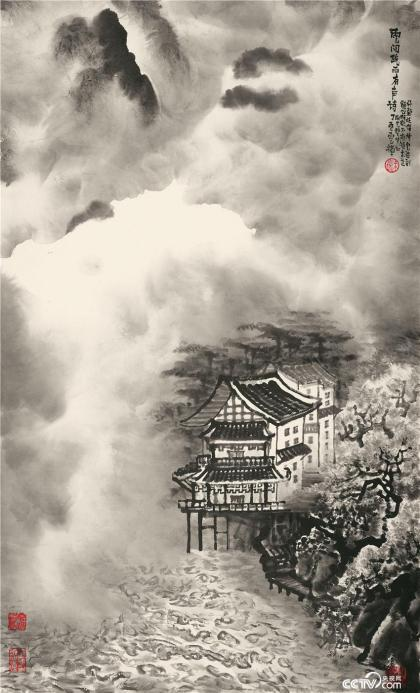
A Poem for Clouds and Rain 97x60cm
He brought the art of accumulated-ink art to the extreme, truly embodying the thick, majestic, gorgeo
Time: 2022-04-17 Source: Southern Metropolis Culture, S
"Facing Lai Zhigang's accumulated-ink landscape paintings, you will be enveloped, shocked, conquered, and moved by an emotional atmosphere like listening to the final movement of Pathétique Symphony. You can feel the solemnity and nobility in the picture, and what inspires you is undoubtedly the Chinese spirit of art.” said Wang Zhong, former deputy director of the theoretical committee of the China Artists Association and former editor-in-chief of Art.
On April 17, Inheritance and Development– Exhibition of Lai Zhigang’s Ink Art was launched at China National Academy of Painting. The exhibition is co-sponsored by Guangdong Art Museum, Li Keran Academy of Painting, and Art News of China, and organized by Shenzhen Lai Zhigang Jimo Landscape Painting Culture and Art Development Co., Ltd. With the theme of "Inheritance and Development", this exhibition summed up the artistic achievements of Lai Zhigang for more than 40 years and displayed more than 100 classic works of him. More than one hundred guests, media professionals, collectors, art lovers and all staff gathered together to enliven the atmosphere of the exhibition.
The opening ceremony was presided over by Wang Ping, president and editor-in-chief of Art News of China. Mr. Li Baolin, member of the China National Academy of Painting, a famous painter, and Mr. Sun Ke, former vice president of the Chinese Painting Society and a famous art theorist, jointly announced the opening of the exhibition. The subsequent academic seminar was chaired by the famous art theorist Wang Yong.
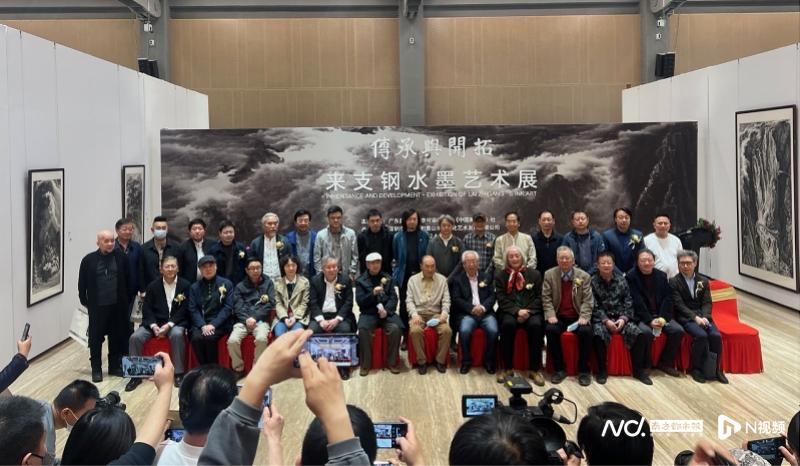
Group Photo of Guests at the Opening Ceremony

Academic Seminar
Mr. Zou Peizhu’s inscription "Inheritance and Development" is not only his encouragement and expectation for Lai Zhigang, but also the artistic pursuit that Lai has never changed. In the past 40 years, he has studied traditional accumulated-ink techniques in depth, learned from the experience of Gong Xian, Huang Binhong, Li Keran and other predecessors of accumulated-ink landscape, and gradually became familiar with the laws of accumulated-ink language. Then, starting from what he inherited, he made progress in exploration, innovated in sketching, improved in pondering, and finally formed his own Lai style. His landscapes could be majestic and hazy, while his mist and clouds could be ethereal and carefree. They echo the theme of the era of pursuing self-confidence and self-improvement, and are also the embodiment of Lai's rich spiritual world. Lai deserves to be a typical representative of contemporary accumulated-ink landscape painters.
For this exhibition, the painter Lai Zhigang has brought more than a hundred masterpieces of various sizes, jumping styles, and pure artistic conception that have been painstakingly created over the years. They fully demonstrate his artistic talent, and seem to be echoing the poetic flavor of Cao Zhi, the representative and master of Jian'an Literature two thousand years ago. “With the gorgeous literary talent like spring flowers and the quick thinking like rushing spring water, what he says is melody, and what he writes is poetry.”

The Way of Clouds 960x250cm 2015

The Way with Art 249x1134cm 2009
Lai's works, such as The Way with Art, Spring Tide, and Mist and Clouds in Mount Huangshan, are super large in scale and majestic. In the depiction of mountains, rocks, clouds, water, etc., it integrates the vigorous style of Li Tang in the Southern Song Dynasty, with a large span and full of dynamics, showing a vigorous and strong momentum.

Dwelling in the Fuchun Mountains 50x1000cm 2019

Snow on the River 249x31cm 2021
In another batch of his scrolls, such as Dwelling in the Fuchun Mountains, The Great River Going East, and Snow on the River, delicate accumulated-ink brushstrokes present the moistness and denseness of natural landscapes such as sky, earth, water, and fog, highlighting an invigorating, moist and subtle texture. The transpiration and ethereal water mist has the charm of fairyland, which seems to pay tribute to the artistic conception of the ancients and lead the viewer out of the secular world.
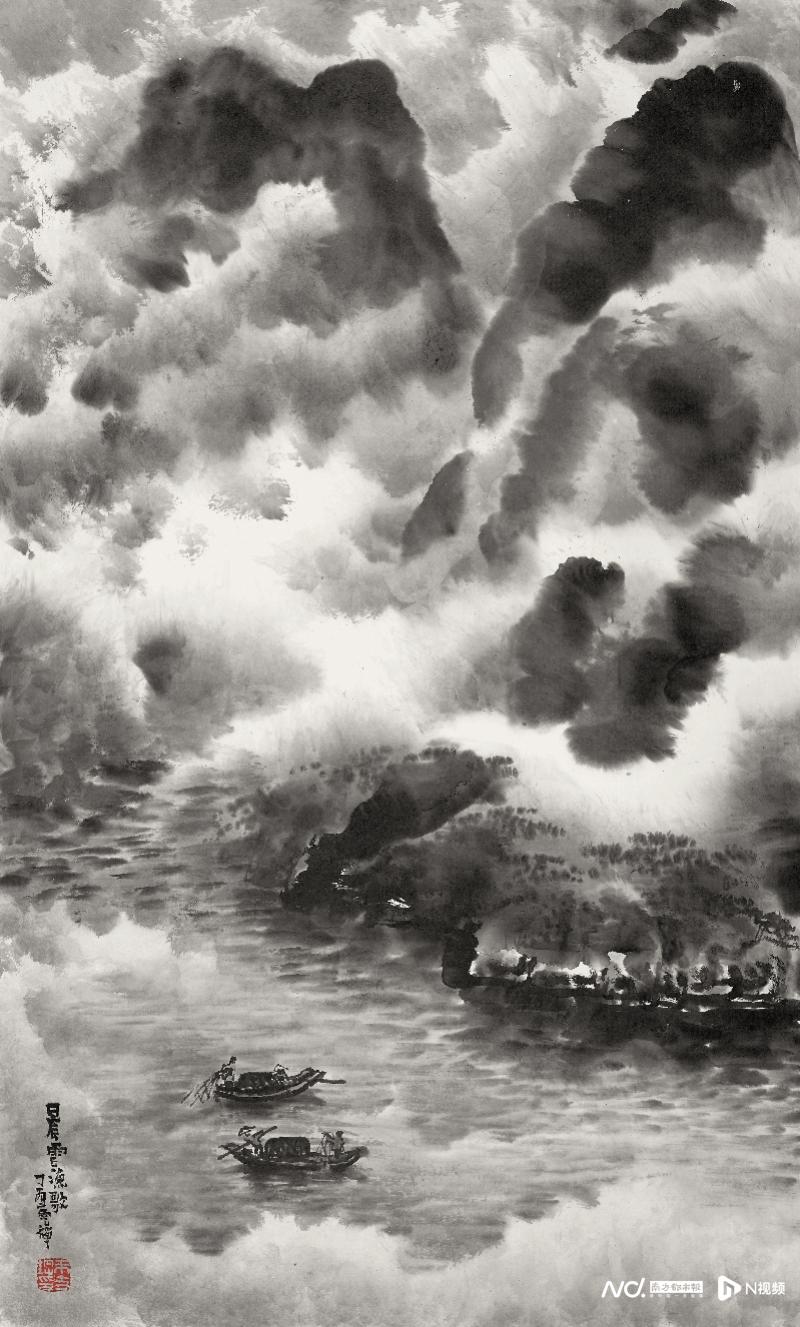
Morning Cloud and Fisherman's Song 97x60cm 2017

Seclusion in the Snow 70x46cm 2021
Another surprise in the exhibition is his sketches, which are small in size but full of interest. Lai integrates his feeling and brushwork in one go, exuding a natural frankness derived from the instinct of Tao.
Lai said that all his attention in painting is on "change" and "live". "Sincerity" is his attitude towards artistic pursuit, because the most important thing for an artist is to maintain innocence and a pure heart.
Lai paints mist and clouds with dense accumulated-ink techniques, highlighting the momentum and texture, and is consistent with the idea of harmony between nature and people, and between people and society that Taoism has always pursued in Chinese culture and art. “The truth connects all tangible and intangible things between heaven and earth, and thoughts permeate through the vicissitudes of the wind and clouds.” As a painter, Lai Zhigang infinitely approaches his "Tao" through the appearance of ink and wash works, and reproduces the pure nature of ink and wash for the viewer with sincerity.
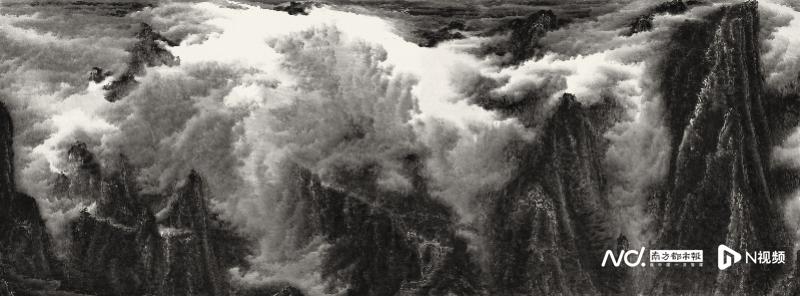
Mist and Clouds in Mount Huangshan 180x500cm 2010

Sage’s Domain 1375x250cm 2020

Rolling Clouds and Rushing Billows 97x60cm 2017
Chen Chuanxi, a professor at Renmin University of China, a doctoral supervisor, and a well-known art critic, praised, "Lai Zhigang's imposing and thick clouds and mountains are unique in both ancient and modern times. They are majestic and heavy, just in line with the image of New China. In particular, Lai's The Way with Art is, in my opinion, a representative of contemporary landscape painting that is particularly in line with the spirit of the times."
Wang Yong, a well-known art theorist and researcher of the Chinese National Academy of Arts, said, “With his new accumulated-ink landscape, Mr. Lai Zhigang has created a new style in the field of contemporary Chinese landscape painting. n a sense, he has successfully modernized the traditional Chinese landscape painting. He brought the accumulated-ink technique to the extreme, highlighting the thick, imposing, gorgeous, and moist effects of mountains and water. With the accumulated-ink technique, he has made up for the lack of momentum in the landscape paintings of the Song Dynasty, and such is also his personal creation."
The exhibition will be closed on April 23.
Inheritance and Development– Exhibition of Lai Zhigang’s Ink Art Launched at China National Acade
Time: 2022-04-17 Source: Inheritance and Development–
Inheritance and Development– Exhibition of Lai Zhigang’s Ink Art
From Huizhou to the capital, from private schools to colleges, to rest in Suzhou and Hangzhou, to be chic in Yunnan, Guizhou and Sichuan, to observe the elegant environment of literati, and to feel the atmosphere of mountains and rivers. From southern Anhui to the Himalayas, traveling thousands of miles, feeling the nature and nature, and understanding the true meaning of art.
A persistent painter,
A warrior chasing dreams,
And a staunch defender.
Lai Zhigang admired Fan Huayuan, Li Xigu and other sages since he was a child, and later learned from the experience of Gong Xian, Huang Binhong, Li Keran and other predecessors. He has been overcoming obstacles on the road of accumulated-ink and opened up his own smooth path. From the very beginning, he never gave up the dream of chasing "freedom, ink painting and Tao".
After decades of painstaking research and hard work, Lai has created a gorgeous world of his own. His "Art·Tao" is hailed as a representative of the classic masterpieces of contemporary Chinese landscape painting, and theorists praised his works of smoke and clouds as unique both in ancient and modern times. He is Lai Zhigang, the painter.
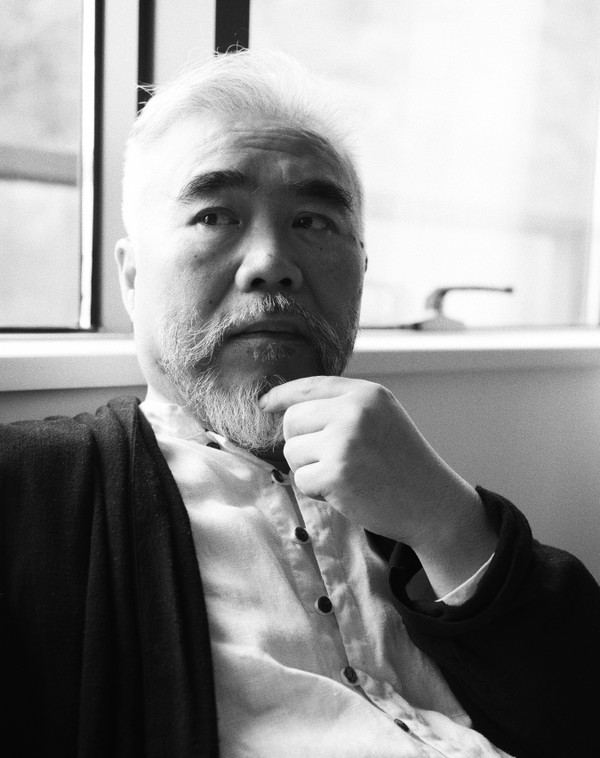
On April 17, 2022, Inheritance and Development– Exhibition of Lai Zhigang’s Ink Art was launched at China National Academy of Painting. The exhibition is co-sponsored by Guangdong Art Museum, Li Keran Academy of Painting, and Art News of China, and organized by Shenzhen Lai Zhigang Jimo Landscape Painting Culture and Art Development Co., Ltd. With the theme of "Inheritance and Development", this exhibition summed up the artistic achievements of Lai Zhigang for more than 40 years and displayed more than 100 classic works of him. More than one hundred guests, media professionals, collectors, art lovers and all staff gathered together to enliven the atmosphere of the exhibition.
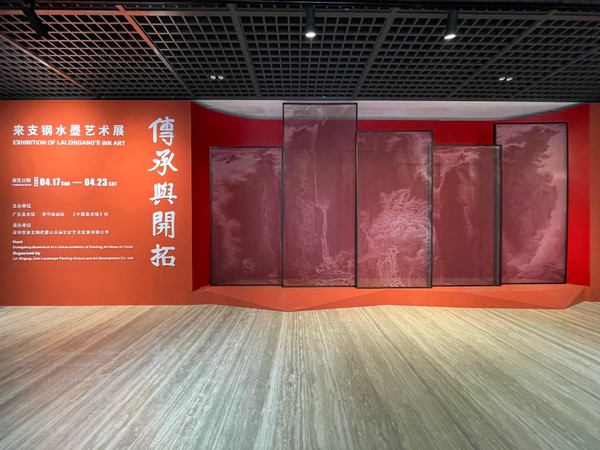
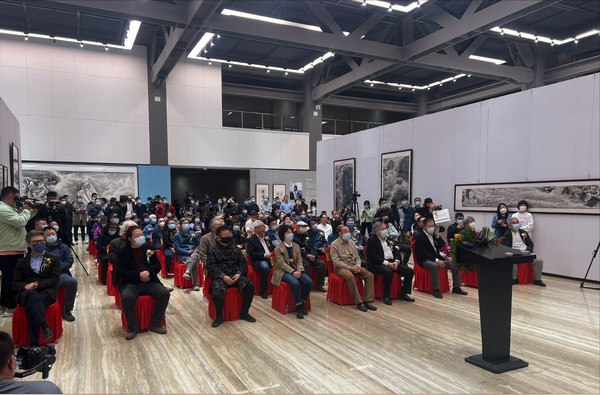
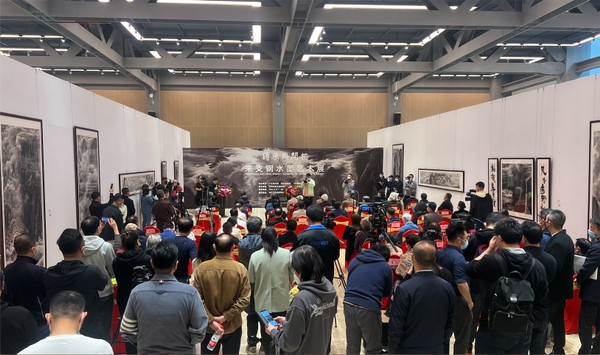
Opening Ceremony of the Exhibition
The opening ceremony was presided over by Wang Ping, president and editor-in-chief of Art News of China. Mr. Li Baolin, member of the China National Academy of Painting, a famous painter, and Mr. Sun Ke, former vice president of the Chinese Painting Society and a famous art theorist, jointly announced the opening of the exhibition. The subsequent academic seminar was chaired by the famous art theorist Wang Yong.

Group Photo at the Opening Ceremony
Attending the opening ceremony were Lu Yushun, President of China National Academy of Painting, Xu Lian, Vice President of China National Academy of Painting, Yu Wenjiang, Vice President of China National Academy of Painting, Zeng Laide, Former Vice President of China National Academy of Painting, Ji Lianbin, Former Vice President of China National Academy of Painting, Wu Hongliang, Dean of Beijing Academy of Painting, Shang Hui, Director of Fine Arts Theory Committee of China Artists Association, President and Editor-In-Chief of Art, Li Geng, the Dean of Li Keran Academy of Painting and Professor At Kyoto University of the Arts In Japan; Wang Yong, Researcher At the Chinese Academy of Arts and Famous Art Theorist, Wang Zhong, Former Editor-In-Chief of "Art" Magazine and Famous Art Theorist; Sun Ke, Former Vice President of the Chinese Painting Society and Famous Art Theorist; Wang Luxiang, Cultural Scholar and Researcher At the China National Academy of Painting; Chen Chuanxi, Professor At Renmin University of China and Famous Art Theorist; Tang Li, Researcher At the China National Academy of Arts and Famous Painter; Fang Tu, Director of the Art Museum of the China National Academy of Painting; He Jialin, Former Director of the Art Museum of the China National Academy of Painting; Wang Yongliang, Painter of the China National Academy of Painting; Wang Fumin, Honorary Director of the Figure Painting Institute of the China National Academy of Painting; Li Xiaozhu, Director of the Figure Painting Institute of the China National Academy of Painting; Shang Ke, Director of the Exchange and Cooperation Department of the China National Academy of Painting, Professor of Nanjing University of the Arts; Dong Lei, Director of the Creation and Research Planning Department of the China National Academy of Painting; Zhang Gan, Professor and Doctoral Supervisor of the Academy of Fine Arts, Tsinghua University; Yu Yang, Professor of the Central Academy of Fine Arts and Deputy Director of the National Thematic Art Creation Research Center; Chen Chen, Deputy Director of the Theoretical Research Institute of the China National Academy of Painting Ming; Xu Shuiping, Deputy Director of the Research and Planning Department of the China National Academy of Painting; Zhang Yuan, Deputy Director of the Fine Arts of China; Wang Shili, Famous Painter; Li Ming, Calligrapher.
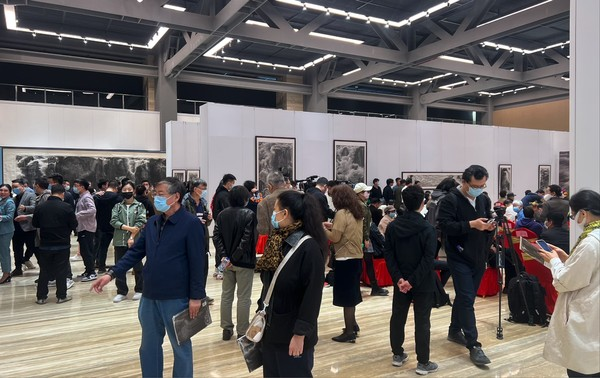
Exhibition Site
Mr. Zou Peizhu’s inscription "Inheritance and Development" is not only his encouragement and expectation for Lai Zhigang, but also the artistic pursuit that Lai has never changed.
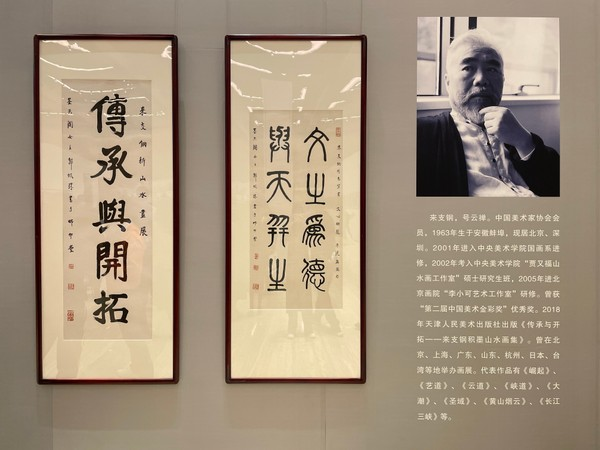
Exhibition Site
In the past 40 years, he has studied traditional accumulated-ink techniques in depth, learned from the experience of Gong Xian, Huang Binhong, Li Keran and other predecessors of accumulated-ink landscape, and gradually became familiar with the laws of accumulated-ink language. Then, starting from what he inherited, he made progress in exploration, innovated in sketching, improved in pondering, and finally formed his own Lai style. His landscapes could be majestic and hazy, while his mist and clouds could be ethereal and carefree. They echo the theme of the era of pursuing self-confidence and self-improvement, and are also the embodiment of Lai's rich spiritual world. Lai deserves to be a typical representative of contemporary accumulated-ink landscape painters.
Exhibition Site
For this exhibition, the painter Lai Zhigang has brought more than a hundred masterpieces of various sizes, jumping styles, and pure artistic conception that have been painstakingly created over the years. They fully demonstrate his artistic talent, and seem to be echoing the poetic flavor of Cao Zhi, the representative and master of Jian'an Literature two thousand years ago. “With the gorgeous literary talent like spring flowers and the quick thinking like rushing spring water, what he says is melody, and what he writes is poetry.” Lai's works, such as The Way with Art, Spring Tide, and Mist and Clouds in Mount Huangshan, are super large in scale and majestic. In the depiction of mountains, rocks, clouds, water, etc., it integrates the vigorous style of Li Tang in the Southern Song Dynasty, with a large span and full of dynamics, showing a vigorous and strong momentum. In another batch of his scrolls, such as Dwelling in the Fuchun Mountains, The Great River Going East, and Snow on the River, delicate accumulated-ink brushstrokes present the moistness and denseness of natural landscapes such as sky, earth, water, and fog, highlighting an invigorating, moist and subtle texture. The transpiration and ethereal water mist has the charm of fairyland, which seems to pay tribute to the artistic conception of the ancients and lead the viewer out of the secular world.
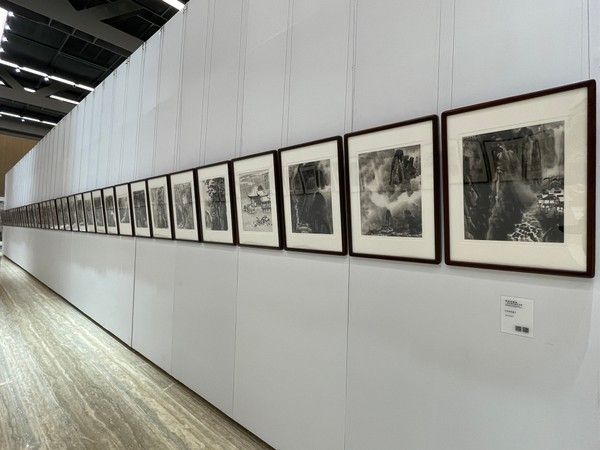
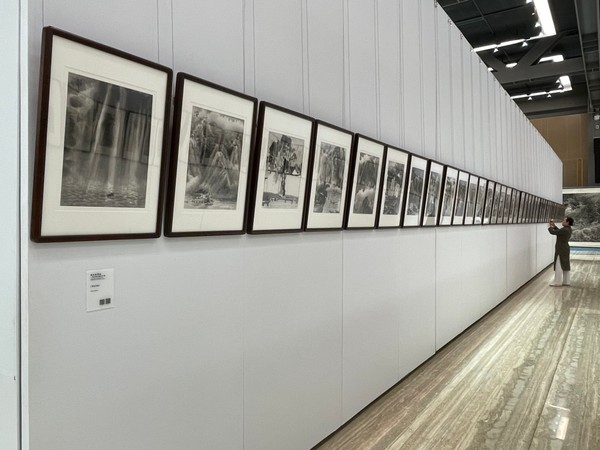
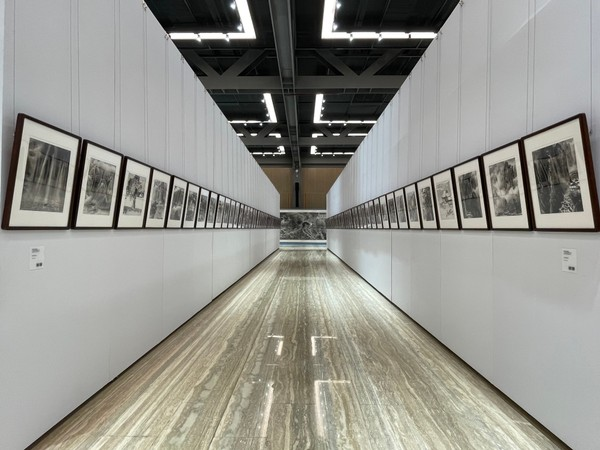
Exhibition Site
Another surprise in the exhibition is his sketches, which are small in size but full of interest. Lai integrates his feeling and brushwork in one go, exuding a natural frankness derived from the instinct of Tao.
Exhibition Site
Lai said that all his attention in painting is on "change" and "live". "Sincerity" is his attitude towards artistic pursuit, because the most important thing for an artist is to maintain innocence and a pure heart.
Lai paints mist and clouds with dense accumulated-ink techniques, highlighting the momentum and texture, and is consistent with the idea of harmony between nature and people, and between people and society that Taoism has always pursued in Chinese culture and art. “The truth connects all tangible and intangible things between heaven and earth, and thoughts permeate through the vicissitudes of the wind and clouds.” As a painter, Lai Zhigang infinitely approaches his "Tao" through the appearance of ink and wash works, and reproduces the pure nature of ink and wash for the viewer with sincerity. It is worth admiring.
Exhibition Site
In the afternoon, an academic seminar on "Inheritance and Development– Exhibition of Lai Zhigang’s Ink Art" was held. Experts participating in the seminar: Wang Yong, A Researcher At the China Academy of Arts and A Famous Art theorist (Academic Chair); Sun Ke, the Former Vice President of the Chinese Painting Society and A Famous Art theorist; Wang Zhong, the Former Editor-In-Chief of Art and A Famous Art theorist; Professor and Famous Art theorist At Renmin University of China Art theorist Chen Chuanxi; Shang Hui, Director of the Art theory Committee of the China Artists Association, President and Editor-In-Chief of Art; Wang Luxiang, A Famous Cultural Scholar and Researcher At the China National Academy of Painting; Wu Hongliang, President of the Beijing Academy of Painting; Wang Ping, President and Editor-In-Chief of Art News of China; Zhang Gan, Professor and Doctoral Supervisor of the Academy of Fine Arts of Tsinghua University; Yu Yang, Professor of the Central Academy of Fine Arts and Deputy Director of the National thematic Art Creation Research Center; Chen Ming, Deputy Director of the Theoretical Research Institute of the China National Academy of Painting. The famous art theorist Liu Xilin sent s handwritten letter to the seminar.
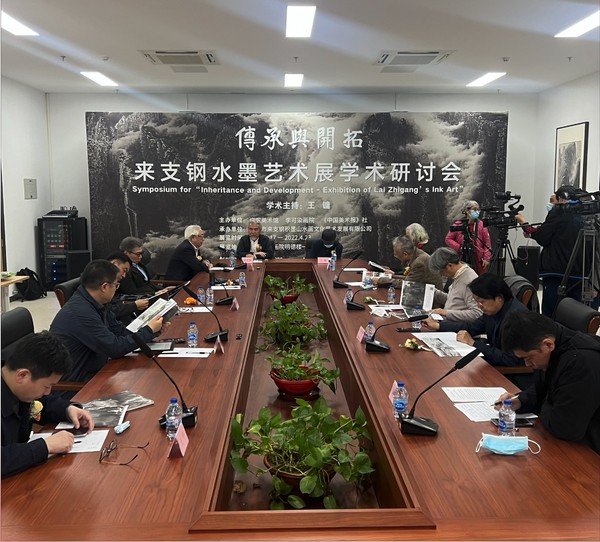
Seminar Site
The exhibition will be closed on April 23.
Some of the works on display
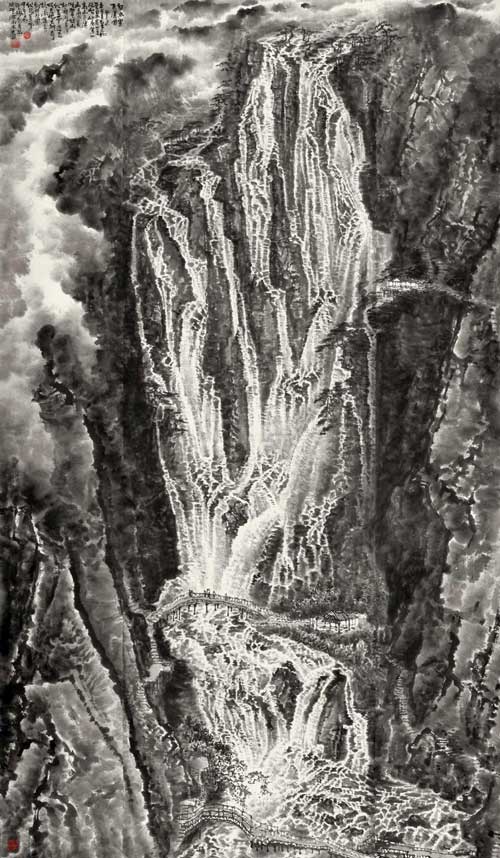
Waterfall in Baishui Village 250x160cm
Spring, Summer, Autumn and Winter 138x34cm
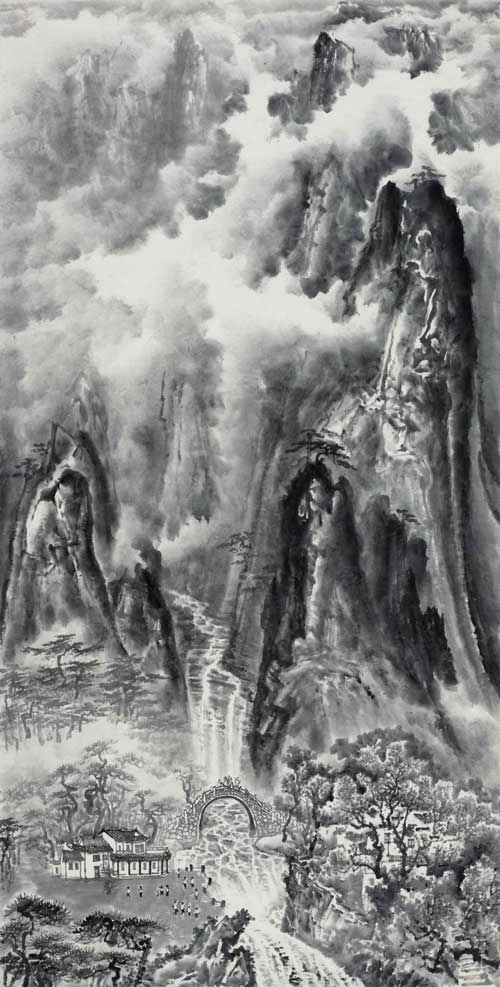
Herringbone Waterfall in Mount Huangshan 138x70cm
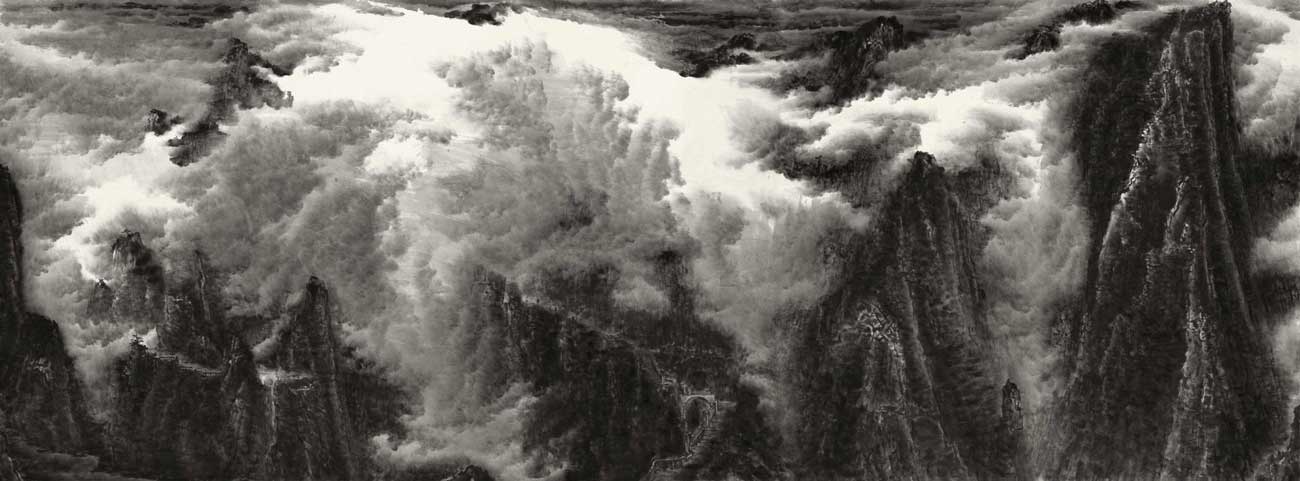
Mist and Clouds in Mount Huangshan 180x500cm
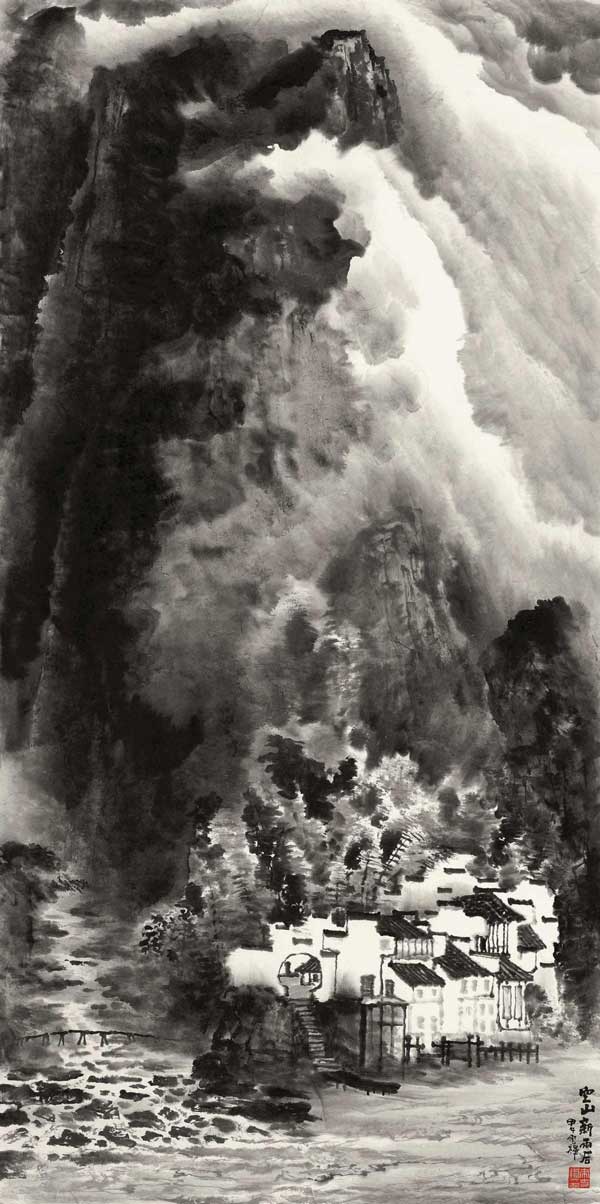
Fresh Mountain after Rain 68×136cm
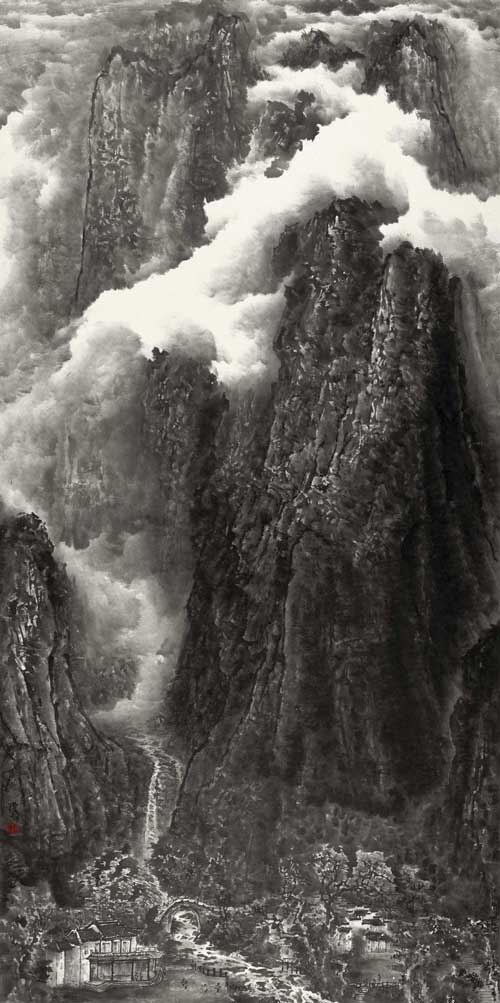
Mountain above the Clouds 248x124cm

The Poetic Conception of Travel Notes in Peach Blossom Land 366x48cm
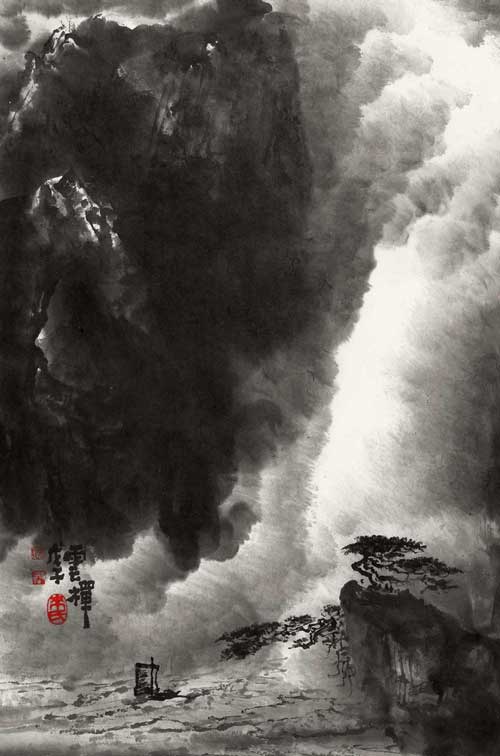
Water and Mist in the Gorge 68x45cm
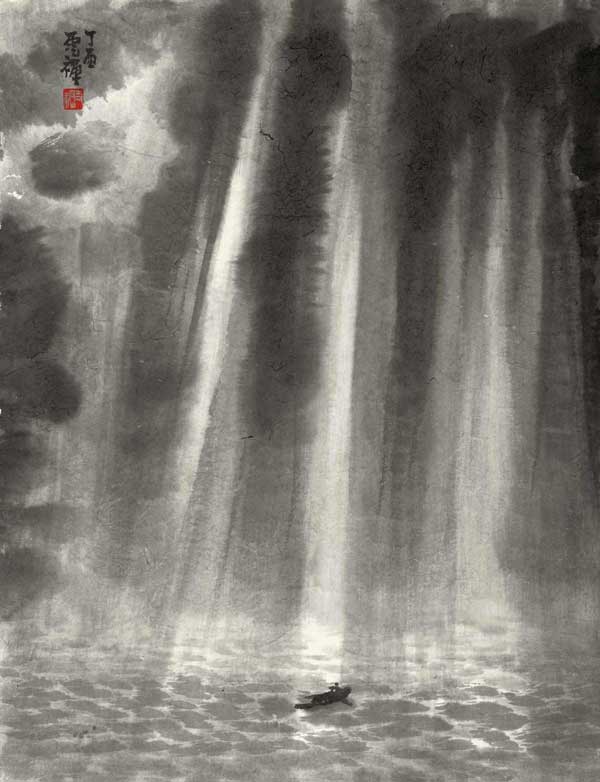
Sketch 46x34cm

The Way with Art 249x1134cm

The Way of Clouds 960x250cm
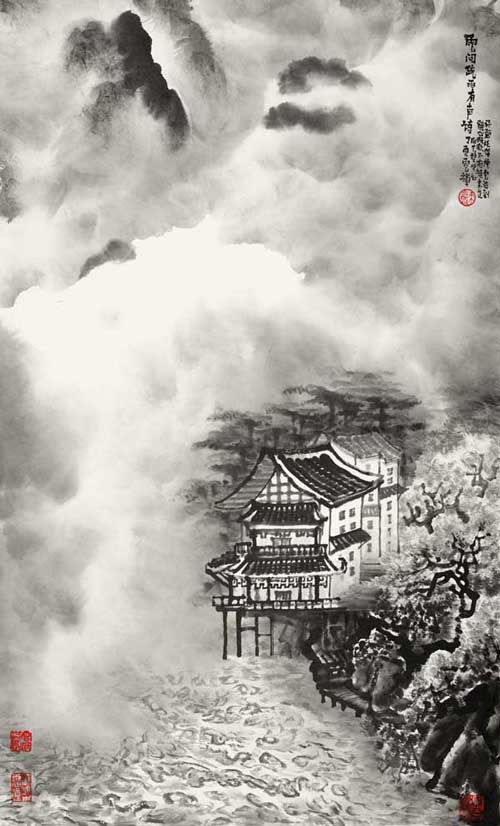
A Poem for Clouds and Rain 97x60cm
Lai Zhigang’s 1st Solo Exhibition in Taiwan Sparked Heated Discussions in Academic Circles Across t
Time: 2019-09-09 Source: Art News of China
On September 7, the symposium on "Inheritance and Innovation of Lai Zhigang’s Accumulated-ink Landscape" was held in the 1F Yat-Sen Lecture Hall on the 1st floor of the Sun Yat-Sen Memorial Hall. This marks an in-depth academic exchange and discussion after the opening of the exhibition of Lai Zhigang's accumulated-ink landscape in Taiwan.
Symposium on the First Exhibition in Taiwan of Lai Zhigang’s Accumulated-ink Landscape
The two-session symposium was hosted by Huang Guangnan, a well-known scholar and former president of National Taiwan University of Arts. Participating in the first session were Huang Guangnan, a well-known scholar and former president of National Taiwan University of Arts, Chen Chuanxi, a well-known art historian and critic in China, Li Zhenming, former dean of the College of Art at National Taiwan Normal University, and artist Lai Zhigang.
The first session of the symposium (from left): Lai Zhigang, Huang Guangnan, Chen Chuanxi, Li Zhenming
Participating in the second session were Lin Zhanghu, former dean of the Academy of Fine Arts, Taipei National University of the Arts, Xiong Yijing, curator and former editor-in-chief of Grand View, Liu Wenjie, a well-known collector, and artist Lai Zhigang.
The second session of the symposium (from left): Lai Zhigang, Lin Zhanghu, Xiong Yijing, Liu Wenjie
The guests had an in-depth and enthusiastic artistic exchange on the theme of "Inheritance and Innovation of Lai Zhigang's Accumulated-ink Landscape".
Huang Guangnan, a well-known scholar and former president of National Taiwan University of Arts, is an accomplished ink artist in Taiwan, who has a unique and profound understanding of ink-based creations. He has been invited to hold 25 solo exhibitions and more than 30 joint exhibitions at home and abroad. He believes that Lai Zhigang's works are simple yet profound and powerful, which is the perfect combination of "quality" and "quantity". He said that Lai grasped the essence of the things he expressed when creating, so his works can be so thick, deep and rich in layers. Moreover, when we look at the entire picture of his works, we can feel the bursting power of this era through the depicted objects such as water, mountains, stones, and clouds.
Chen Chuanxi, a well-known art critic known as the "father of modern art history research", is one of the most prestigious art historians and theorists in China, who highly affirmed the contemporary significance of Lai's works from a theoretical perspective. He said that for a painter, a single flaw in a painting may overshadow all its strengths. He thinks Lai's paintings are distinctive enough to stand out from many similar works of the majestic genre. Lai's clouds are both imposing and thick, showing his first-class painting skills both in ancient times and in the present. Lai understands tradition very well, and insists on developing based on traditional techniques, showing a majestic, vigorous and firm spirit of the times. This is remarkable, and this is what Lai’s paintings mean for the present.
The Way with Art (Partial)
Li Zhenming, former dean of the College of Art at Taiwan Normal University, is a well-known contemporary ink painter in Taiwan. His creations have set a benchmark for the diverse styles of ink painting in Taiwan. During the discussion, he emphasized the reference significance of Lai's accumulated-ink method to the art circle in Taiwan. He said that in Lai's works, many techniques require not large-scale dyeing but stroke-by-stroke painting, which is moving and shocking. At a time when Taiwanese painters prefer exquisite beauty, it may be worth thinking about the possibility of building a large visual style in their works.
Lin Zhanghu, former dean of the Academy of Fine Arts at Taipei National University of the Arts and a doctor of fine arts at the Central Academy of Fine Arts, is good at using modern ink painting techniques in a variety of ways to express his mood, and has a unique understanding of brush and ink expression. He affirmed the significance of Lai's works from the contemporary nature of brush and ink. He believes that the contemporary nature of ink and wash should be a unique cultural concept extracted from traditional brush and ink, which helps to convey true feelings through traditional techniques. Lai blazed a path of personal spirituality with accumulated-ink landscape works. There are layers in his ink, and more delicate layers in the composition where the virtual and the real are intertwined. These special images of clouds, water, light and shadow are refreshing.
Travel from Three Gorges to Huashan via Shennongjia (16)
Xiong Yijing has successively served as the editor-in-chief of well-known art magazines such as Collection and Grand View in Taiwan. As a well-known curator, he has curated large-scale exhibitions such as the 20th Anniversary Exhibition of Xizhi Hall: "From Subject to Object-Selection of Modern Chinese Painting and Calligraphy". He talked about how Lai's landscape paintings inspired him. He said that Lai's sincerity and dedication to painting are very valuable to the younger generation. Secondly, there is a certain spirit in Lai's works that is in line with Li Keran's daring to express himself in a pioneering and innovative way. secondly, there is a certain spirit in Lai's works that is in line with Li Keran's daring to express himself in a pioneering and innovative way. Thirdly, his concept of sketching is very much in line with the principles of Chinese sketching, that is, learning from nature and then expressing one's state of mind. This is what he has always insisted on painting with hone’s mind.
Liu Wenjie, a well-known collector who is famous for collecting paintings and calligraphy by famous modern masters such as Li Keran and Qi Baishi, created the appreciation of Chinese calligraphy and painting with Liu Wenjie's Analysis of Calligraphy and Painting and Liu Wenjie's Re-analysis of Calligraphy and Painting. He believes that Lai's use of ink accumulation to draw clouds is a kind of innovation, and Lai has a very deep foundation in the language and expression forms of accumulation of ink. Lai pursues great beauty, so his works are very worthy of appreciation.
A Poem for Clouds and Rain
Artist Lai Zhigang said that he realizes that he should not be afraid of hardship and loneliness while studying. "As long as you climb up the ladder of difficulty, you can get higher and higher and acquire more skills, then you can draw whatever you want in the future."
Learning from nature and painting with sincerity, such an artist with no official position, no title, and no academic qualifications has moved the art and academic circles of Taiwan deeply with his works. Such is the charm of Lai Zhigang’s art.
Lin Zhanghu, former dean of the Academy of Fine Arts, Taipei National University of the Arts, once praised in his poem, “Lai carried forward Mr. Li Keran's artistic style and added his own unique innovations. Whoever has artistic attainments has the right to speak. Lai set an example for us with the technique of accumulating ink.”
[Records of Chinese Painting] Lai Zhigang's First Solo Exhibition in Taiwan of Accumulated-ink Landsc
Time: 2019-09-08 Source: 本站

Accumulated Ink: A Landscape Painting Collection by Lai Zhigang
(Lai's First Solo Exhibition in Taiwan)
September 4, 2019
Opening Ceremony at 3F Yat-Sen Gallery of Sun Yat-Sen Memorial Hall in Taipei
Curated by Ms. Chen Xiaojun, General Manager of Xizhi Hall
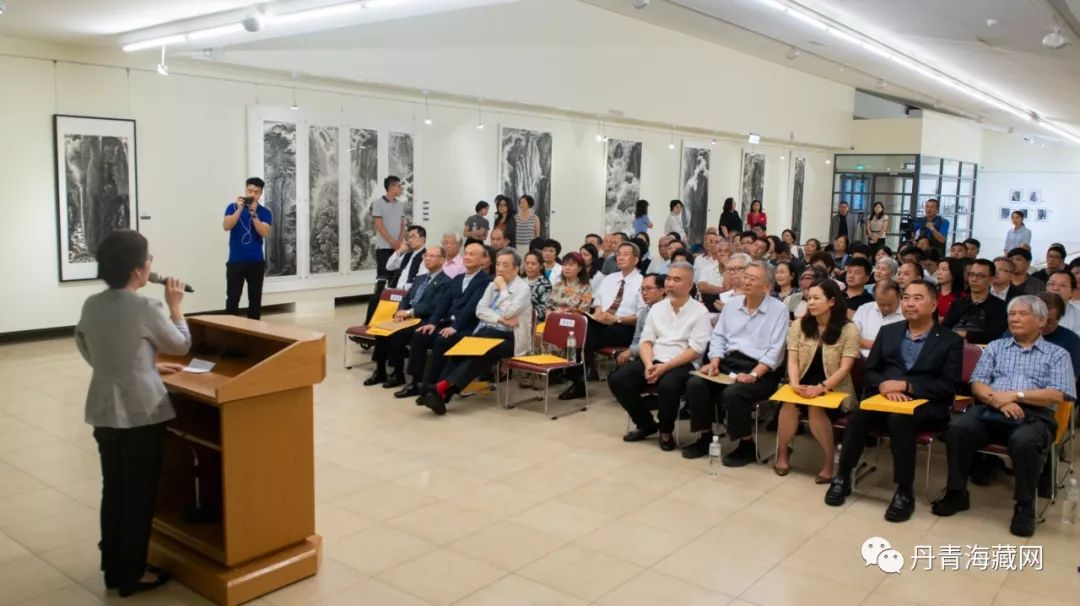
01
Guests
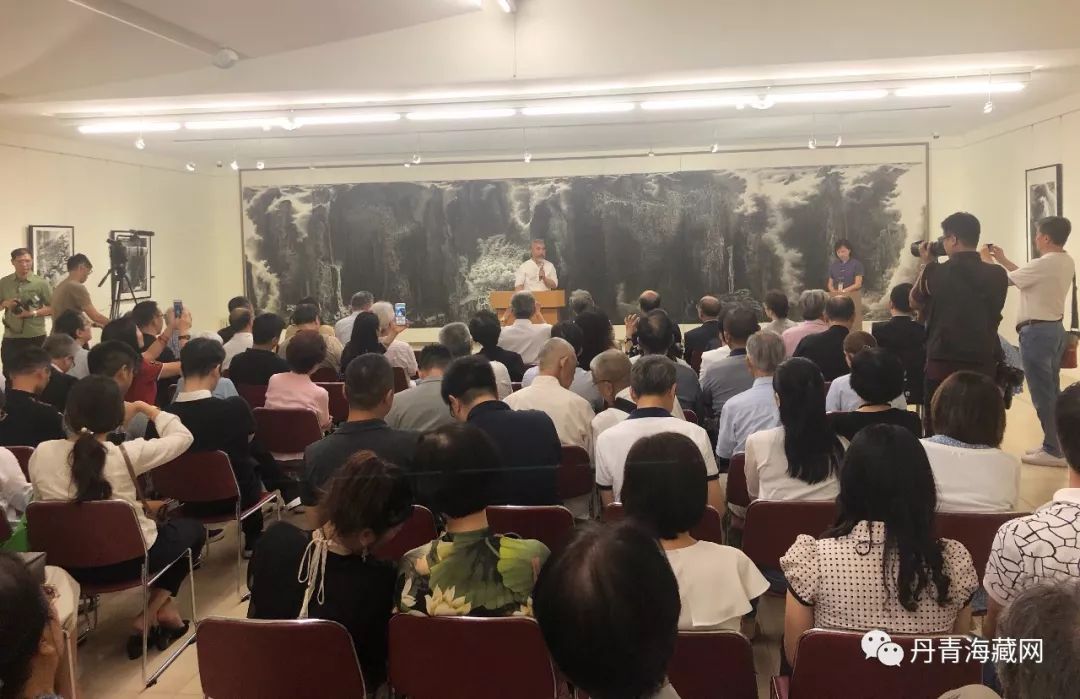
Huang Guangnan, A Well-Known Scholar and Former President of National Taiwan University of Arts
Chen Chuanxi, A Well-Known Art Critic
Lin Muhe, Former Director of Qingwan Yaji and the Chinese Cultural Relics Society
Wen Yuru, Chief Financial officer of Dabaihui Group
Chen Xiaojun, General Manager of Xizhi Hall
Wang Dingqian, Senior Collector
Shi Jinsheng, Senior Collector
Chen Dexin, Former Executive Vice Minister of the Ministry of Science and Technology
Zhang Cailian, Chairman of Dabaihui Life and Health Industry
Lin Zhanghu, Former Dean of the Academy of Fine Arts, Taipei National University of the Arts
Jiang Mingxian, Former Director of the Fine Arts Department of Taiwan Normal University
Wang Zhenhua, Chairman of Ravenel
Qing Minliang, Former Director of the Cultural Affairs Bureau of New Taipei
Zhou Kangsheng, Chairman of the Chinese General Cultural Exchange Association
Legislative Members Xu Zhirong and Chen Chaoming
Artist Wu Jitao
Photographer Zhuang Ling and His Wife Chen Xiasheng
…………
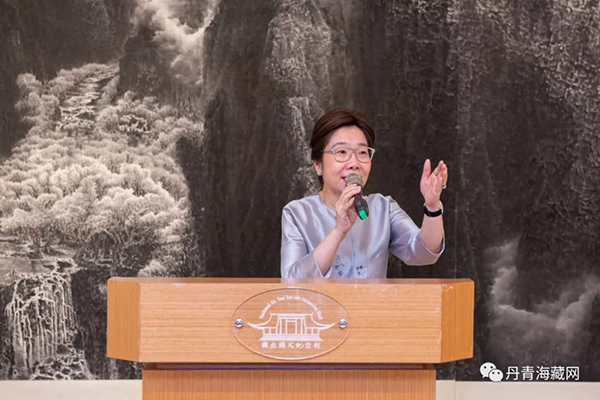
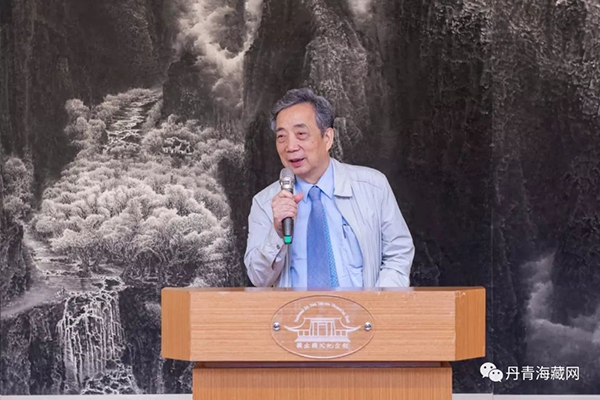
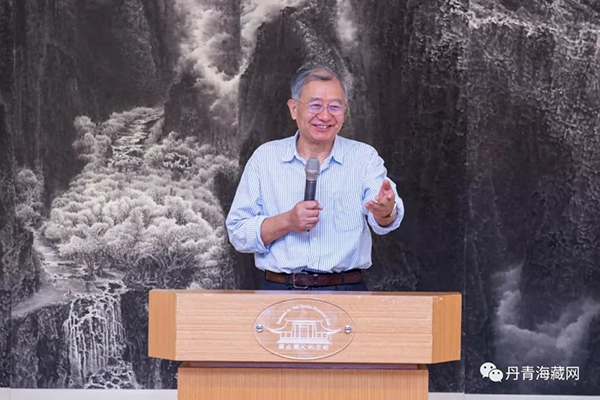
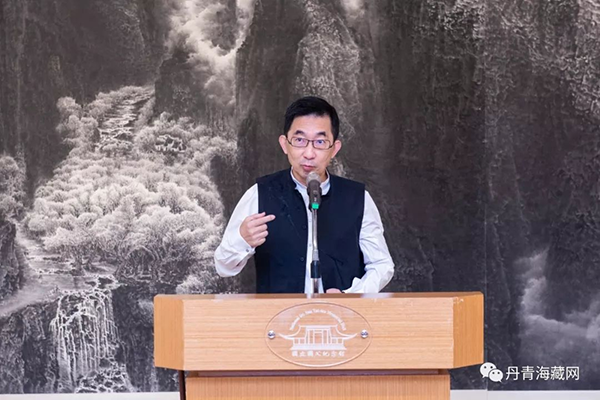
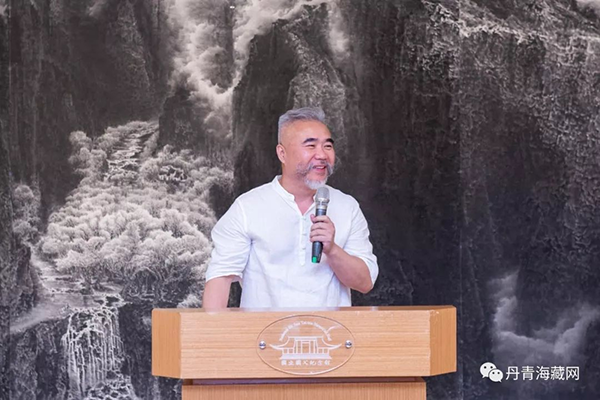
Guests delivering speeches at the opening ceremony
From left: Chen Xiaojun, Huang Guangnan, Chen Chuanxi, Wang Dingqian, Lai Zhigang
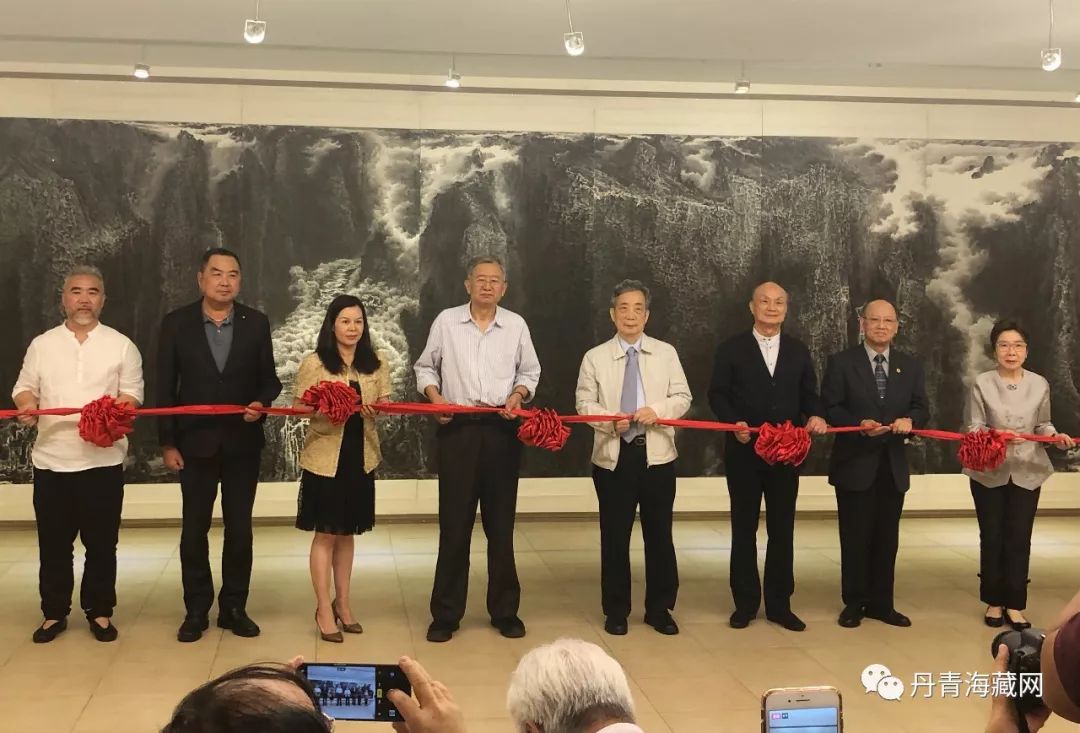
Ribbon cutting at the opening ceremony
(From left: Lai Zhigang, Xu Zhirong, Wen Yuru, Chen Chuanxi, Huang Guangnan, Lin Muhe, Chen Dexin, Chen Xiaojun)

02
Academic Perspectives of Guests
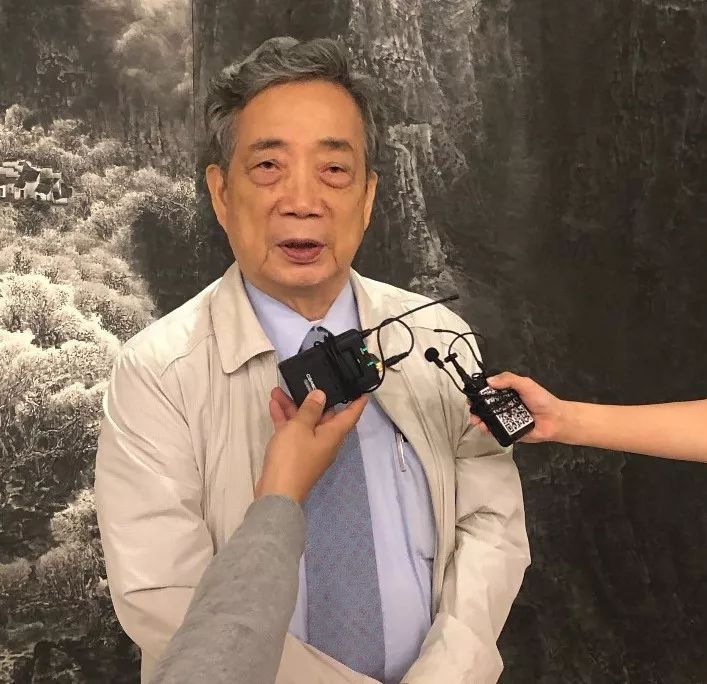
Huang Guangnan | Well-known Scholar, Former President of National Taiwan University of Arts
Lai Zhigang's The Way with Art and Dwelling in the Fuchun Mountains and other masterpieces illuminate the ink aesthetics of this century with their momentum and simplicity, and enrich the soul of Chinese landscape painting. His work deserves to be admired by all of us, art practitioners or not.

The Way with Art
249x1134cm
2009

Chen Chuanxi | Well-known Scholar, Art Critic
Lai Zhigang's The Way with Art is a representative of contemporary landscape painting. It is especially in line with the spirit of the times, and it is a masterpiece of majesty and vigor. No one has surpassed him in this regard.

Dwelling in the Fuchun Mountains (Partial)

Dwelling in the Fuchun Mountains (Partial)

Dwelling in the Fuchun Mountains (Partial)
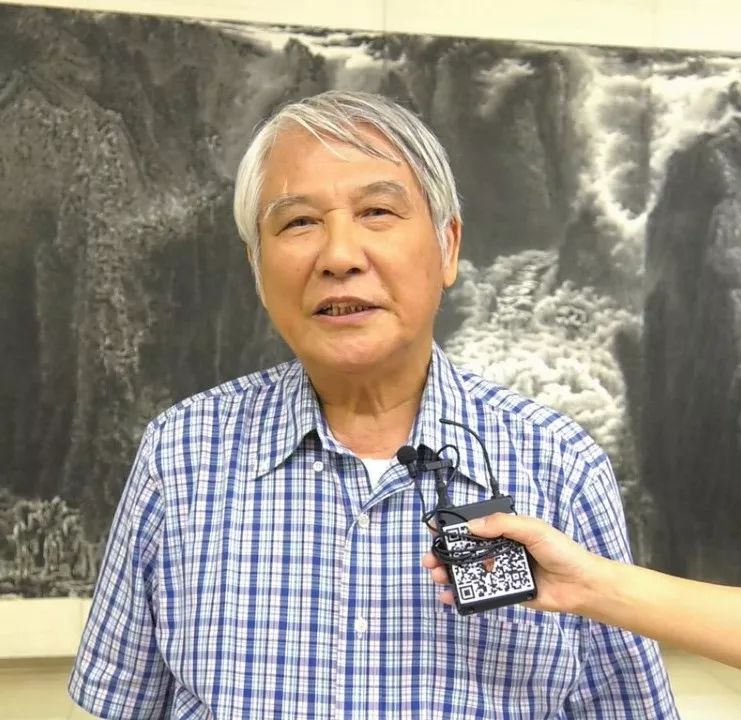
Jiang Mingxian | Former Director of the Fine Arts Department of Taiwan Normal University
Broad and far-reaching, the works of Mr. Lai Zhigang are really shocking. His small-scale works can also be extended to a large realm, showing a majestic momentum. This is a wonderful exhibition.
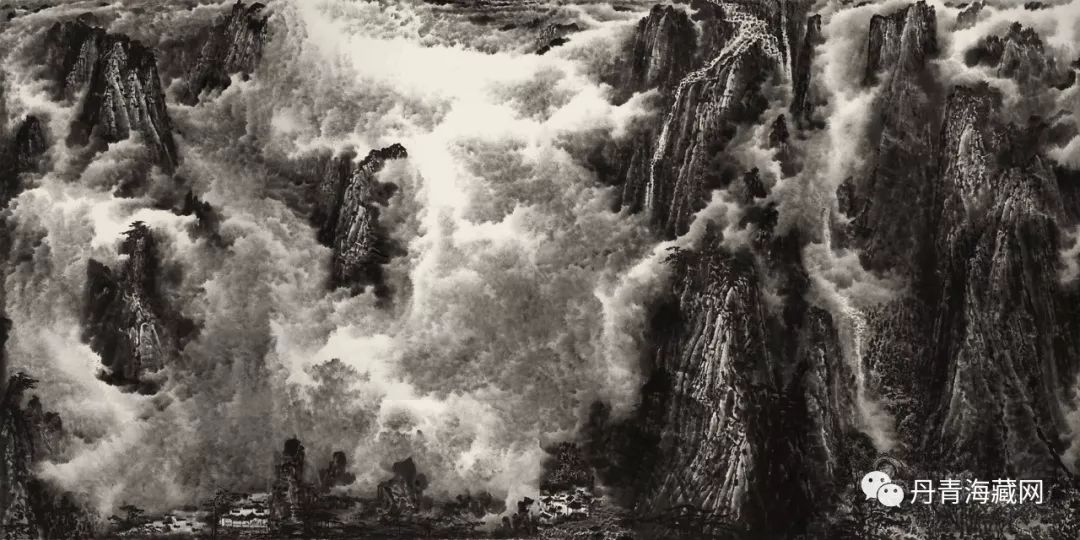
The Way of Clouds (Small-scale)
480×250cm
2013

Lu Rongzhi | Ph.D. Advisor and Art Critic of the Creative Industry Doctoral Program at Shih Chien University, Taipei
What shocked me was the strong contemporary nature of Mr. Lai's works. Such an expression of landscape painting, I think, is the real spirit of Chinese landscape painting. In Mr. Wan's works, we can find the philosophical realm of harmony between man and nature.

Lake, Embankments and Picturesque Homeland
52x235cm
2014

Wang Dingqian | Senior Collector
Mr. Lai Zhigang's works are majestic and worthy of admiration. Just as Zhang Daqian is the first person to splash ink in China, Lai Zhigang is the first person to accumulated-ink.
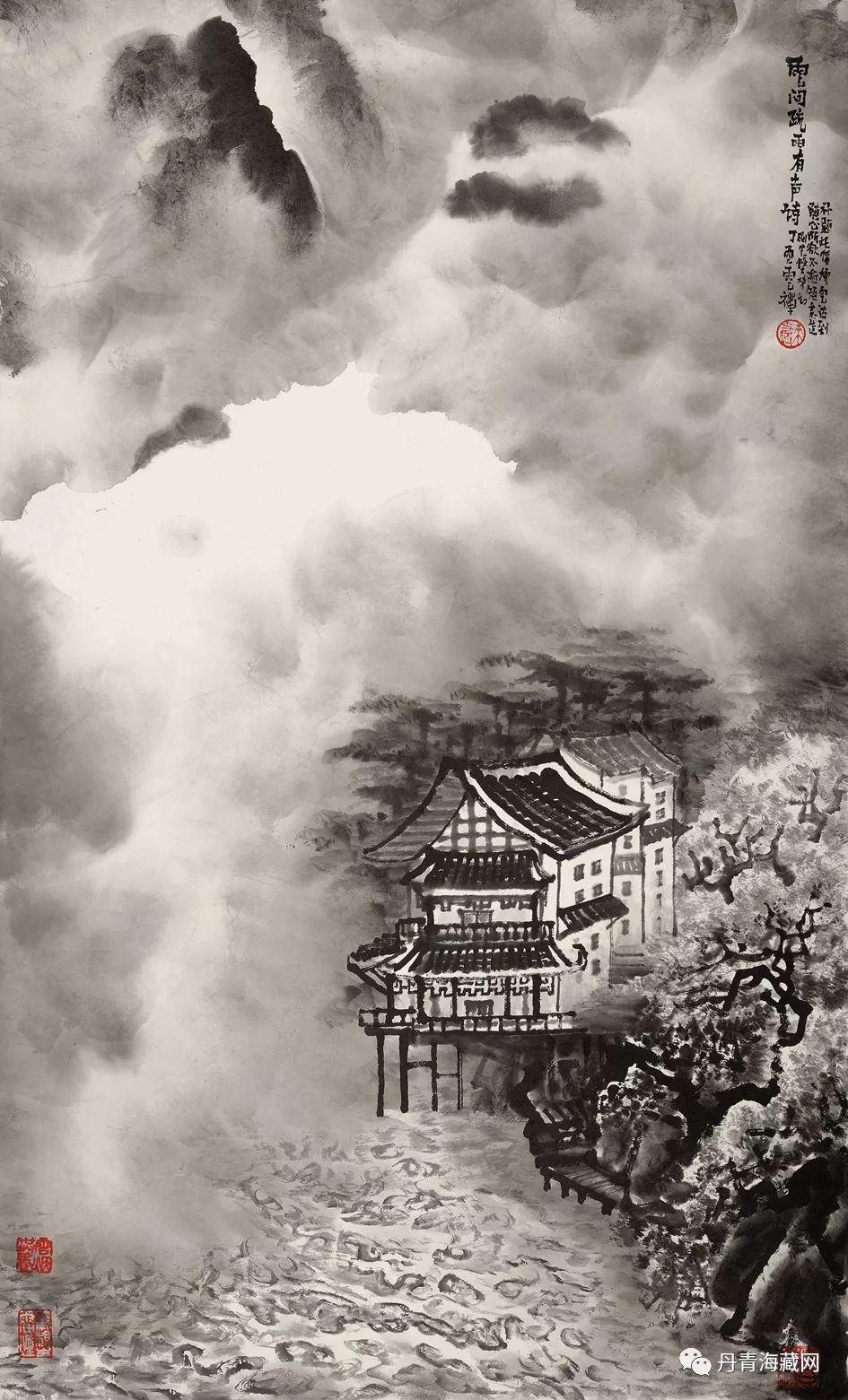
A Poem for Clouds and Rain
97x60cm
2017
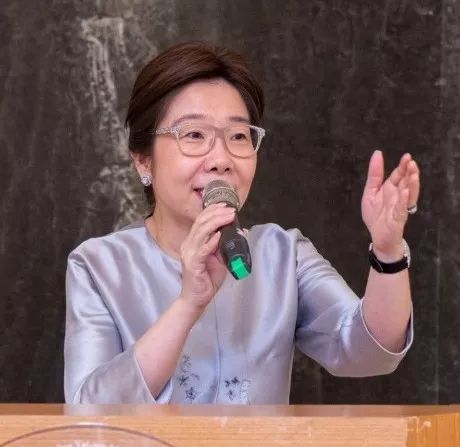
Chen Xiaojun | General Manager and Curator of Xizhi Hall
It is my great honor to hold an exhibition for Mr. Lai at the Sun Yat-Sen Memorial Hall in Taipei. I admire Mr. Lai very much, because in addition to absorbing the experience of his predecessors, he has further deepened the integration of Chinese and Western art and created his own path.
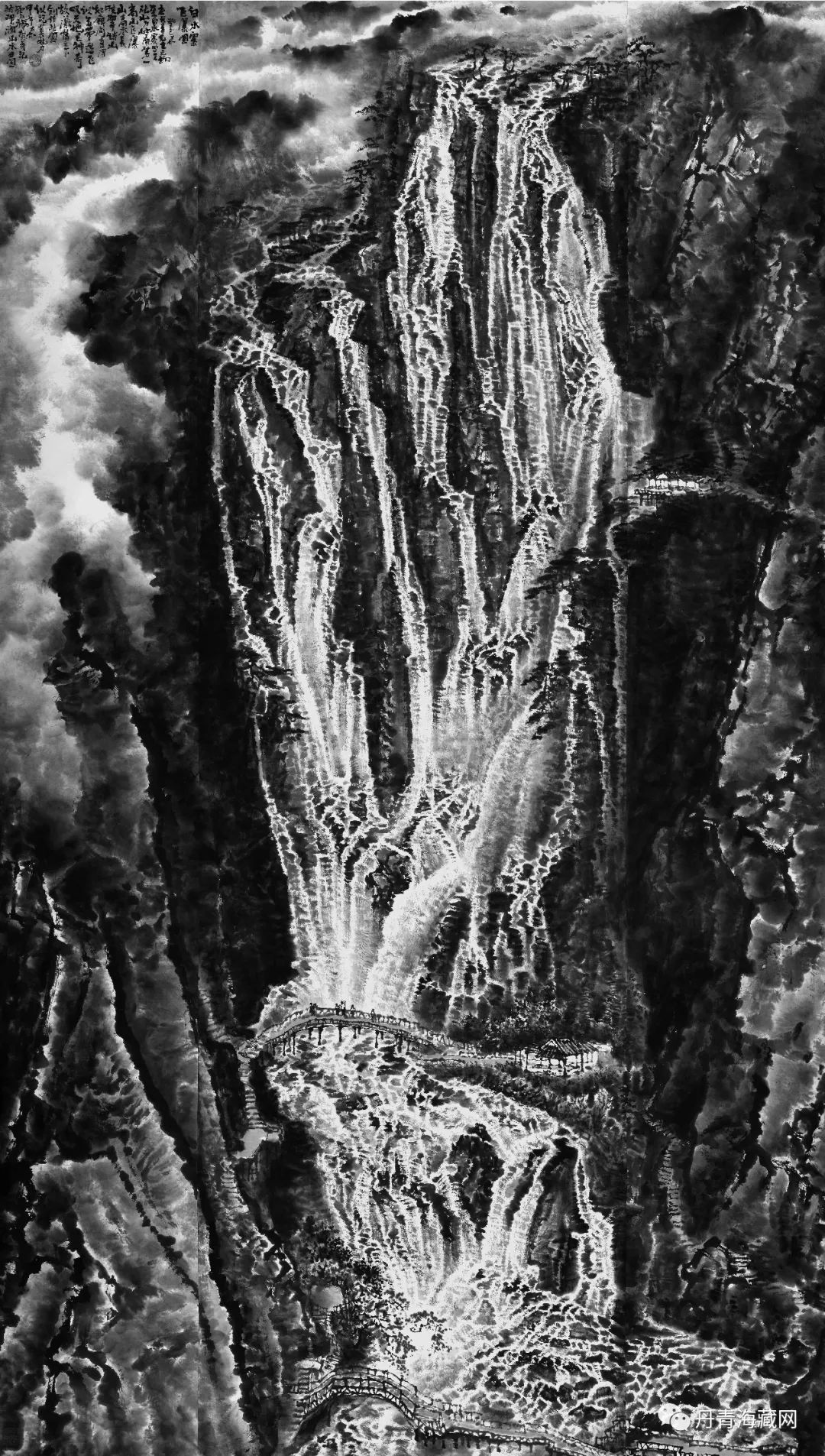
Waterfall in Baishui Village
03
Guest Exchanges
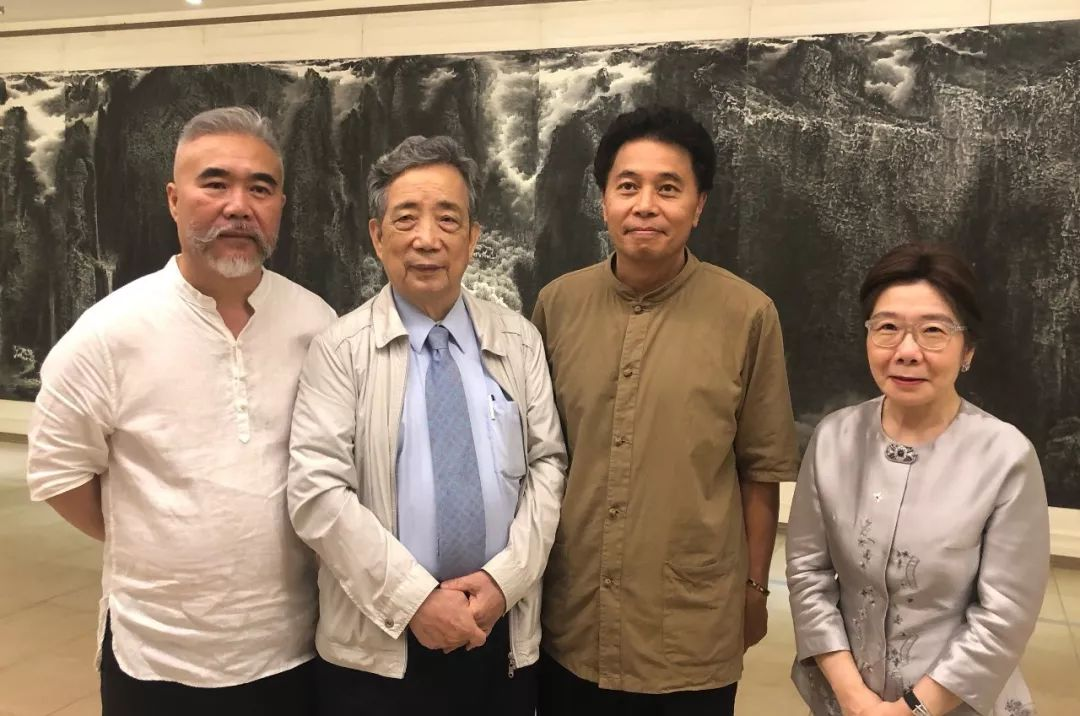
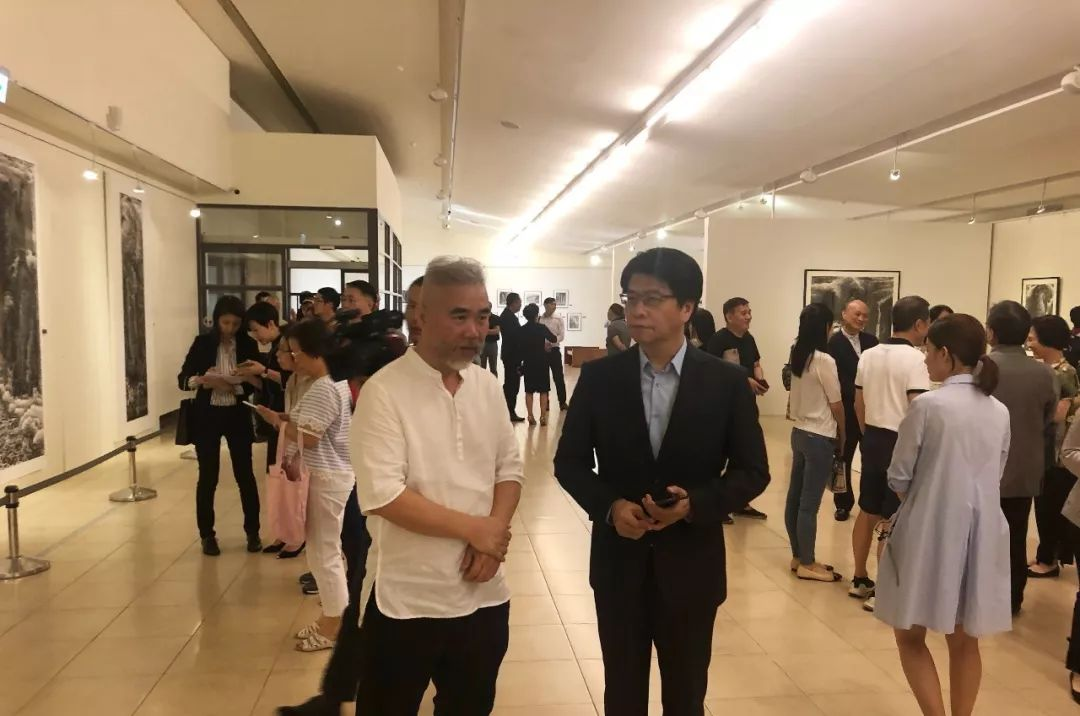
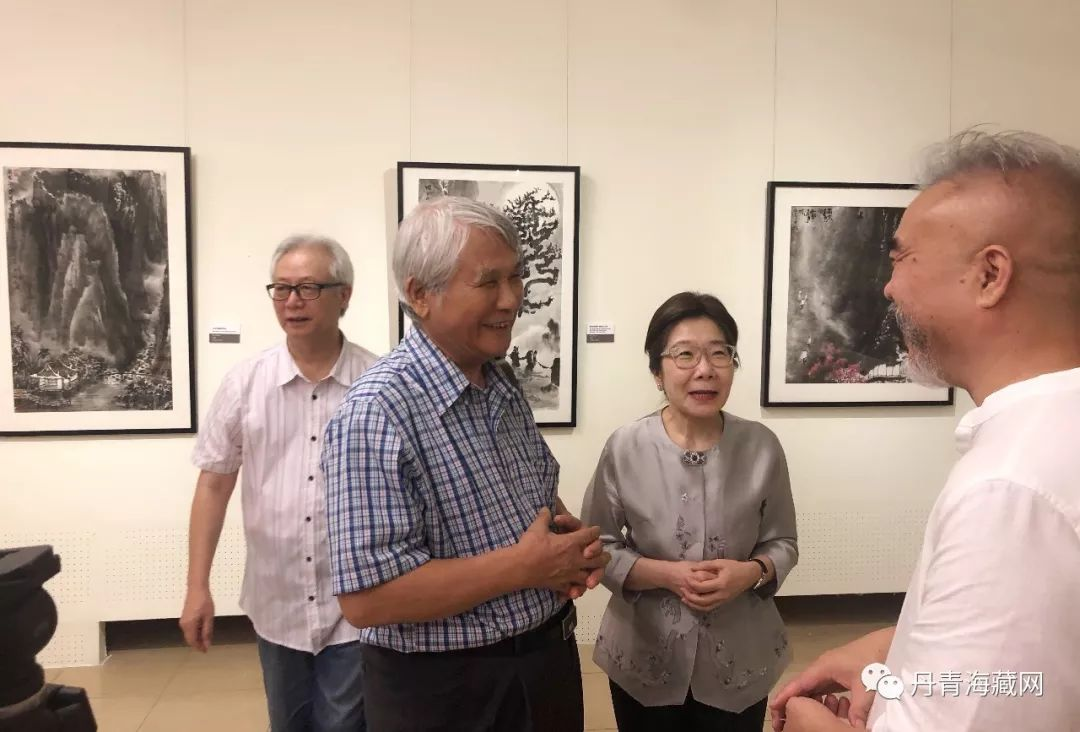
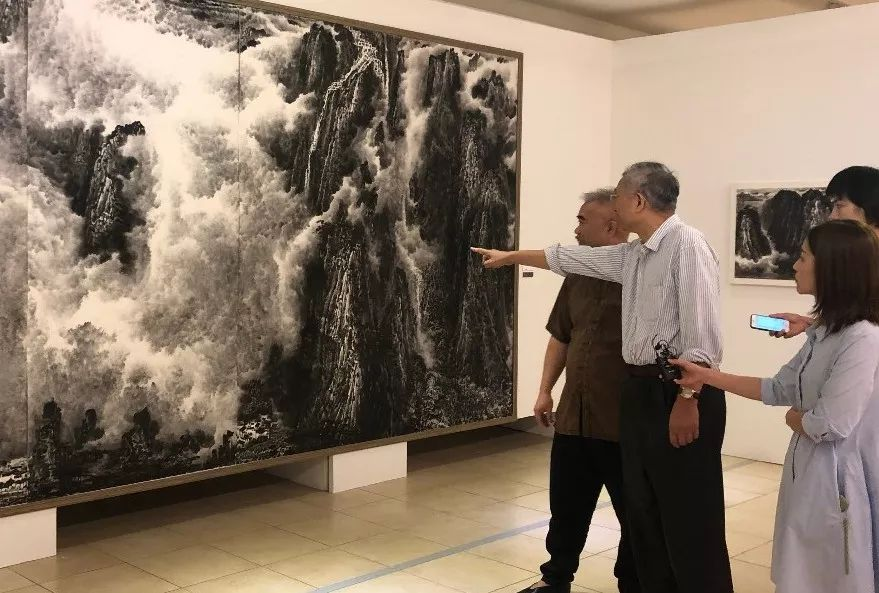
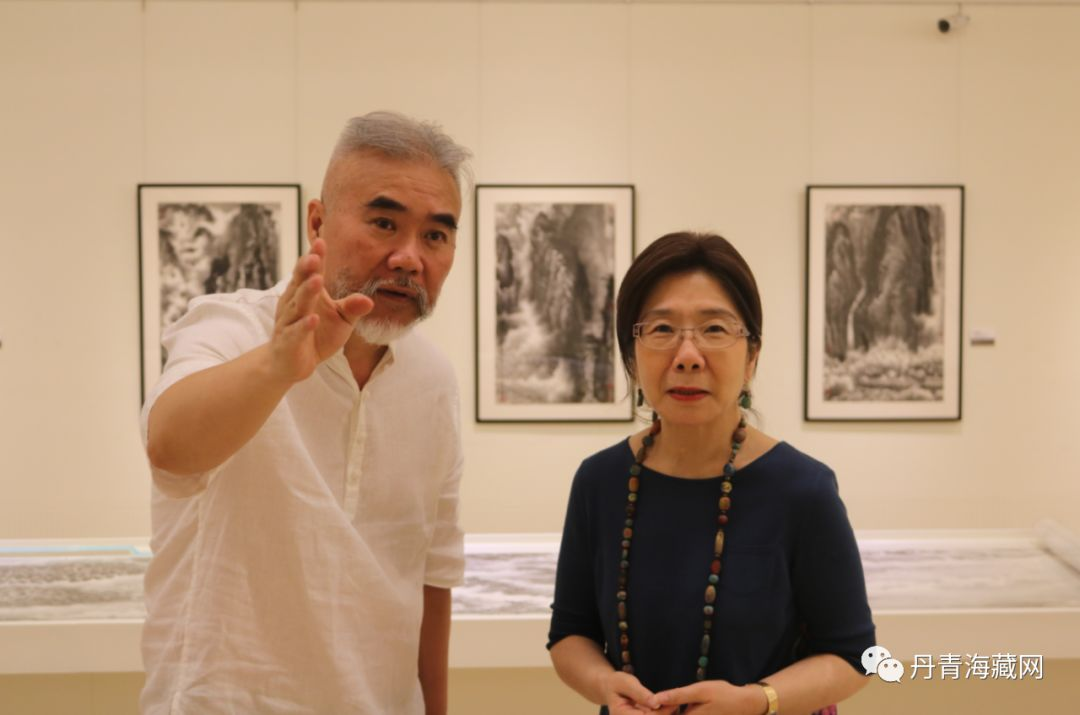
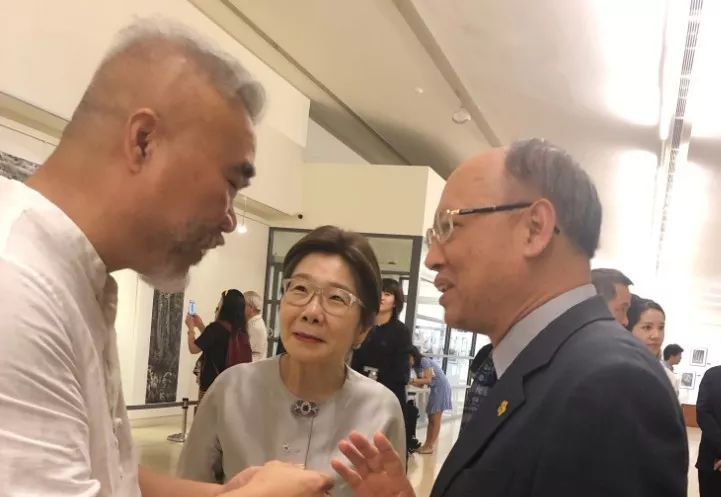
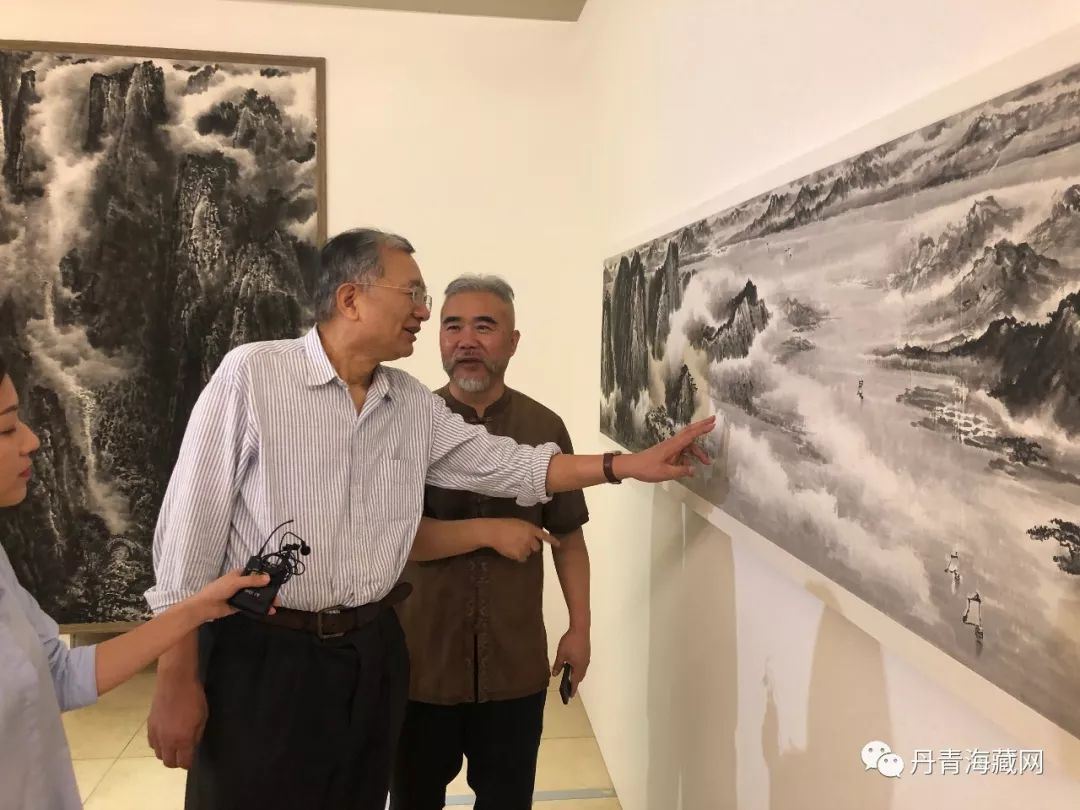
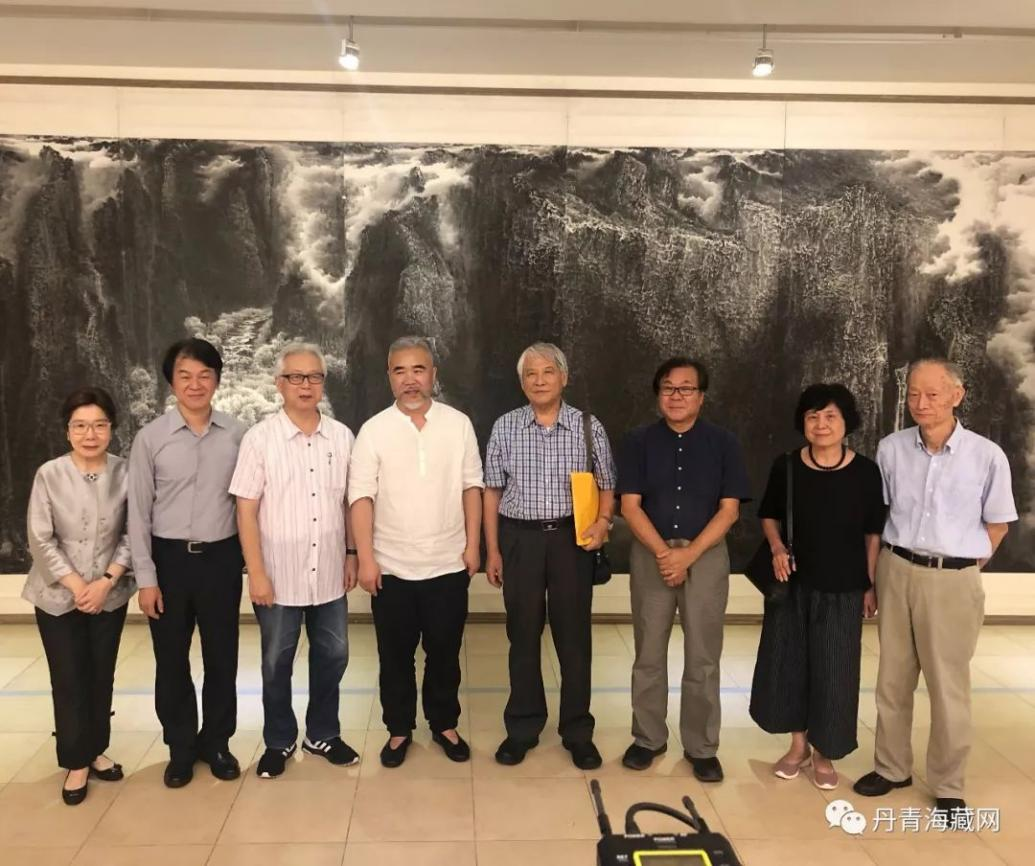


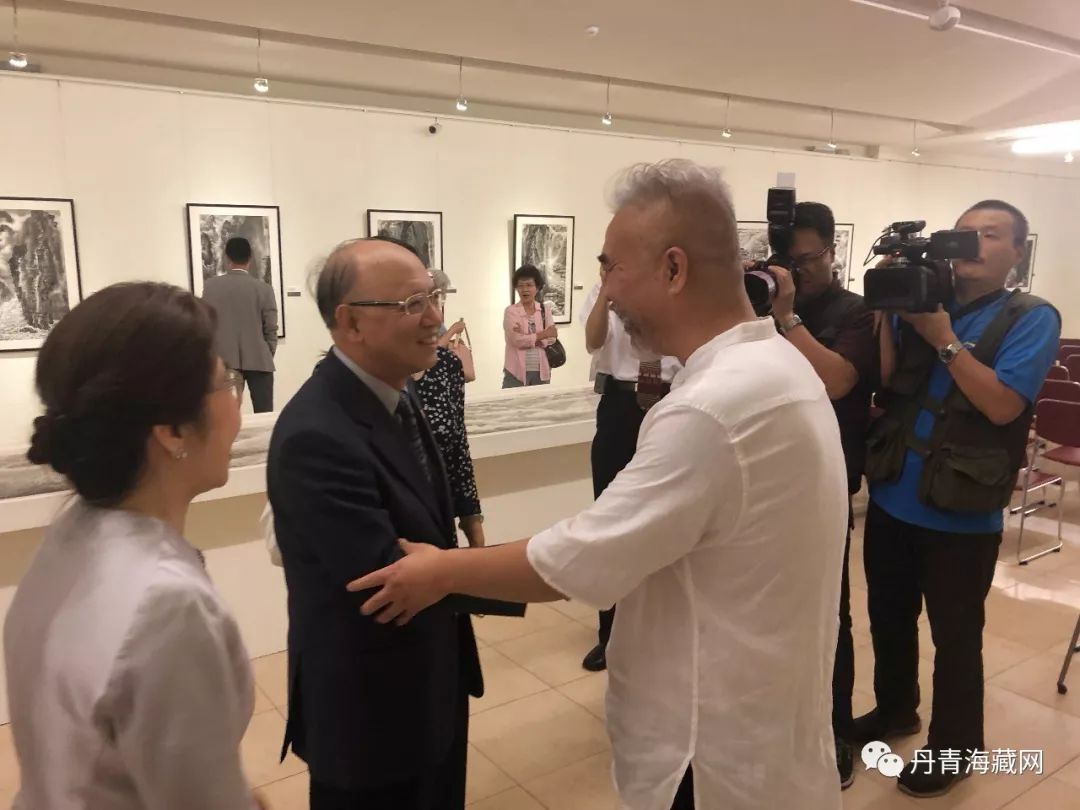
04
Popular Exhibition
A glance at the exhibition
A glance at the exhibition
A glance at the exhibition
A glance at the exhibition
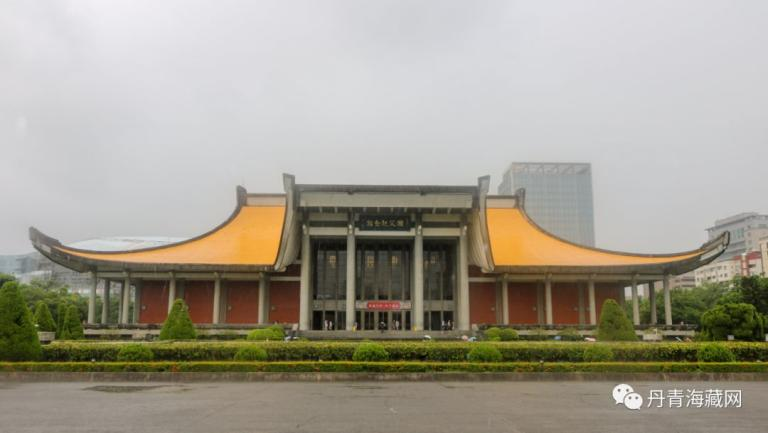
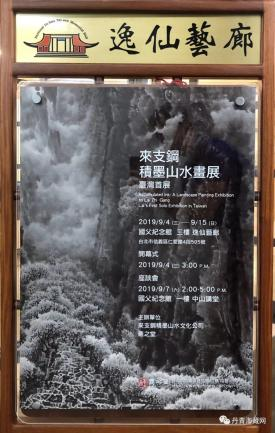
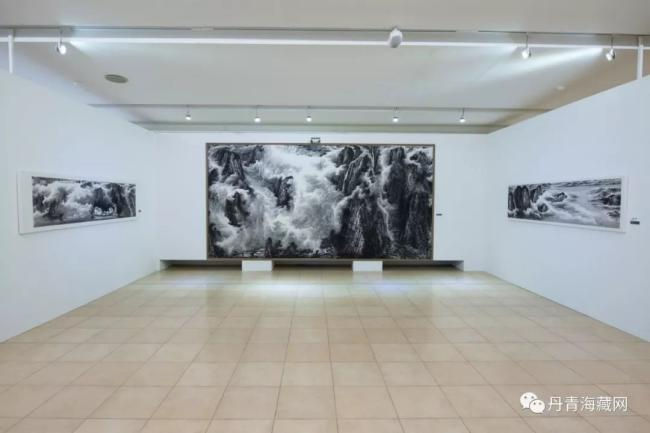

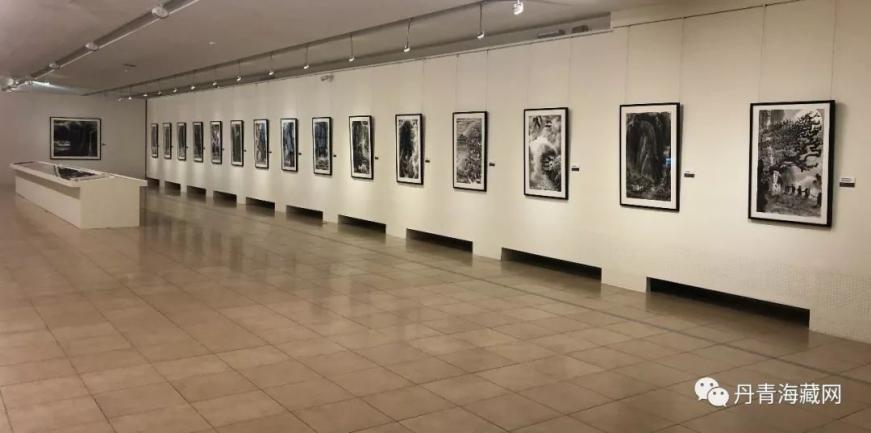
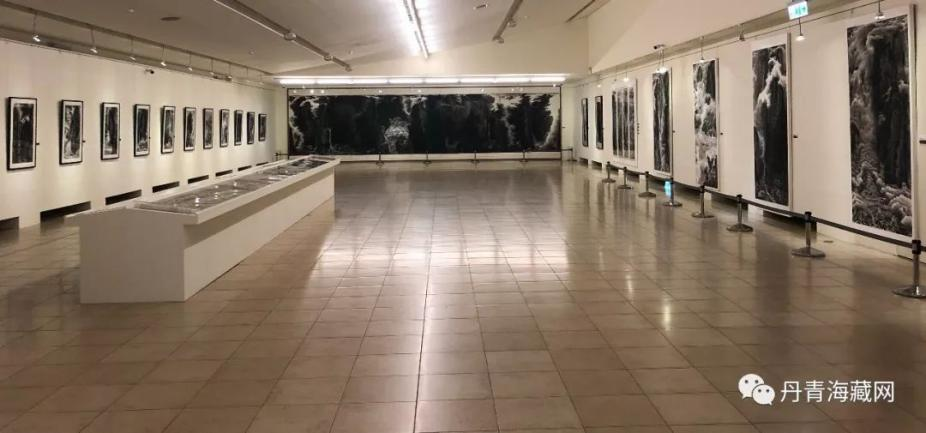
05
The charm of accumulated-ink landscape
Lai Zhigang, "a dervish behind the halo"
Lai Zhigang follows Li Keran's spirit of learning through hard work. The sketches exhibited this time witnessed his travels in Japan, Taiwan, Yunnan, Guizhou, Jiangsu and Zhejiang, Huizhou, Three Gorges, Shennongjia, Huangshan... He measures the height and depth of art with his "heart".
Travel from Three Gorges to Huashan via Shennongjia (2)
46x34cm 2018
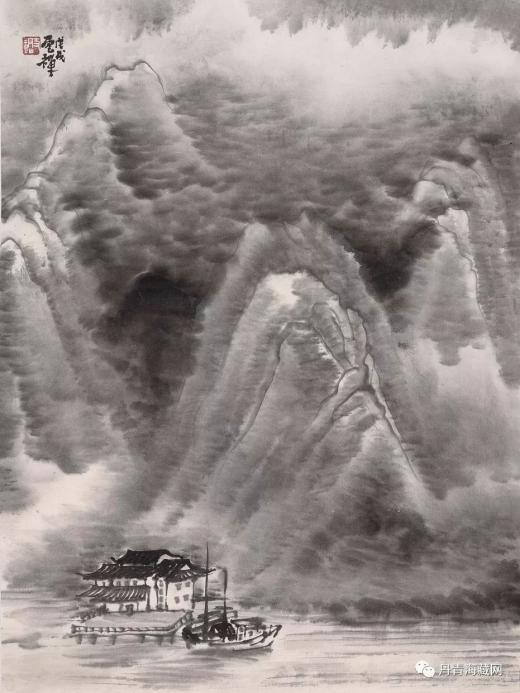
Travel from Three Gorges to Huashan via Shennongjia (16)
46x34cm
2018
Strait Tour
46x34cm 2017
Strait Tour (5)
46x34cm
2017
Strait Tour (12)
46x34cm
2017

Strait Tour (13)
46x34cm
2017
Hongcun Village (1)
46x34cm
2013
Mount Huangshan (3)
46x34cm
2011
Sketches in Jiangsu and Zhejiang (2)
46x34cm
2018
Fresh Mountain after Rain
68×136cm
2014
Fresh Mountain after Rain
97×60cm
2014
Sketches in Japan (6)
46×34cm
2018
Sketches in Japan (4)
46×34cm
2018
Listening to Waterfalls in Deep Valleys
97×60cm
2017
Mount Huangshan in the Rain
46×34cm
2014
Journey in Yunnan, Guizhou and Sichuan
46×34cm
2017
Journey in Yunnan, Guizhou and Sichuan (14)
46×34cm
2017
Journey in Yunnan, Guizhou and Sichuan (27)
46×34cm
2017
Lai Zhigang's Accumulated-ink Landscape Painting Exhibition was Launched in Taiwan
Time: 2019-09-05 Source: Sina Art
On September 4, 2019, Lai Zhigang's Accumulated-ink Landscape Painting Exhibition was launched at the 3F Yat-Sen Gallery of the Sun Yat-Sen Memorial Hall in Taipei. This exhibition is co-hosted by Lai Zhigang Jimo Landscape Painting Culture and Art Development Co., Ltd. and Taiwan Xizhi Hall, curated by Ms. Chen Xiaojun, General Manager of Xizhi Hall.
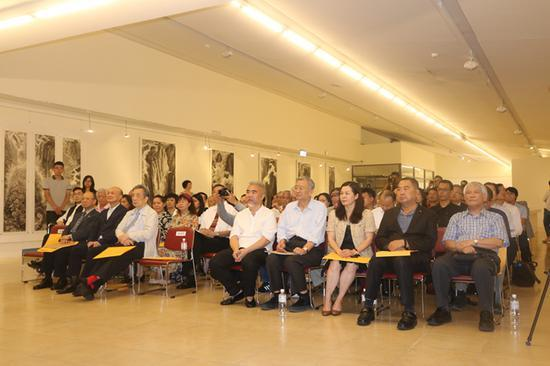
Opening Ceremony
Guests at the opening ceremony: Huang Guangnan, A Well-Known Scholar And Former President of National Taiwan University of Arts; Chen Chuanxi, A Well-Known Art Critic; Lin Muhe, Former Director of Qingwan Yaji And the Chinese Cultural Relics Society; Wen Yuru, Chief Financial officer of Dabaihui Group; Wang Dingqian, Senior Collector; Shi Jinsheng, Senior Collector; Chen Dexin, Former Executive Vice Minister of the Ministry of Science And Technology; Zhang Cailian, Chairman of Dabaihui Life And Health Industry; Lin Zhanghu, Former Dean of the Academy of Fine Arts, Taipei National University of the Arts; Jiang Mingxian, Former Director of the Fine Arts Department of Taiwan Normal University; Wang Zhenhua, Chairman of Ravenel; Qing Minliang, Former Director of the Cultural Affairs Bureau of New Taipei; Zhou Kangsheng, Chairman of the Chinese General Cultural Exchange Association; Legislative Members Xu Zhirong and Chen Chaoming; Artist Wu Jitao; Photographer Zhuang Ling and His Wife Chen Xiasheng, etc.
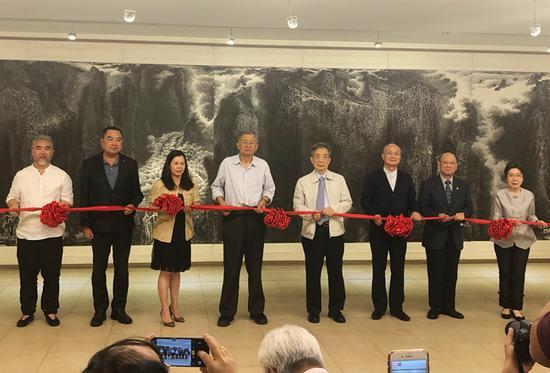
Ribbon cutting at the opening ceremony
(From left: Lai Zhigang, Xu Zhirong, Wen Yuru, Chen Chuanxi, Huang Guangnan, Lin Muhe, Chen Dexin, Chen Xiaojun)
In the beautiful autumn of September, audiences from both sides of the strait witnessed this grand art exchange.
Group Photo for the Opening Ceremony
There are more than 70 masterpieces of Lai Zhigang on display in the exhibition, including his large-scale The Way with Art, long-scroll Dwelling in the Fuchun Mountains, The Road of Clouds, etc., as well as small-scale fine sketches.
Lai Zhigang, also known as Yunchan, was born in 1963. He has won the Excellence Award of the "China Artists Association Golden Color Award", an authoritative award in the Chinese art circle. In more than 40 years of artistic exploration and refinement, Lai has dug into the tradition with his greatest strength, and then broken through the tradition with his greatest courage. He absorbed the essence of Gong Xian's, Huang Binhong's and Li Keran's accumulated-ink techniques, expressed the deep and vigorous landscape connotation with the simplest ink language, and created a generation of "new-style accumulated-ink landscape". The "cloud" he depicted has become his unique artistic symbol. Just as the famous theorist and critic Pi Daojian said, "It is technically difficult to use light ink to achieve the effect of accumulated ink. Such a vivid clouds and mist mark Lai's artistic achievements."
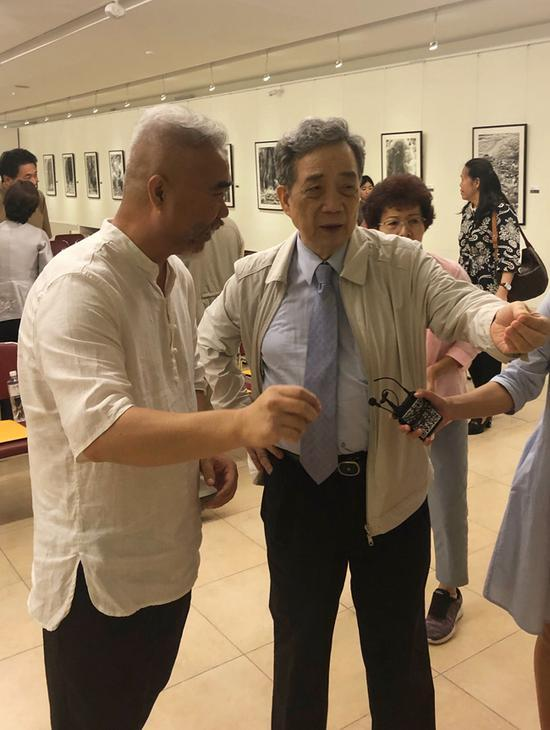
Artist Lai Zhigang and Huang Guangnan, a Well-known Scholar and Former President of National Taiwan University of Arts
Lai Zhigang follows Li Keran's spirit of learning through hard work. The sketches exhibited this time witnessed his travels in Japan, Taiwan, Yunnan, Guizhou, Jiangsu and Zhejiang, Huizhou, Three Gorges, Shennongjia, Huangshan... With his brush and drawing paper, he travels among mountains and rivers to learn, think, let his thoughts fly, describe the magnificent beauty, express his aspirations, and measure the height and depth of art with his "heart".
Chen Xiaojun, Curator and General Manager of Xizhi Hall, commented on Lai Zhigang's works
During the interview, Ms. Chen Xiaojun, General Manager of Xizhi Hall, the curator organization, said, “It is my great honor to hold an exhibition for Mr. Lai at the Sun Yat-Sen Memorial Hall in Taipei. I admire Mr. Lai very much, because in addition to absorbing the experience of his predecessors, he has further deepened the integration of Chinese and Western art and created his own path.”
Beijing, Hangzhou, Taipei... With the art exhibition all the way, Mr. Lai Zhigang has impressed every city and every viewer with the artistic charm of accumulated-ink landscape.
Jiang Mingxian, former director of the Fine Arts Department of Taiwan Normal University, said, “Broad and far-reaching, the works of Mr. Lai Zhigang are really shocking. His small-scale works can also be extended to a large realm, showing a majestic momentum. This is a wonderful exhibition.”
Mr. Chen Chuanxi, a well-known art critic who flew from Beijing to Taiwan to attend the opening ceremony, carefully studied Lai Zhigang's works and gave his masterpiece The Way with Art a high score.
Well-known art critic Chen Chuanxi commented on Lai Zhigang's work The Way with Art on the spot
Chen Chuanxi said, “The Way with Art is a representative of contemporary landscape painting. It is especially in line with the spirit of the times, and it is a masterpiece of majesty and vigor. No one has surpassed him in this regard.”
The common culture lays the foundation for the integration of the two sides of the strait, and art is the shortest bridge. Who can inherit the cultural heritage that lasts for thousands of years while innovating with individuality? Just look at Mr. Lai's paintings, they said.
At 14:00 on the afternoon of September 7th, the Lai Zhigang Art Exchange Symposium will be held in the 1F Yat-Sen Lecture Hall of the Sun Yat-Sen Memorial Hall. The exhibition will end on September 15th.







































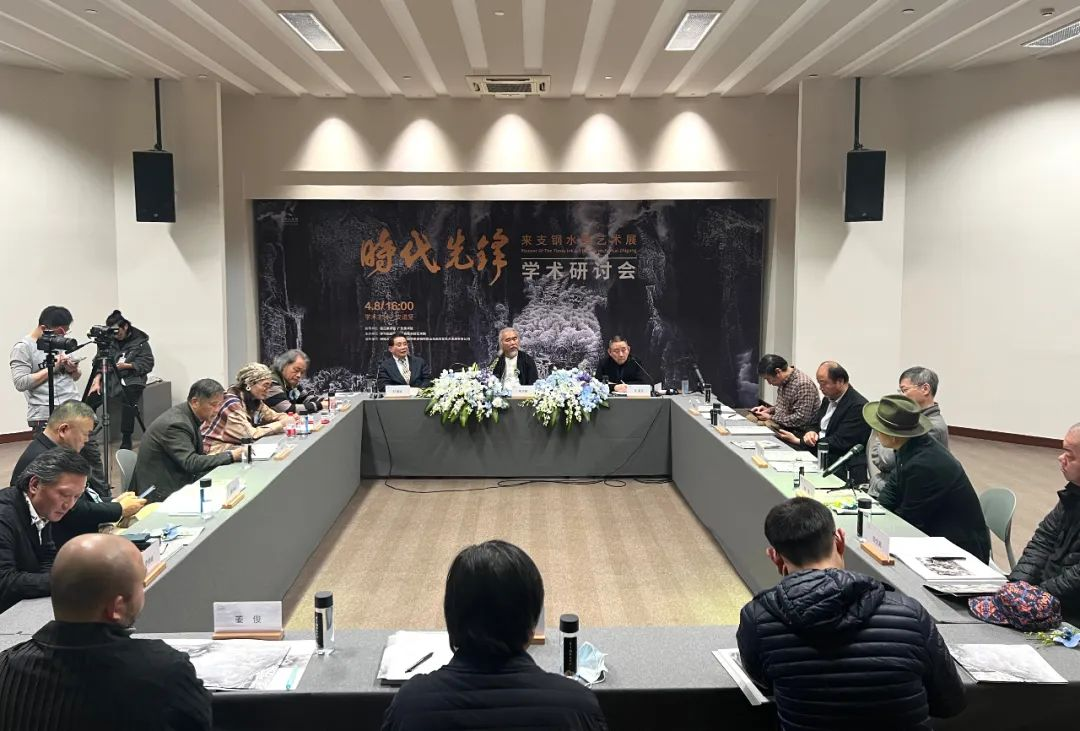
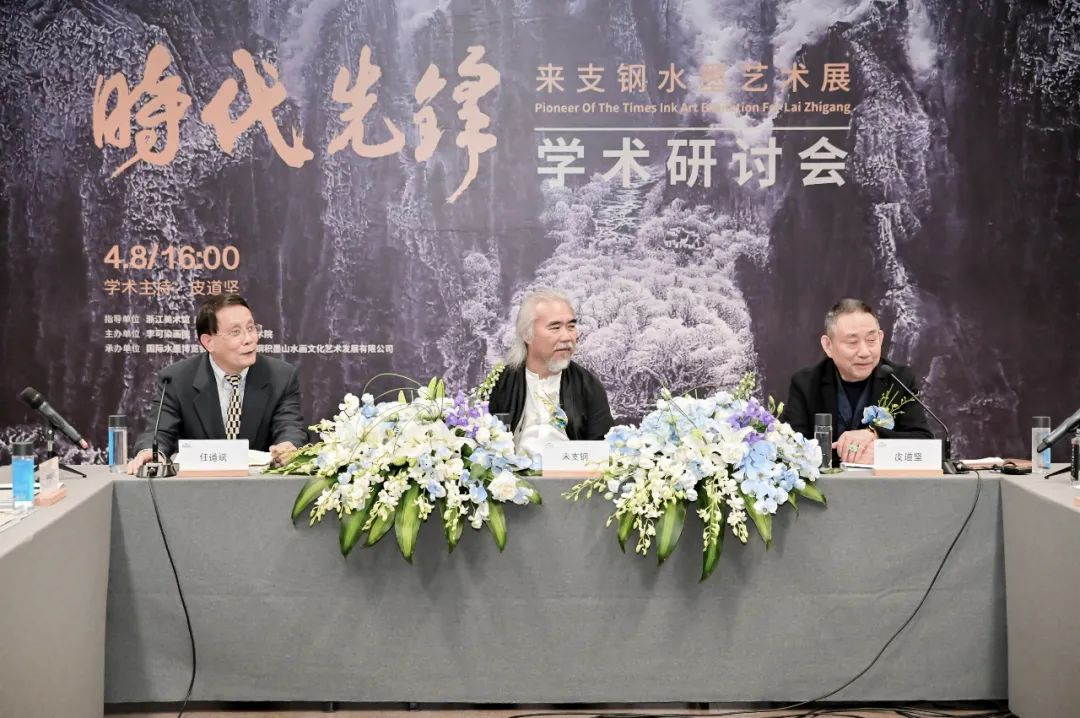




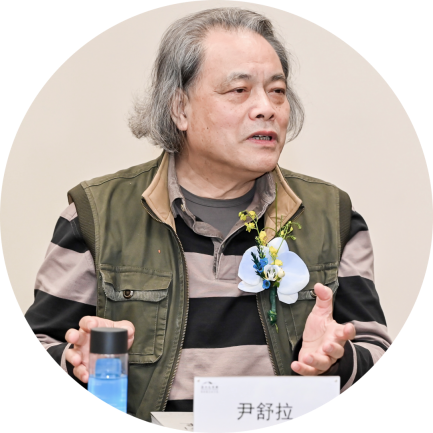





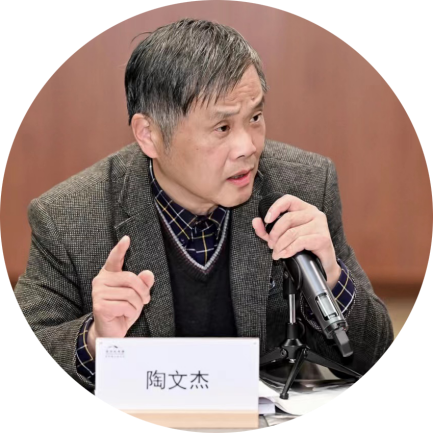




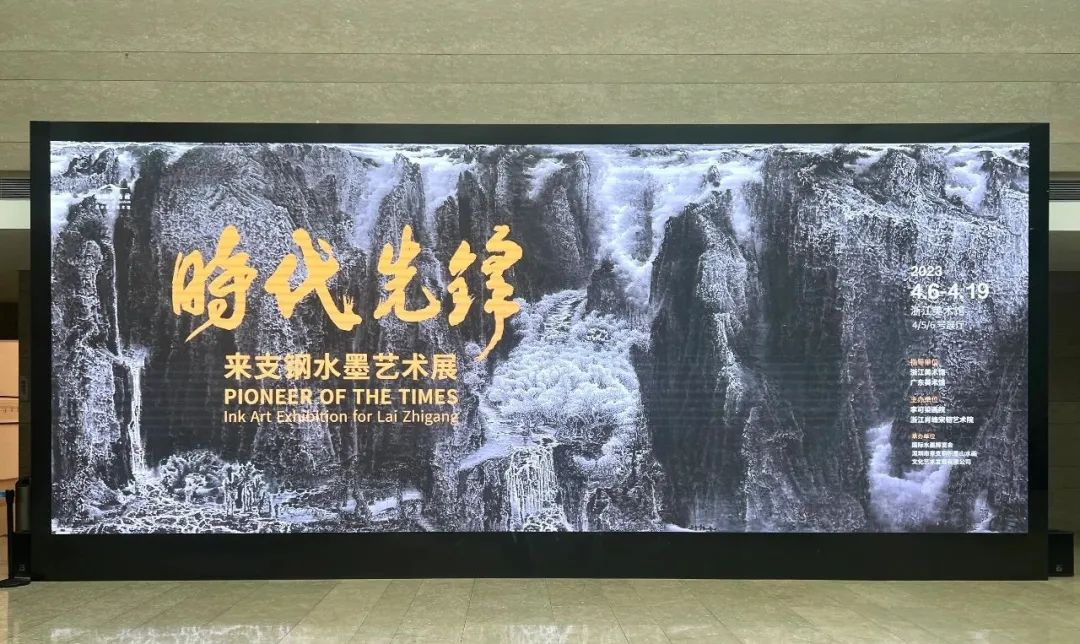
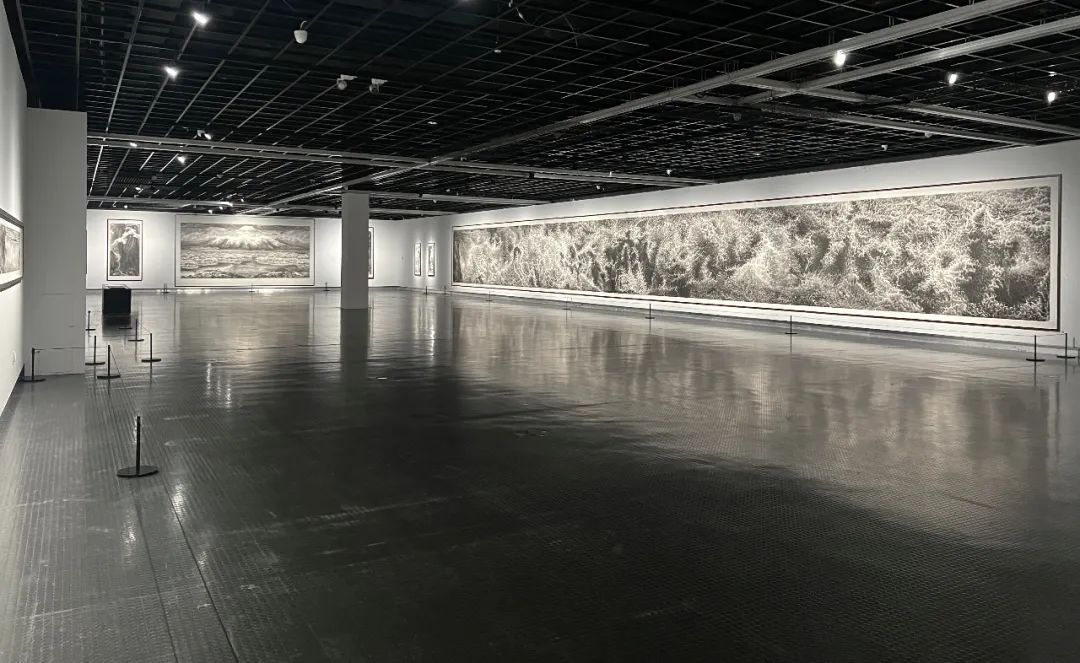
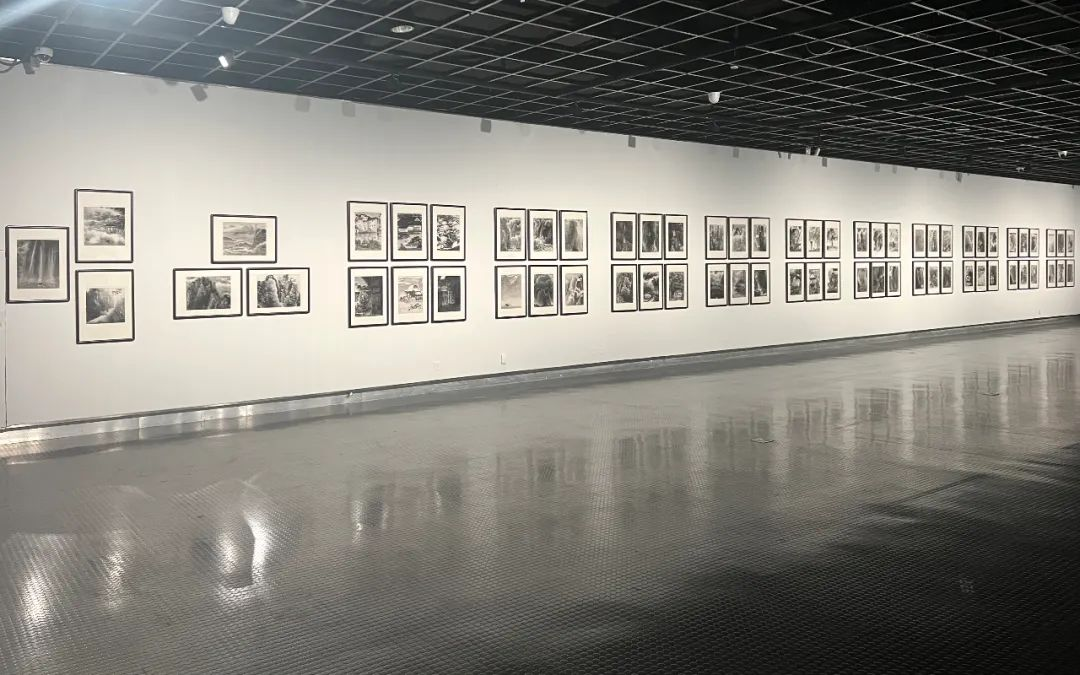
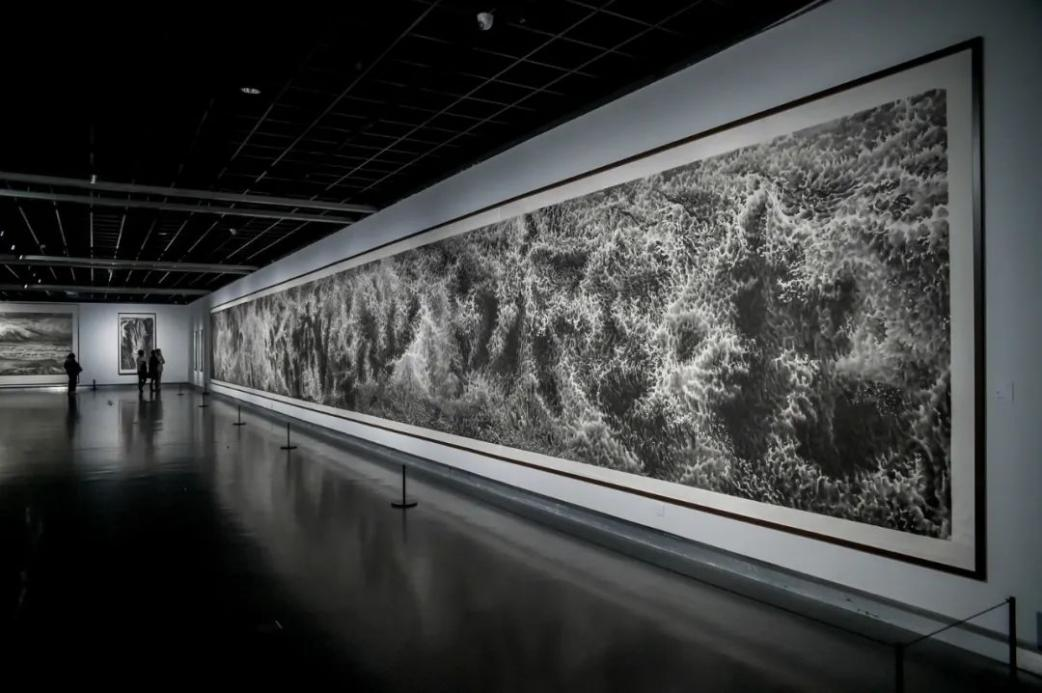
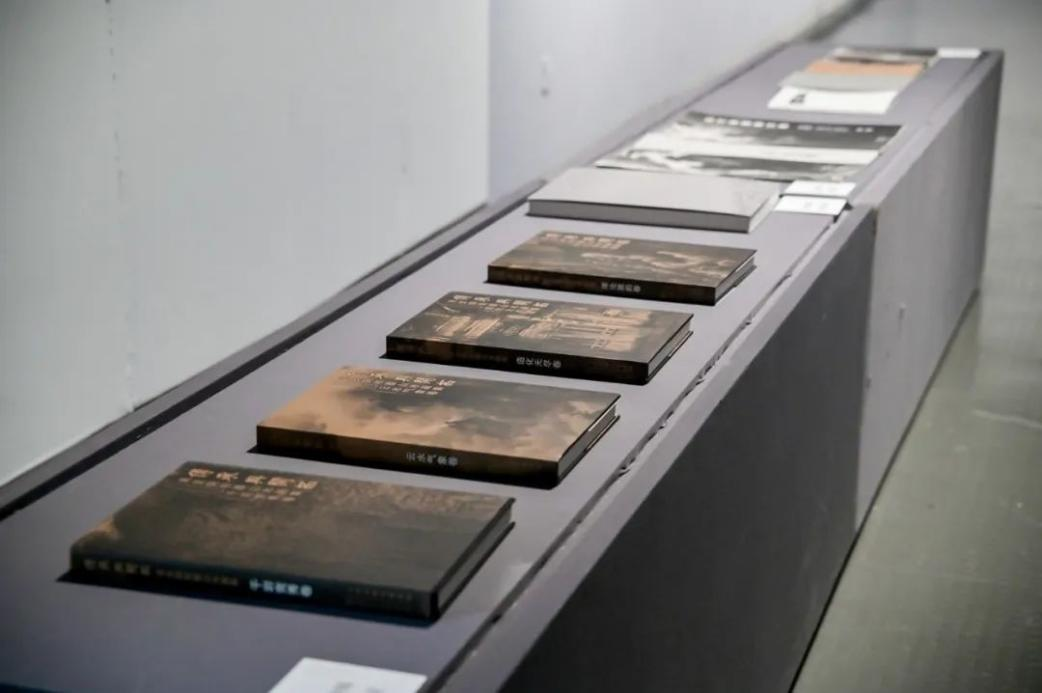
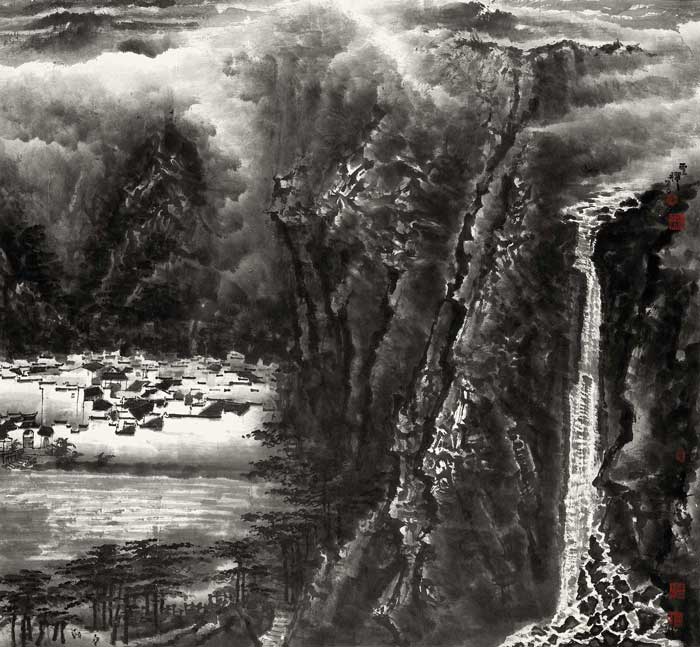
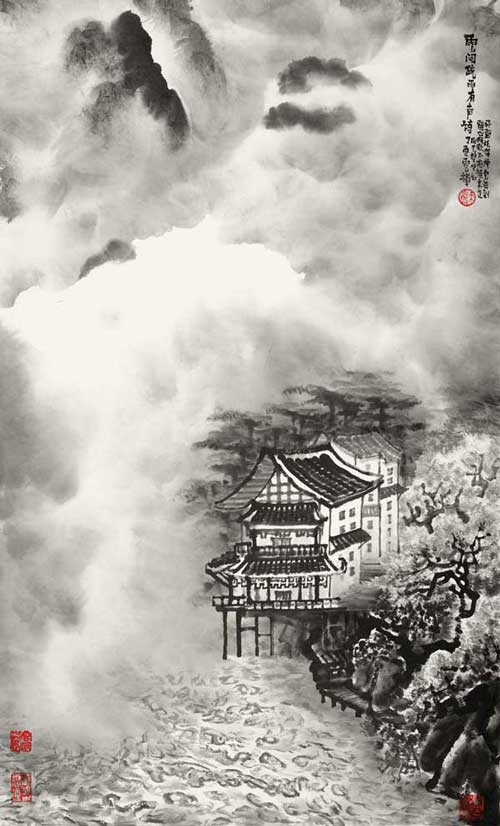


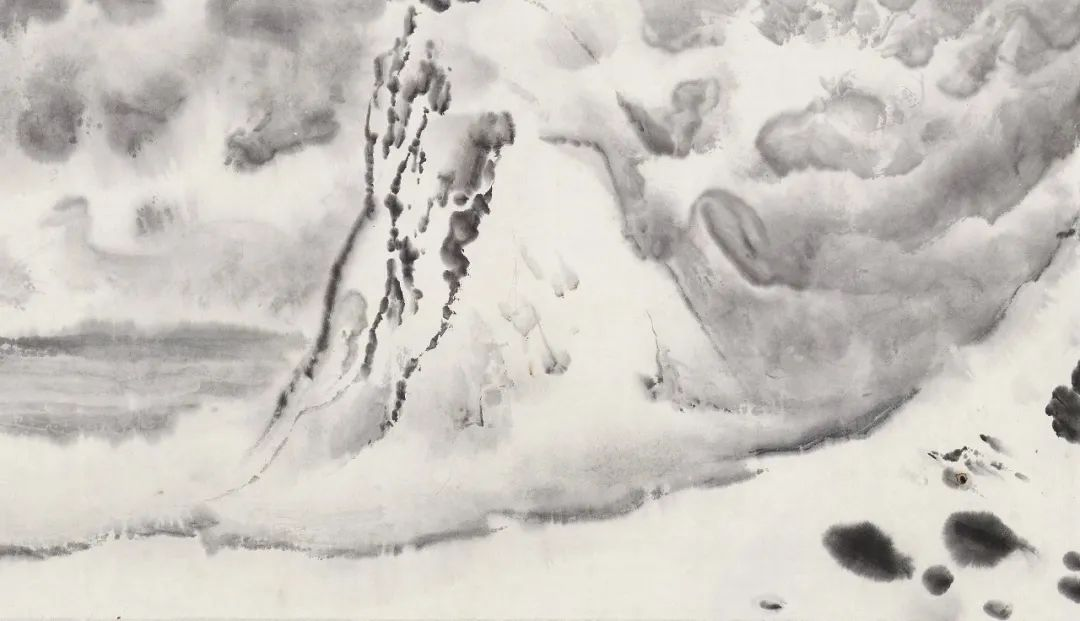
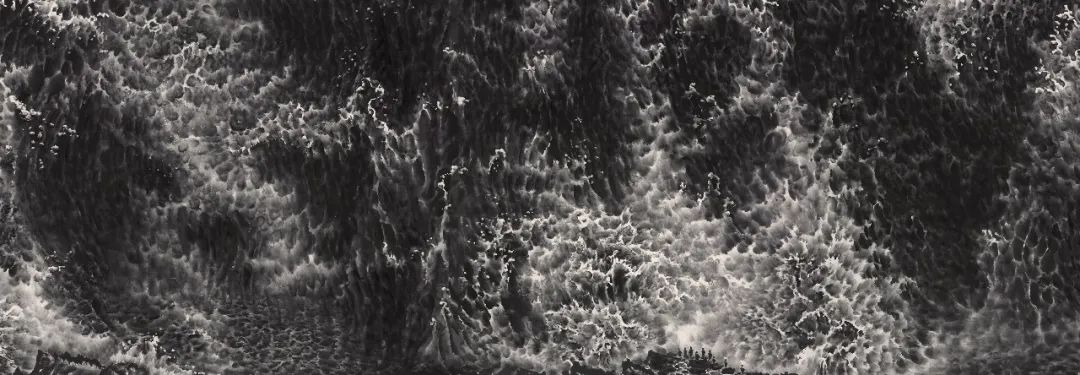

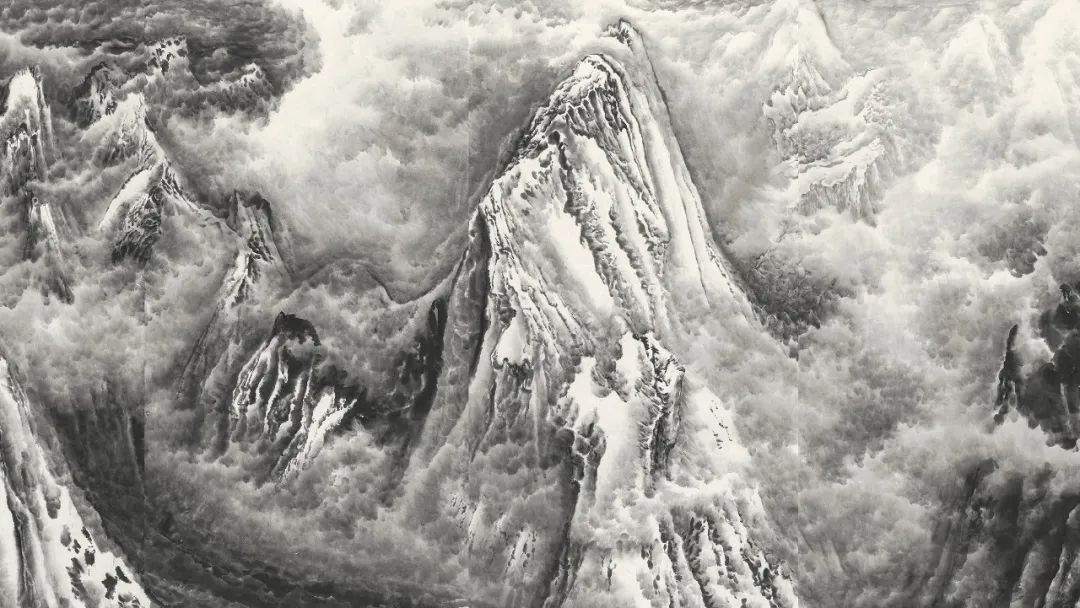
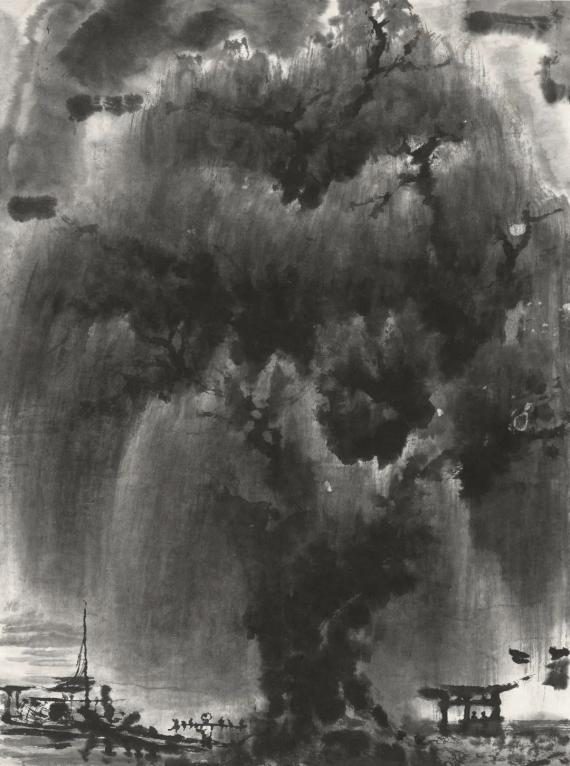
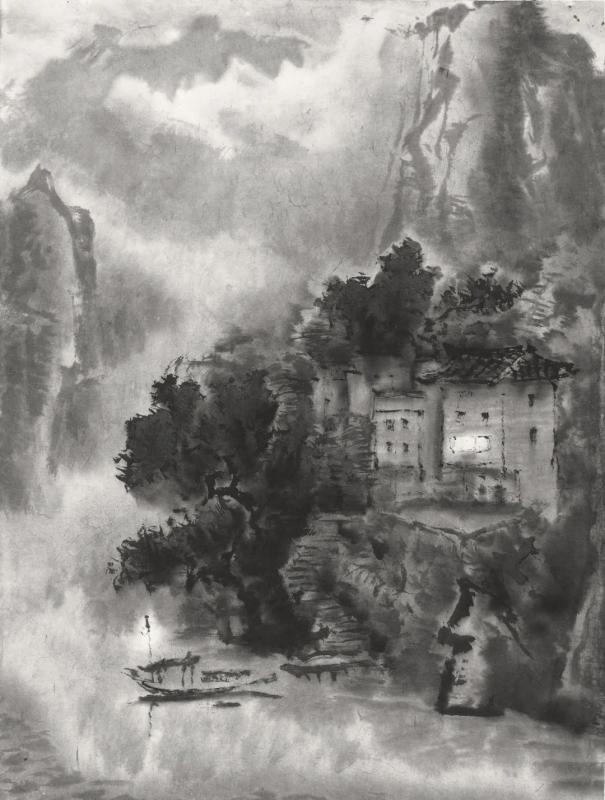

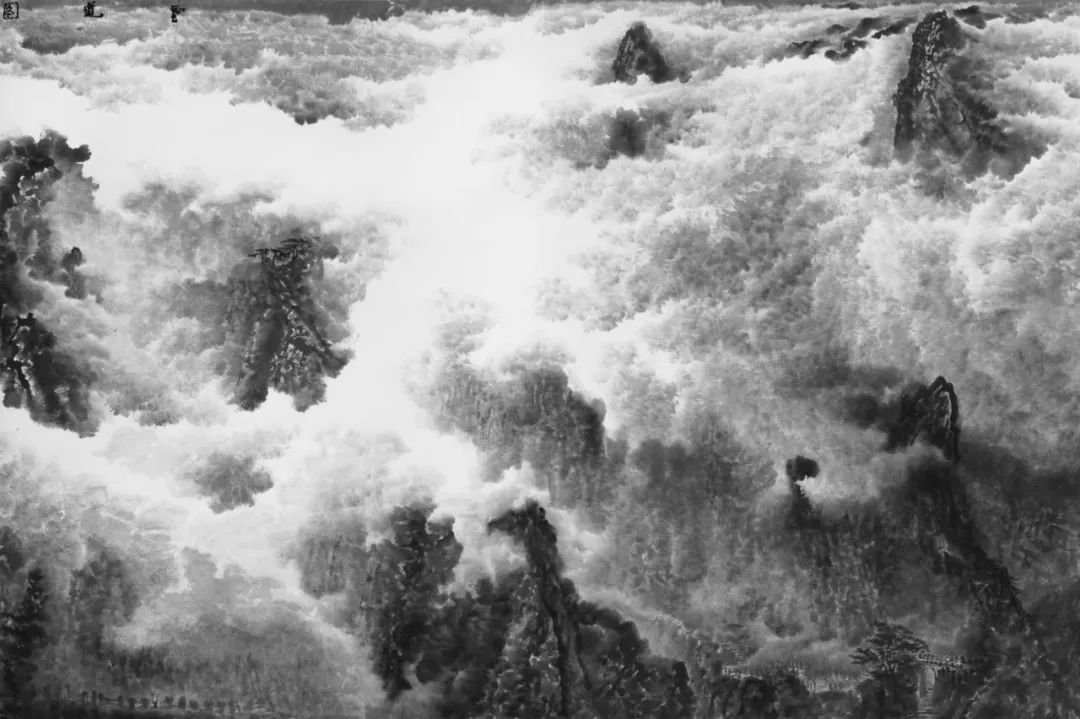
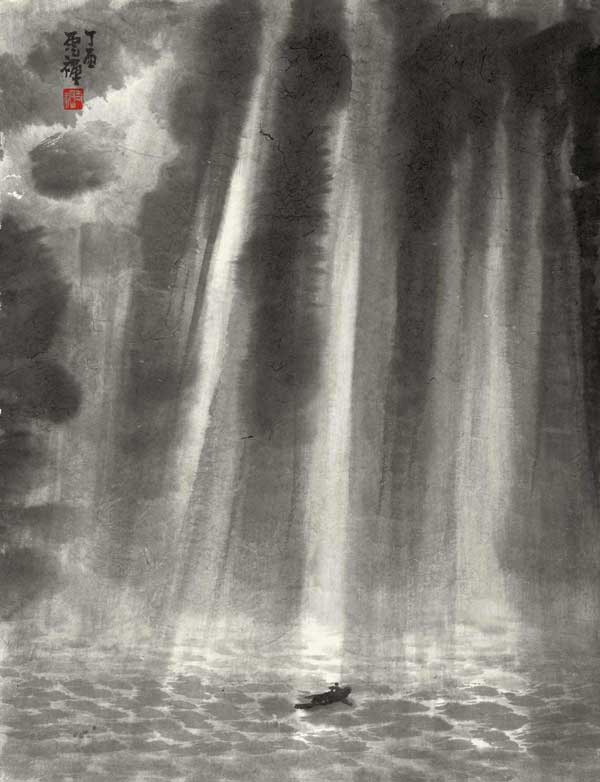
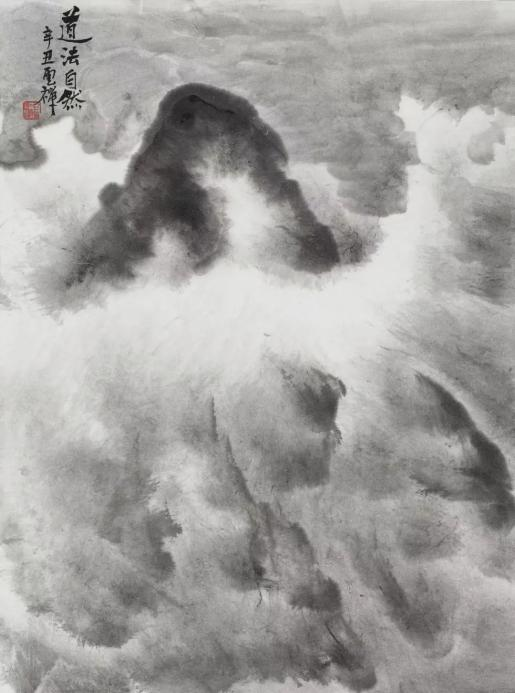
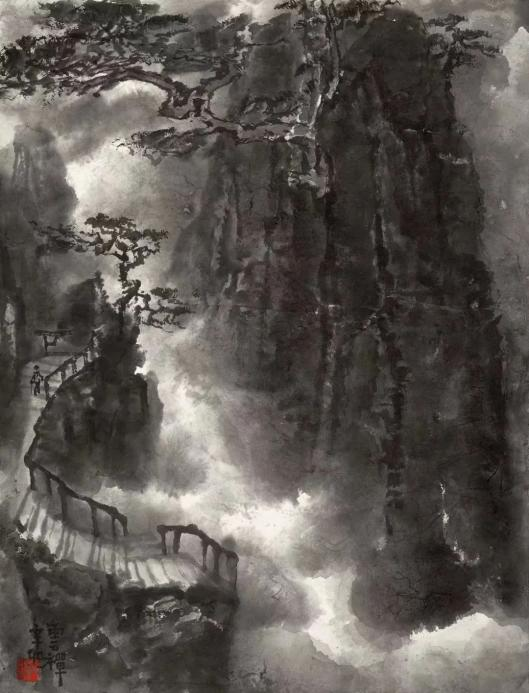



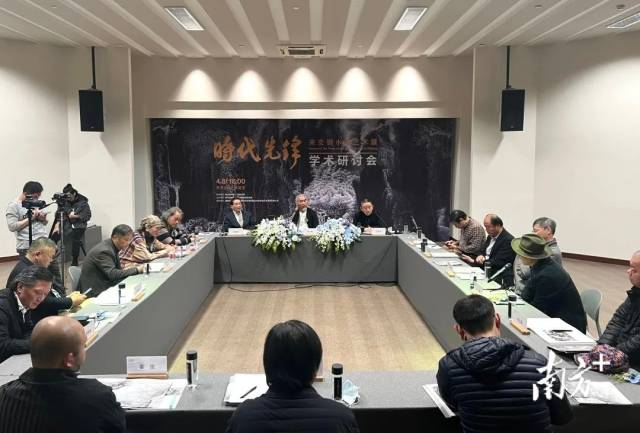




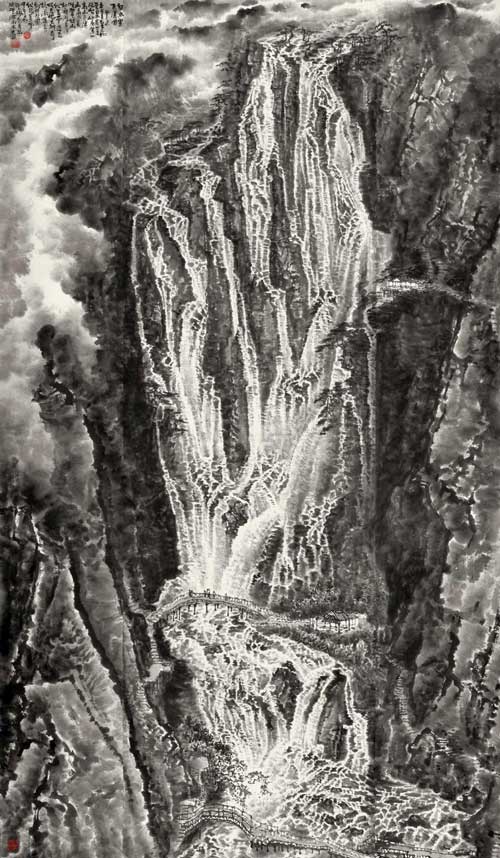

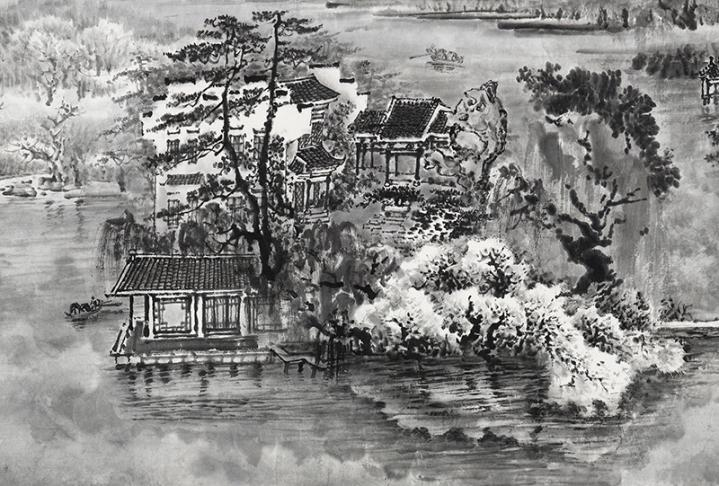
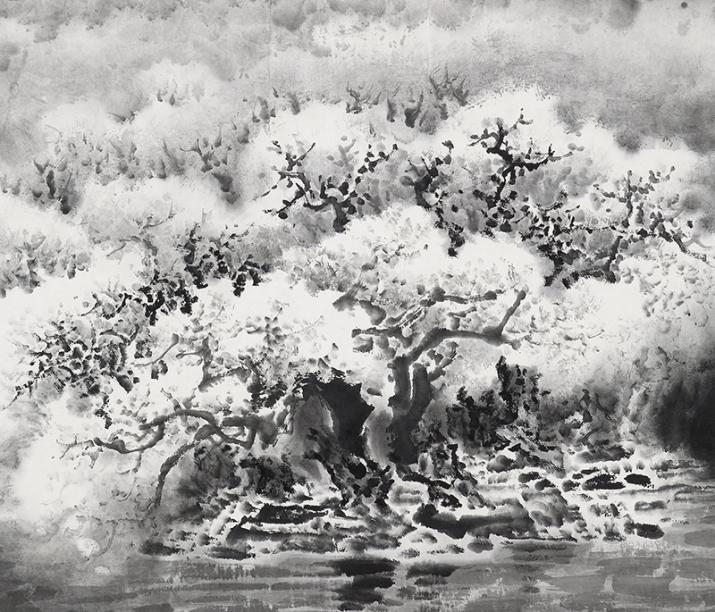
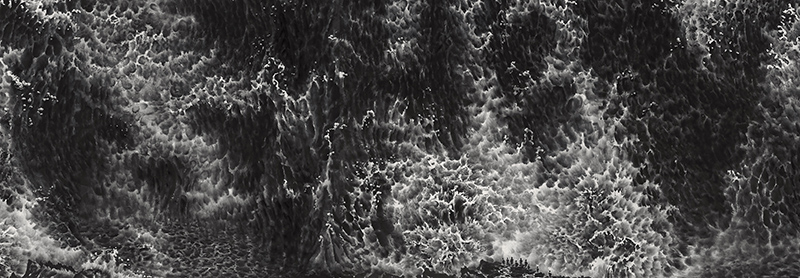
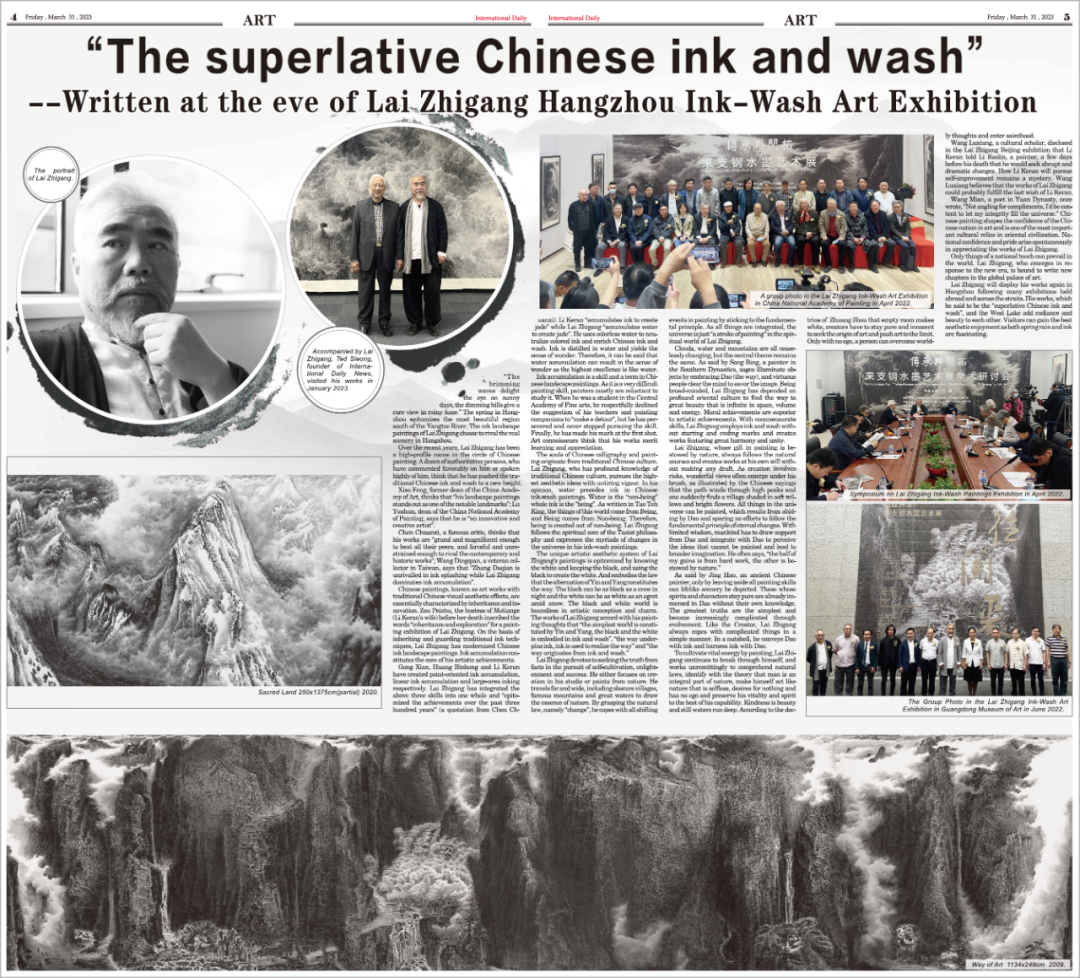
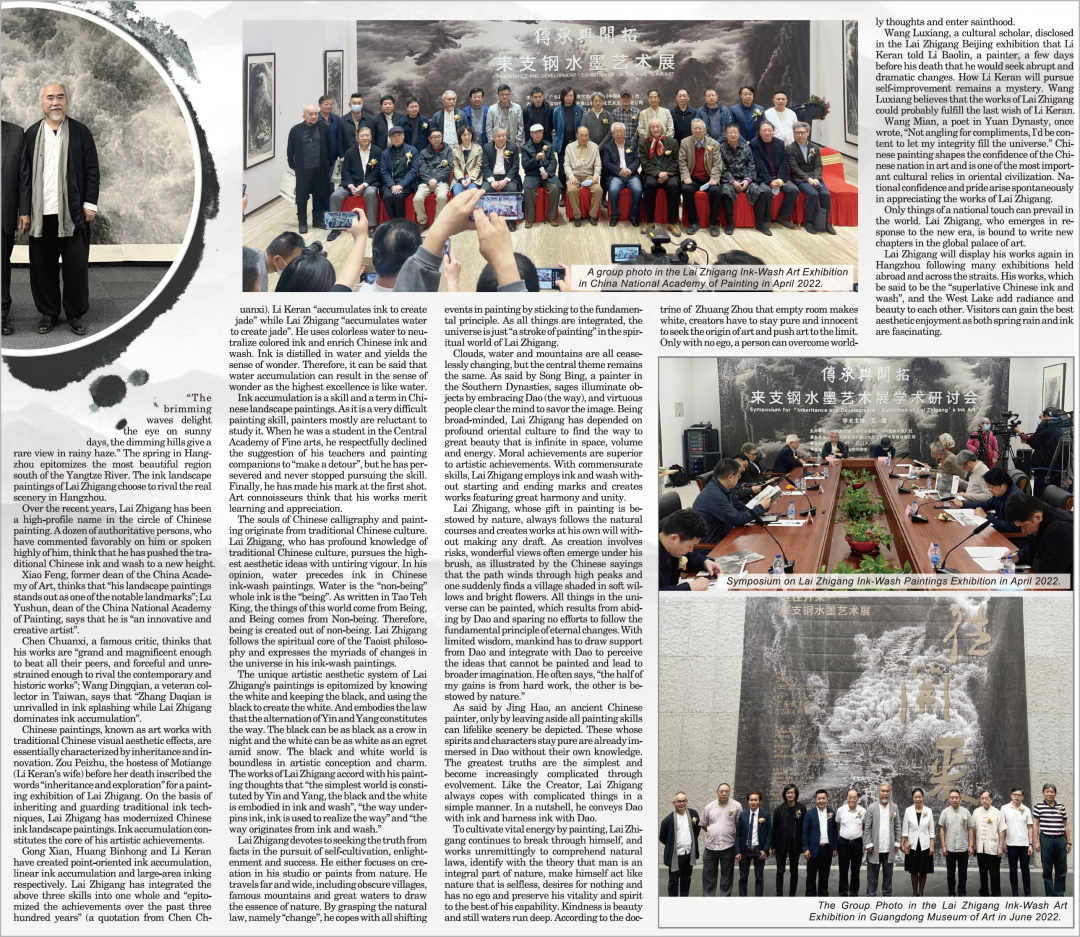

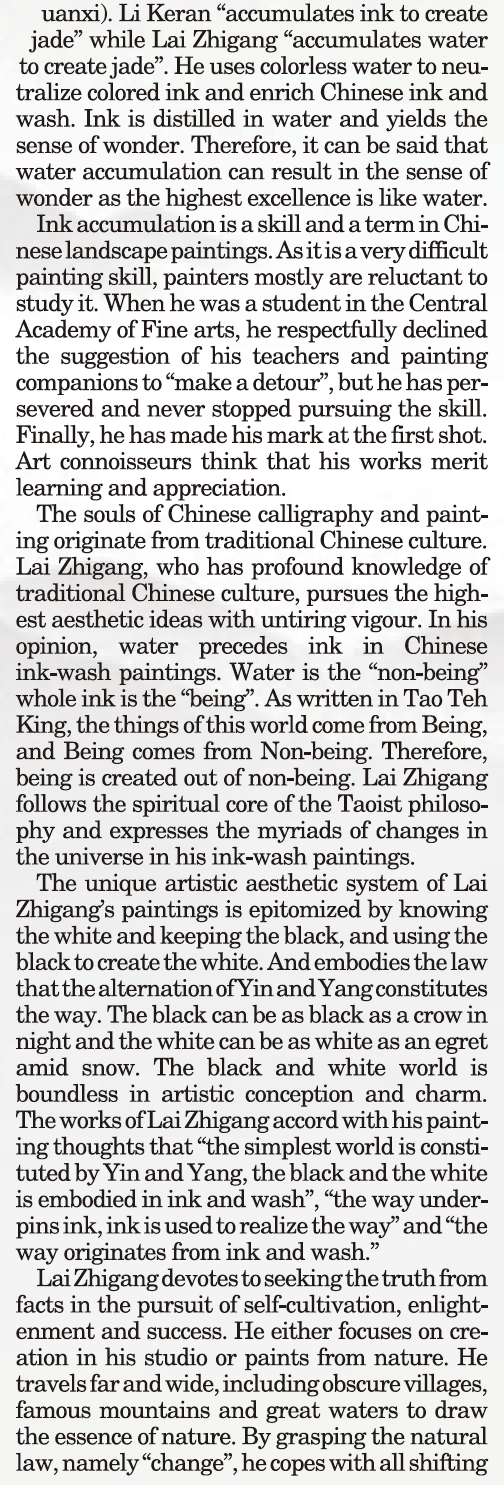
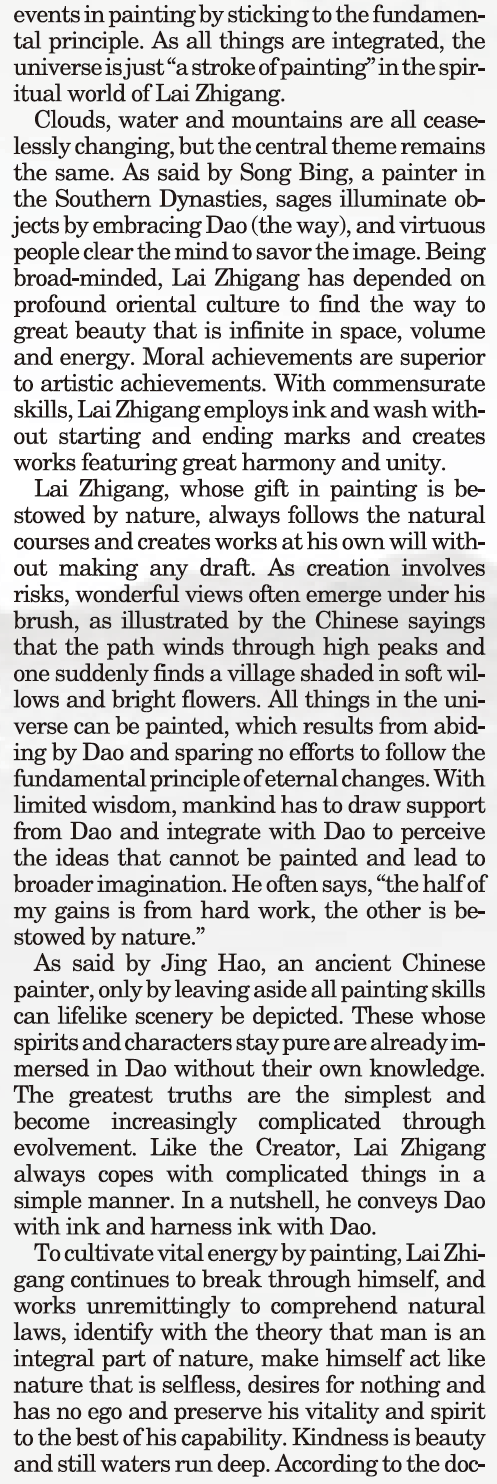

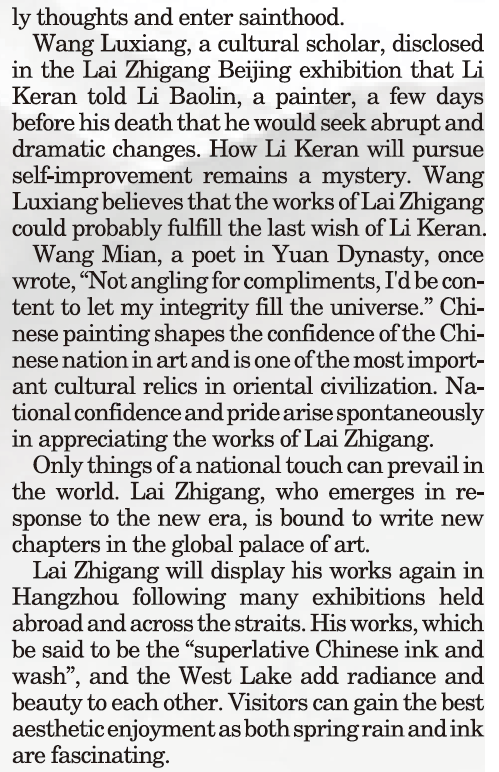
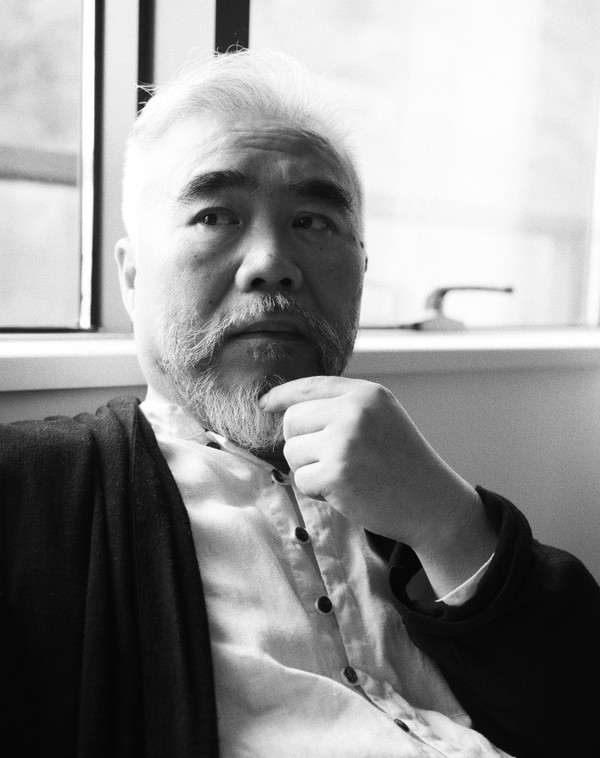


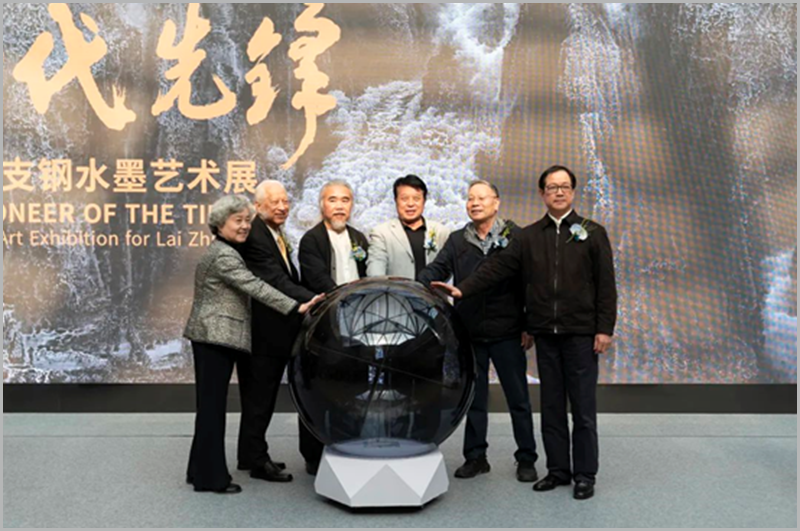
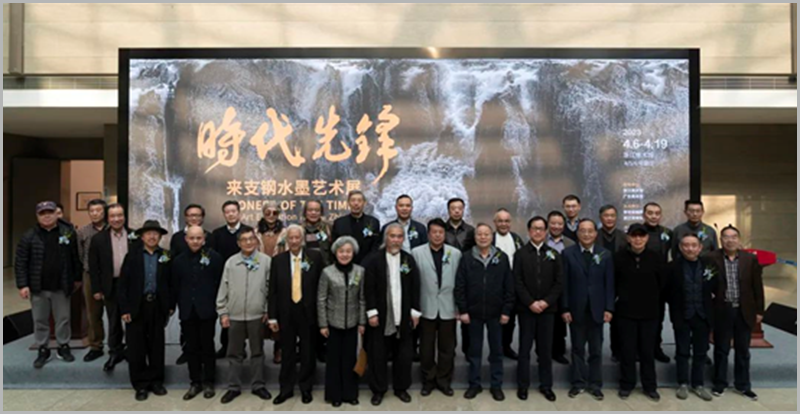
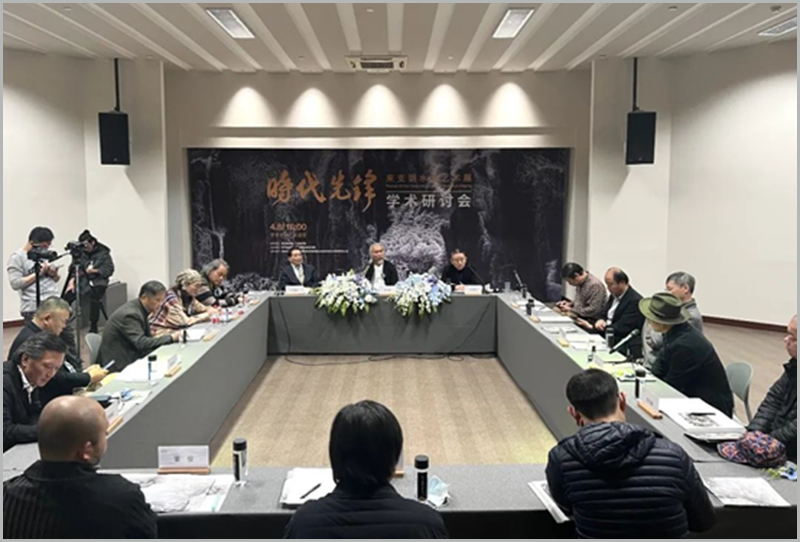


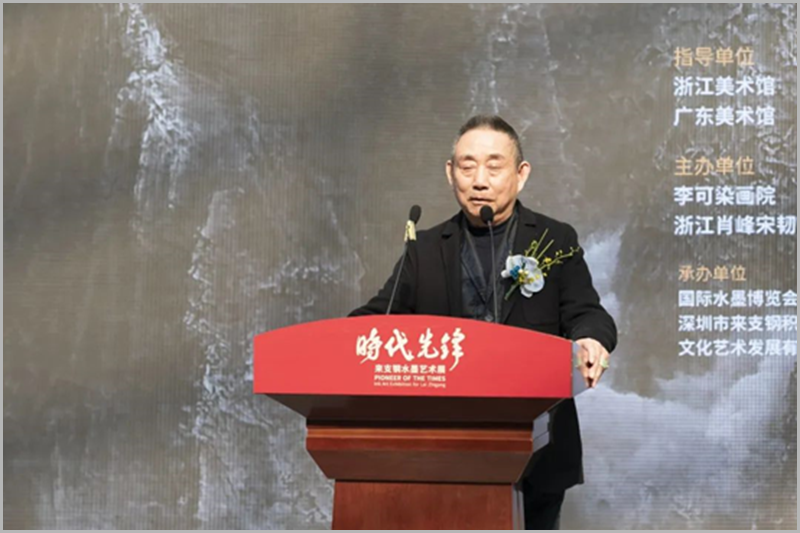
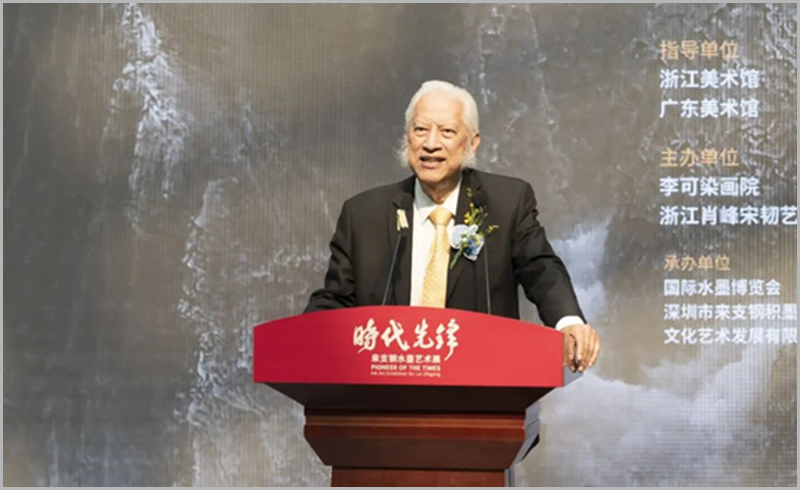
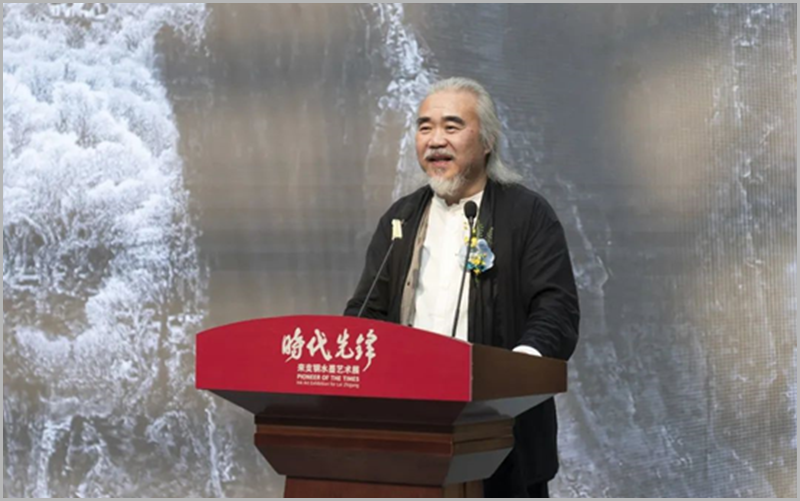


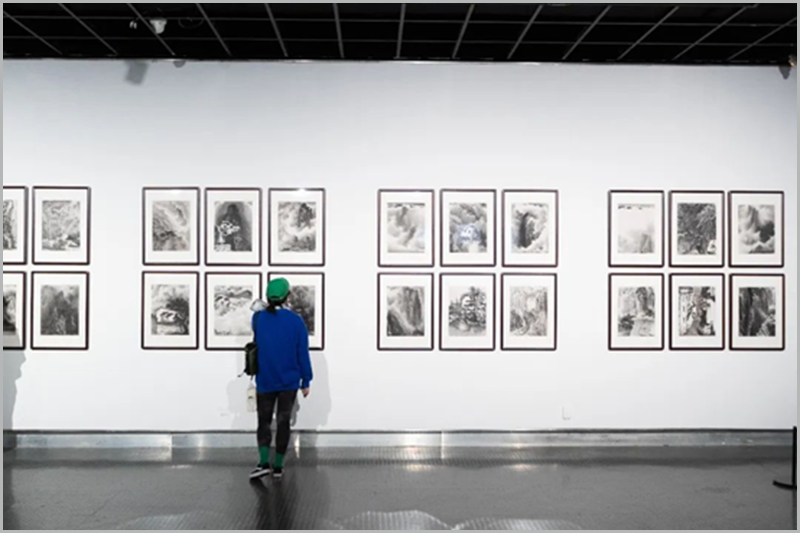
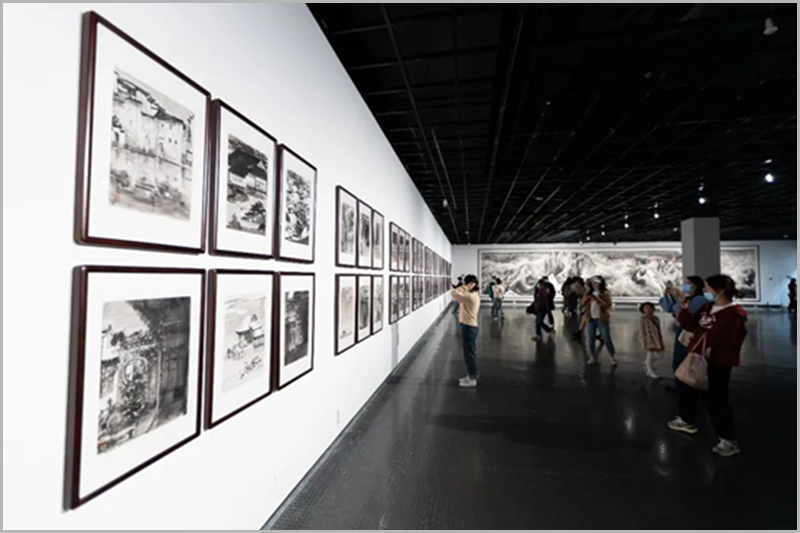
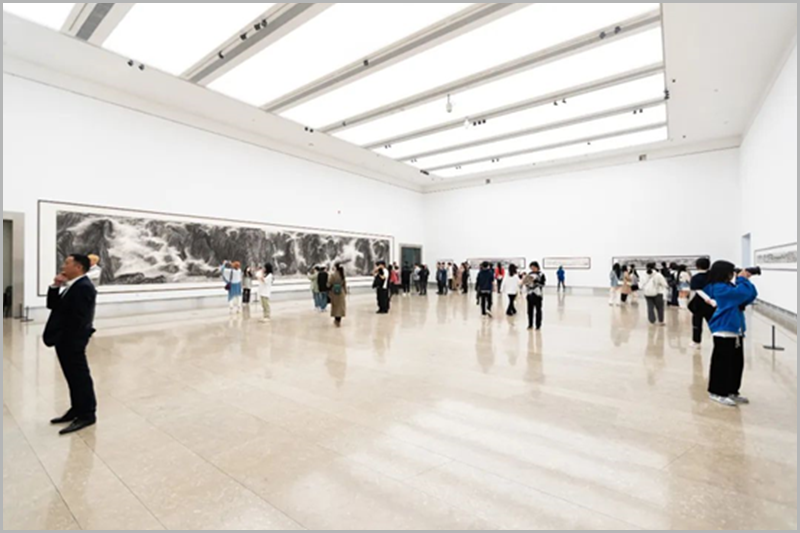
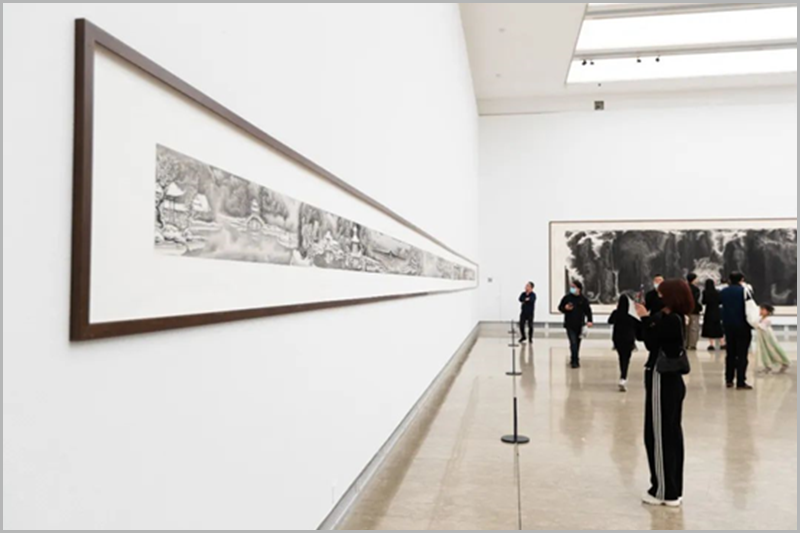
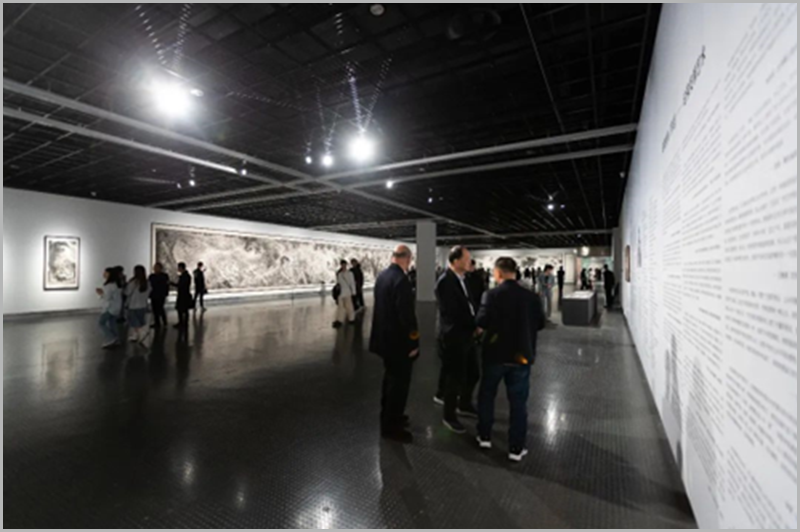

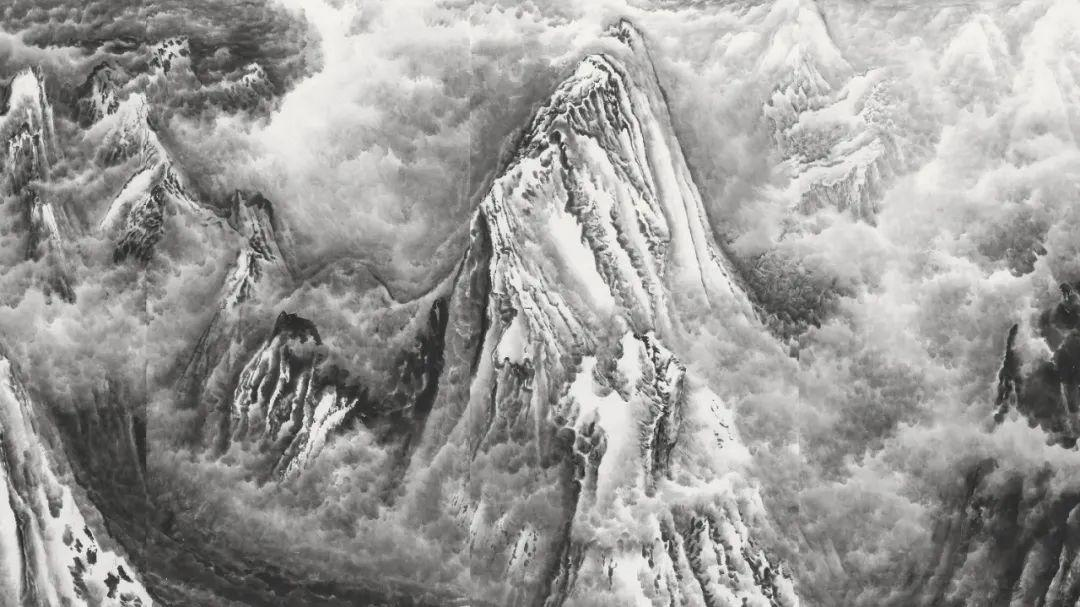
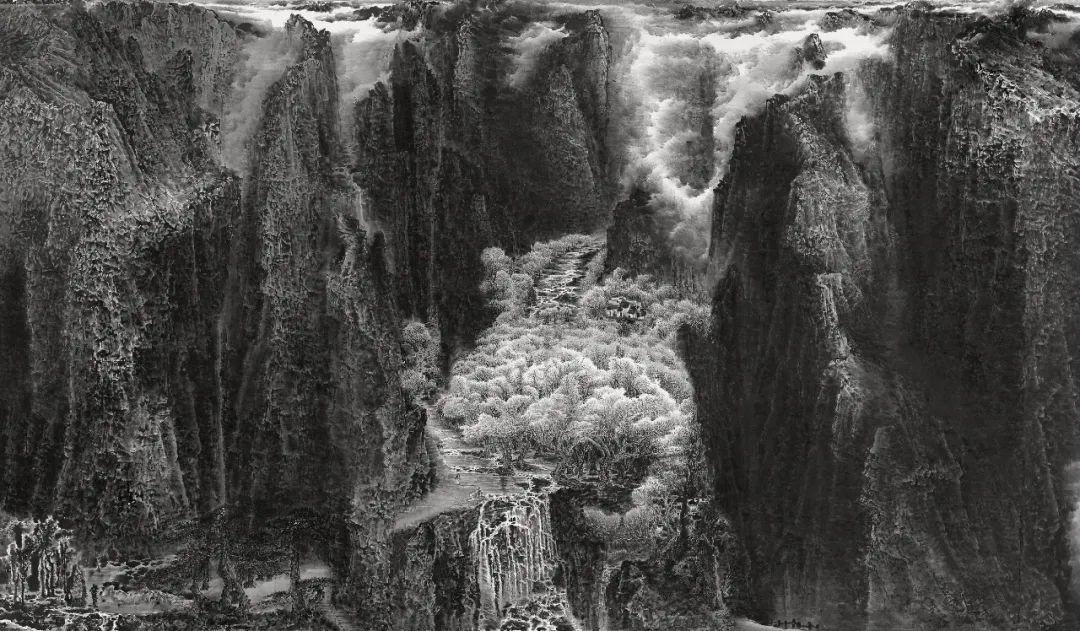
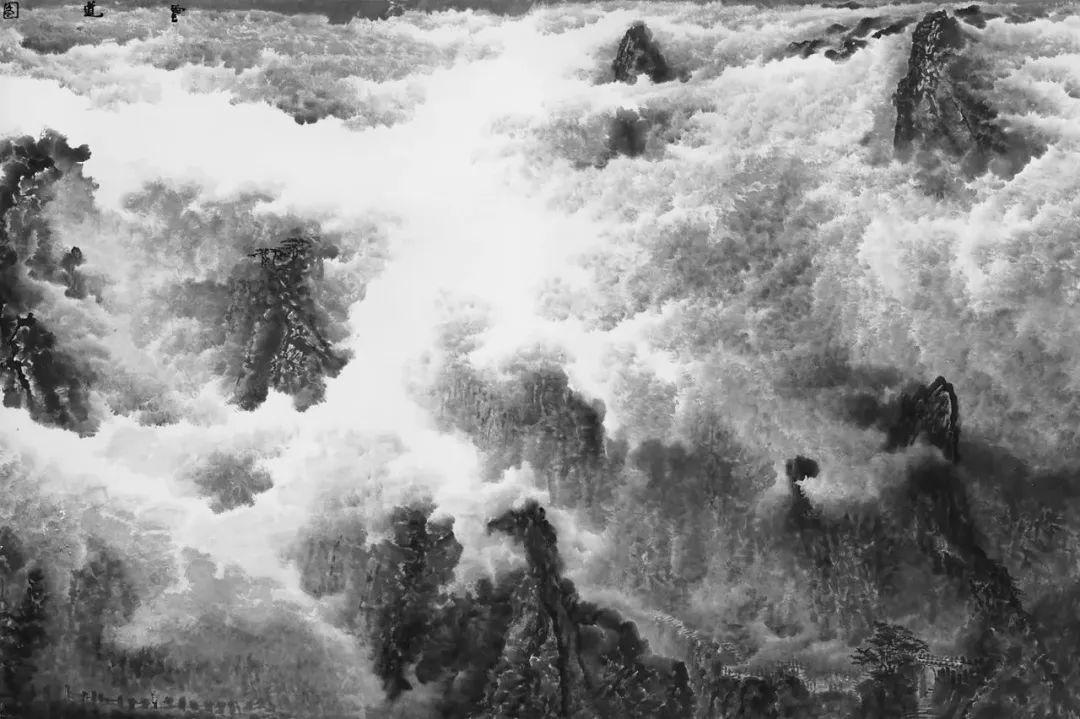

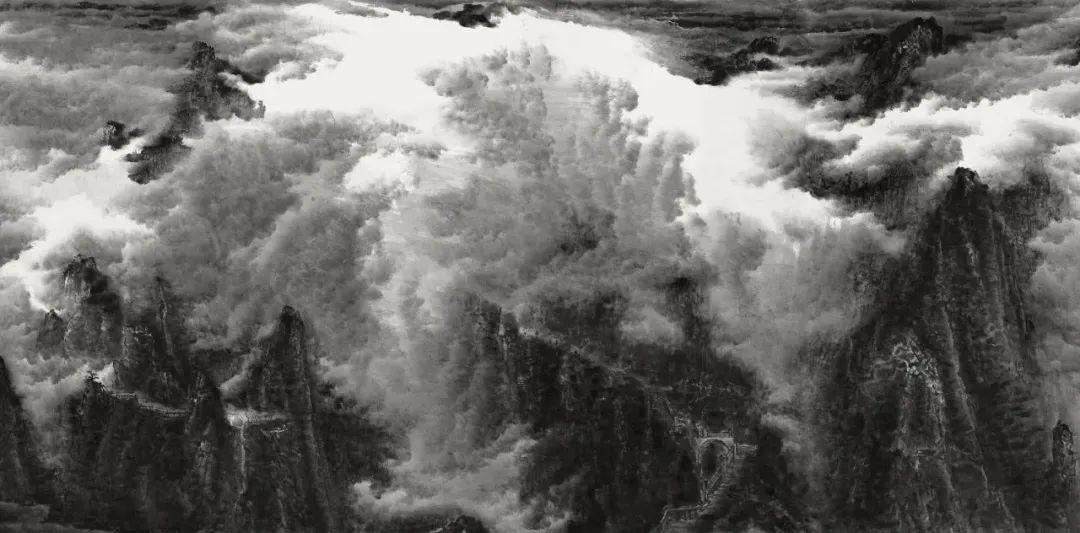

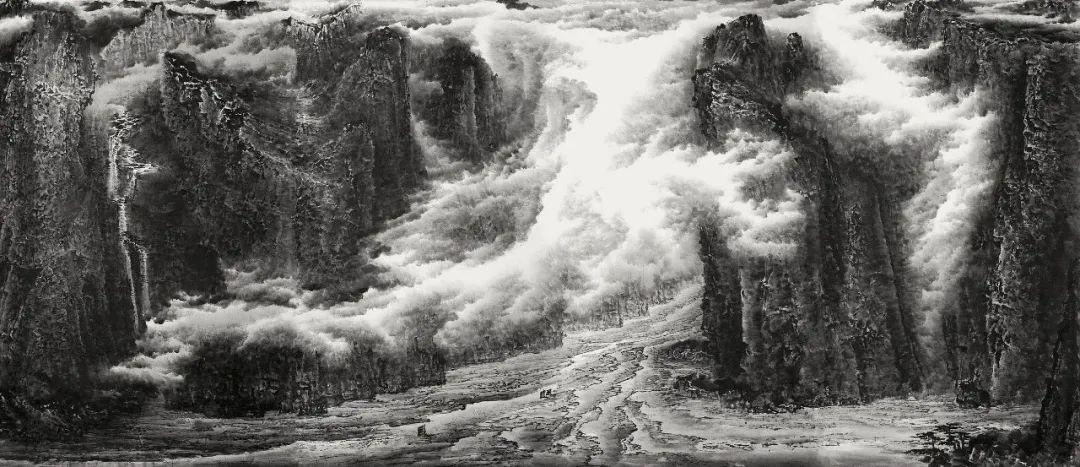
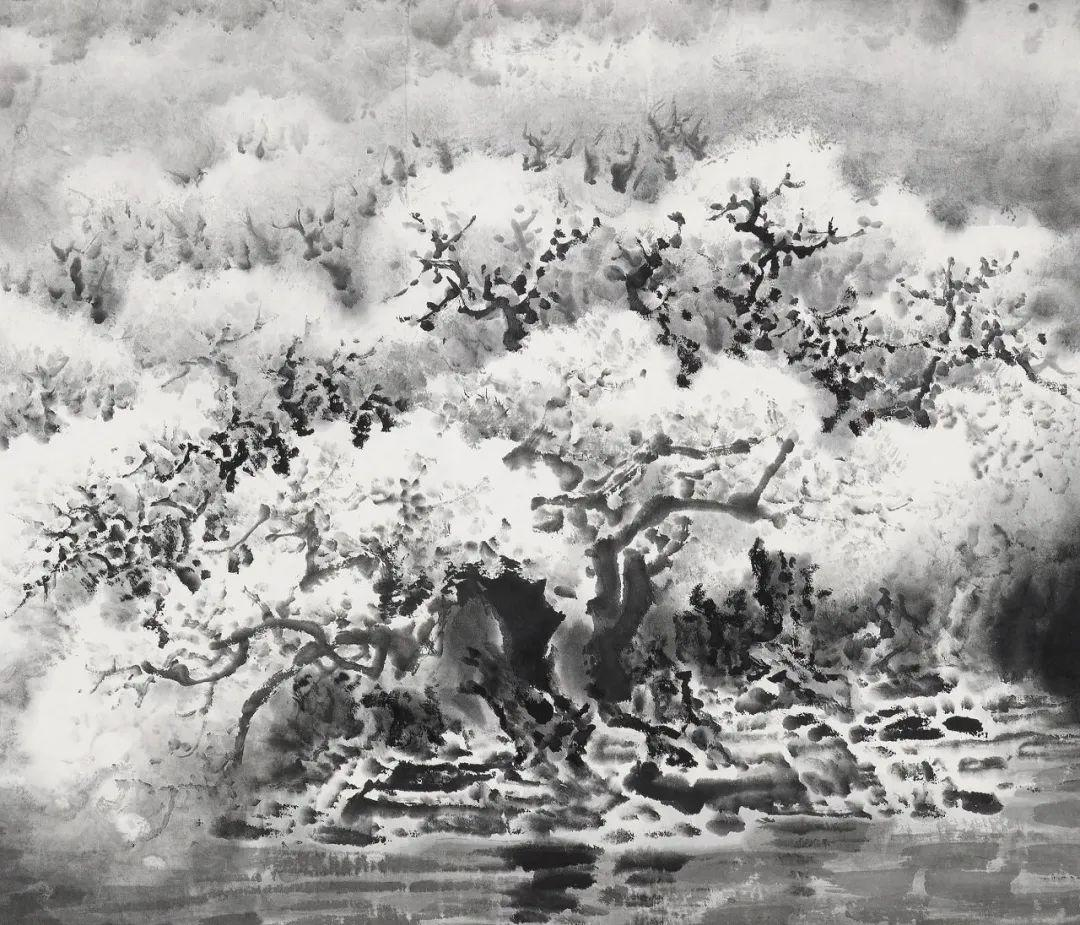



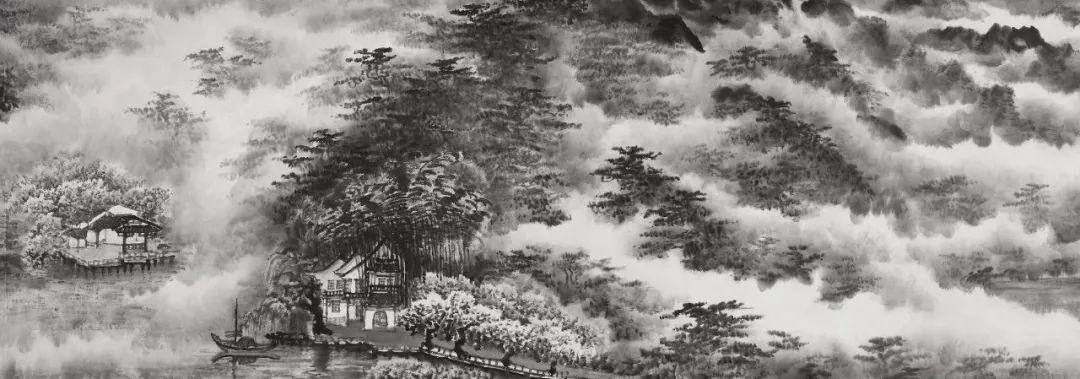
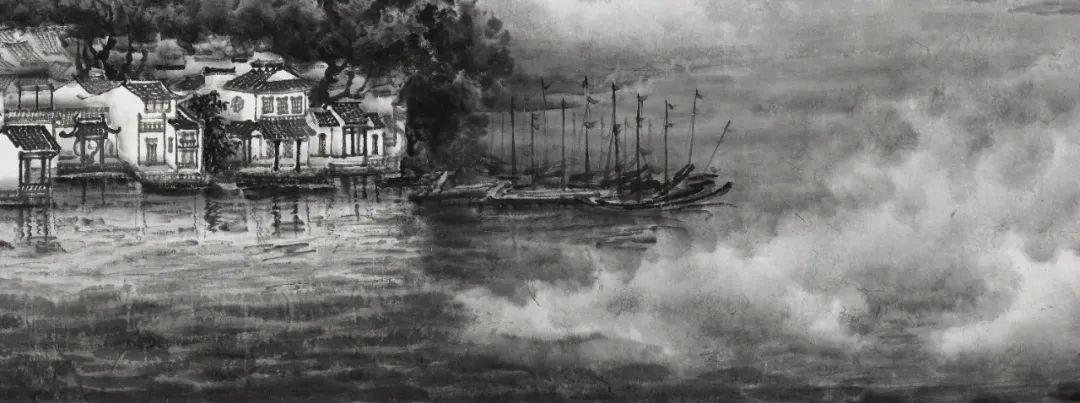

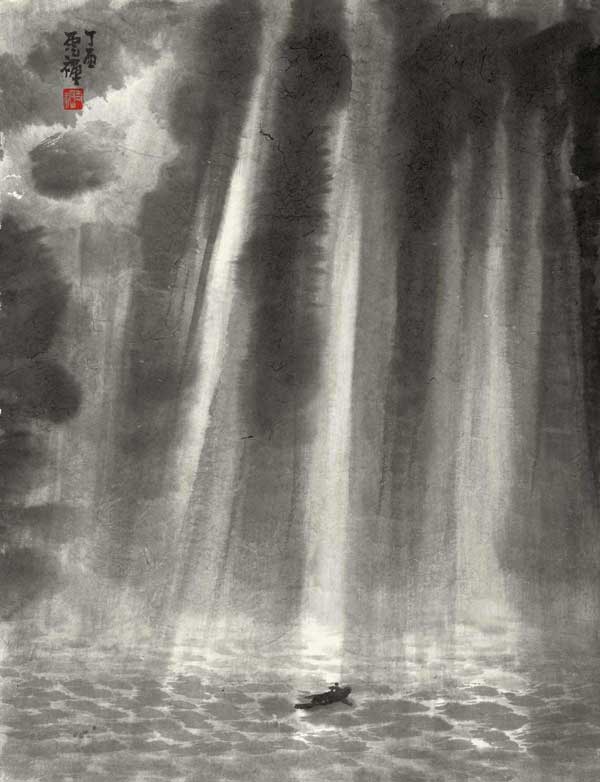
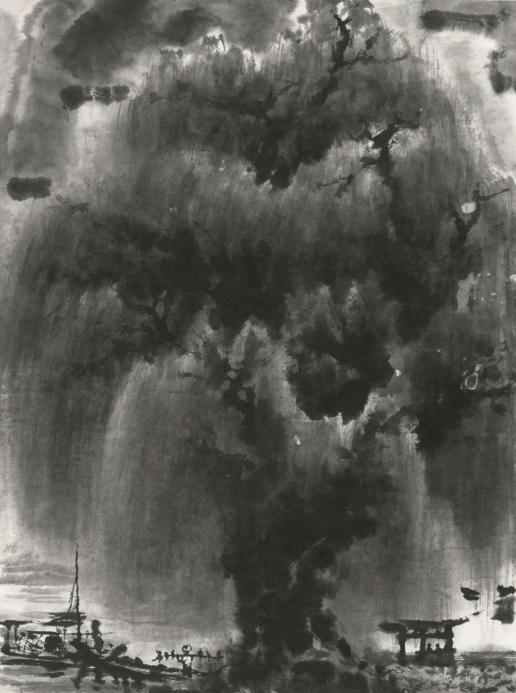
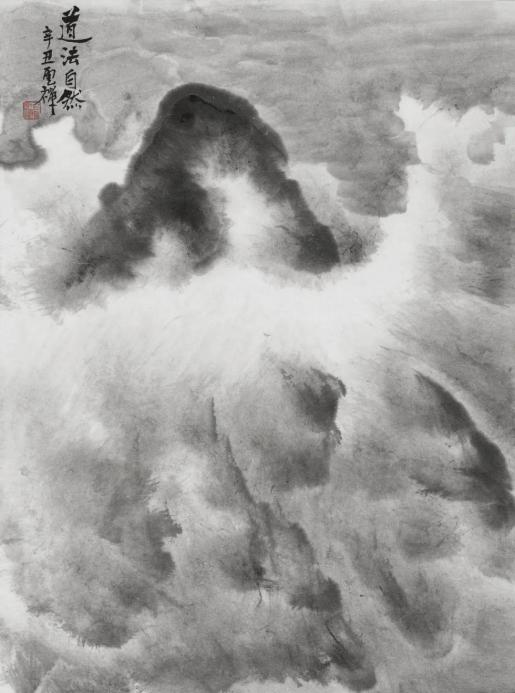





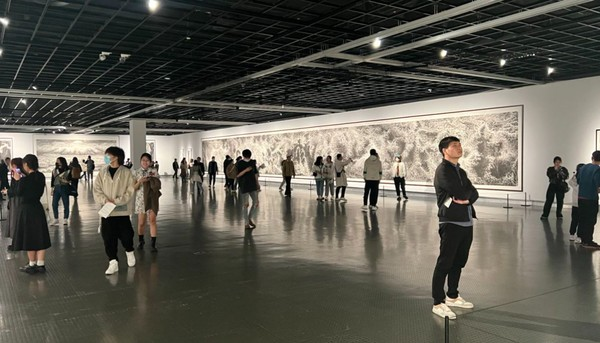
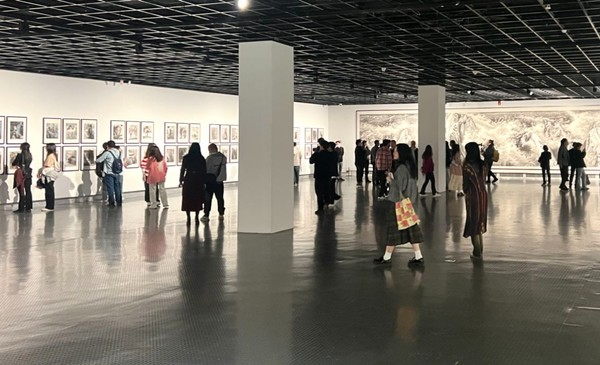
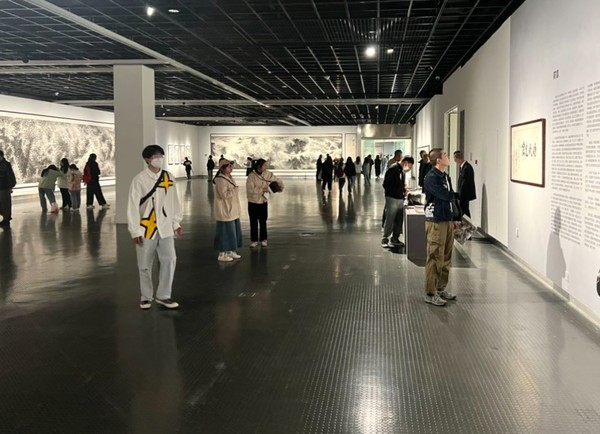




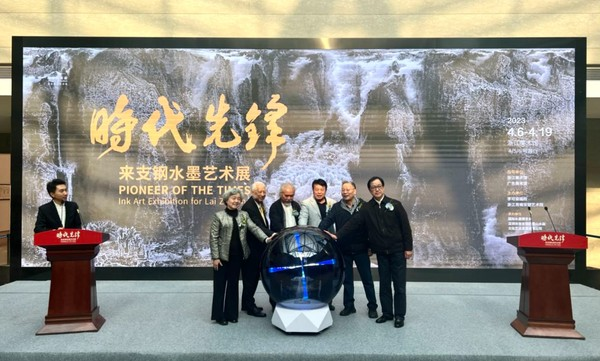


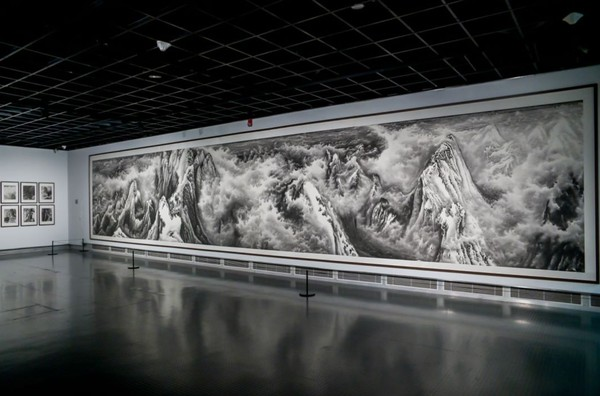



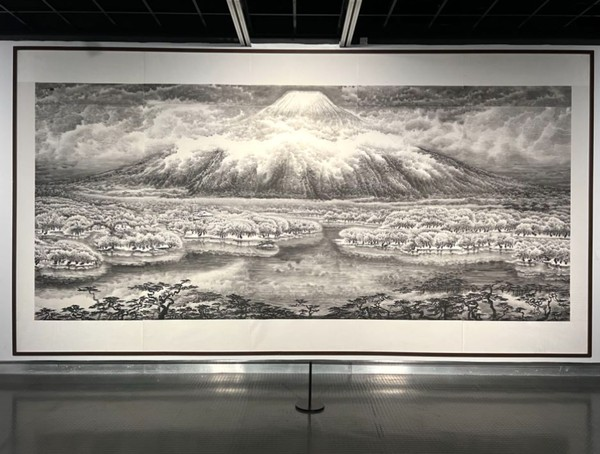


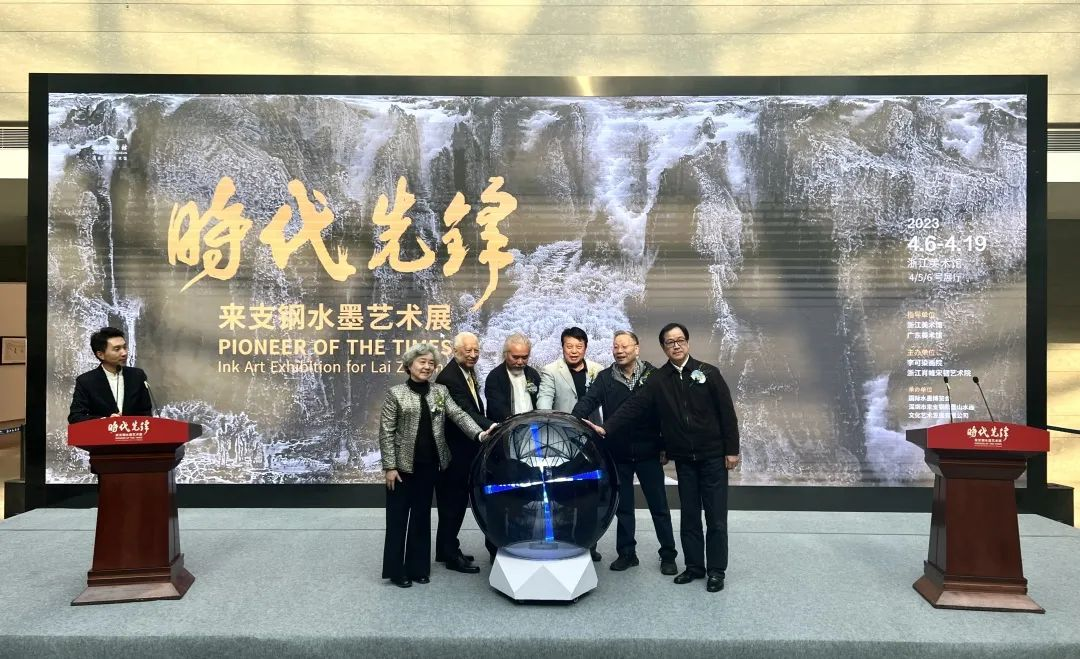




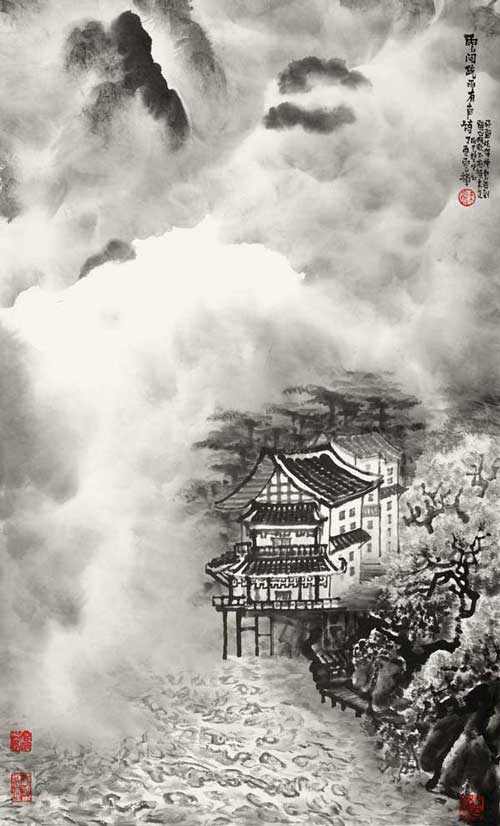
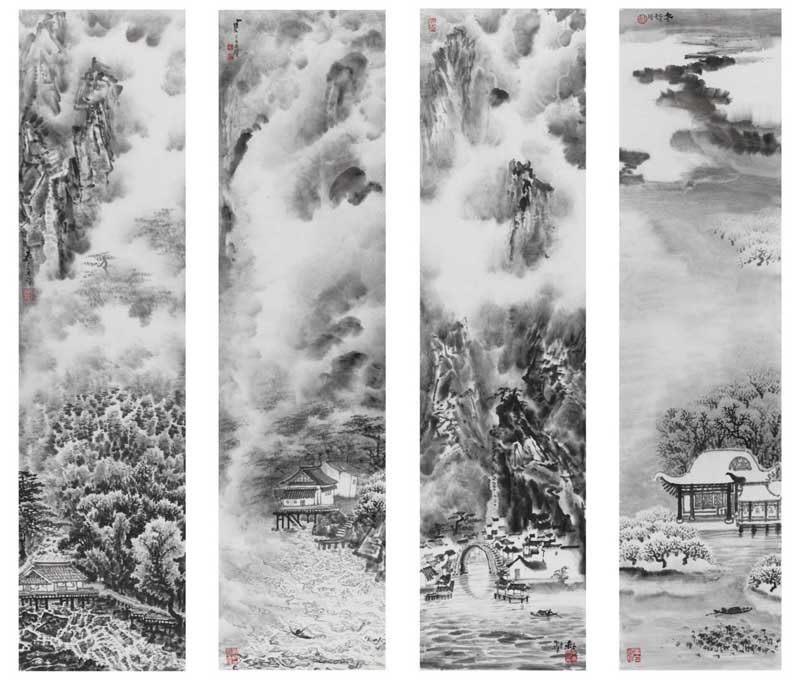




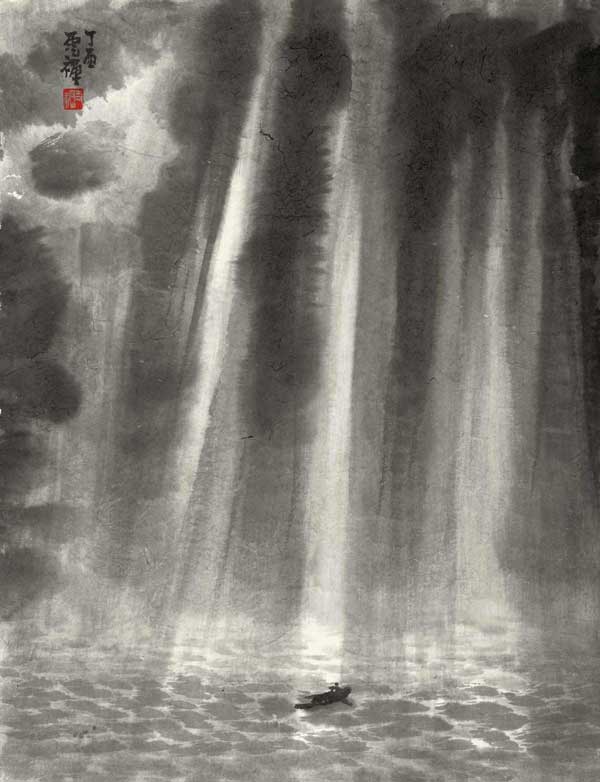
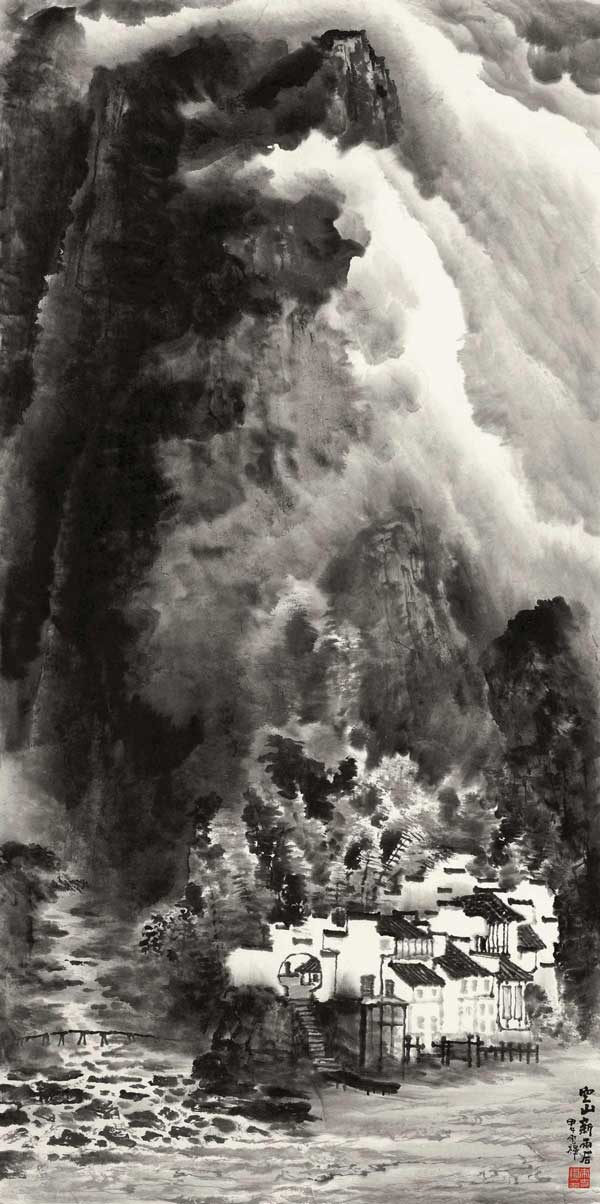



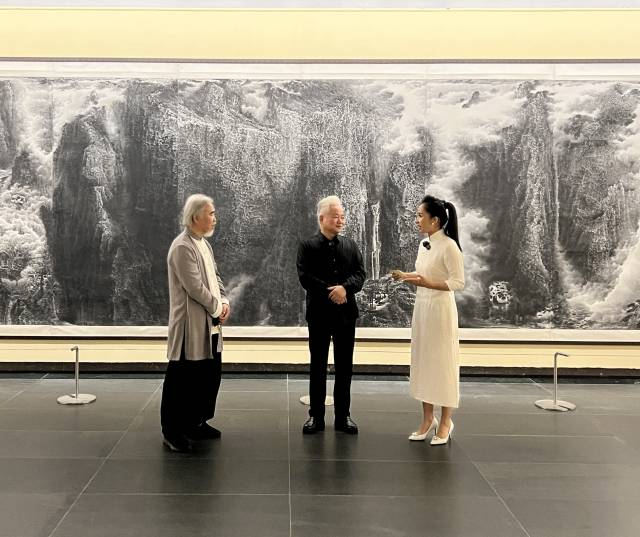

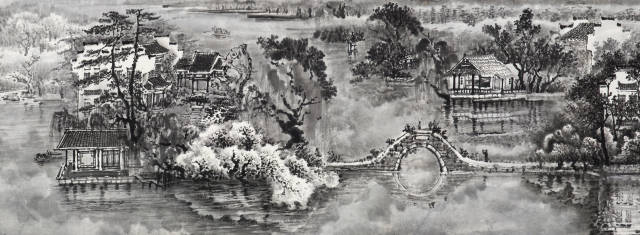






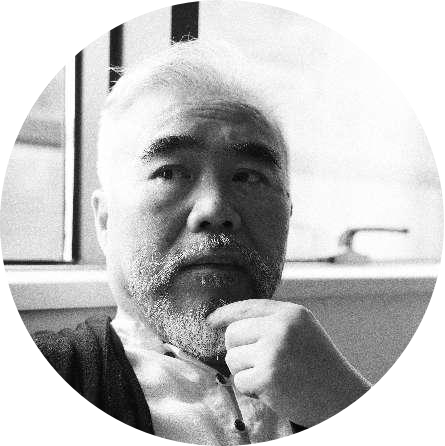
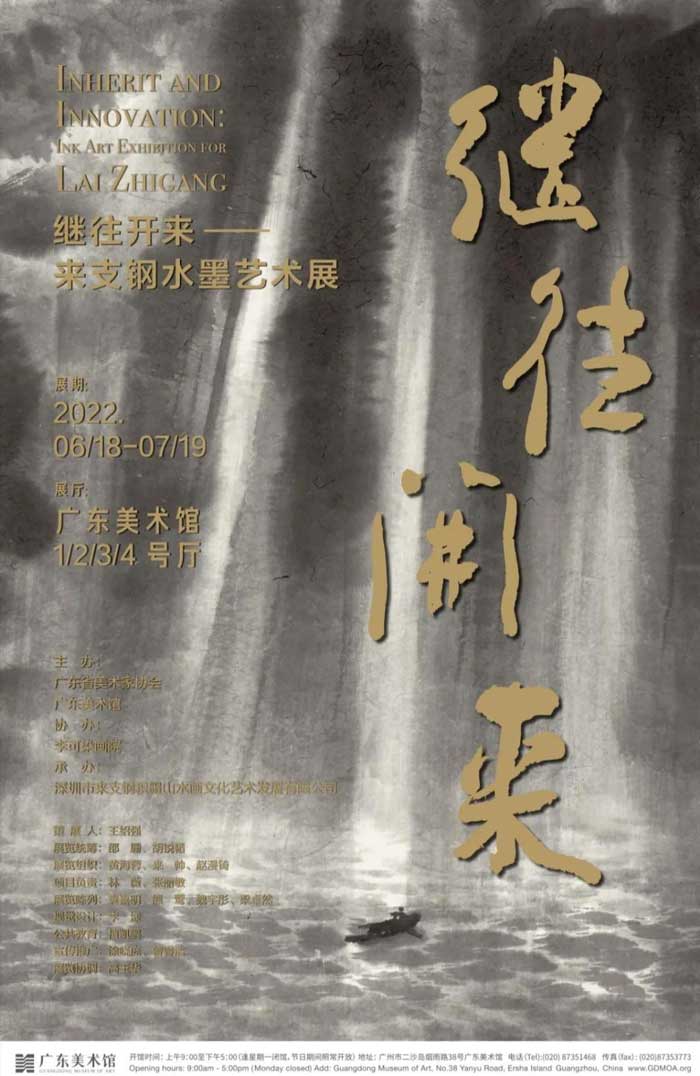
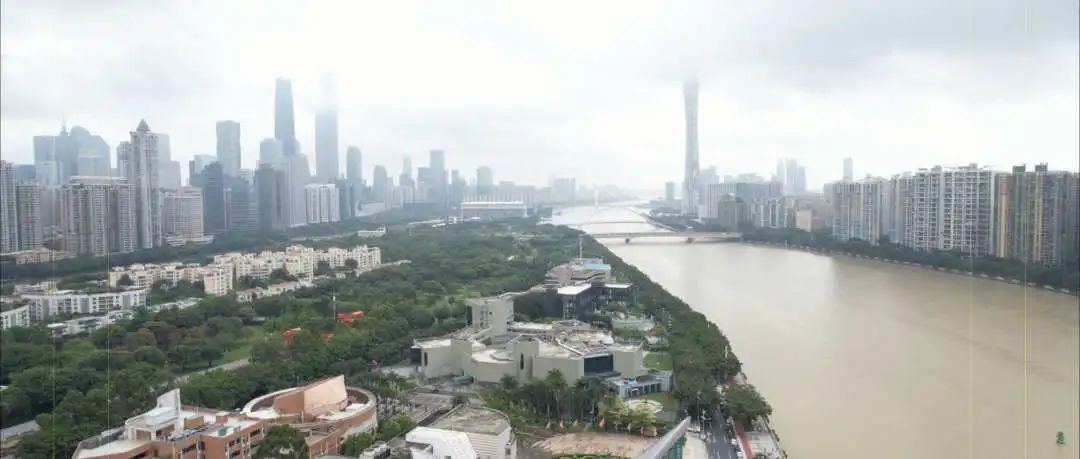
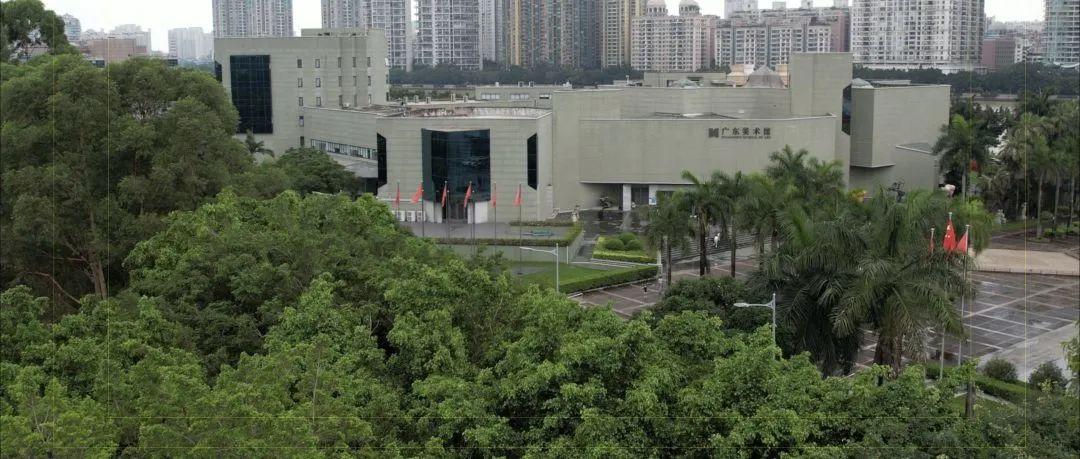
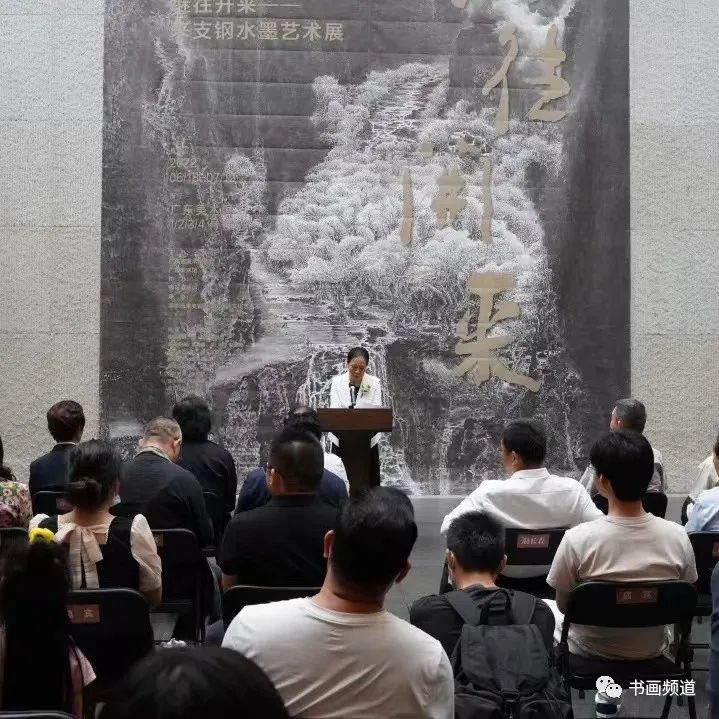
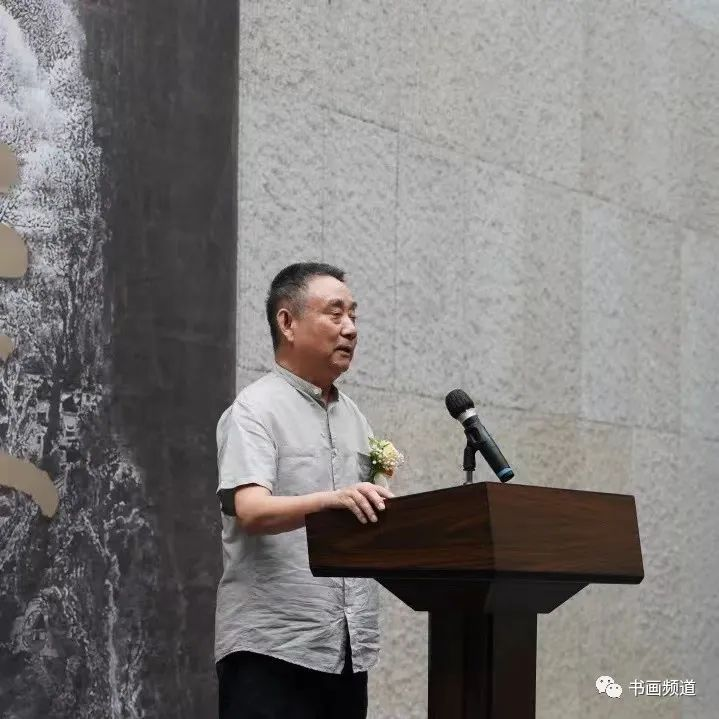
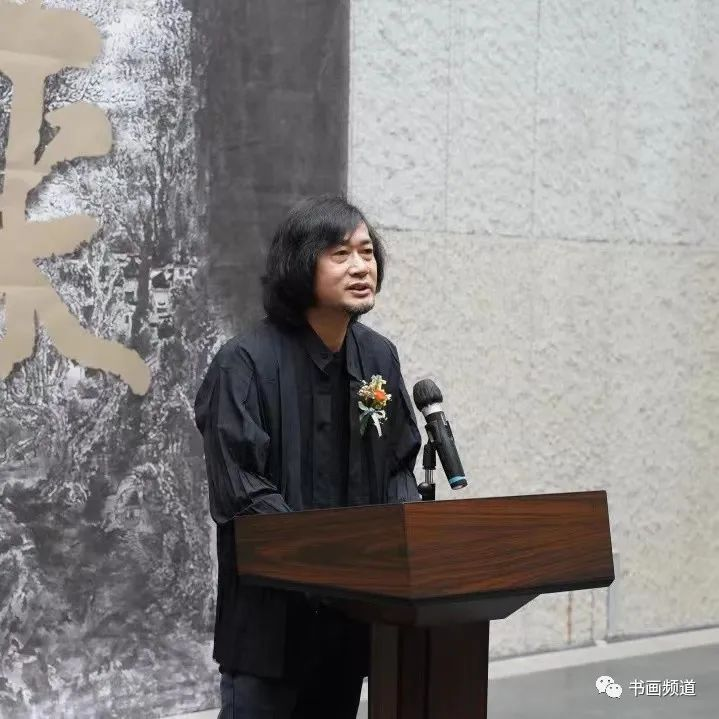
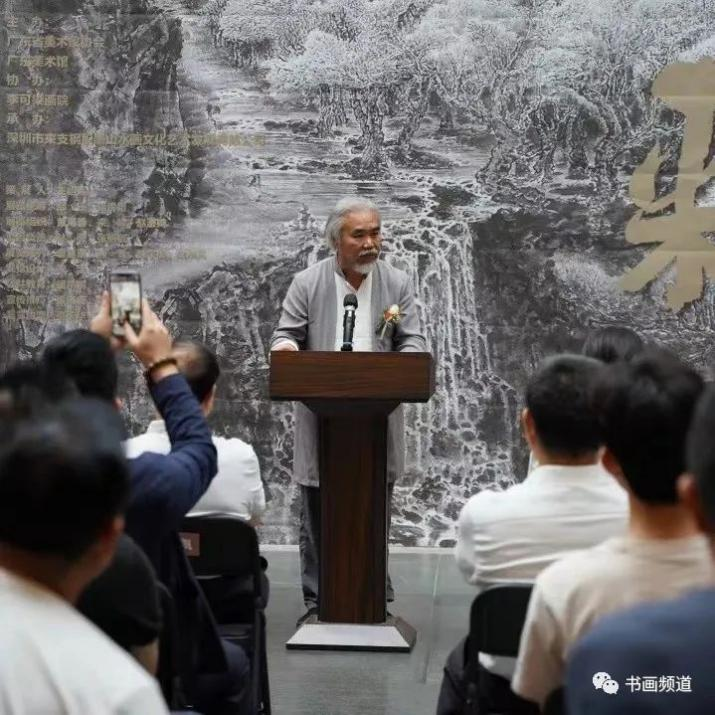
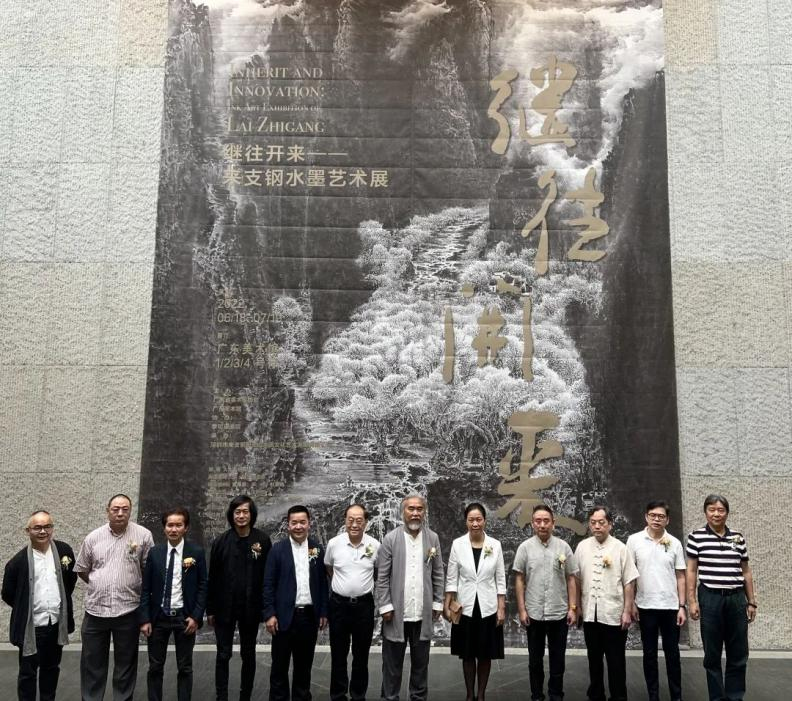










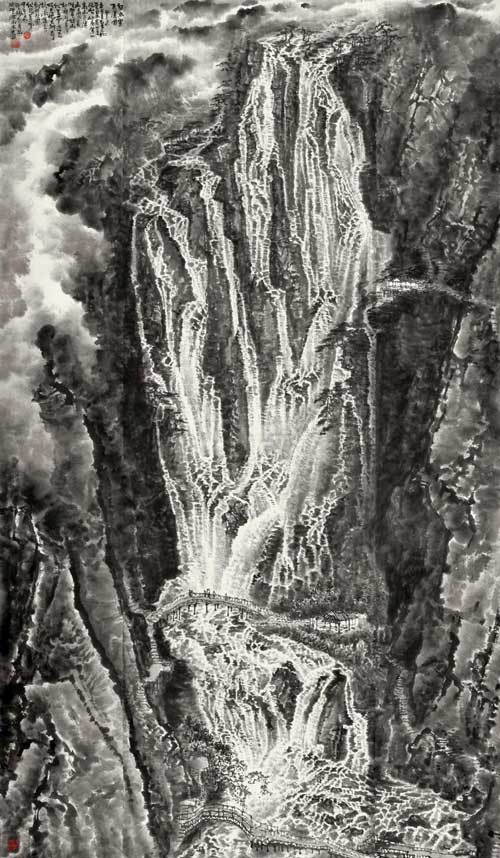


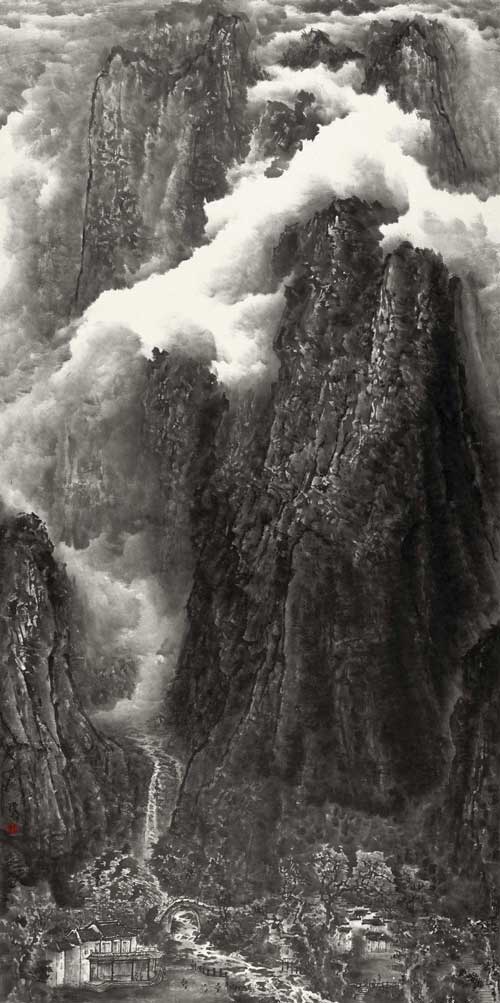






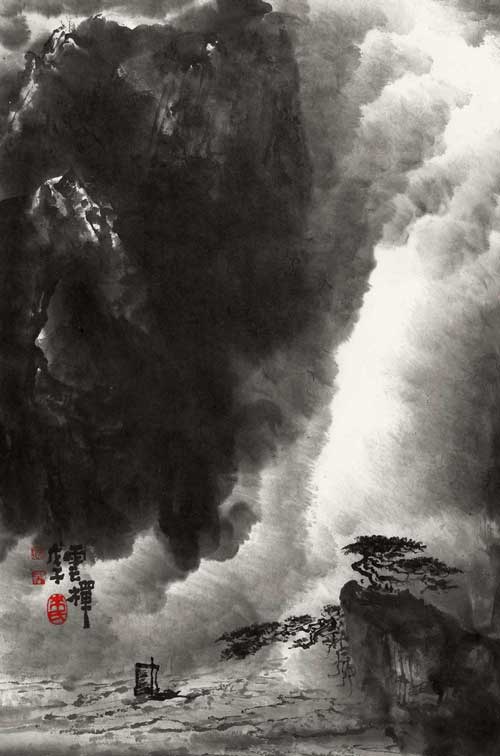
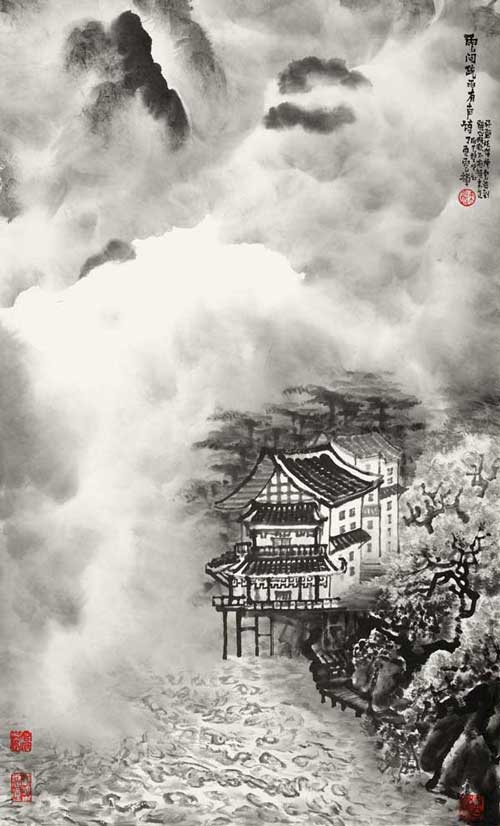
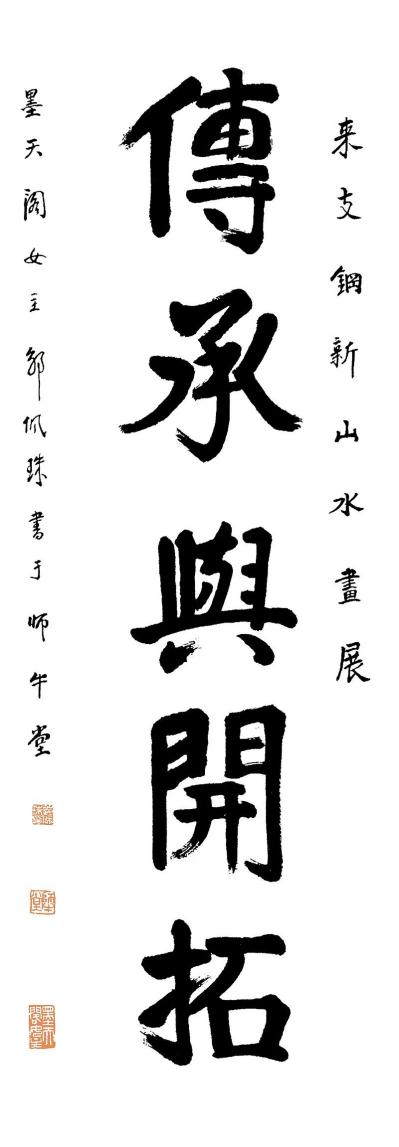


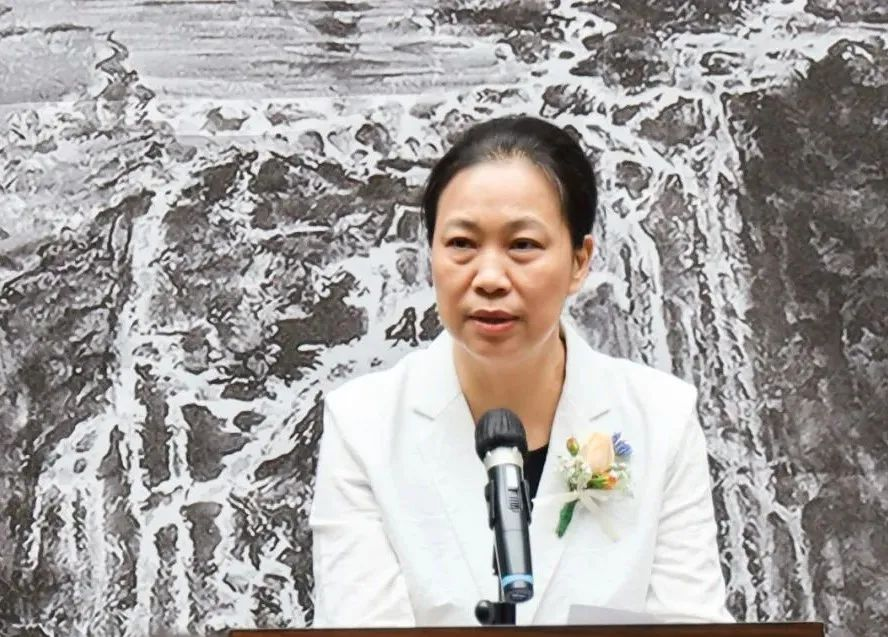
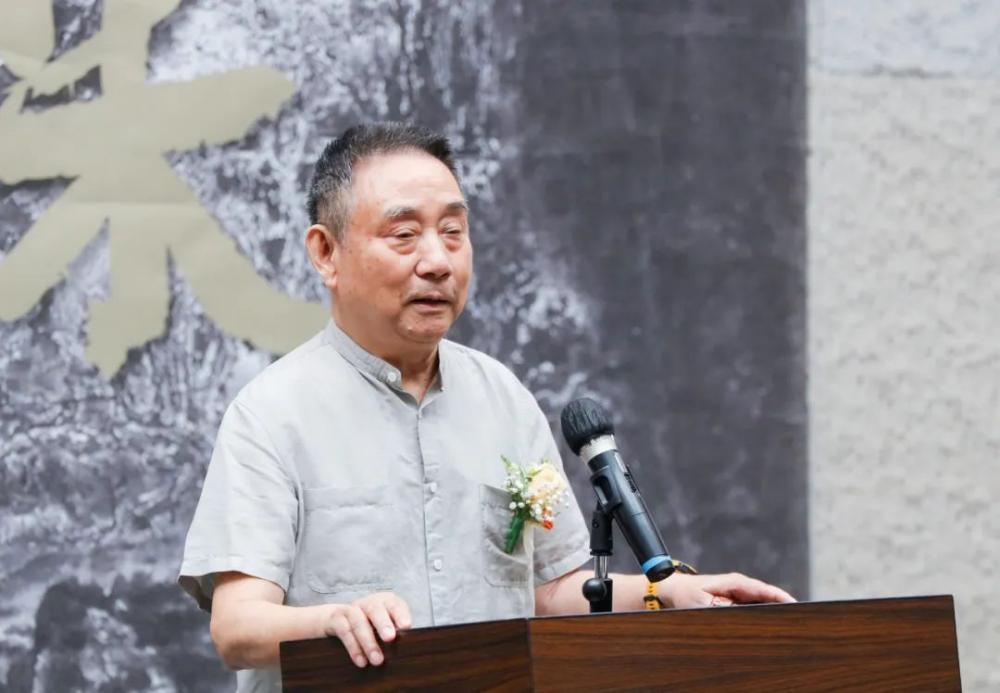
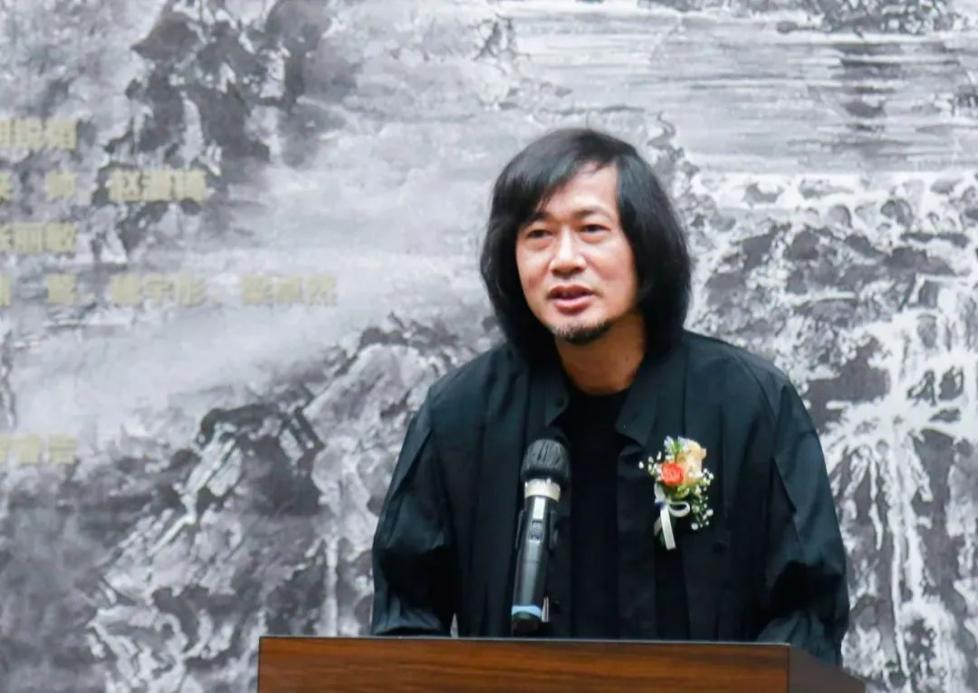


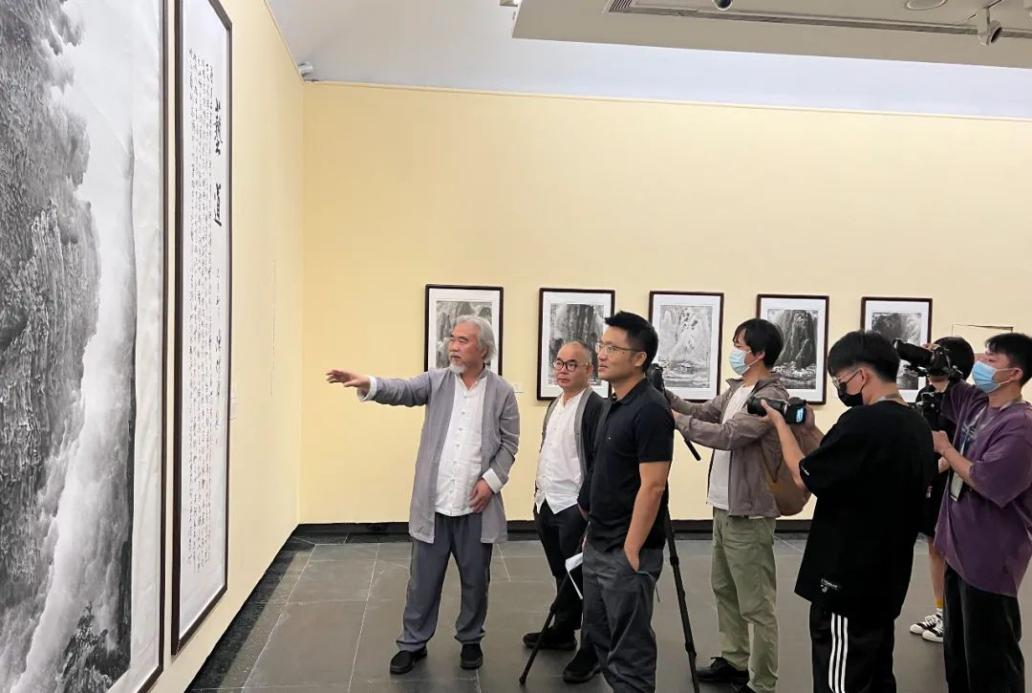
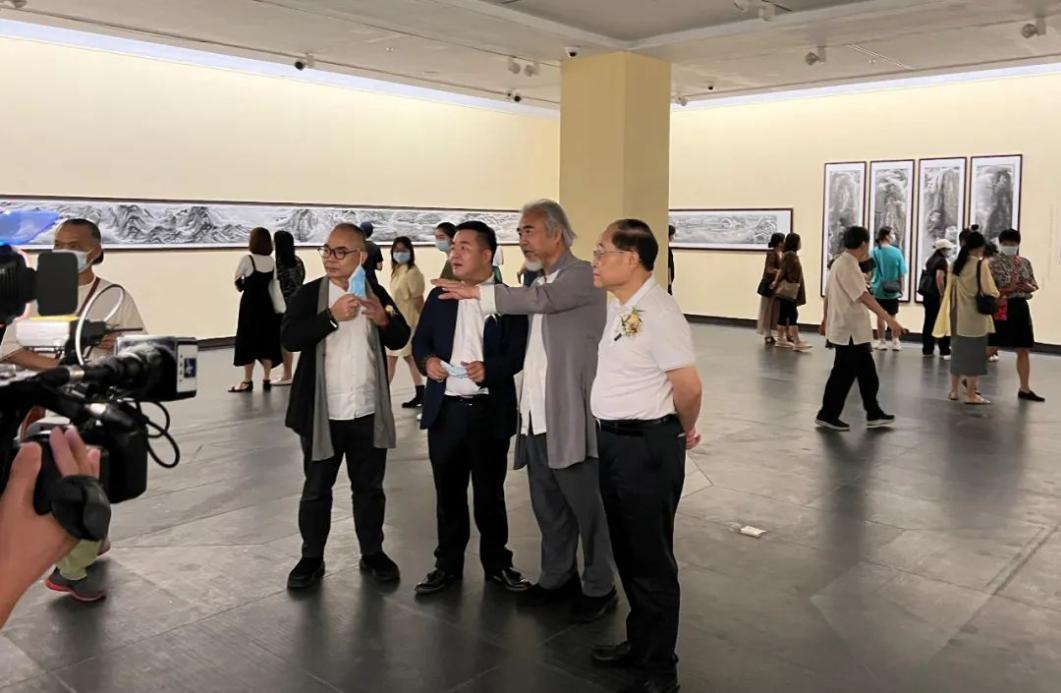
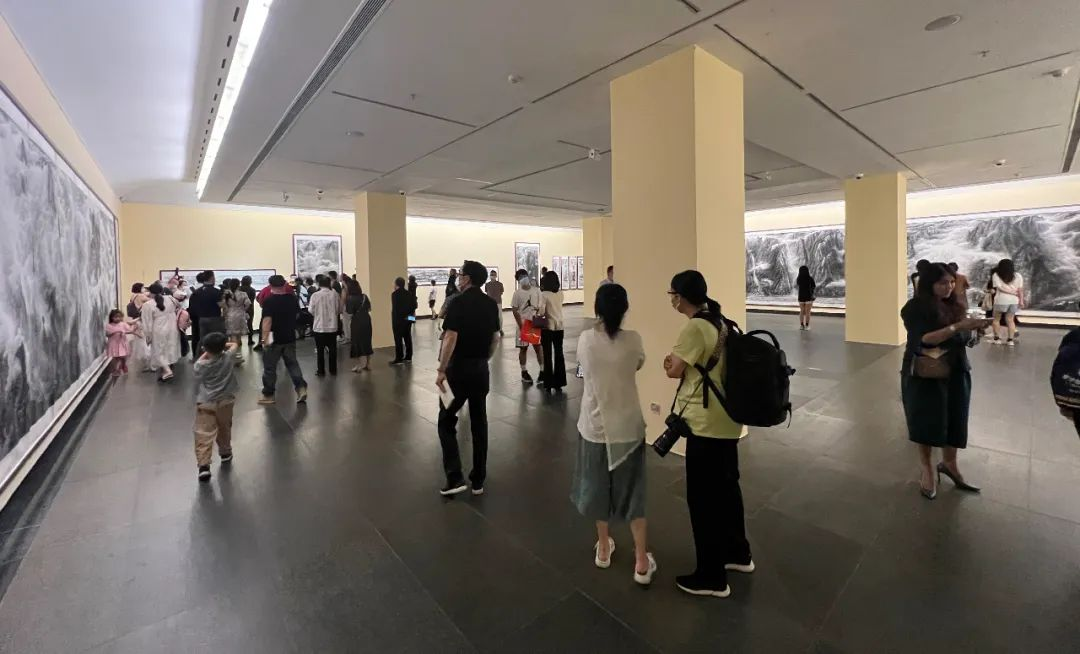
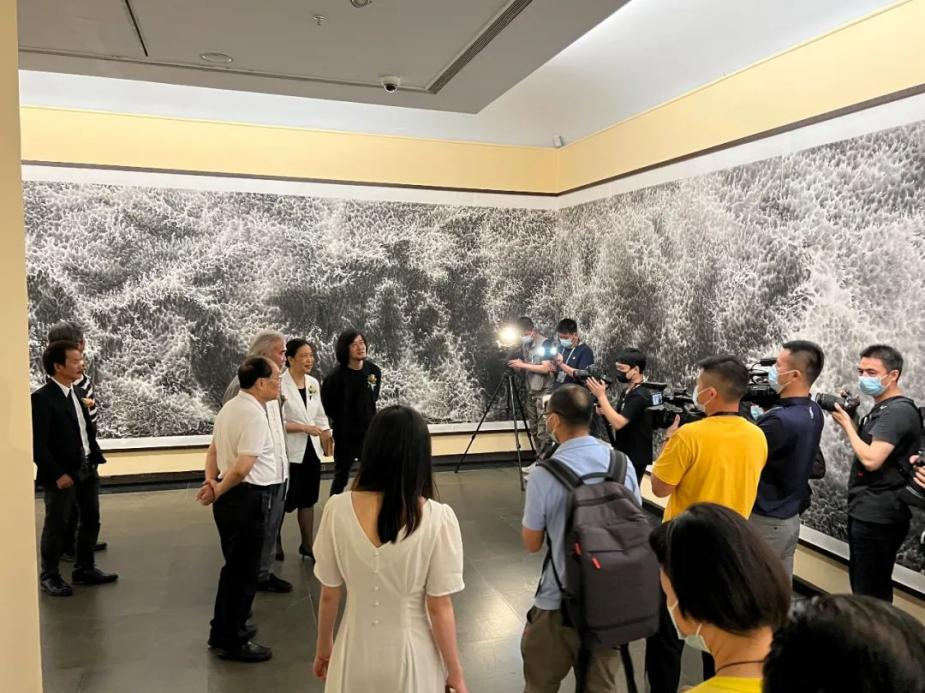
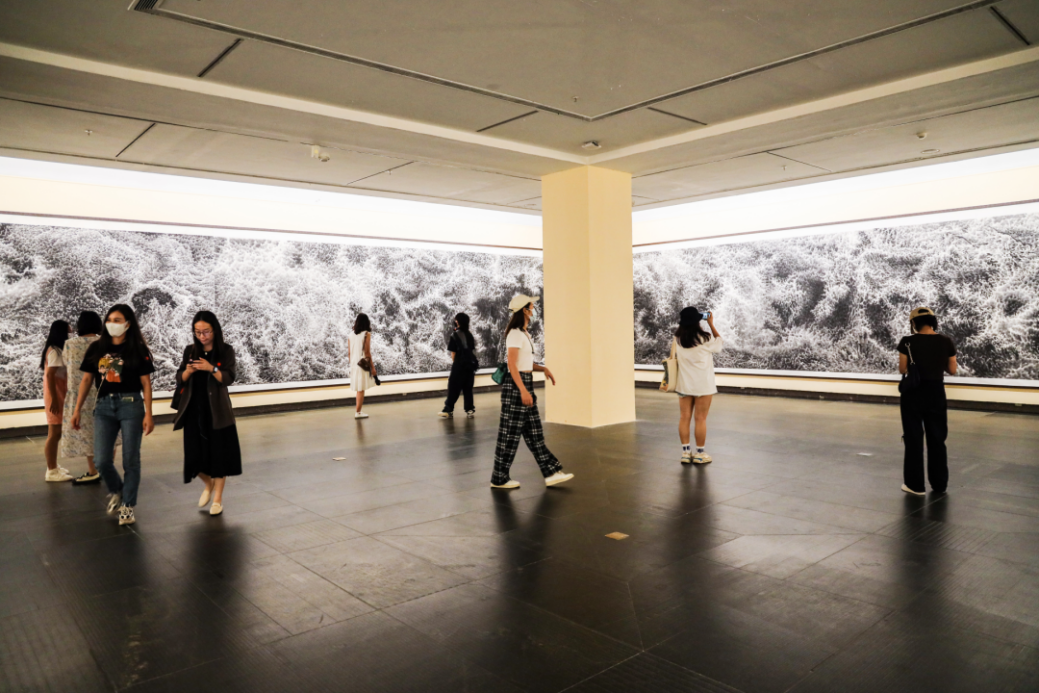
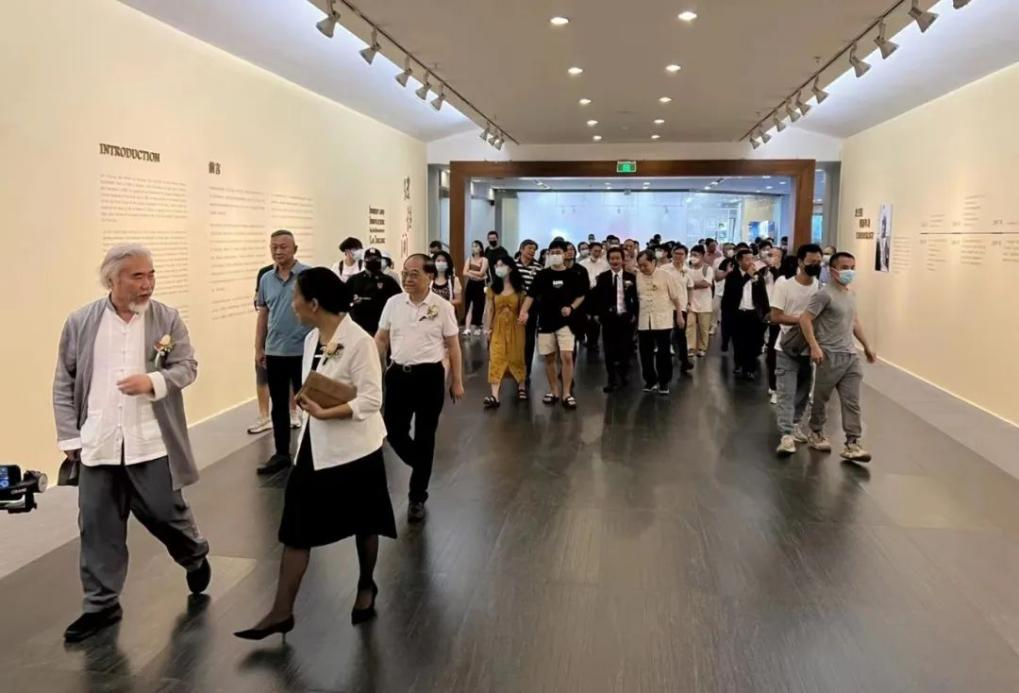
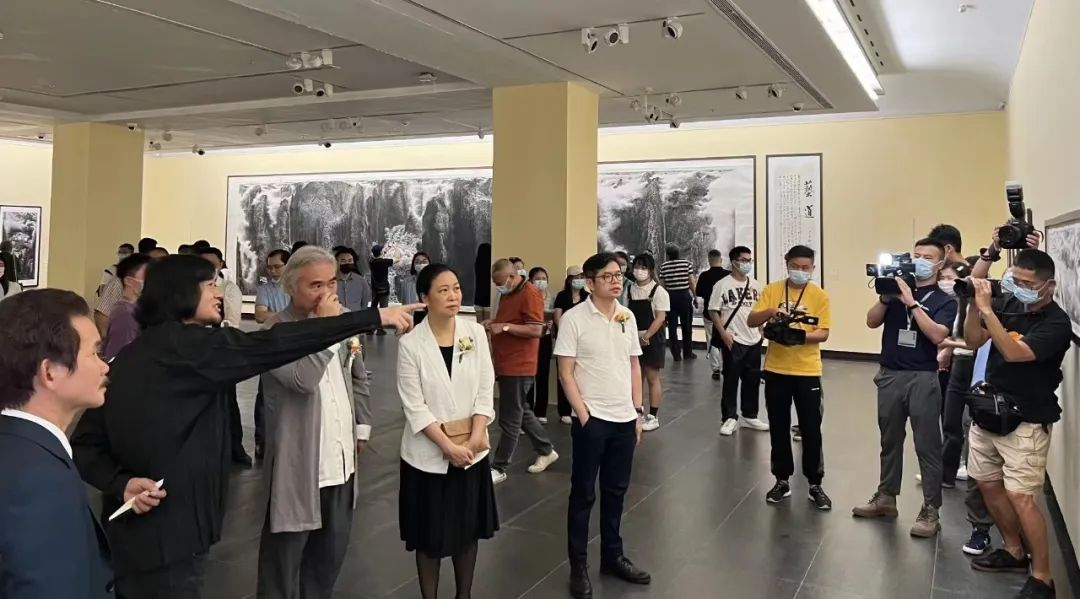
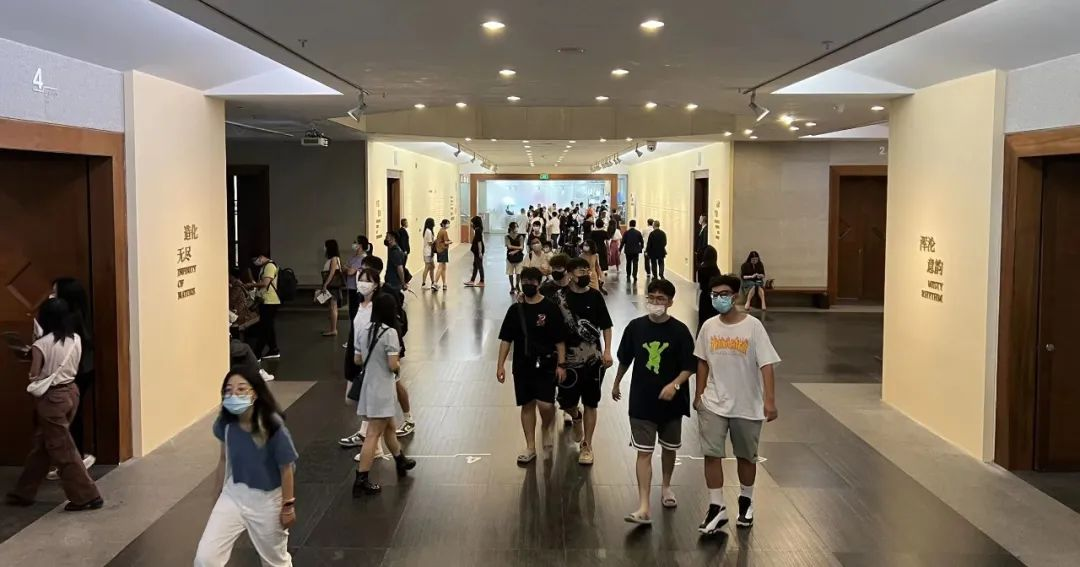
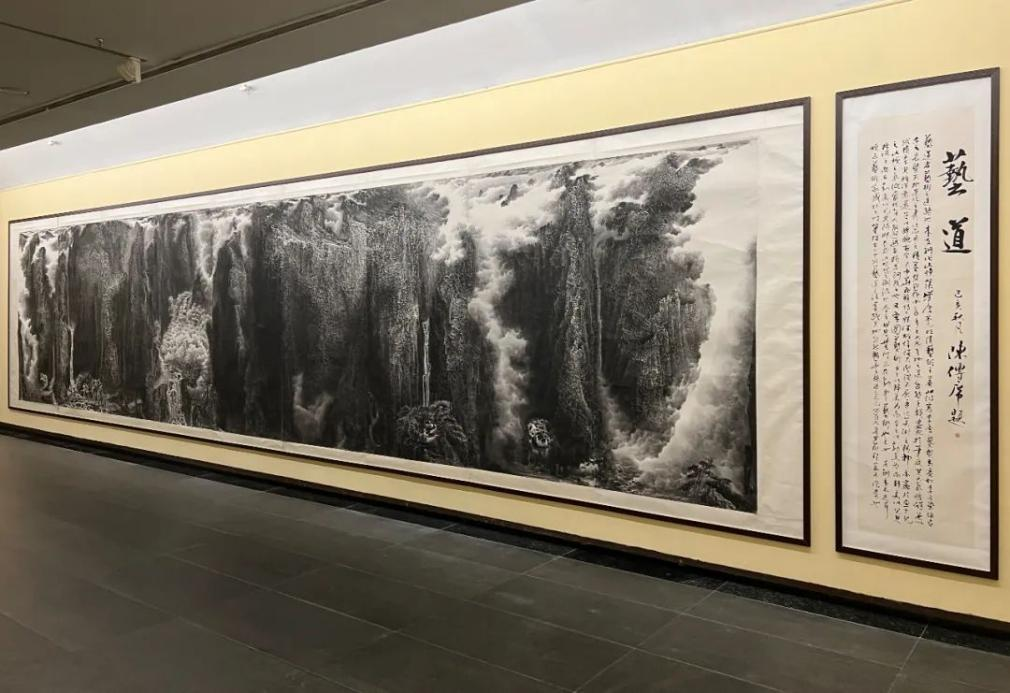
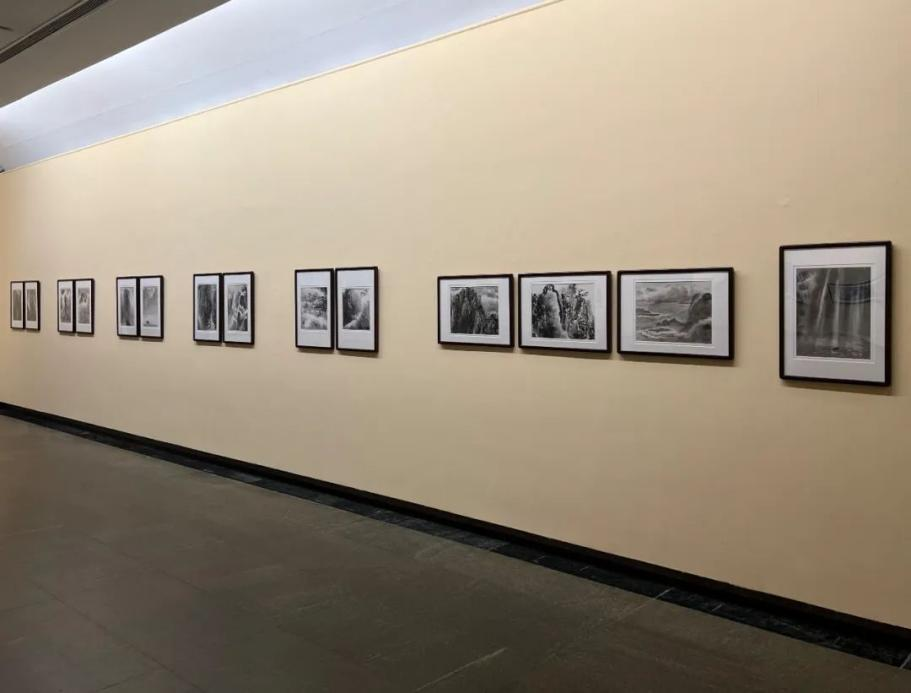
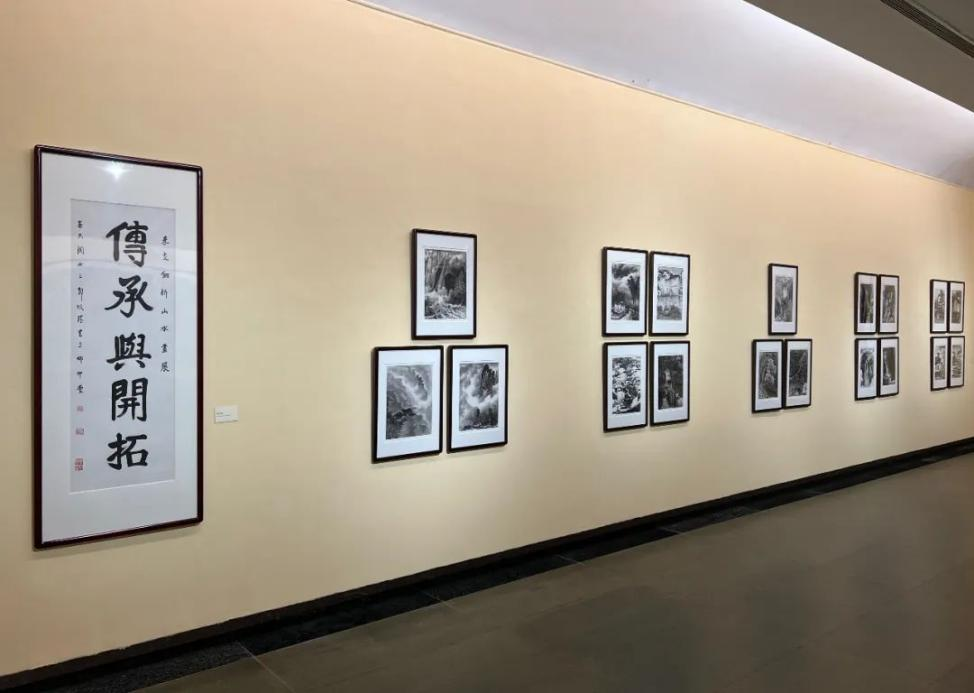
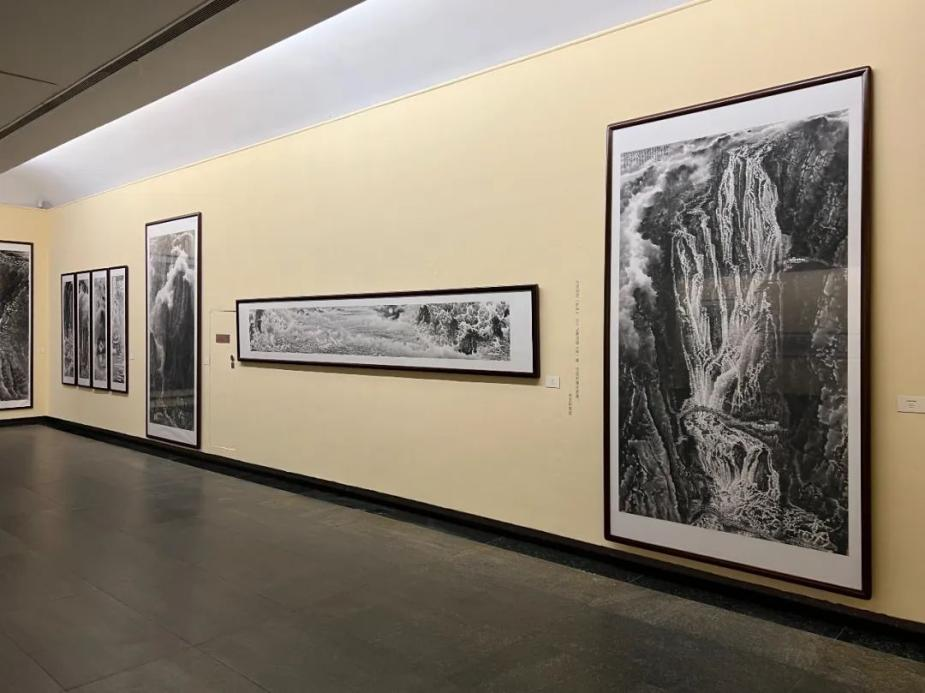
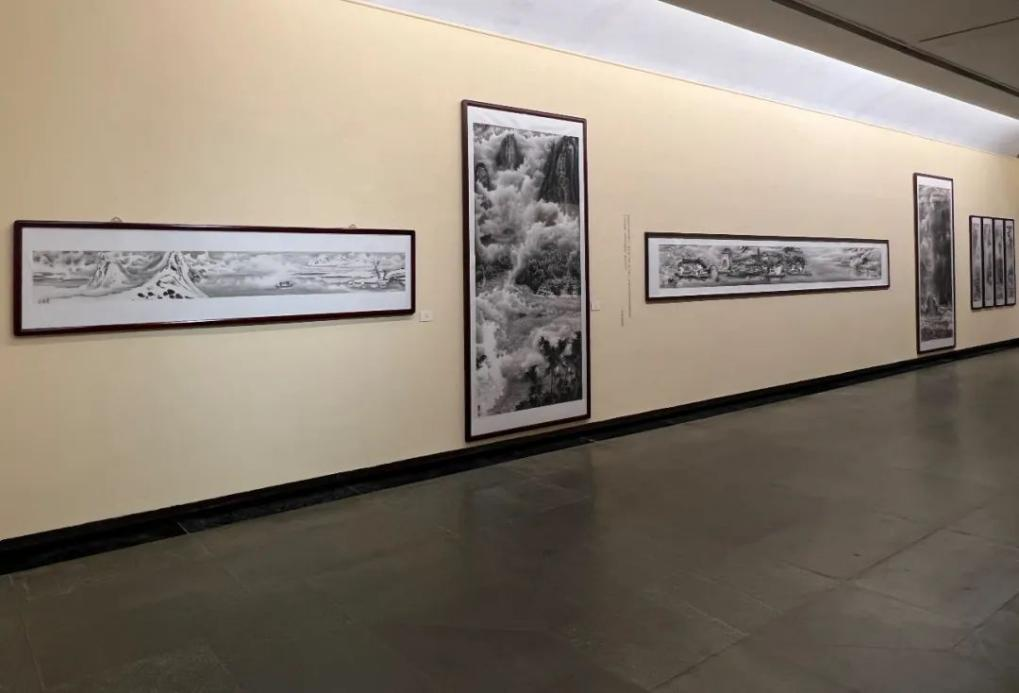

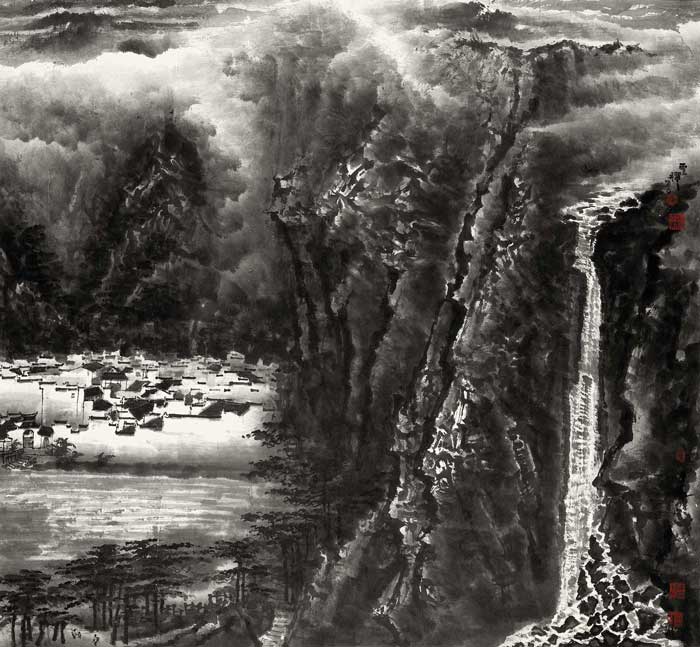

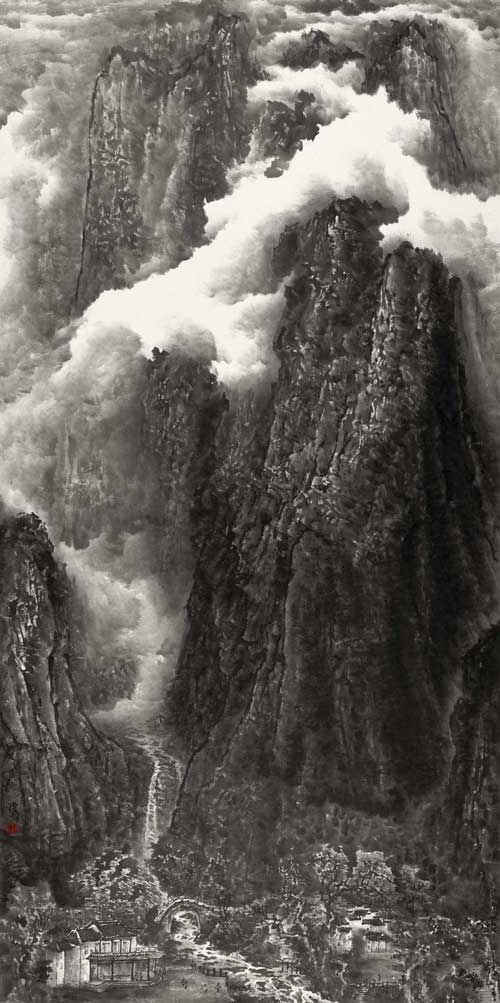
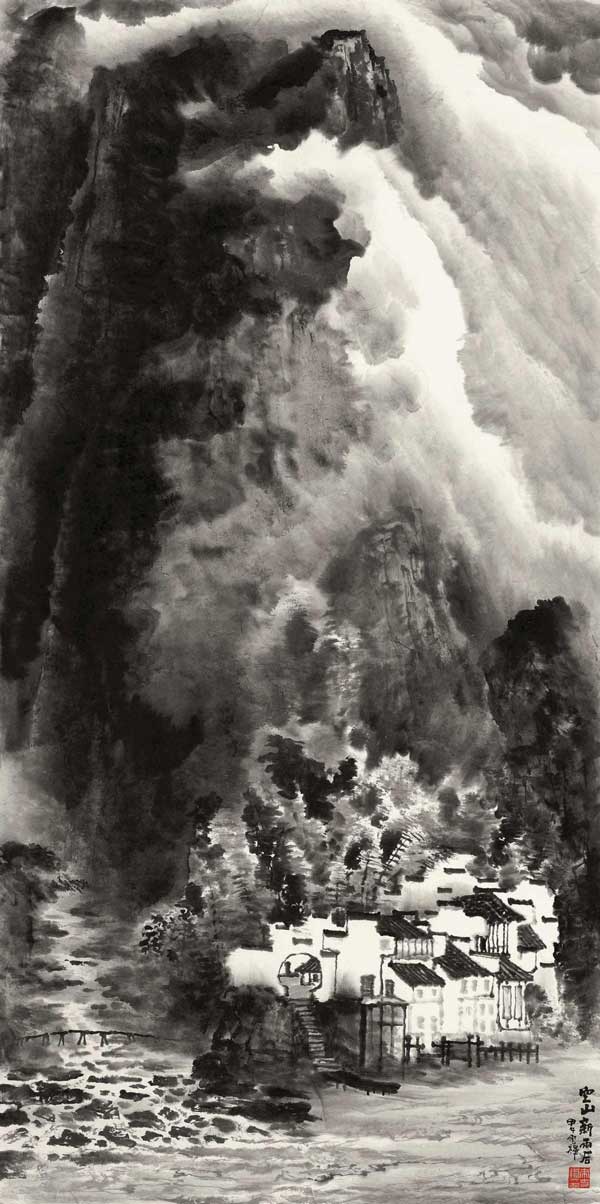
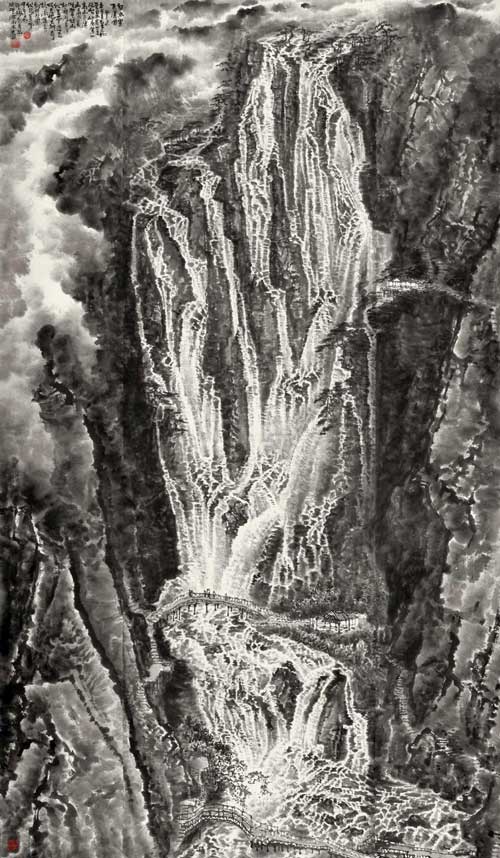
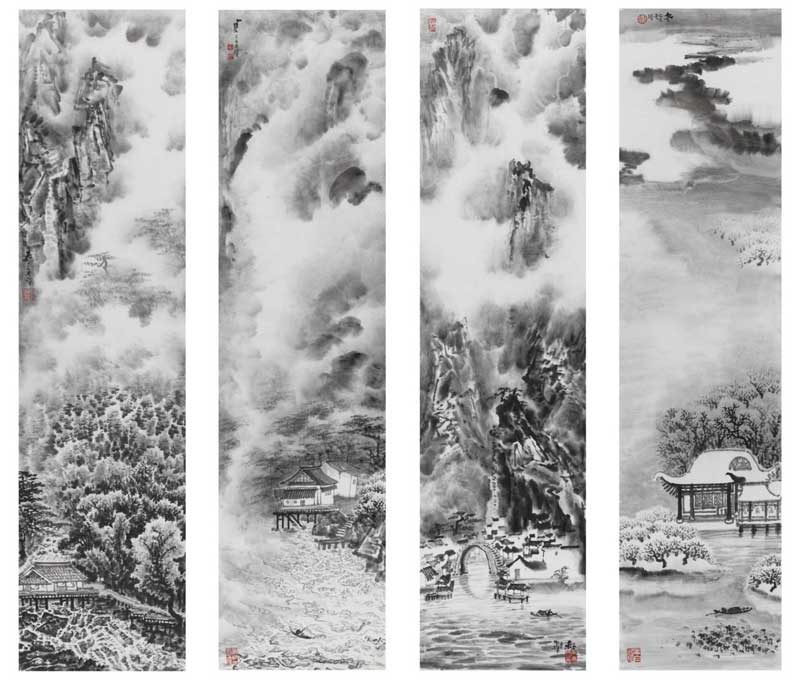


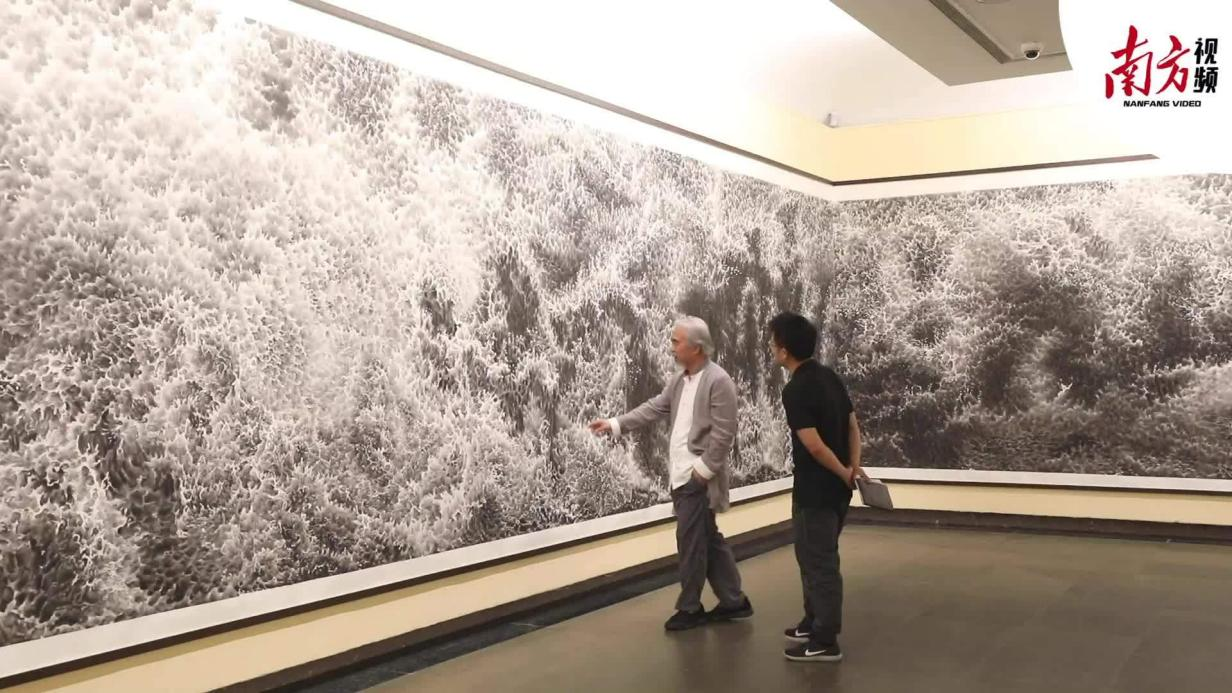
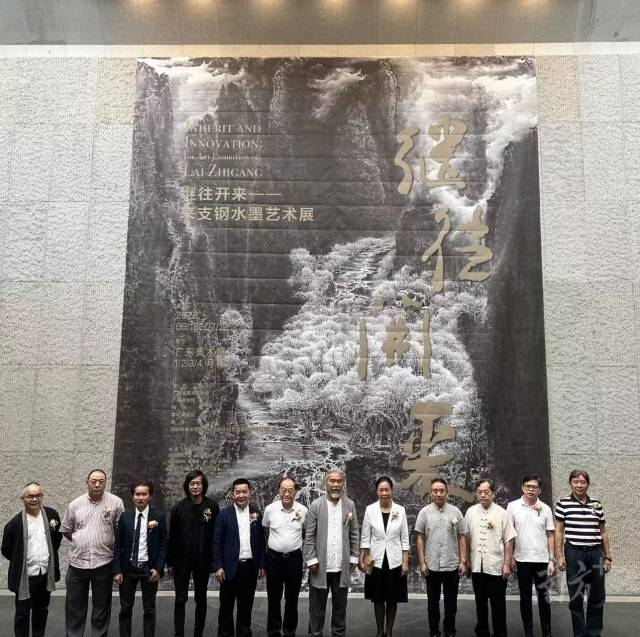
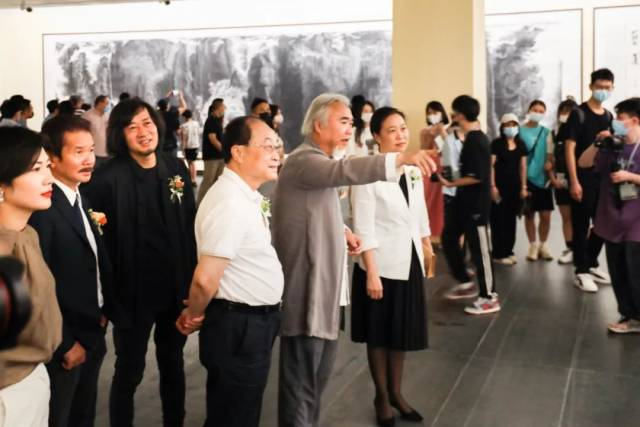
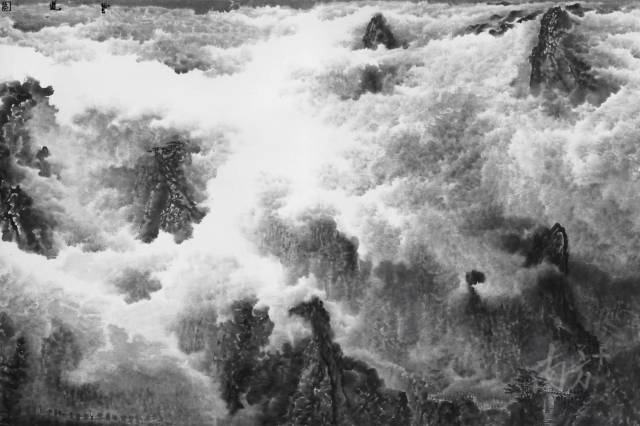
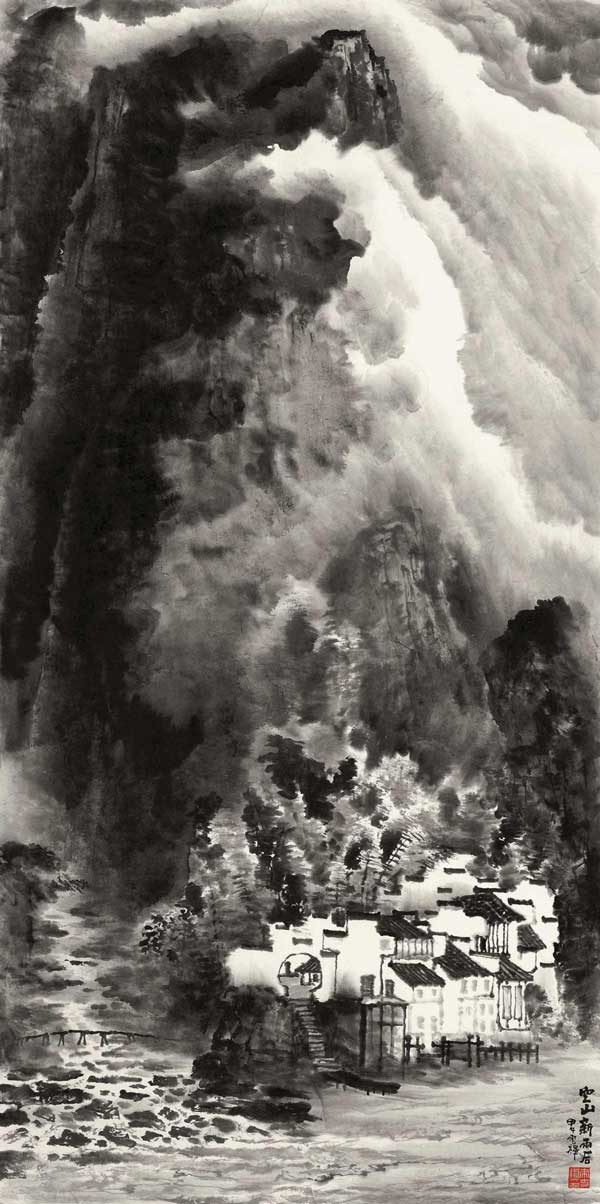
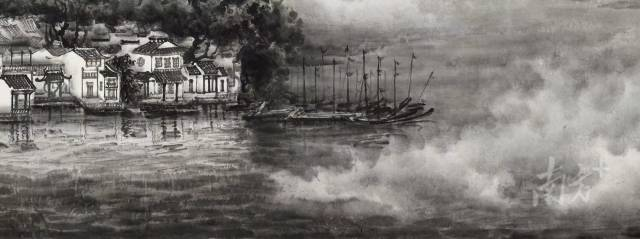
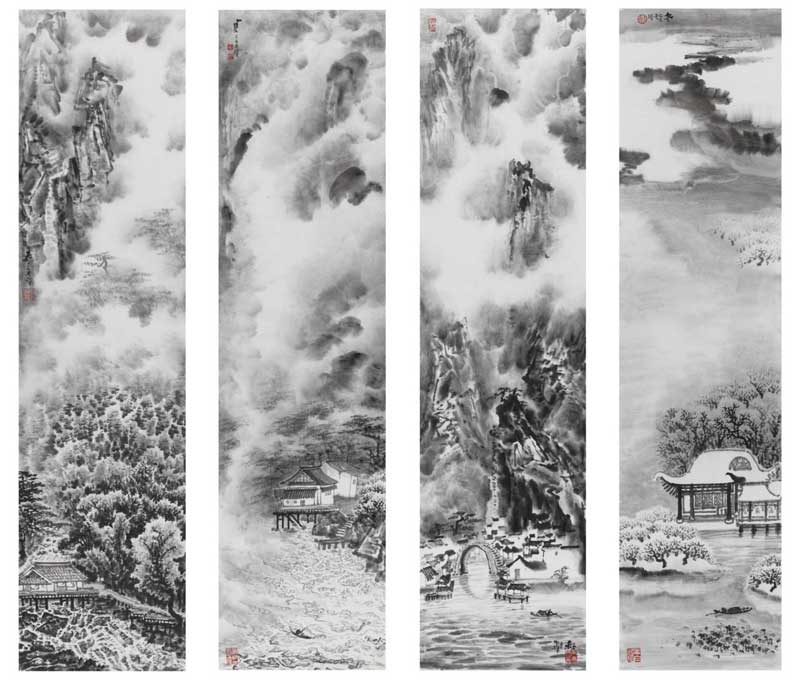
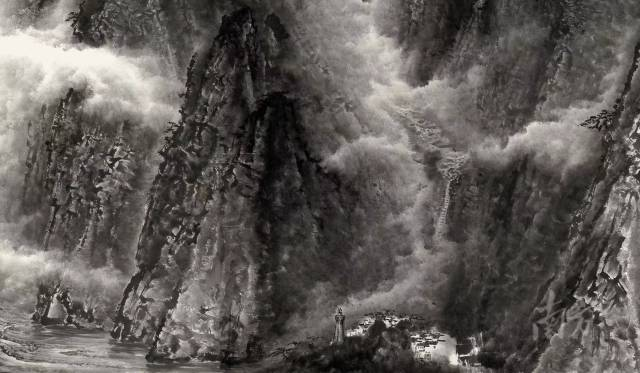
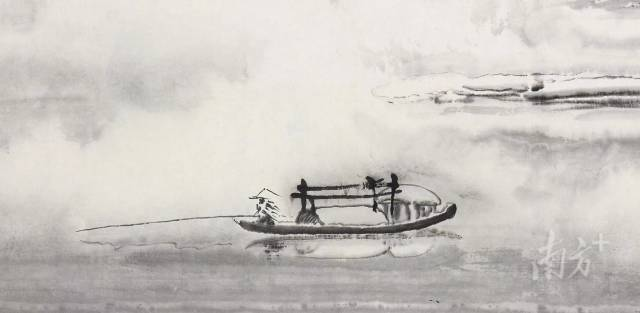
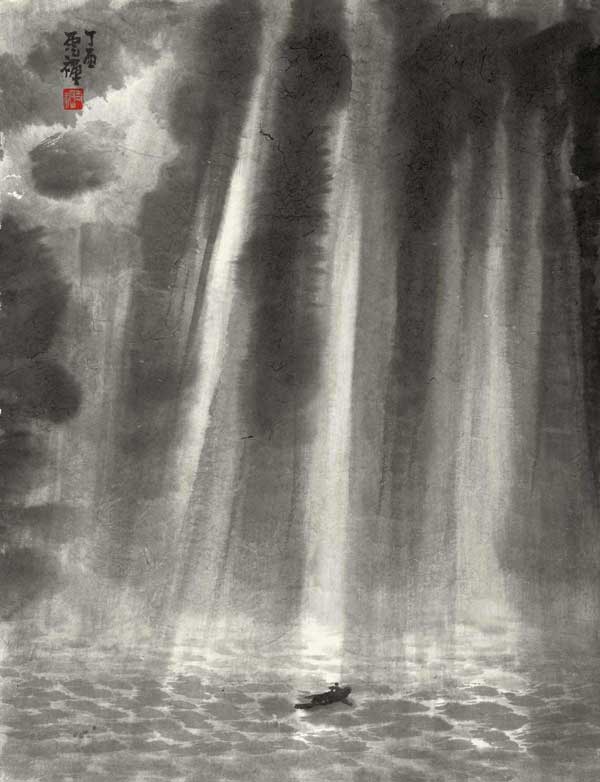
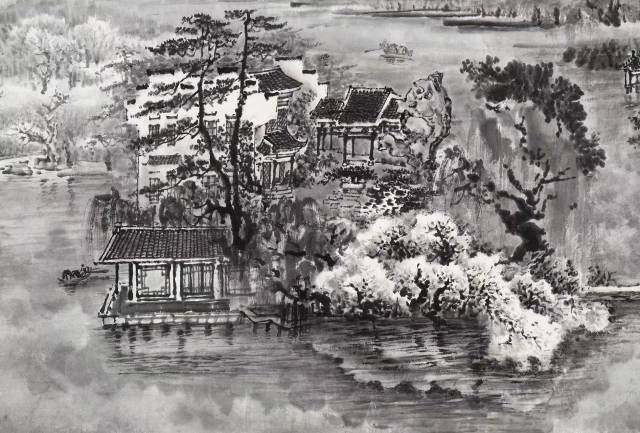
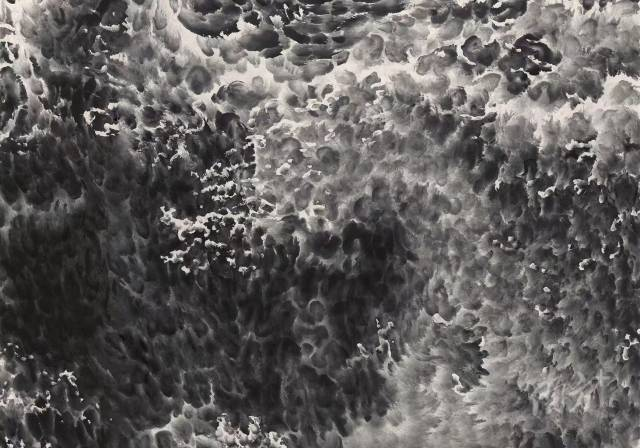

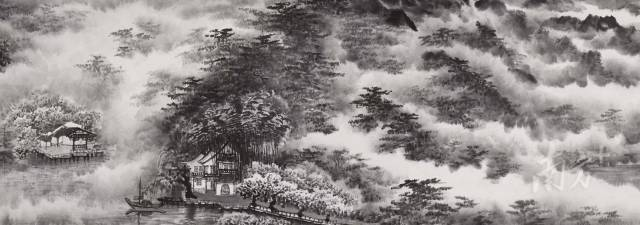


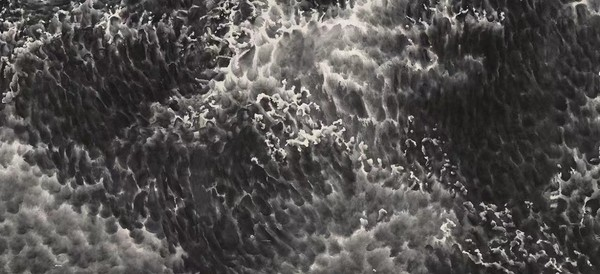
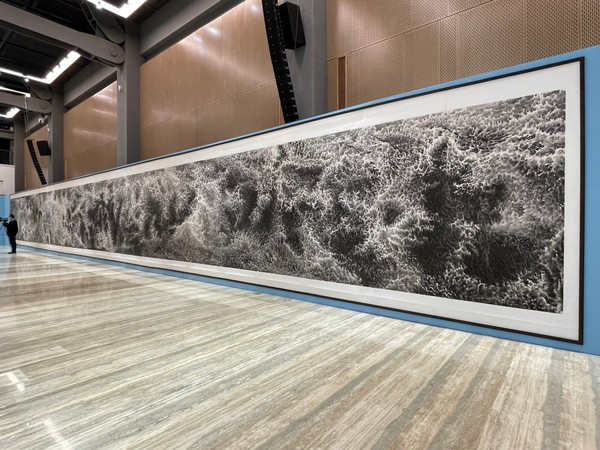



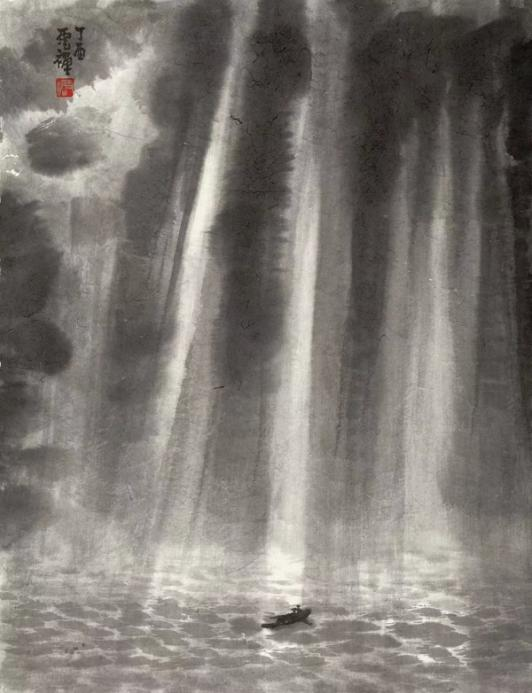




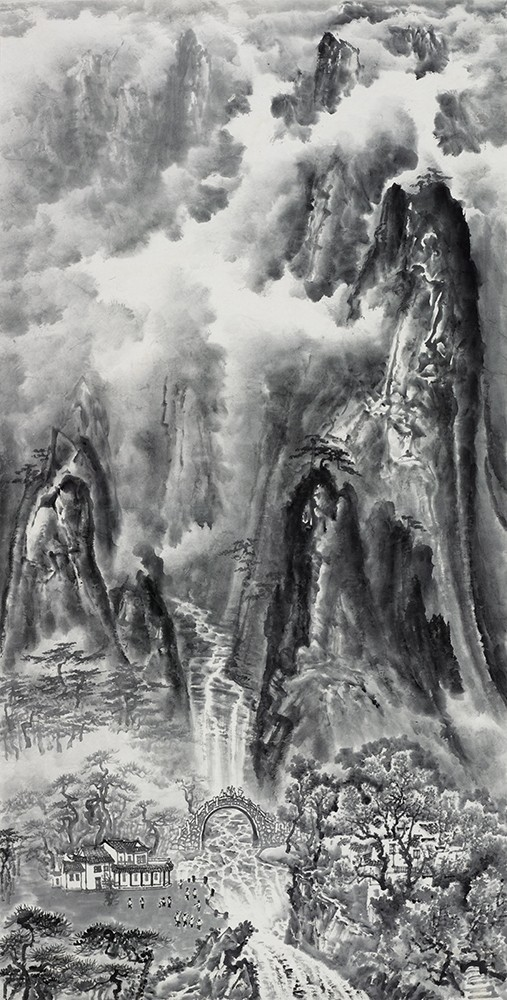

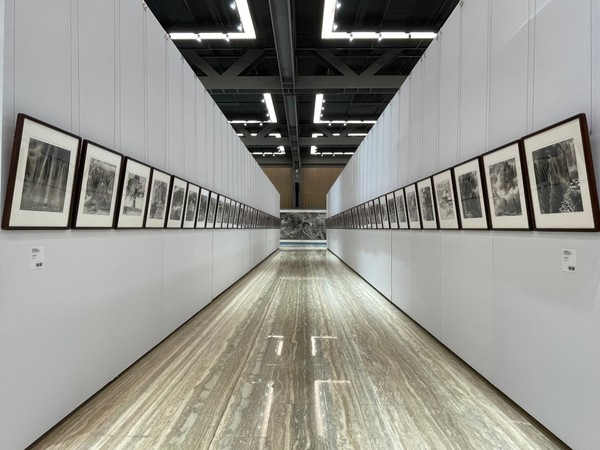




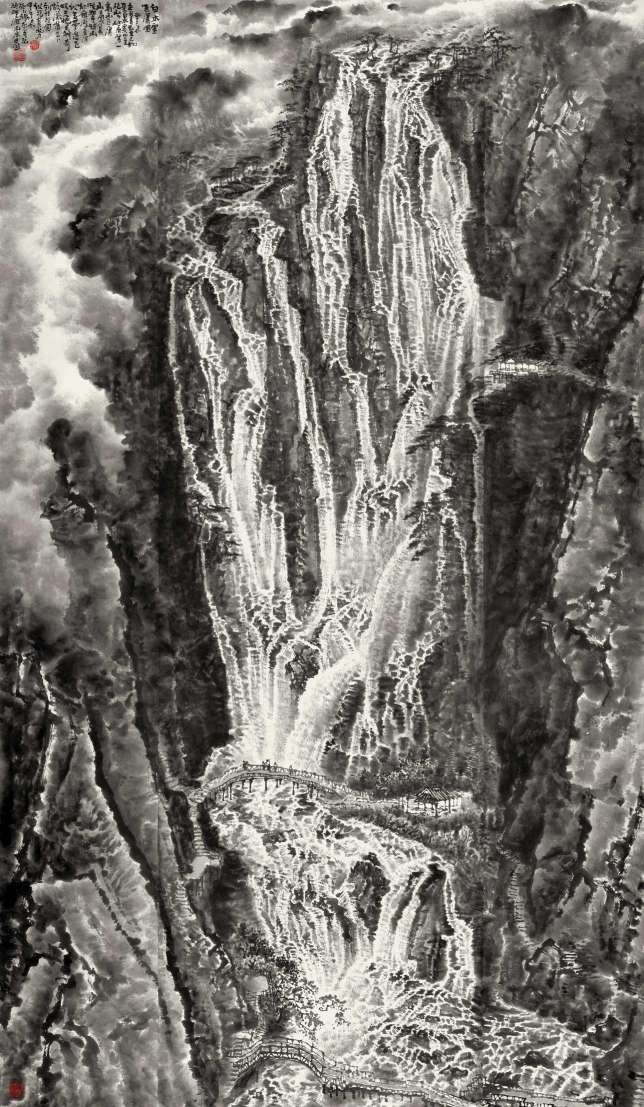
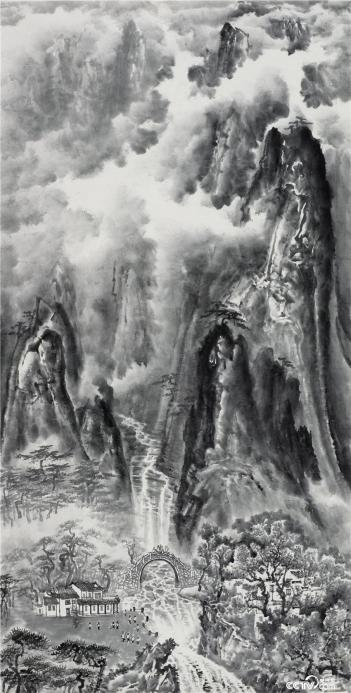
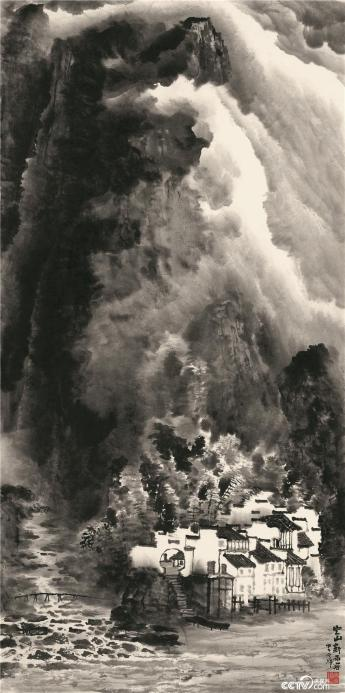

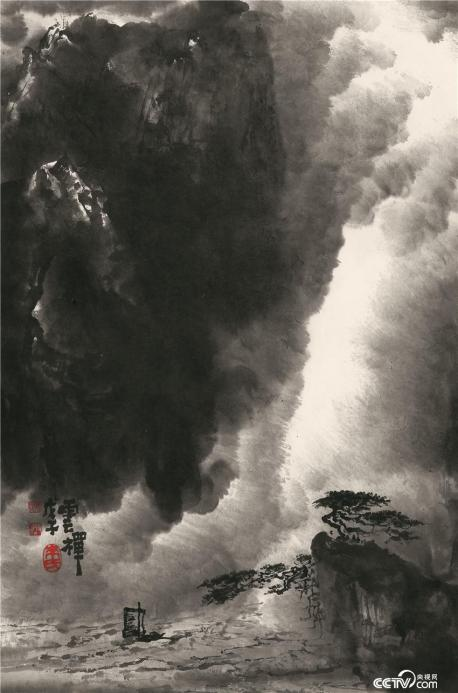
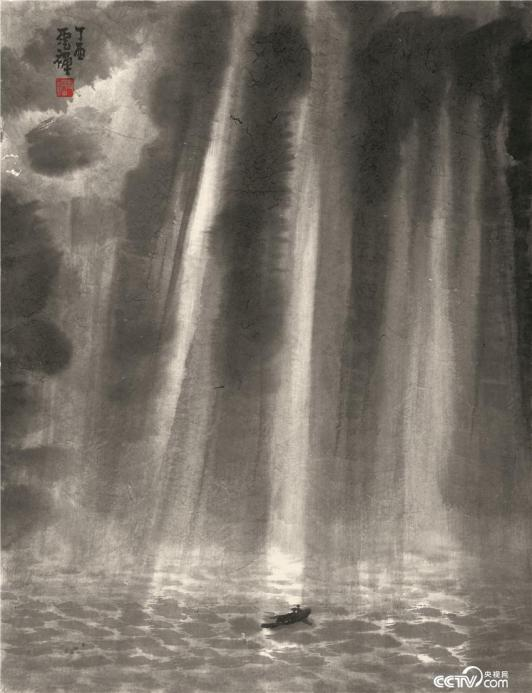

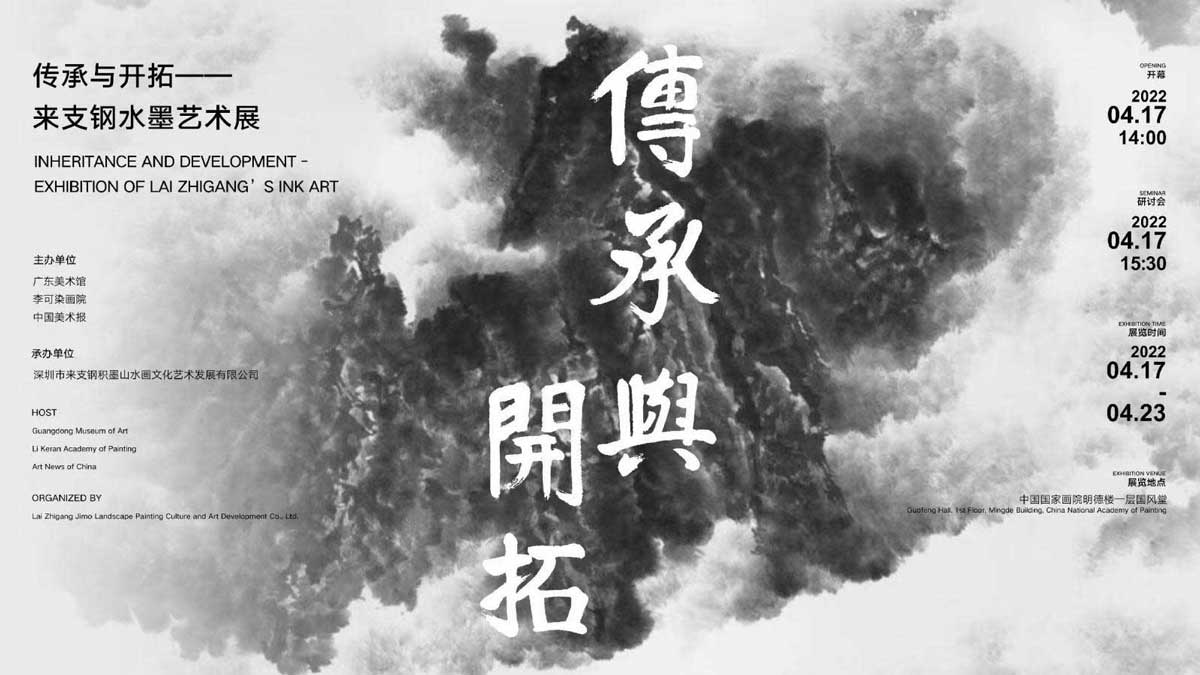






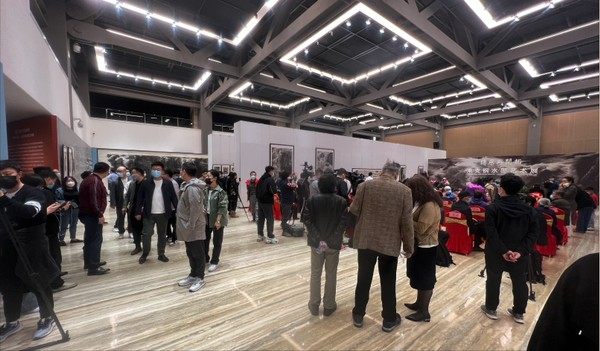

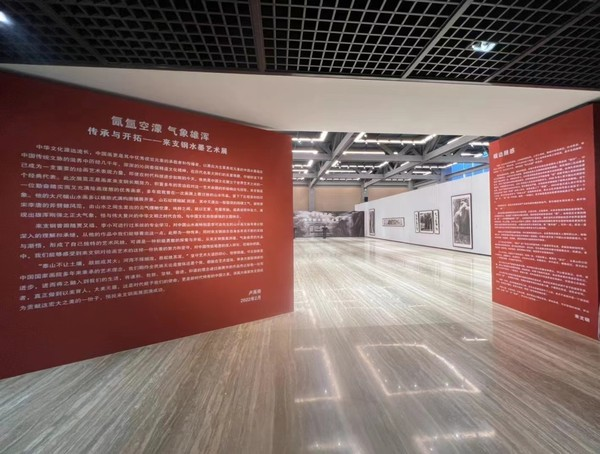
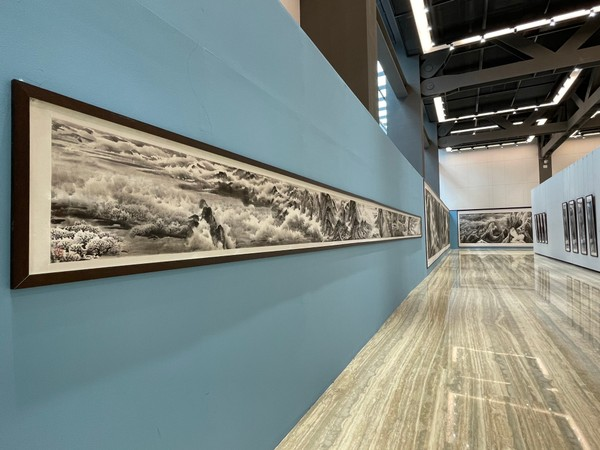
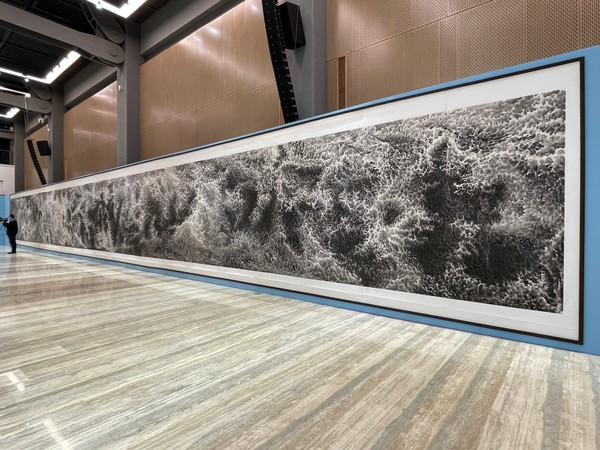



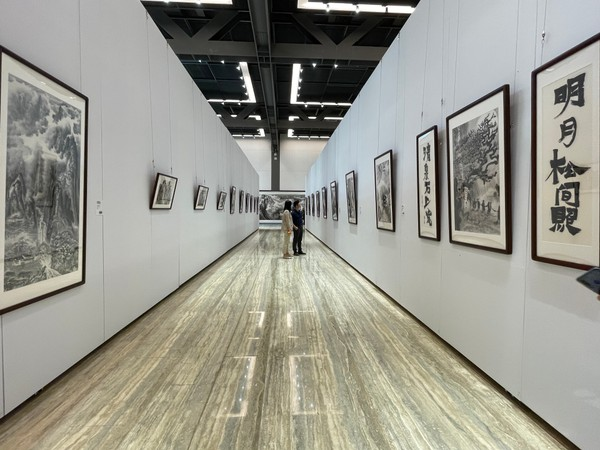
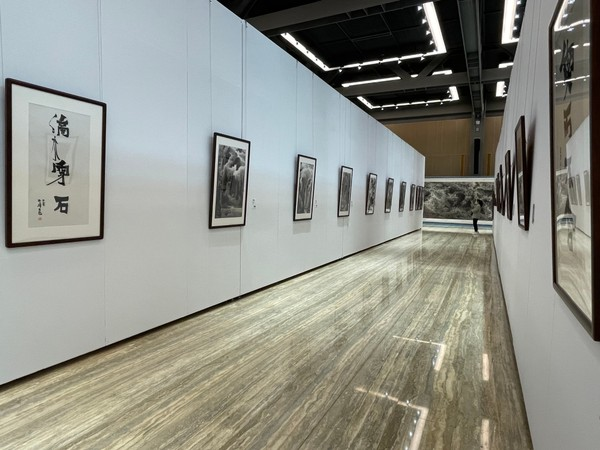
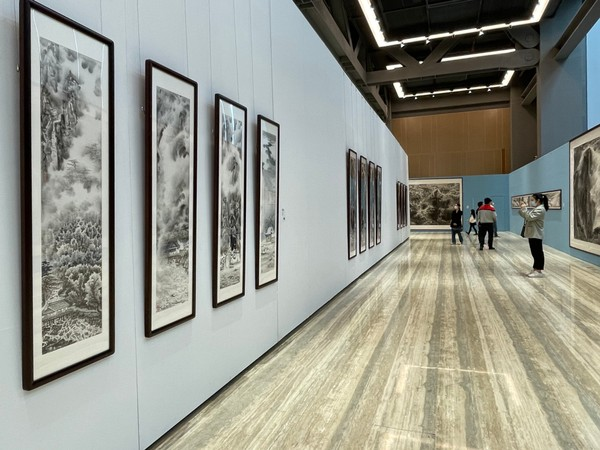
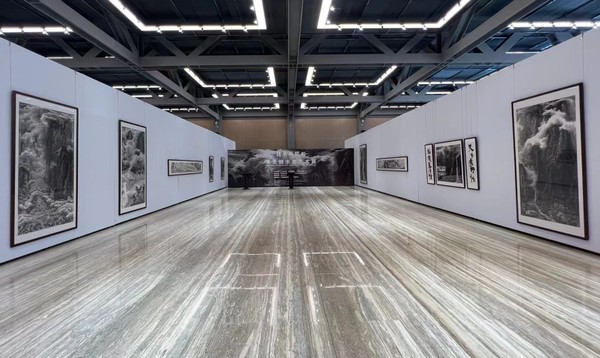
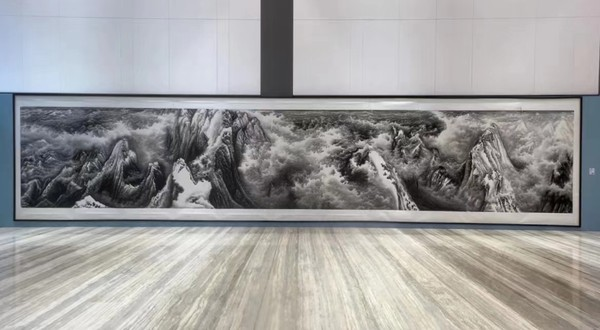
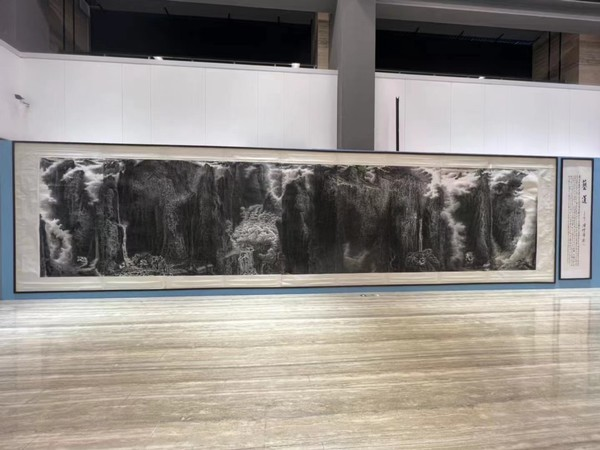


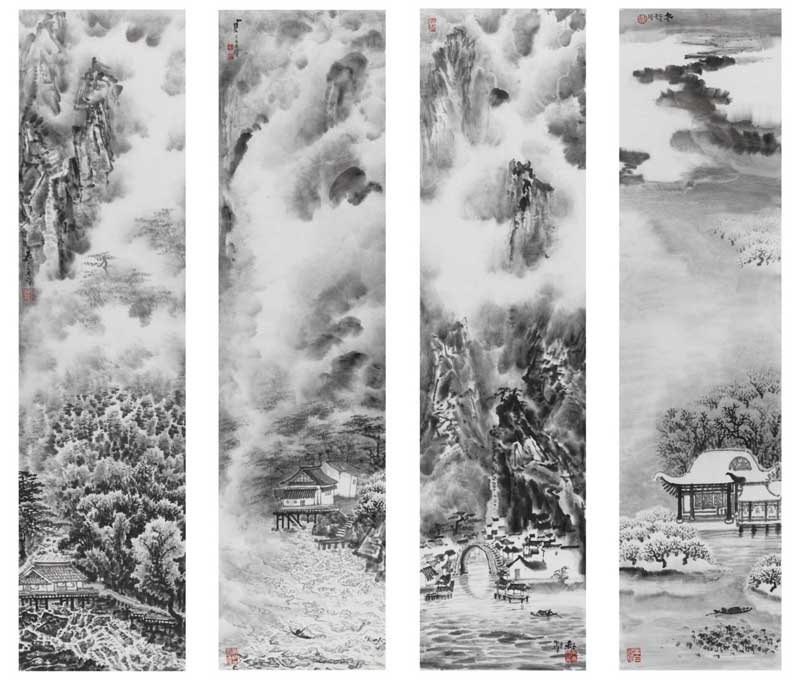






 Sage’s Domain
Sage’s Domain





